Roman Forum
Tickets sell out fast in Rome: check availability now »
Journey into the heart of Ancient Rome at the Roman Forum.
Discover the center of Roman society at the Forum, where laws were decreed, politics discussed, and goods bartered.
This is the beating heart of Ancient Rome : an unmatched social, economic, religious, and political powerhouse.
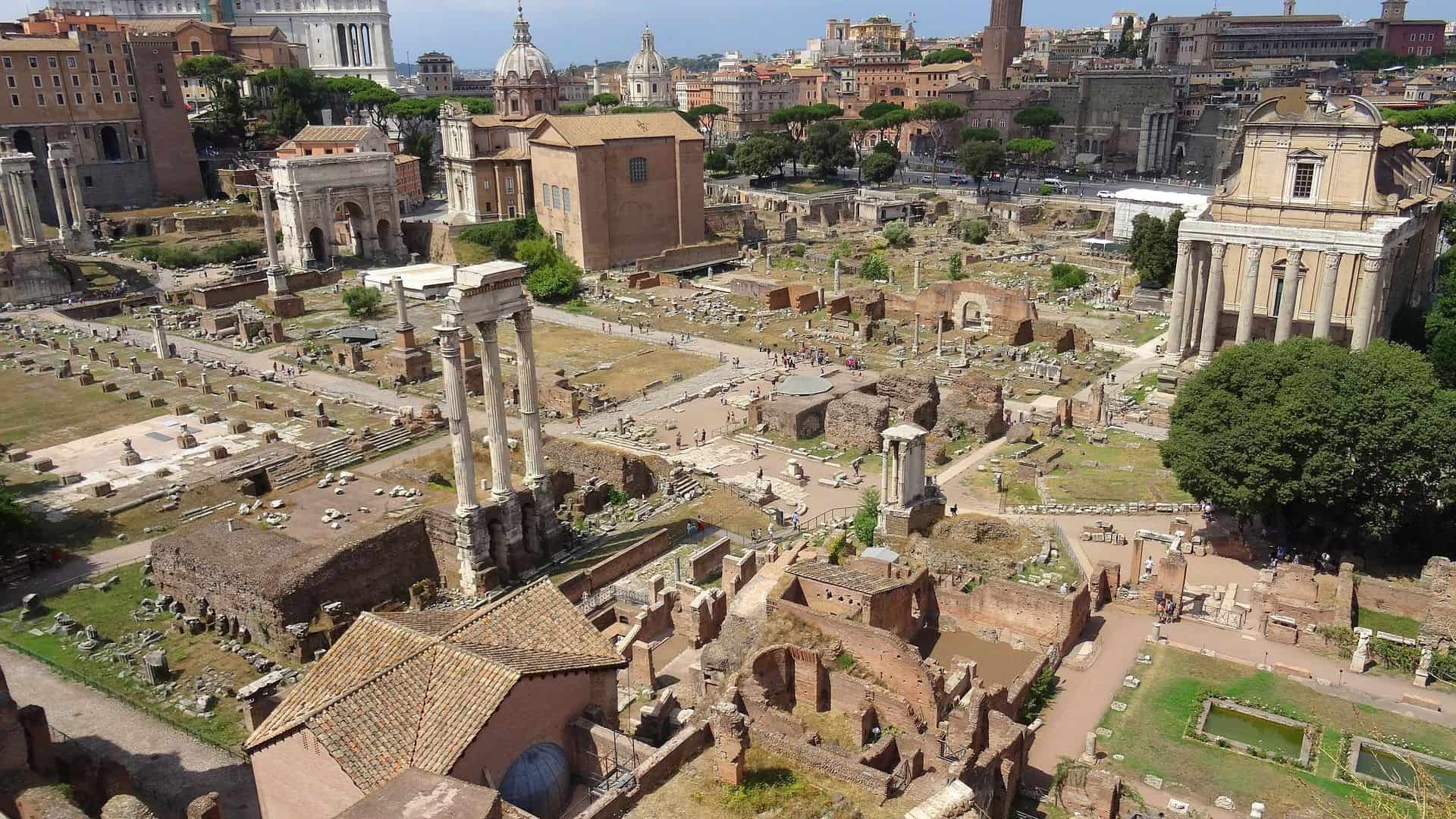
- Wander down the Via Sacra, the Main Street of Ancient Rome.
- Visit the temple and home of the Vestal Virgins – and discover where they would tend to the sacred eternal flame of Rome.
- Weave between the ruins of temples, meeting halls, and monuments in the Forum, and see the gravesite of the infamous Julius Caesar.

Everything You Need to Know About Visiting the Forum
Your entry to the Roman Forums and the Palatine Hill is usually included with your Colosseum ticket since the Forum is part of the same archeological park ( Parco Archeologico del Colosseo ).
The great thing is that it’s valid for 24 hours before or after your entry to the Colosseum. This means you are not obliged to see both on the same day. In fact, for reasons I’ll go through with you below, I would wholeheartedly recommend you see the Roman Forum first (ideally the afternoon before) and then see the Colosseum the following morning.
To get there, you have two options. Either you take the main entrance via Via Sacra (opposite the Colosseum) whereby you enter through the Arch of Titus OR enter from Via di Gregorio (just after the Arch of Constantine) for a more relaxed way in.
I’ll show you the Via Sacra entrance way as, while the busiest, is also the most evocative. But it’s your call.
This guide assumes you have a prebooked ticket with no guide.
Tickets & Prices
Explore the Roman Forum with ease by purchasing a ticket beforehand. You won’t have to waste extra time in the purchasing queues and can breeze through the ancient site.
Find out which of these Roman Forum tickets is best suited to you.
- Colosseum, Roman Forum & Palatine Hill (Priority Entrance) – Skip the line with this priority entrance ticket.
- Colosseum, Roman Forum & Palatine Hill (Last Minute Priority Entrance) – Last minute ticket for Colosseum entry.
- Rome Tourist Card (Bestseller) – See the best of Rome with this popular combi-ticket. Includes access to The Colosseum, Roman Forum and Palatine Hill, Vatican Museums & Sistine Chapel, St. Peter’s Basilica (official guided tour), and more…
- Rome Super Pass with Public Transport – Skip-the-line entrance to some of Rome’s best attractions with this combi-ticket. Includes unlimited public transport PASS (metro, bus, tram).
Tickets for Colosseum, Roman Forum & Palatine Hill
Entrance to the neighboring ancient sites of the Colosseum and Palatine Hill is also included with these tickets. You get to skip the queues and also download a digital guide to teach you the history of your surroundings.
Important Ticket Information:
- The tickets are valid for two days (including the day of activation).
- Re-entry is not possible once you leave the site.
- Palatine Hill is open from 10:00 – 19:15. While both the Colosseum and the Roman Forum are open 09:00 – 16:30. The last admission is an hour before closing.
- You should head to the Via dei Fori Imperiali entrance to enter the Roman Forum.
- You can choose between 5 visit routes, which vary from 30 minutes to 2.5 hours.
Rome Tourist Card
The Rome Tourist Card is the ultimate pass for new visitors to Rome. It grants you access to the city’s most iconic sights, from Palatine Hill and the Colosseum to the Sistine Chapel .
It’s perfect for people hoping to tick off all the main tourist spots during their visit.
- Includes skip-the-line access.
- The Colosseum, Roman Forum and Palatine Hill, St. Peter’s Basilica, Vatican, and Sistine Chapel are the attractions included.
- It is a digital pass.
- There isn’t a time limit on the Rome Tourist Card – it can be used and remain valid throughout your stay.
- You can book time slots online.
Getting There
Take the Metro to Colosseo – on the B (blue) line, two stops after Termini.
Exit the station, and the Colosseum will be right in front of you.
You will be tempted to start taking photos immediately but trust me, there are way better spots from where to snap a selfie.
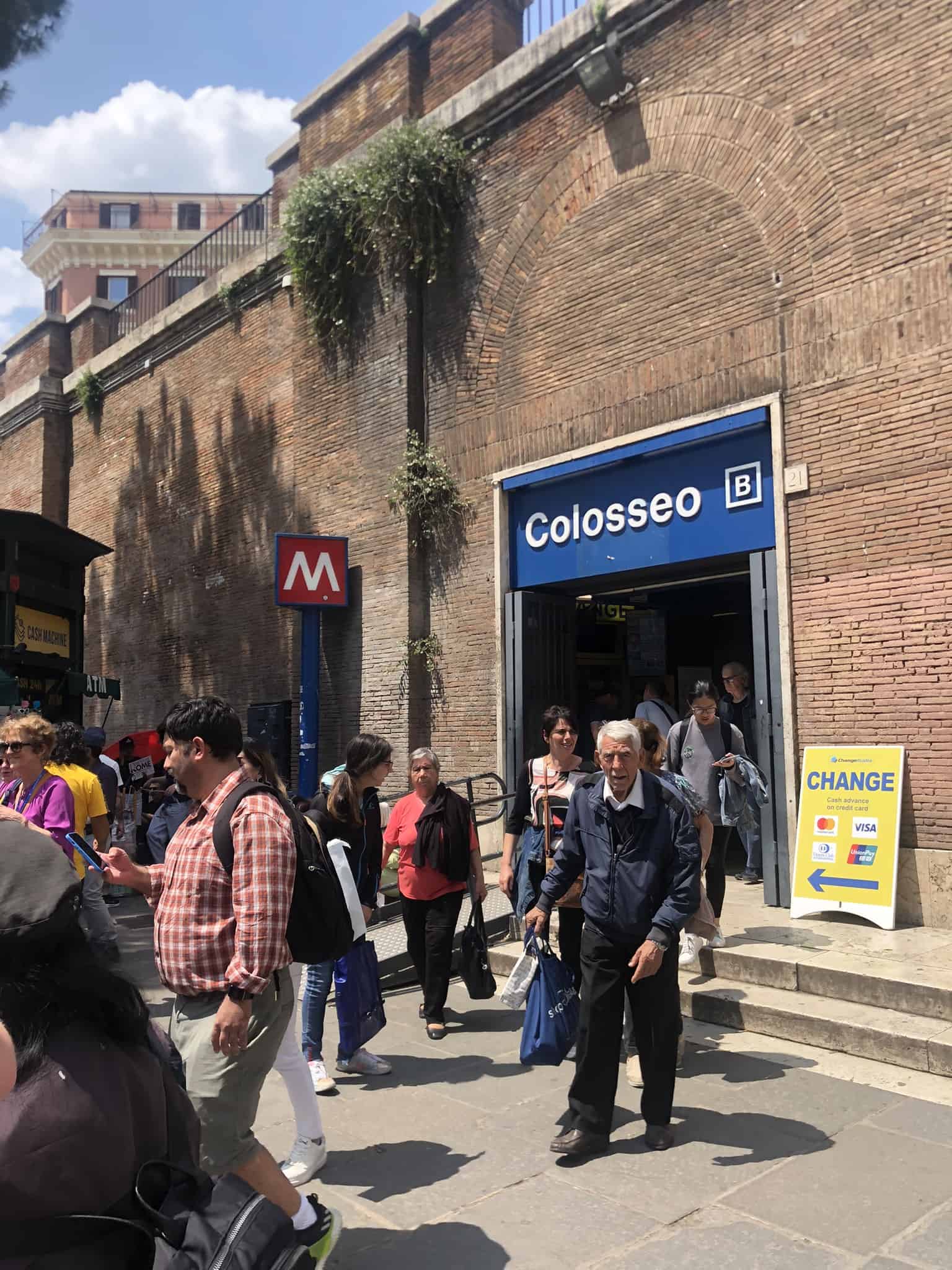
Neverending stream of people exiting the Metro statio
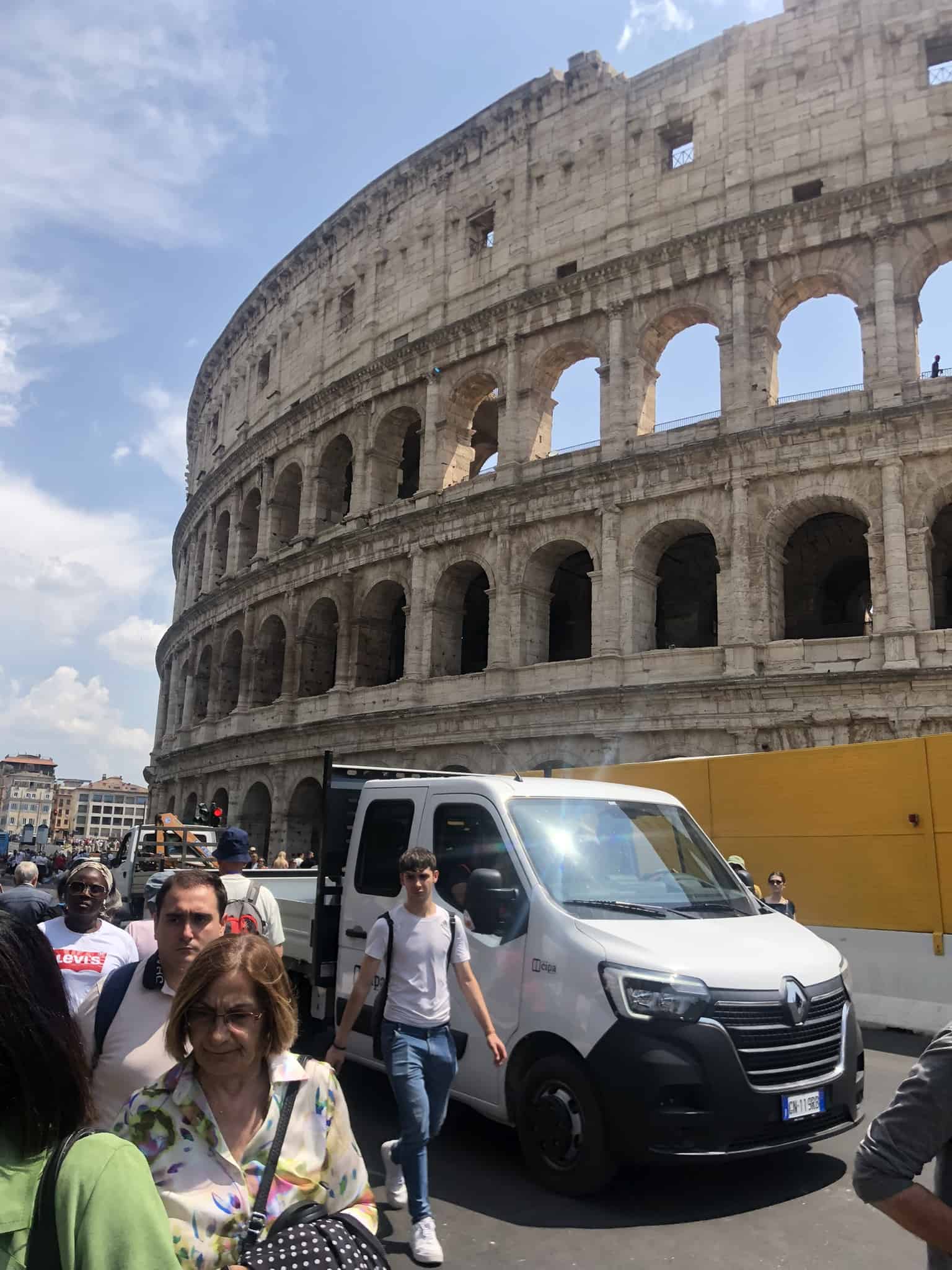
The Colosseum is directly opposite the Metro station.
The white and yellow panel obscures a construction site for a new Metro stop for the C Line.
It’s been a work in progress for over 20 years now, so something of a running joke among Romans.
- Top tip: Warning – there are two exits: lower level and upper level. After you come up the stairs and go through the ticket barriers, you’ll be on the lower level. Go straight out. You’ll be within sniffing distance of the Colosseum. You can’t go wrong. (Lots of guided tours have their meeting point at this exit of the Colosseum Metro.)
If, on the other hand, you walked or took a taxi , you’ll most likely be taken to the upper level exit (either by your phone’s GPS or the taxi driver).
Enter the Metro station and take the stairs down. You’ll arrive at the lower floor level of the station, opposite the Colosseum.
There are a lot of illegal ticket touts still operating in this area. Think of them like the sun. Make no direct eye contact. Ever. No need to be rude or get angry with them if they pester you. Just keep walking.
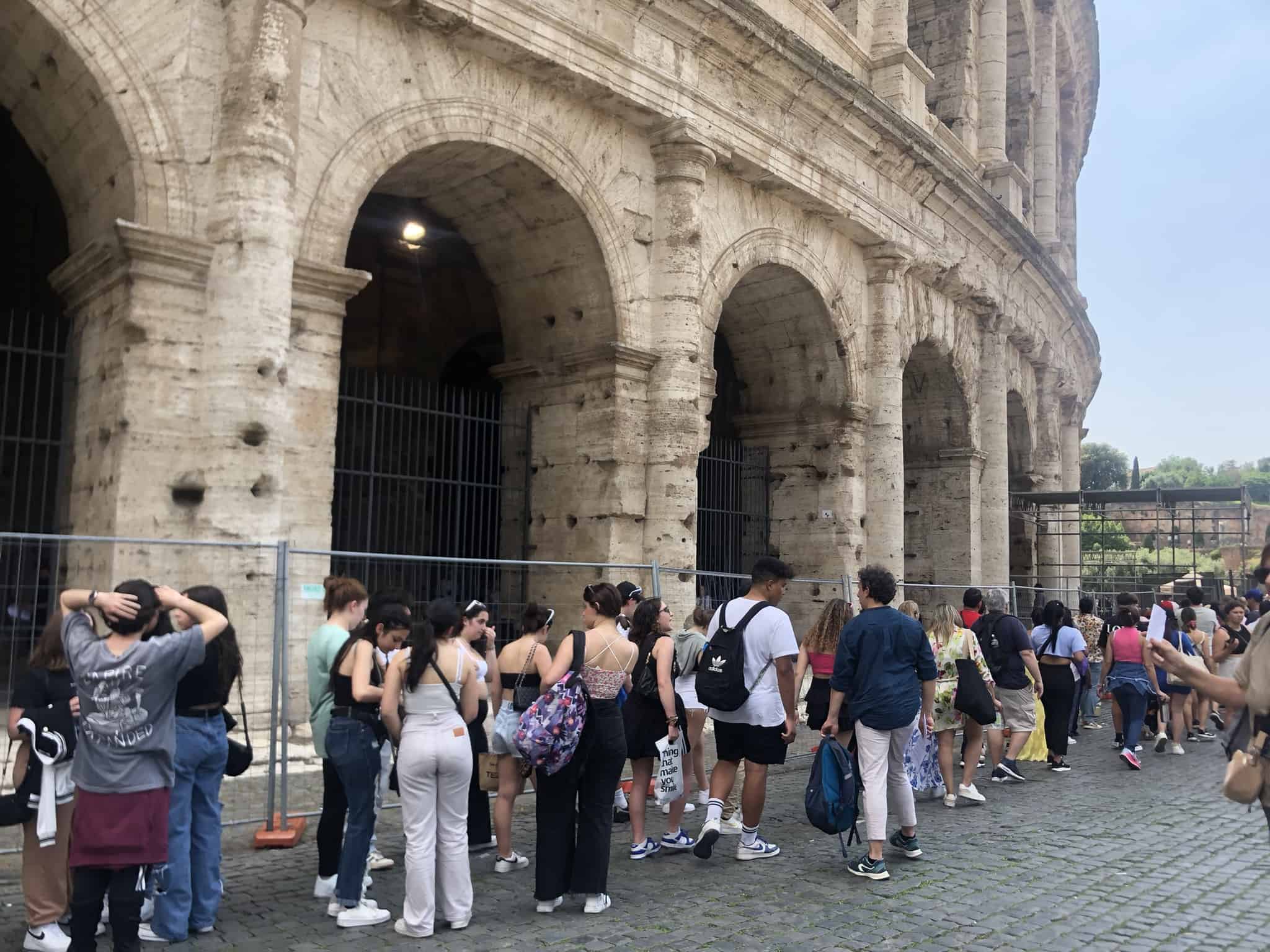
Group ticket holders’ line.
From the station, cross the road and as you pass the construction panel, you will probably see a very long line like this.
This line is for group ticket holders. They will be with their tour guide.
Follow the line for another 20 metres or so until you get to a sort of tree lined square, the other side of which will be another long line of people queuing up at the ticket office (see below).
Line for the ticket office opposite the Colosseum.
Cross over, walk past the ticket office and the line of people, and go straight until you come to Via Sacra and a sign indicating the way in that looks like this:
Entrance to Roman Forum on Via Sacra
- Top tip : Via Sacra is made up of huge shiny ancient cobblestones (much larger than the ones in central Rome known as San Pietrini). You’ll want to wear shoes with good grip.
Not sure how much of a flex this really is – there are literally hundreds of free potable water fountains in Rome. But it is the only water fountain at the Forum and with no cafes or restaurants, you will need it. You’ll find it just after the Arch of Titus.
- Top tip: Bring a refillable water bottle. There’s quite a lot of walking involved on Palatine Hill, and there are no restaurants. (Which is a shame because it would be very nice if there were).
Walk up the Via Sacra and you will be greeted by staff who will scan your ticket. You’ll go through a turnstile and then just like that, the epic Arch of Titus welcomes you in.
(I went in May 2023 which was ridden with days that started out with perfect blue sky and then ended with a thunderstorm. I liked it though; the sky, while ominous, just made everything a lot more dramatic.
- Top tip: Download the Parco Archeologico App . You can find it on the official Colosseum website or by scanning the QR code on the ticket information panels located next to the ticket office. It’s invaluable for helping you get your bearings around the deceptively large Roman Forums and Palatine Hill.
Above: Arch of Titus, and the start of most Roman Forum itineraries. Remember that scene in Ghostbusters 2 when dark clouds gather over the museum right before it gets covered in ghost slime?
What You Can Expect To See
basilica of maxentius and constantine – (313 c.e).
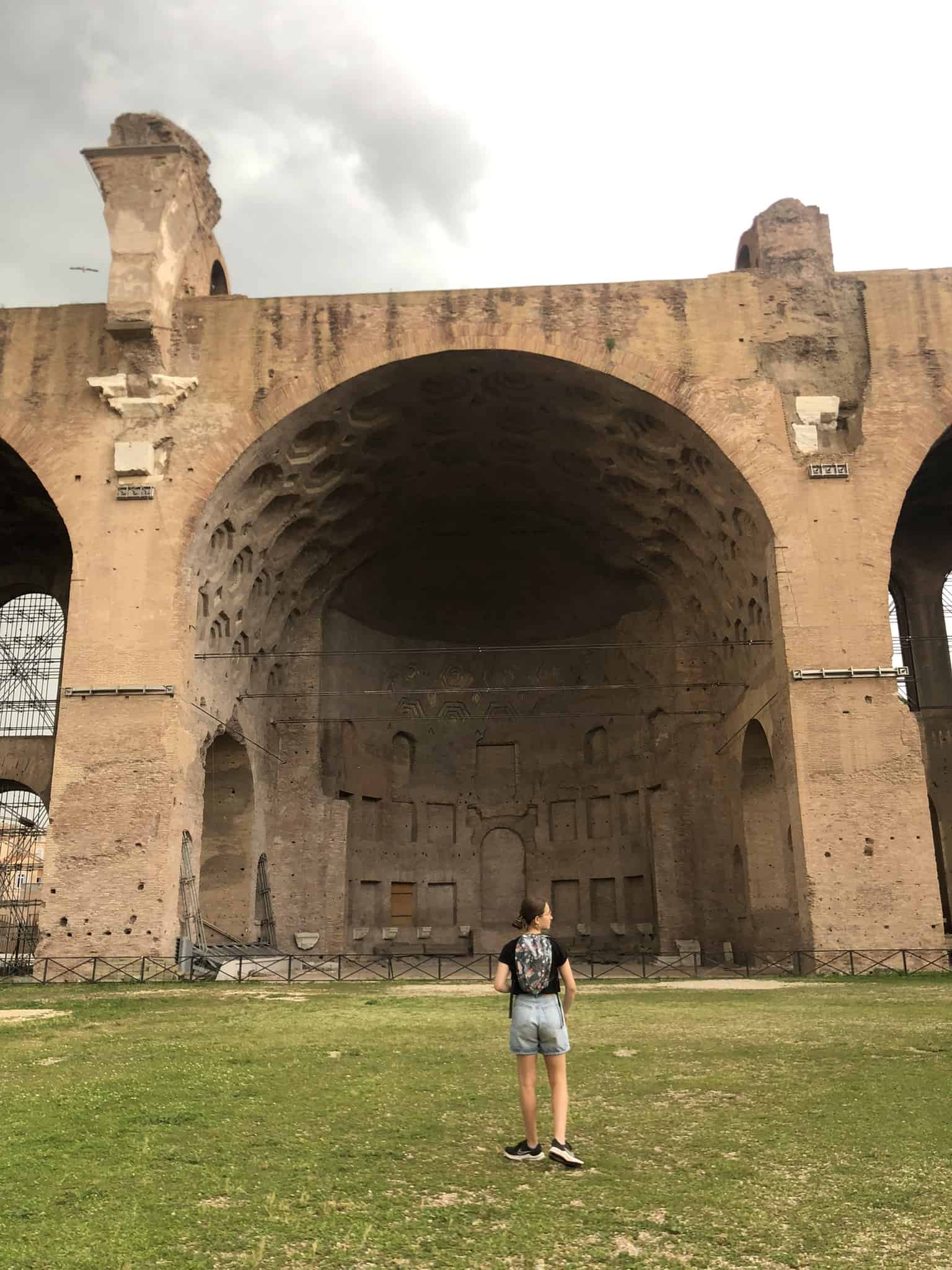
It’s really the scale that is the most impressive here.
The largest structure in the Forum, and of vast architectural importance; its design is said to have influenced the design of the St. Peter’s Basilica .
Artists’ renditions make it come alive, take a look before you go.
The Temple of Romulus – (300 C.E)
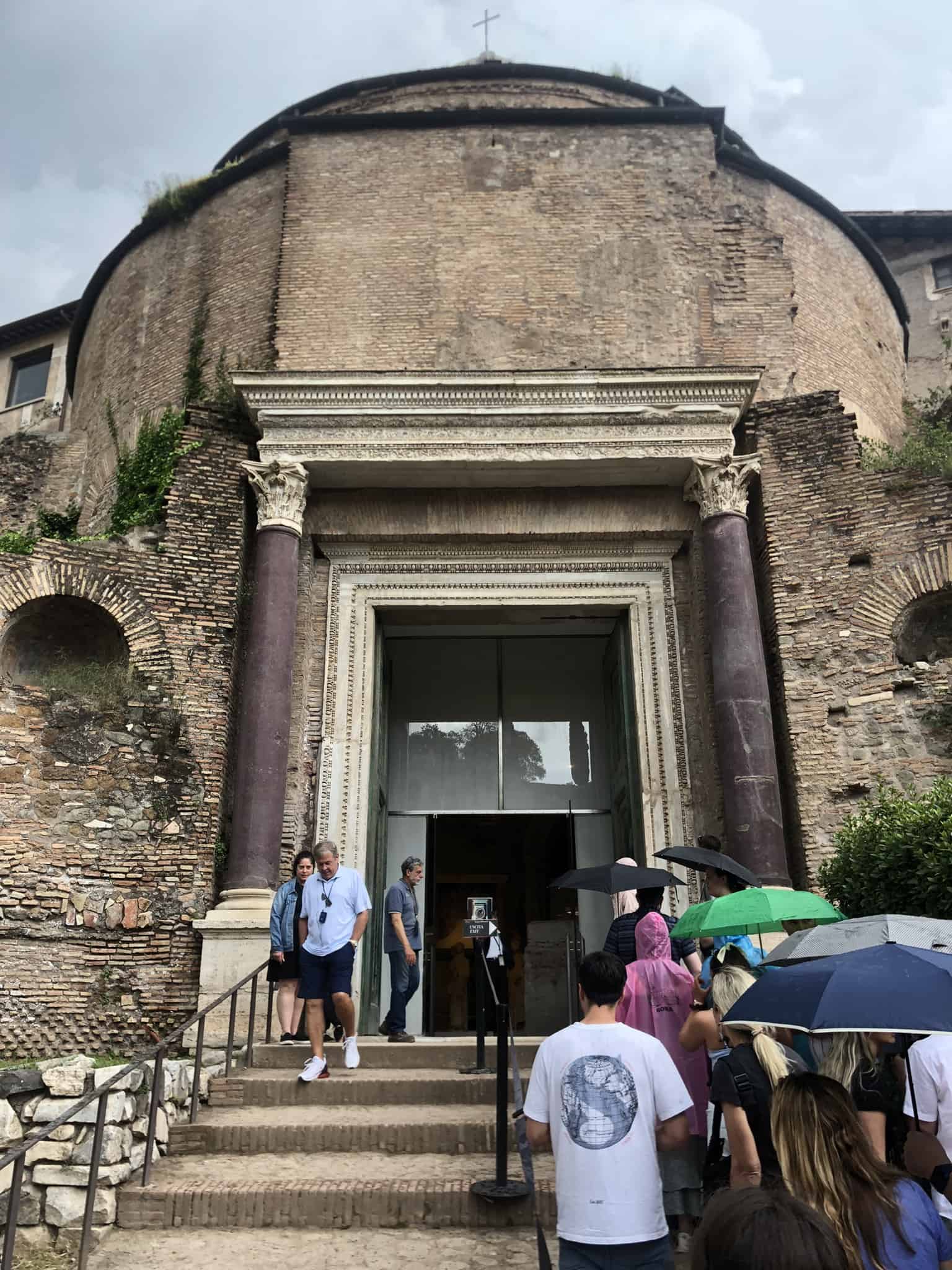
It’s unclear what the Temple of Divus Romulus was really used for other than an antechamber for the temple behind.
However, the bronze door, still used today, is 100% original. It was converted into a church in the 6th century.
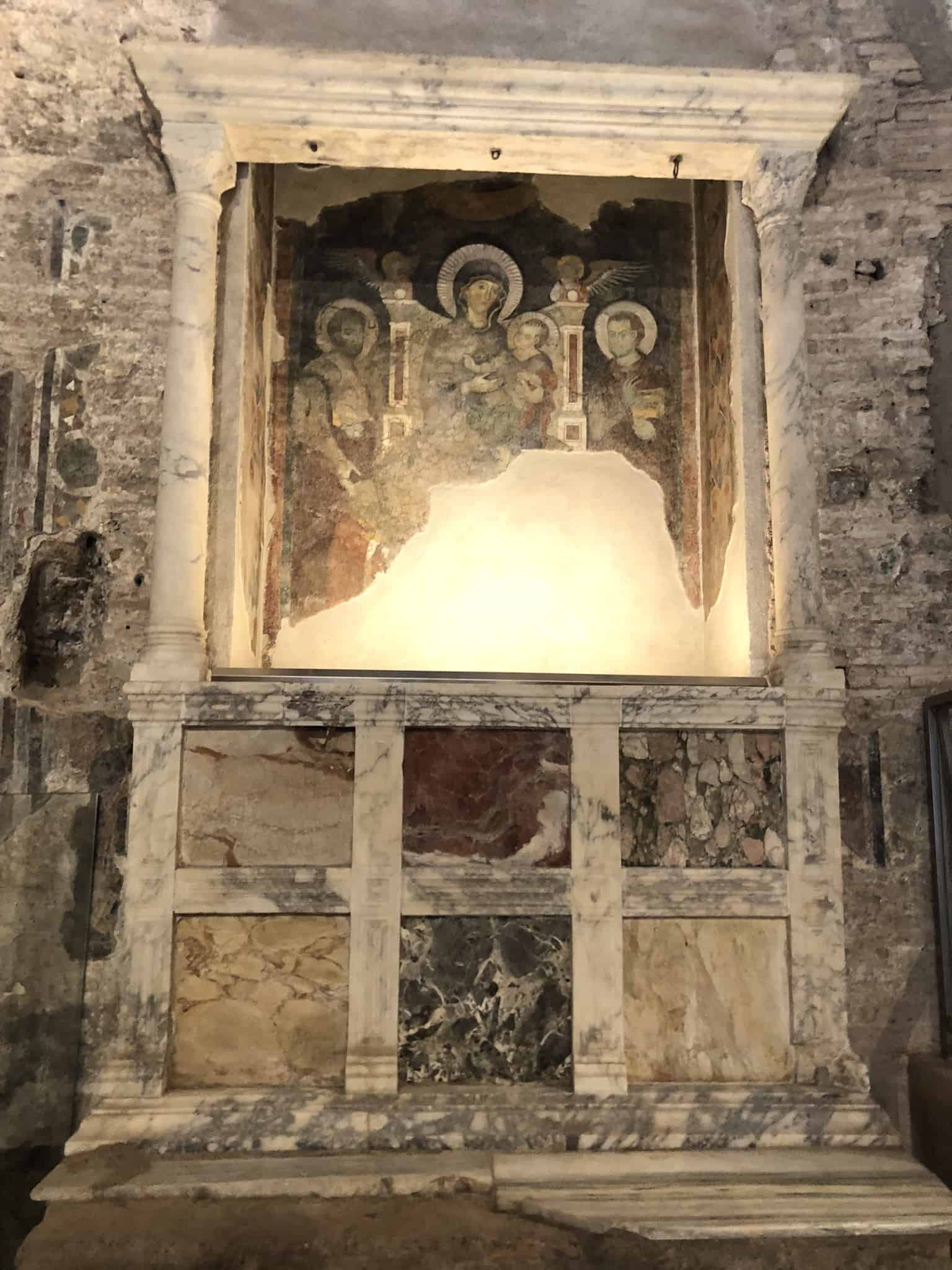
Detail of a fresco behind an altar from inside the Temple of Romulus.
The Temple of Antoninus and Faustina (141 C.E)
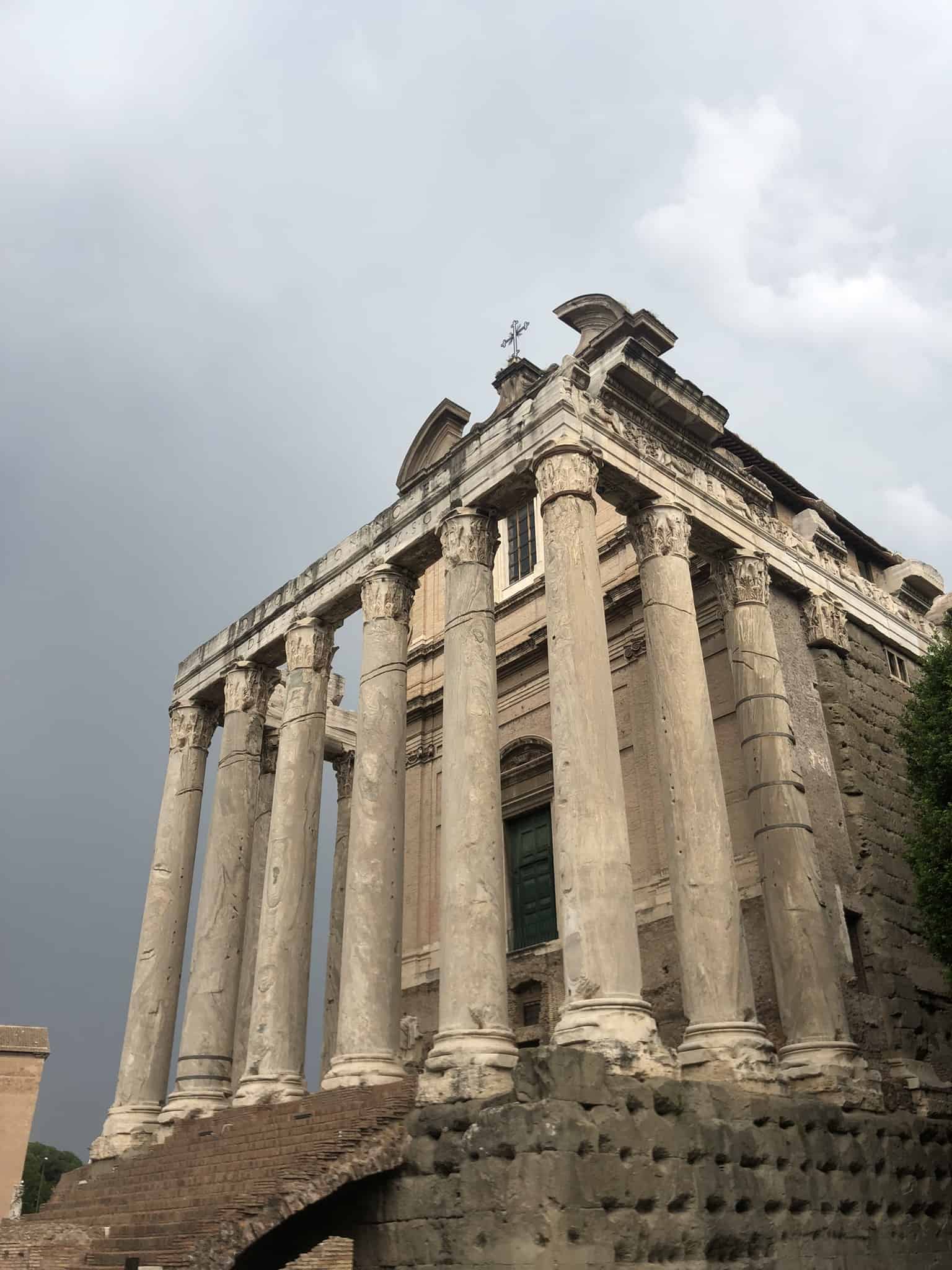
This one takes a second to figure out.
What’s that door doing up there?
19th-century excavations revealed the difference in street levels between Roman times and the 17th century. Contrast the threshold of the green door with the base of the steps leading up to the columns.
The Church, dedicated to San Lorenzo in Miranda is known as ‘the church in a temple’ for obvious reasons.
The Temple of Vesta
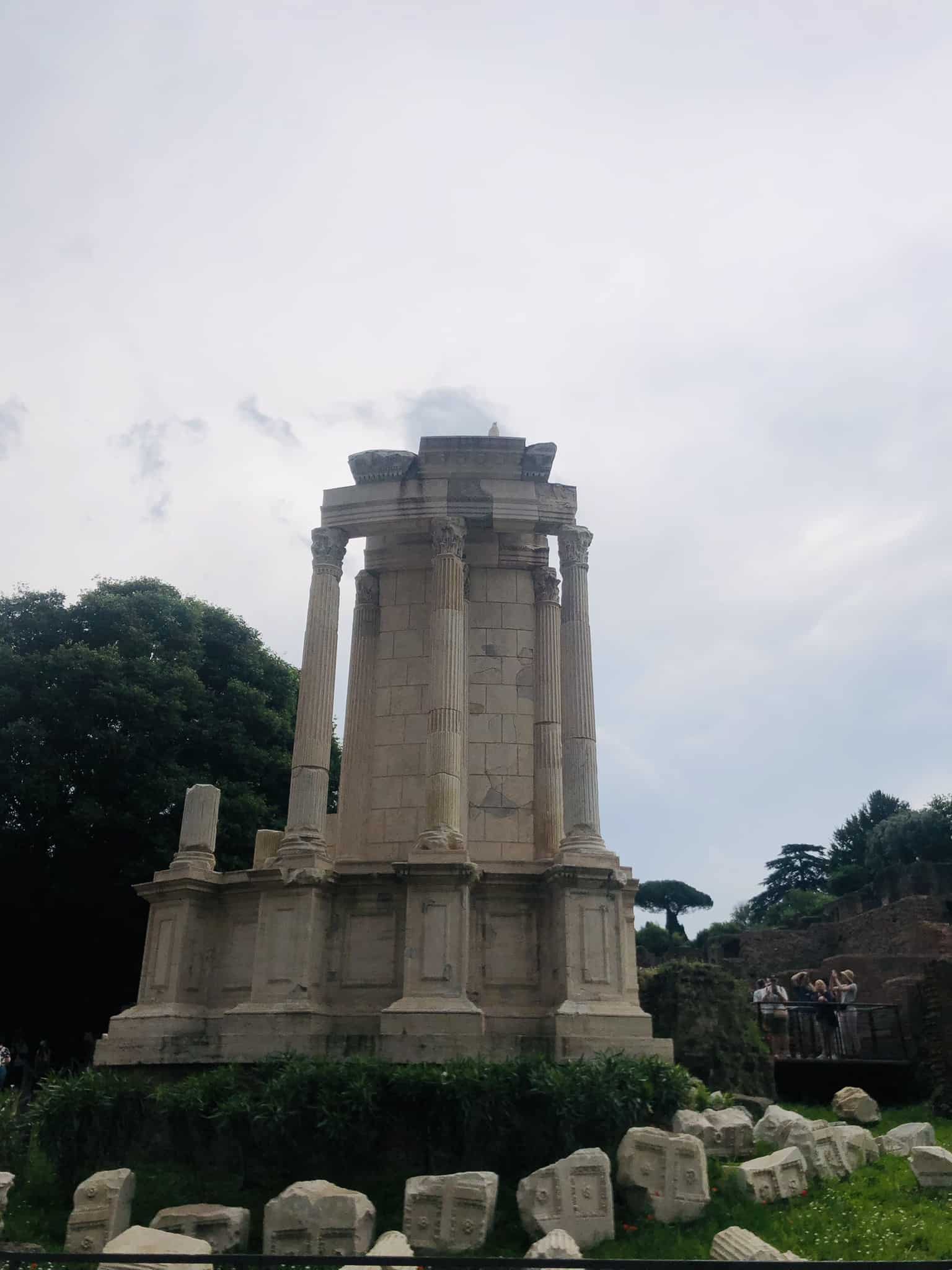
The oldest and most important shrine, it was home to the hearth which held the sacred fire of the state.
Religious activity on this site is estimated by historians to go as far back as 7th-century B.C.E.
Tempio dei Dioscuri
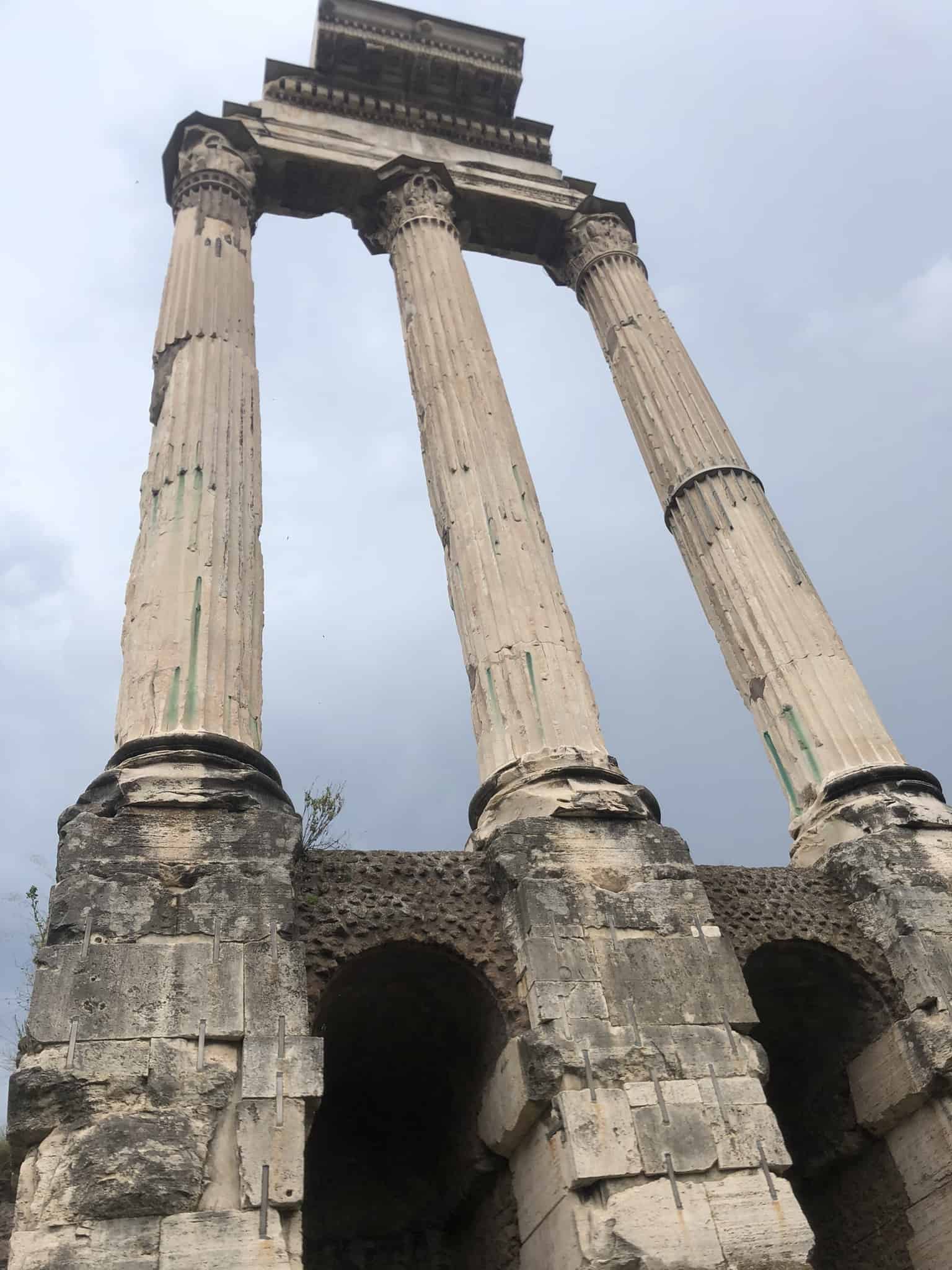
Temple of Castor and Pollux (Tempio dei Dioscuri).
Legend has it that the sons of Jupiter and Leda appeared on this spot to assist the soldiers of the Roman Republic overcome the last king of Rome.
Just these three columns remain, but they are iconic.
The Atrium Vestae
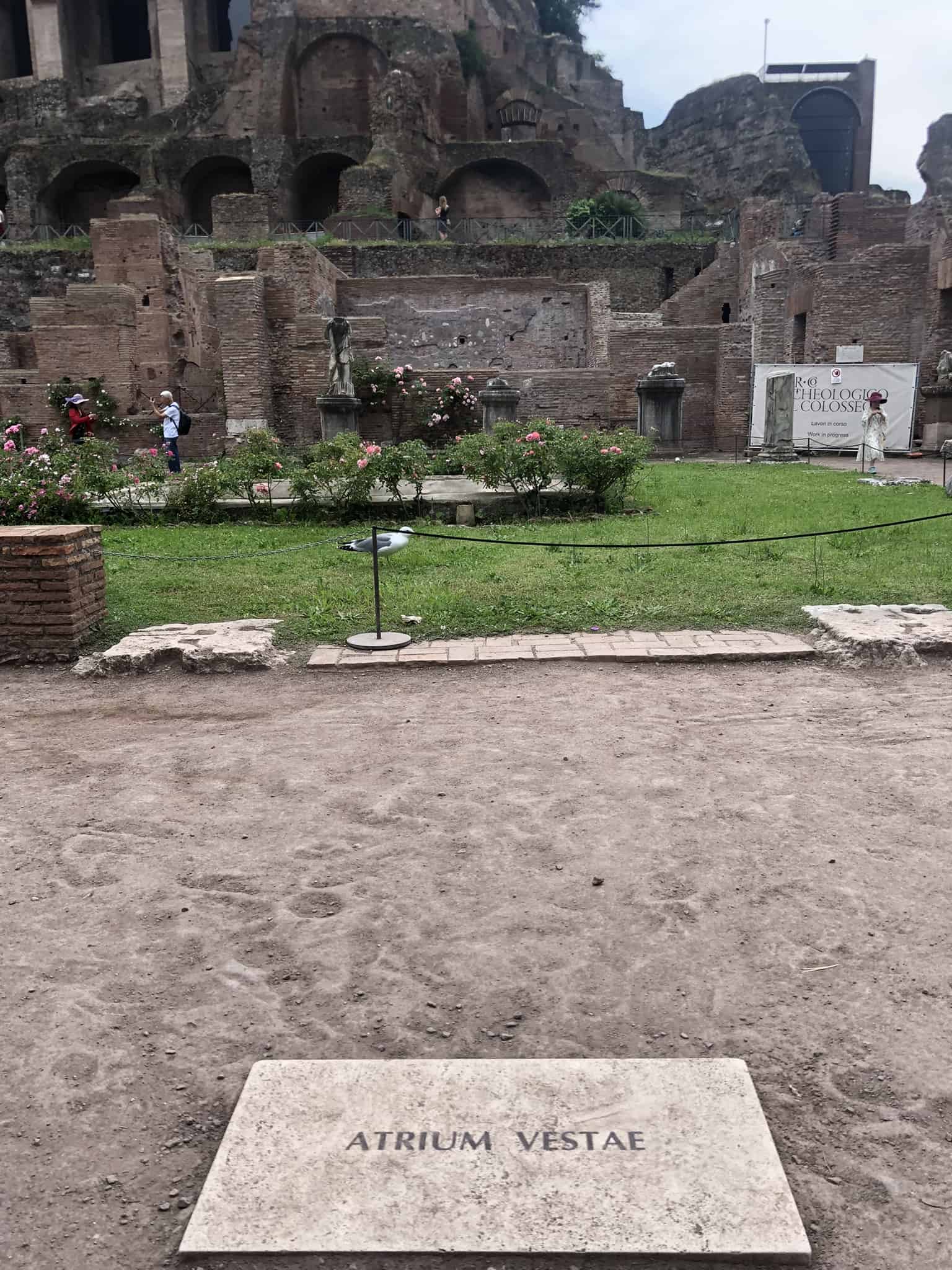
One of my favourite areas had to be the Atrium Vestae or the House of the Vestal Virgins.
(Vestal Virgins were women who would tend to the Temple of Vesta for a tenure of thirty years. As their title would suggest, they were virgins and were expected to remain celibate).
There are benches and it’s a great place to sit down, soak up the atmosphere, get your bearings, and prepare yourself for the Palatine Hill.
(See below for a super quick history lesson and why this is extra relevant).
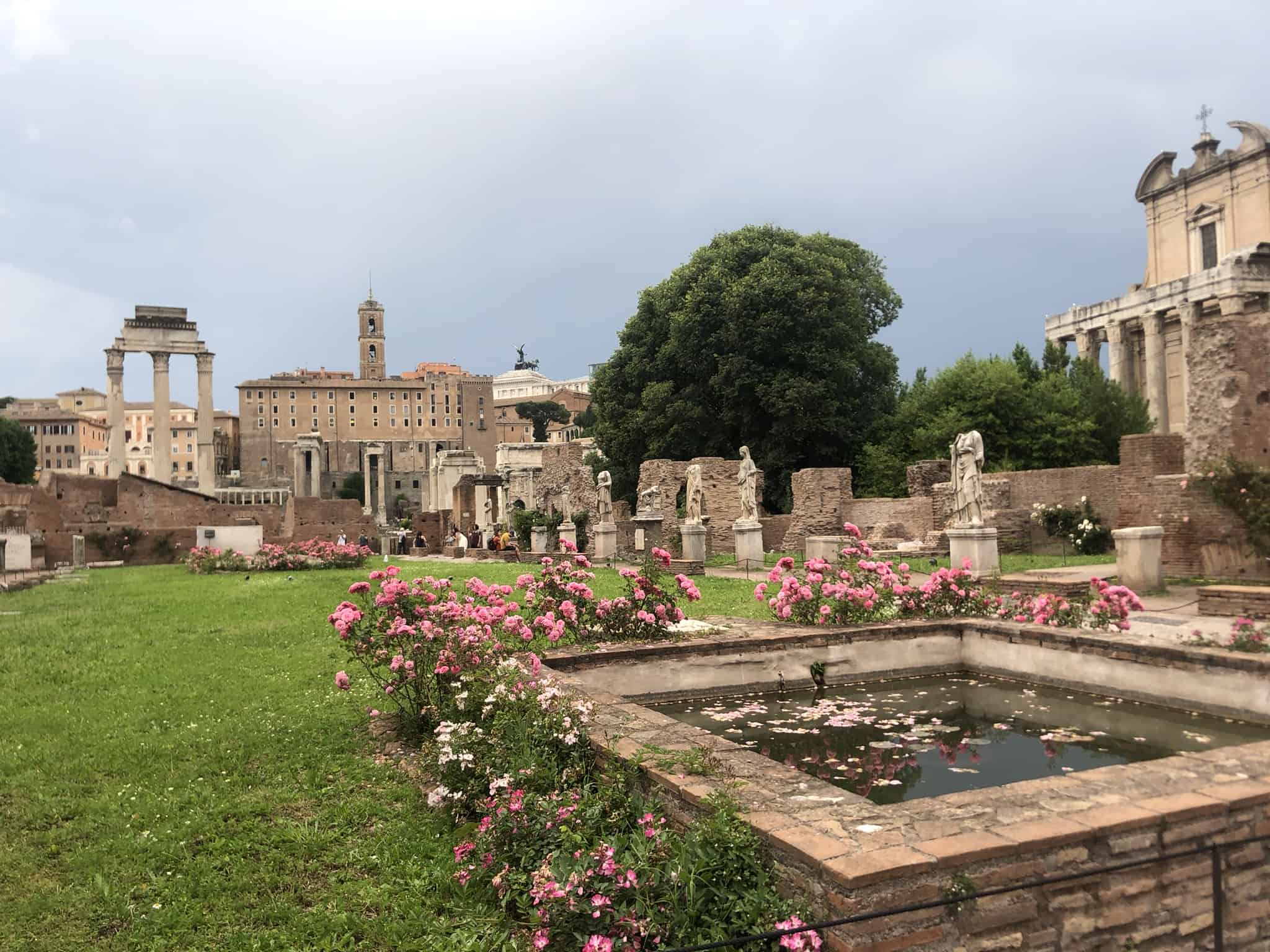
View of Tempio dei Dioscuri and Temple of Antoninus and Faustina from House of the Vestal Virgins, now a very serene rose garden.
Vestal Virgins
According to Roman mythology, a vestal virgin called Rhea Silvia was impregnated by the god Mars. She gave birth to twins and called them Romulus and Remus.
The King perceived the sons of Mars to be a direct threat and so ordered them to be killed. They were abandoned by the river but saved by the god Tiberinus, Father of the River.
As infants, they were suckled by a she-wolf (Lupa), and the cave ( the Lupercal ) in which she cared for them was believed to be up on Palatine Hill.
(If you ever wondered why the symbol of Rome was a wolf).
Years later, Romulus and Remus entered into a bitter dispute over where to build the city. Romulus favoured the Palatine Hill. Remus did not, so his brother had him killed. Romulus founded the city, called it Rome and the rest is history.
Palatine Hill Overview
The Palatine Hill has so many layers to it; both historically and mythologically.
It was home to the ruling classes of Rome for literally millennia. It’s dominated by the ruins of a network of imperial palaces from the first century called the Domus Augustana.
After a brief period of decline during the Middle Ages, things picked up again in the 16th century, when Palatine Hill became home to the first-ever botanical gardens in Europe thanks to the Farnese family.
Just a couple of pavilions and a fountain from what were once the most highly rated pleasure gardens in Europe.
The Palatine Museum at the top of the hill will help fill in the gaps showcasing the wealth and splendour of its previous inhabitants and their respective residences.
Cap it off with stunning views over the Circo Massimo from the Domus Augustana, before exiting via the Barberini Vineyard back down to Via di San Gregorio towards Circo Massimo.
Exploring the Palatine Hill
I started by exploring the vast imperial complex Domus Augustana. To add to the regal feel, classical music is played across the Domus area from discreetly placed speakers, which for me, went perfectly with the surroundings. It instilled a wonderful sense of calm:
The Nymphaeum of Mirrors
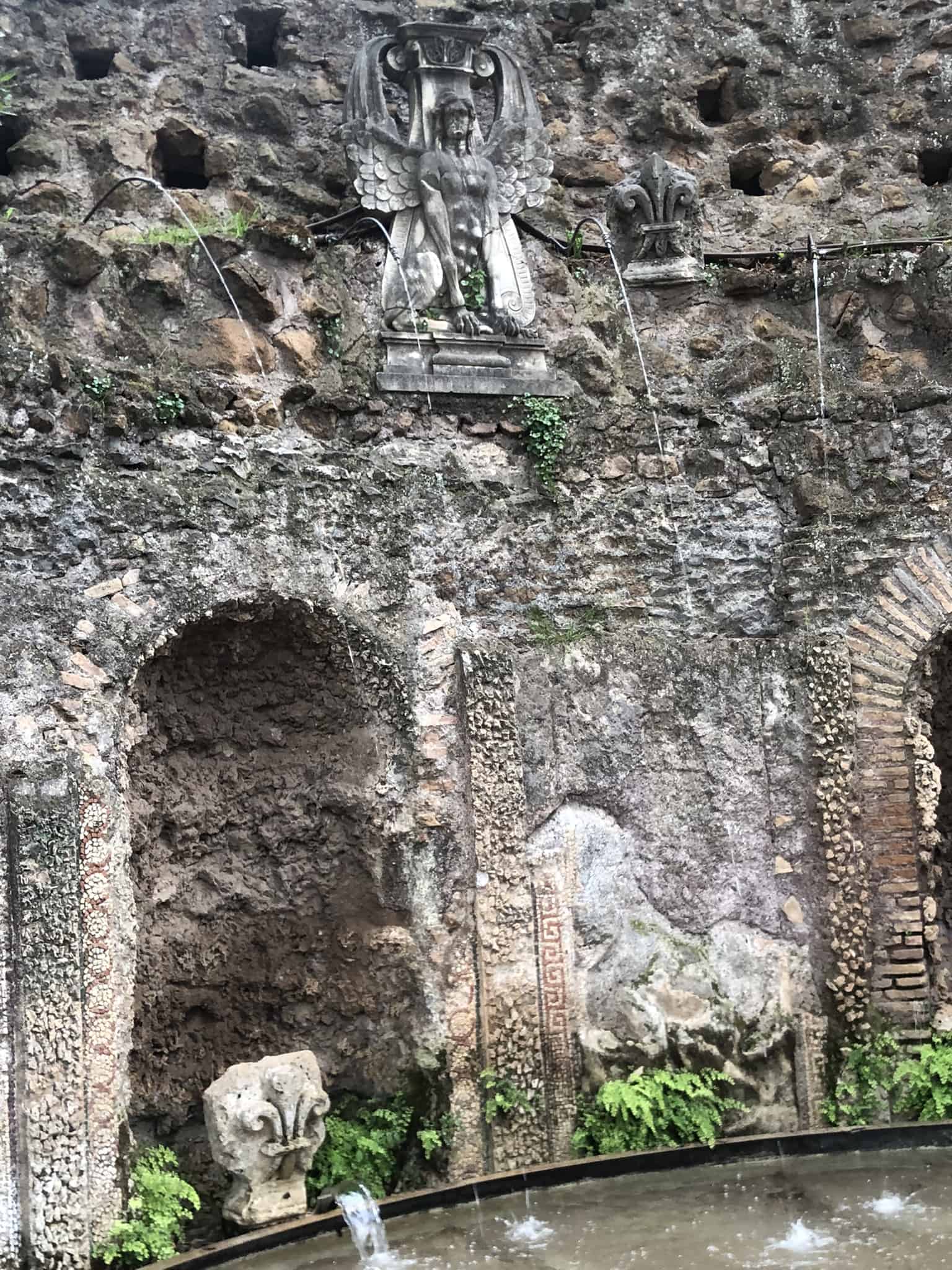
From here, I could still hear the classical music being played up the hill. I sat on a bench opposite the Nymphaeum of Mirrors – or what remains of these fantastic 16th-century water jets and fountains.
I still couldn’t quite get over how still and peaceful it was.
- Top tip : aim your visit towards the end of the day. Not only might you be lucky enough to enjoy romantic twilight views over the Circo Massimo from up on high, but it will be much quieter. Plus, you’ll wind everything up just in time for an aperitivo (between 6 pm and 7 pm), and I’ve got just the place in mind.
Making Your Way Out
Rather than going back the way you came and taking the Metro at Colosseo, exit here through Vigna Barberini. This lovely, almost rural walk downhill past random bits of Roman aqueduct will take you to the entrance/exit on Via di Gregorio, close to Circo Massimo.
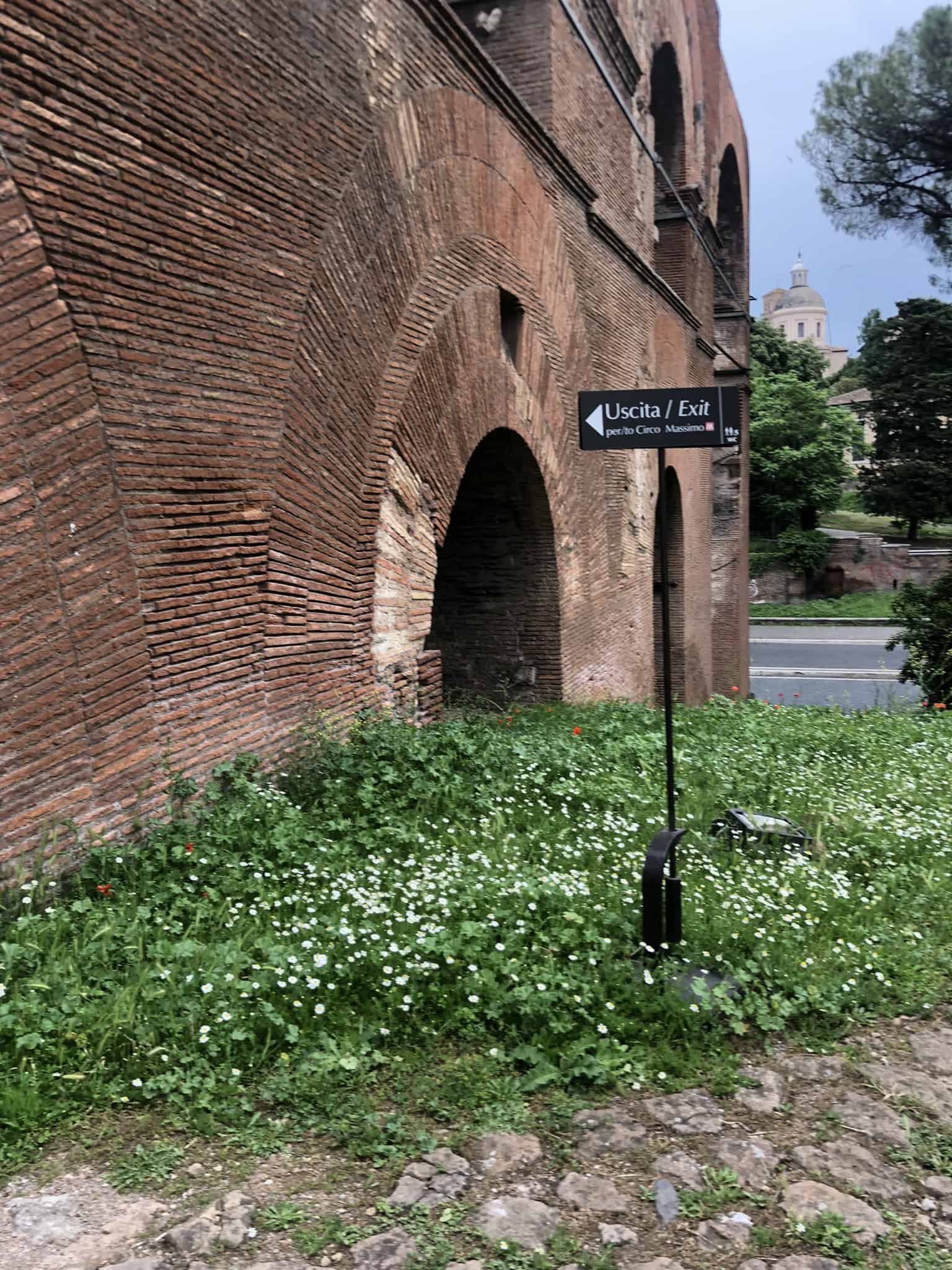
The Barberini Family Vineyard
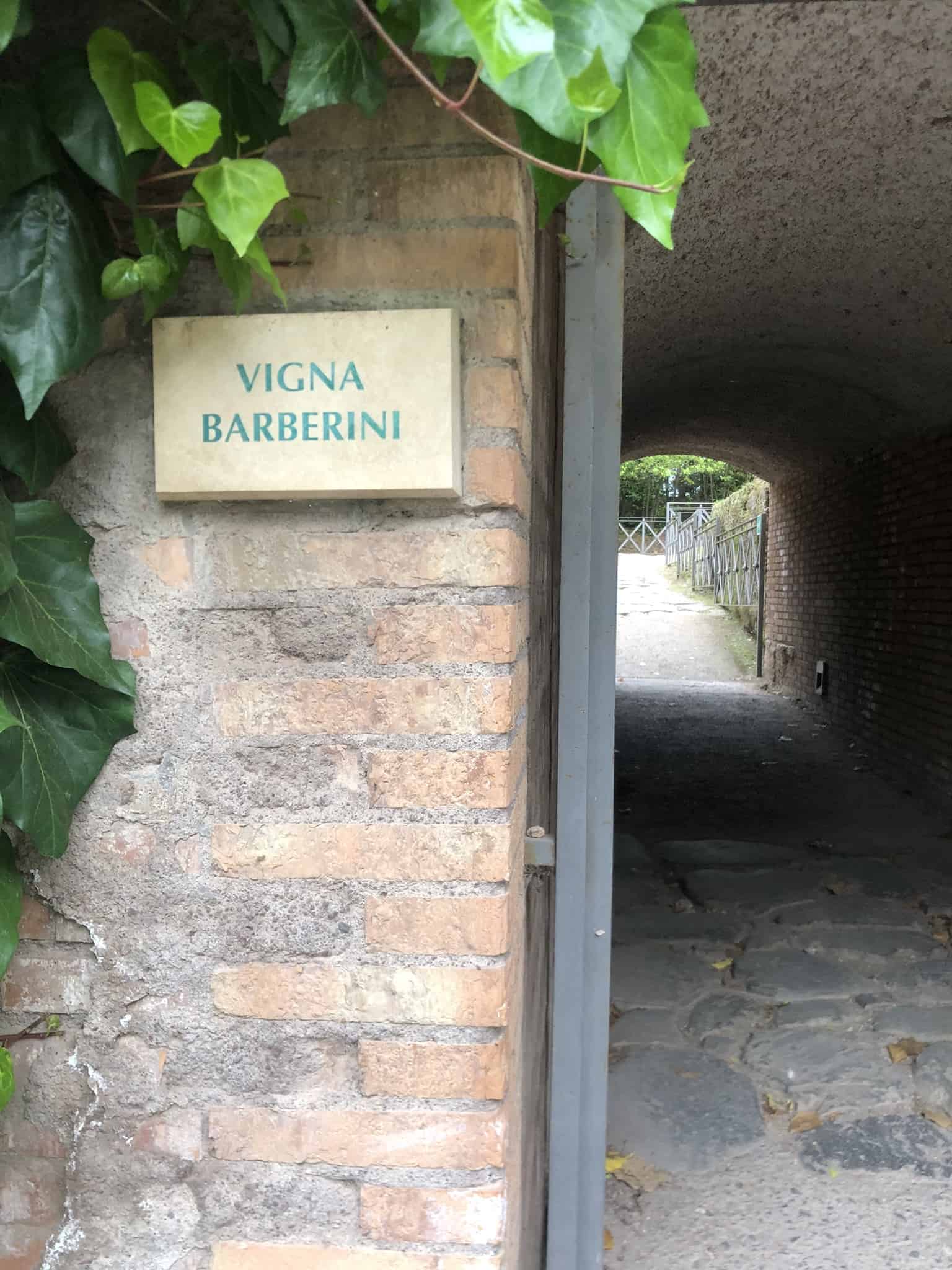
Now here’s a family that got around. This was a noble family from the 17th century that had their fingers in a lot of pies. (You’ll see their family crest at St Peter’s and they even have a Metro station named after them)
They owned property on this site in the 17th century, but the vineyard we see today was carefully planted in 2020 and viticulturalists are proud to be cultivating a very ancient vine called Bellone, known to have been used in Pliny the Elder’s time.
I visited towards the end of the afternoon and had the place to myself.
A very rural feel to the way out via the Vigna Barberini.
The path above will take you all the way down to Via di Gregorio and the splendid arch below.
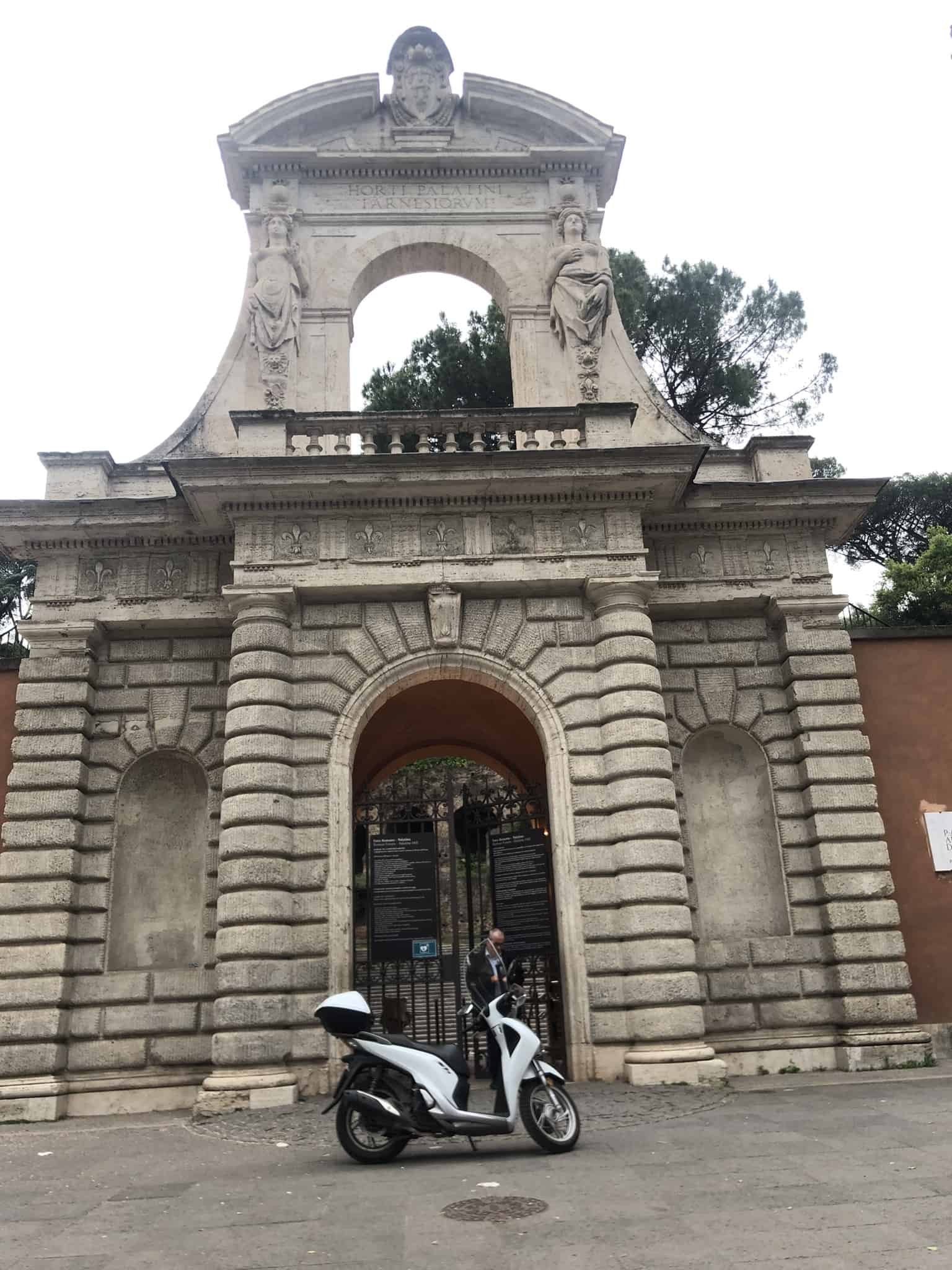
The entrance on Via San Gregorio, or the exit if you choose the Circo Massimo exit. The original entrance to the Farnese Gardens, when they were still a thing.
As you exit this splendid arch, the Arch of Constantine and the Colosseum will be on your left, and the Circo Massimo on your right hand side.
You could also choose to do the reverse and start your visit from here instead.
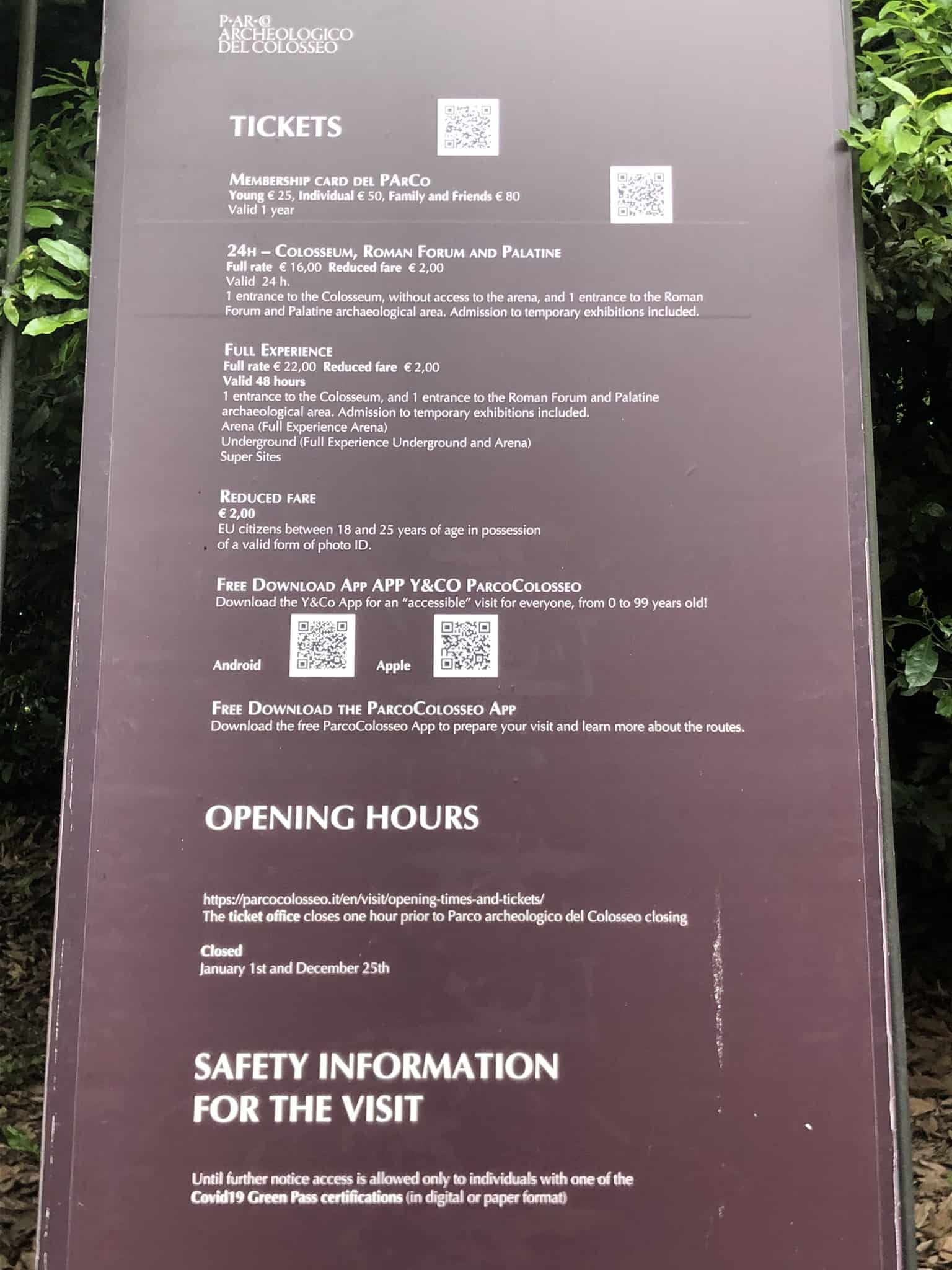
Italy has an absolute love affair with QR codes. They have them for everything.
This ticket information sign also has the QR code you need to download the Parco Colosseo App which includes a detailed itinerary for the Forum as well. Highly recommended.
You’ll find another sign like this by the ticket office opposite the Colosseum, next to Via Sacra.
Be aware that there are no gift shops, cafes, or restaurants at the Roman Forum or Palatine Hill. So bring snacks. The only official gift shops are located within the Colosseum.
Nearby Attractions
Circo maximo experience – viale aventino, 00186.
Through the use of Virtual Reality headsets, you’ll be transported back to the 1st century C.E and witness chariot races and a slice of Ancient Roman life at the Circo Massimo. A 40-minute walking tour; it’s a mere five-minute walk from the Arch of Constantine.
Panoramic view of the Circus Maximus as seen from the Palatine Hill.
Basilica San Clemente – Piazza di S. Clemente, 00184.
A five minute walk away is a stunning 12th century church.
Beneath lie archaeological excavations that take you on a voyage through time. You’ll go down to the remains of a 4th century church, and then descend once again to a 1st century pagan temple.
You’ll need to book ahead. The basilica itself doesn’t provide guided tours (local tour providers take care of that), and you will need to make sure you dress appropriately. No bare shoulders or short shorts.
Food and Drink
Bars and restaurants directly opposite the Colosseum are, not surprisingly, tourist traps. It had to be said. Instead, head to Viale Aventino; the long and cosmopolitan avenue (thanks to all the expat UN staff who frequent its bars) which connects Circo Massimo to Ostiense. It’s lined with a variety of bars and restaurants including:
So Good – Viale Aventino, 87, 00153.
Craft ale on tap and pastrami bagels. The bagels aren’t exactly NYC authentic, but portion sizes are good, and you get the option of pickles and mustard (not a given in Italy).
14 minute walk from the Arch of Constantine.
Gusto Massimo Bar – Via del Circo Massimo, 5a, 00153.
Aperitivo, pizza and good hot lunch food. A UN staff local, (working at the impressive UN Food and Agriculture building across the road), and five seconds from Circo Massimo Metro station.
8 minute walk from the Arch of Constantine.
Elleniko – Viale Aventino, 83, 00153.
Cheap Greek street food. If you want a break from Italian carbs, try Greek instead.
Elleniko offers authentic Greek street food at affordable prices.
Next door to So Good. 14 minute walk from the Arch of Constantine.
Did You Know That: 5 Interesting Facts
- At its lowest point, the Forum was used as a pasture for cattle. It was known as the ‘Cow Field’ during the Middle Ages.
- Much of the Forum was in good condition until the 16th century, though parts had been damaged by earthquakes and neglect. Pope Paul III ordered the plunder and repurposing of the Forum’s materials to build St. Peter’s Basilica, causing untold damage.
- The Arc de Triomphe in Paris was modeled on the Arch of Titus.
- After the brutal assassination of Julius Caesar, his body was cremated within the Roman Forum. Following his death, the legendary general and statesman was deified, and the Temple of Caesar was constructed on the site of his cremation. Much of the temple has been destroyed, but you can still see the remains of the altar today, which would have been treated as Caesar’s grave.
- As well as being a space for social gatherings, politics, and religious ceremonies, the Roman Forum was used as a place to conduct criminal trials. The heads of enemies were often displayed in the Empire’s twilight years.
A timeline of the Roman Forum’s place in Ancient Rome:
- 753 BC. Rome was founded by twin brothers Romulus and Remus. Buildings soon spring up to form the Forum, a communal area that Romans will use as a marketplace, religious center, and political stomping ground.
- 497 BC. The original Temple of Saturn was built. It will prove to be the first of many iterations.
- 44 BC. Julius Caesar was assassinated. His body is cremated in the Forum.
- AD 203. The Arch of Septimius Severus was built to commemorate the Emperor’s military victories against the Parthians.
- AD 394. Non-Christian worship is banned. The Roman Forum slowly fell into disuse.
- AD 410. Fall of the Roman Empire. The Western Roman Empire fell, and the Forum suffered heavy damage in the process.
- AD 608. The Column of Phocas is erected. It is considered to be the final ancient monument built in the Forum.
- AD 847. A huge earthquake damaged many of the buildings in the Roman Forum.
- AD 1539. Further damage was caused on the orders of Pope Paul III. Materials from the Forum are used to construct other sites, including St. Peter’s Basilica.
- AD 1803. Archaeologist Carlo Fea began excavation work at the Roman Forum. The full extent of the project would take over 100 years.
The Roman Forum was used as the center of Roman society. People met here publicly to discuss politics, pass laws, sell goods, and hold religious ceremonies.
The Roman Forum has suffered damage over the years through natural occurrences such as earthquakes, pollution, and weathering. Many of the stones and columns have also been stolen by thieves.
Address: Roman Forum, Via della Salara Vecchia 5/6, 00186 Roma, Italy · view larger map
Visiting the Roman Forum: all you need to know + best things to see and tips
All you need to know to plan a visit to the Roman Forum. Where to get the best tickets, the best things to see in the Roman Forum and the Palatine Hill, practical tips. Updated June 2021.
The Roman Forum is the heart of Ancient Rome and, nowadays, one of the most important archaeological sites in Rome and in the world.
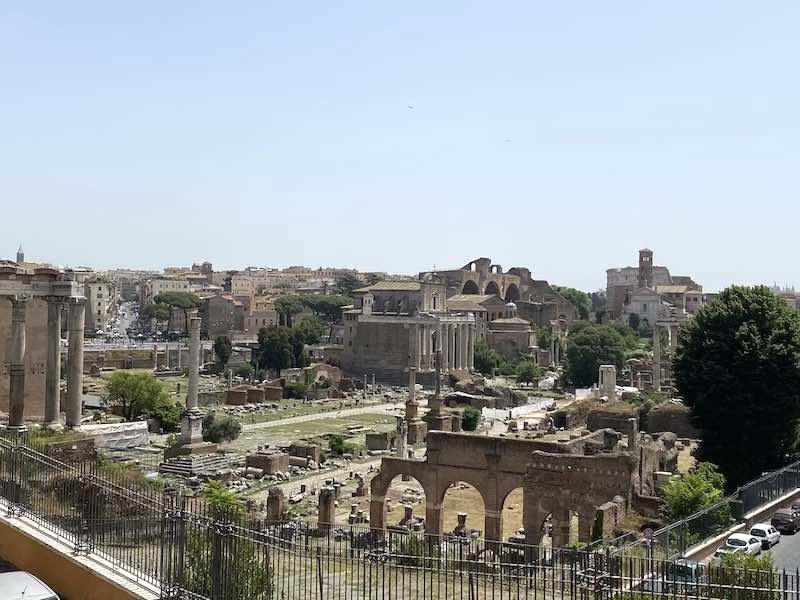
The ancient Rome Forum sits inside what is now the modern city and it is nestled between the Colosseum on one side, the Campidoglio Hill on the other, and the Palatine Hill, where the Palaces of the Emperors lie.
It is one of the most beautiful places in Rome however, it is also a place that attracts less attention than the nearby Colosseum.
While the Colosseum is on the bucket list of pretty much any Rome visitor, it is not unusual to find people wondering if the Roman Forum is worth visiting at all and I think the question is worth a proper answer.
While I believe the Roman Forum is stunning and a must-see for everybody I also believe that it is important to go there being prepared to what the forum is, what it isn’t, what to expect and how to tackle it at best.
This is my guide to visiting the Roman Forum.
Good to know . As well as being born and raised in Rome, I am a classics graduate and my dissertation was on Ancient Rome. So you can say I am biased when it comes to the Forum: I do love it! For the longest time, the Forum didn’t have good explanation panels and my recommendation was to get a guide to make the most of your visit. While I believe a guide is still worth it, the free app ‘Parco Colosseo’ now exists and operated almost as an audio guide. A good, budget-friendly option to see the Roman Forum!
Table of Contents
All you need to know to plan a visit to the Roman Forum
The Roman Forum is the area of Ancient Rome where public and religious life used to take place.
The Forum is now an archaeological site and, in a way, you can say that the Roman Forum is Ancient Rome.
Unlike the Colosseum or the Baths of Caracalla, that are two ancient stand-alone buildings, the Roman Forum is a large area where you literally walk along ancient Roman streets.
The area is large and mostly outdoors. Being prepared for the weather and for the uneven terrain is a must: I share all my tips on how to dress and what to bring to the Roman forum later in this guide.
The best things to see in the Roman Forum
The Roman Forum is a rather large area with plenty of things to see.
The Forum Proper is a flat area comprised between the Capitoline Hill and the Palatine Hill, the two most significant of the seven hills of Rome.
The Palatine Hill is immediately above the Forum and it is accessible though it. The Hill is where Romulus, Rome’s founder, set his hut and where the Emperors then built their palaces.
The best things to see in the Roman Forum are both on the Forum Proper and on the Palatine Hill. Let’s have a look at them.
Via Sacra is the Main Street crossing the Roman Forum.
Nowadays, you see is as connecting the Colosseum to the Capitoline Hill but it predates the Colosseum by many centuries.
The tradition reports that the Via Sacra was were Romulus won over Titus Tatius King of Sabina (VIII century BC) and while at the time the road was a little more than a muddy trail, this tells us some form of street here must have been in use from very early on.
The paving of the street as we see it now is made of slabs of basalt and seems to date from Augustan times (I century AD).
In historical times, the road was used for thriumphal procession after successful military campaigns.
The military parade would walk along this road with the prisoners and the flags of the enemy, bringing the victorious general in triumph all the way to the top of the Capitoline Hill, where the temple of Iuppiter Optimum Maximus (Jovis) used to be.
The Via Sacra is now one of the most scenic areas of the Roman Forum, especially close to the Colosseum, where tall columns are still standing, giving a sense of what this road must have looked like at its best.
The triumphal Arch of Titus
The first impressive monument you find on Via Sacra is the fantastic Arch of Titus.
The arch is one of the three triumphal arches in Rome and dates from the I century AD.
This is a celebratory monument build by order of Emperor Domitian, to honour his precedessot Titus.
As the inscription and carvings on the arch show, the arch commemorated Rome’s victory over Jerusalem and the taking to the temple, an event historians describe as happened in 70 AD.
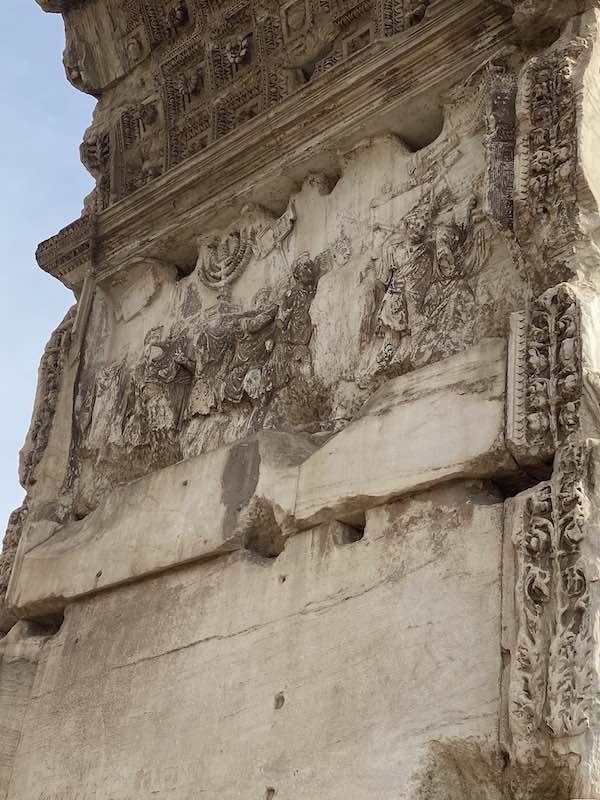
The Temple of Antoninus and Faustina
One of the most beautiful and best preserved buildings in the Roman Forum is the Temple of Antonino and Faustina.
The Temple sits on the spot where the Via Sacra meets the Forum and it was built in 141AD for Emperor Antoninus Pius and his wife: Faustina.
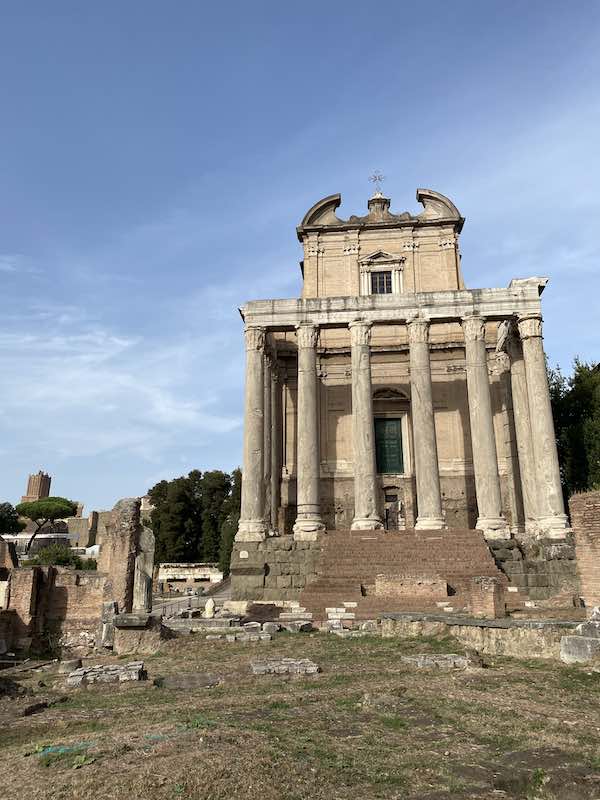
Like many ancient religious buildings, the temple became a a church in the Middle Ages and acquired the name of San Lorenzo in Miranda: this fate changed its appearance but it also ensures its preservation and allows us to enjoy it today.
An inscription at the top of the temple says ‘Divo Antonino et Divae Faustinae Ex. S.C.’ which means that the Senate dedicates this temple to the Emperor and his wife.
The temple stands on a podium with a height of 5 meters and is accessible by a recent staircase. This is one of the tallest buildings in the Roman Forum and one of the most eye-catching.
The Temple of Divus Romulus
The so called Temple of Divus Romulus is a round structure opening onto Via Sacra, inside the Forum.
It is not sure what the use of the temple originally was but we know it was built by Emperor Maxentius at the beginning of the IV century and was later incorporated into the church of Saint Cosma and Damiano, built here in the VI century by order of Pope Felix IV.
This temple is stunning and holds unique worth seeing. Please note that this temple is only accessible with the ‘Full Experience’ ticket.
The Roman Forum Square
The main square of the Roman Forum is a large area at the center of the Forum where all the most important business transactions and public events in the city would take place.
The area was an open unbuilt area for a long time but acquired an increasing number of public buildings and monuments, the latest of which is the column of Phocas, one of the most significant columns in Rome , dedicated in 608AD to the Eastern Roman Emperor Phocas.
Along the short sides of the square, there stood the platforms from where the orators would speak, the Imperial Rostra, the Rostra Vandalica and the Rostra ad Divi Iuli, dedicated by Augustus to Julius Caesar.
On the northern side of the square used to lay the Basilica Emilia: this was a civic area that used to serve as bankers’ headquarters and seems to date to the I century BC, yet the restored and modified many times in subsequent centuries.
On the southern side of the Roman Forum square there used to be another basilica, the basilica Iulia. This basilica seems to have been used for political, judiciary and economic activities and it takes its name from the person who commissioned its built: Julius Caesar.
Fun fact : here is where you can see remains of tabulae lusoriae , the ancient Roman equivalent to our board games! This is one of the best things to show children if you are visiting the Roman Forum with kids.
The Curia was the ancient seat of the Roman Senate. It is a large brick building wanted by Julius Caesar and inaugurated by Augustus, modified by Diocletian and finally turned into a church in 630 AD, fate that allowed the preservation of its beautiful Byzantine Frescoes and its stunning bronze door.
The Arch of Septimius Severus
The Arch of Septimius Severus is a large triumphal arch dating to the III century AD.
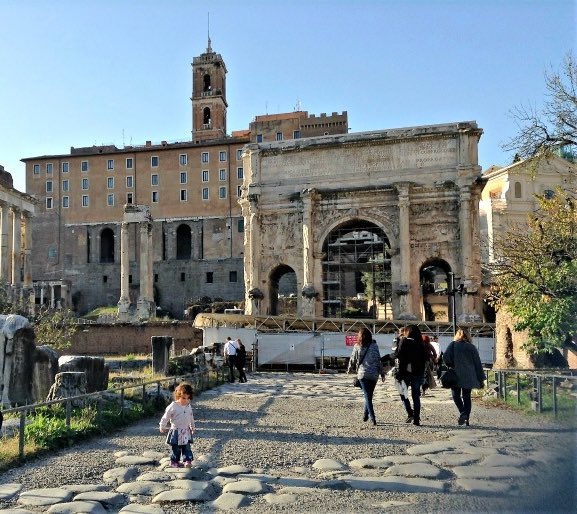
It sits at the end of Via Sacra, just below the slopes of the Capitoline Hill and it made of travertine, brickwork and marble.
The arch has the impressive size of 25×11.20×11 mt.
An inscription tells us that the arch was built to honour the Emperor and his son for ‘restoring the State and extending the empire of the Roman people’ and it used to have a bronze sculpture on top that would overlook the Forum.
Fun fact: in the Middle Ages, the arch became a fortress tower! It was restored only in the 1980s.
The House of the Vestals
The house of the Vestals is one of the prettiest areas in the Roman Forum.
It is one of the most ancient buildings in the city and it is usually associate with King Numa Pompilius, who established the Vestal Virgins as an institution.
The house got destroyed during the large fire of 64AD but was then rebuilt so we see now a later version of it. Still well visible are the rooms, the stairs to the upper floors and the portico, one of the most beautiful spots I the whole of the Forum.
The Temple of Vesta
The Temple of vesta is on the Eastern side of the Roman Forum and it easy to recognize thanks to its distinctive round shape.
The temple used to be part of the same complex as the house of Vestals, nearby. The temple was badly damaged however, ancient coins tell us the shape it would have had and restoration work from the 1930s patched up some of the fragments found in the area.
The Regia is said to be the place where King Numa Pompilius used to reside. This is one of the oldest sites in the Forum, with remains archaeologists were able to date back to the Iron Age.
The ancient necropolis
Between the temple of Antoninus and Faustina and the Temple of Romulus, archaeological excavations in the early 20th century brought to life and ancient necropolis (cemetery).
These graves date from the Latin Age (X century BC) and therefore predate almost anything else in the Forum. These are an important find for historians and archaeologist as they shed a light on a much more ancient use of this area that our ancient Roman sources do not cover.
The Farnese Gardens
If, from the Forum, you look up towards the Palatine Hill, you will see a structure that is clearly not ancient but rather from Renaissance Times, the ‘Farnese Gardens’.
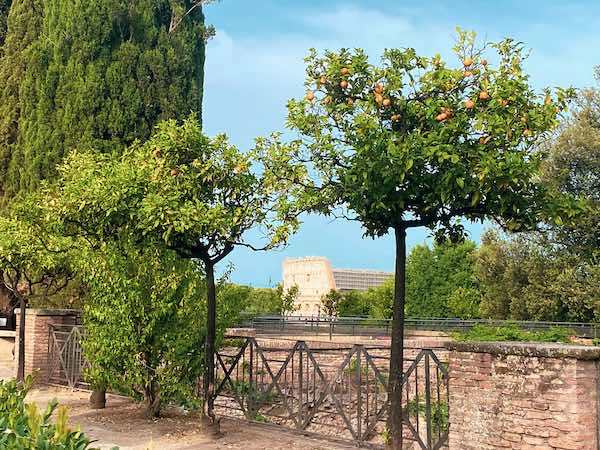
The Gardens were built in the early 1500s by Pope Paul III Farnese and quickly became among the most extraordinary gardens in the city for variety of plants and views.
The construction of the gardens took many years and their appearance changed in the XVII century, when two large aviaries where added, and then again up until the early 1930s.
What to see on the Palatine Hill
This is a quick overview of what you can see on the Palatine Hill as you climb up from the Roman Forum.
You can find here >>> our complete guide to the Palatine Hill for first time visitors .
The Palatine Hill is one of the ancient seven hills of Rome and the place Romulus fonder of Rome chose as the location for its new city.
The Palatine Hill is one of the most beautiful places in Ancient Rome and can be accessed from the Roman Forum, which it overlooks.
Things to see on the Palatine Hill are:
The huts of Romulus
The huts of Romulus are in the area of the Palatine called the Germalus, on the hill’s southwestern corner.
This is a group of dwellings that that seems to have been inhabited since the IX century BC and one of them is usually referred to as the ‘House of Romulus’, a full replica of which can be seen in the Palatine Museum.
This is a fantastic place to get acquainted with the very early days of the city of Rome.
The Palace of Emperors
In terms of visual effect, the most impressive sight on the Palatine Hill is the Palace of Emperor.
The Domus was built at the end of the I century AD by Emperor Domitian and it is divided into three parts: the Domus Flavia, with the rooms for business and entertaining guests, the Domus Augustana, the actual house of the Emperors, and the Stadium or Hippodrome, the palace garden.
The Palace is stunning to see: if you have time, I highly recommend you go to the Circus Maximus after your visit. It is just below the Palace, outside the archaeological park, but it offers outstanding views of the palace for the outside, the perfect complement to the sight you get from the Palatine.
The Palatine Museum
The Palatine Museum stands at the top of the Palatine Hill and hosts a collection of artefacts that spans over fifteen centuries of history of Rome, from its foundation to the highest successes of the Roman Empire. A must-see for history lovers.
The Roman Forum: frequently asked questions and need to know
What was the roman forum.
The Roman Forum was the administrative area of Ancient Rome.
It was the heart of the city, the place where religious, legal and political affairs took place and, as such, the beating heart of the political life in Rome.
Here, you would have had temples, some still visible, basilicas (a sort of meeting hall, at the time), religious buildings and of course streets and celebratory buildings such as the arches still standing at the two sides of the forum.
What is the Palatine Hill?
The Palatine Hill is one of the 7 hill of Rome and is usually mentioned with the Roman Forum is is just beside it and is accessible from the Forum itself.
The hill is historically significant and beautiful: here, you have the ruins of the palaces of Emperors, a museum, ongoing excavations and stunning views over Rome .
Is the Roman Forum beautiful? Is it worth seeing?
There is no doubt that the Roman Forum is a must-see place for anyone with an interest in Ancient Rome, but I believe the forum it is worth seeing also if you just want to see a beautiful place.
The area of the forum is simply stunning!
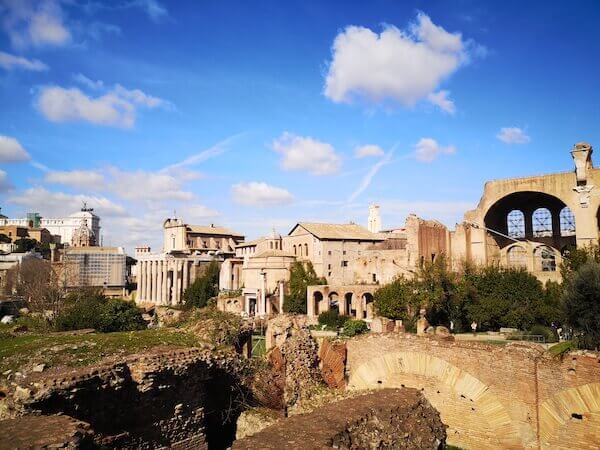
The Forum is now an open-air archaeological park and you can easily enjoy it even just as a place for a leisurely stroll.
If you go on a bright day, especially in the spring or the fall, the forum is simply breathtaking: you can easily walk to one side to the other in a matter of minutes and you can simply follow your curiosity picking and choosing the areas that attract you the most.
The most beautiful part of the Roman Forum is, for me, the walk up the Horti and the Palatine Hill. You will feel the steps in your legs but, once on top, you have the ruins of the palaces of emperors and views over Rome that are simply breathtaking!
The pine trees that are typical of the Rome landscape frame the Colosseum and the Forum below and give you a photo op like no other!
Is there a dress code for the Roman Forum?
There is no dress code for visiting the Roman Forum. Clothing rules such as no shorts or no strappy tops only apply to religious buildings and main basilicas such as St Peter but not to archaeological sites.
The only thing to keep in mind when visiting the Forum is practicality: good shoes are a must and weather appropriate clothing for the season of your visit will also be important.
You can find our tips on what to wear for the Roman Forum below.
How to visit the Roman forum: guided tour or self guided? 2021 Update
The Roman Forum is a place so full of history and thing to see it is best enjoyed with a guide.
The area has almost non existent info panels so without some form of guidance, you can enjoy its beauty but you won’t understand much.
The cheapest way to visit the Roman Forum is by getting standard tickets and downloading the Parco Colosseo app.
The app is free and has explanations in several languages about the main sights in the Roman Forum and on the Palatine Hill.
If you have a smart phone, this is an excellent option and it also has a recommended itinerary for kids and another one for the visually impaired.
If your budget allows, then I recommend you take one of the may Roman Forum tours available (see below)
How to get the best Roman forum tickets
You can buy tickets to the Roman Forum on the day or you can book them online here. If you do so, make sure you pick a solution that works for you: there are several combinations, offering access to different things.
The tickets include a visit to the Colosseum (all areas or just some parts depending on the ticket), the Roman Forum and the Palatine Hill, with the exception of some ‘super sites’ that you may need to book separatly.
Best Roman forum tours
Tours of the Roman Forum are bundled up with a visit to the Colosseum.
The best we have tried are:
- Priority Entrance to Colosseum, Forum and Palatine Hill with guide
- Colosseum (includes underground tier) and Roman Forum guided tour
- Walking tour of the Colosseum, Roman Forum and Palatine Hill (3 hours)
- Colosseum and Roman forum tour for kids (suitable for primary school kids too)
Need to know: the tours tend to give priority to a visit to the Colosseum, which usually takes up to 2/3 of the tour. If you are interested in a more specialized tour, then I recommend you get a private guide instead .
How long to visit the Roman Forum
It usually takes me between 2 and 3 hours to visit the Roman Forum and I would recommend to plan half a day if this is your first visit.
Technically, you can spend as little or as long as you wish here, however, I think within this time frame you can see some of the forum most impressive area, such as the temple of Antonino and Faustina, the House of the Vestals and the Horti and also the Palatine Hill.
What is the best time of day to visit the Roman Forum?
The best time of day to visit the Roman Forum depends on the season.
In spring and autumn, the best seasons to visit Rome, you can go pretty much any time of the day, with only one caveat: the late morning and lunch hours can get busy!
Aside from that, you don’t have particular constraints when it comes to weather and time of visit, in mid season. The situation changes if you are visiting in winter or summer.
In winter, the best time of the day to visit the Forum and the Palatine hill is the late morning / lunchtime.
The Forum and even more the Palatine can get really cold in winter and being there in the warmest hours of the day will go a long way to make you enjoy your visit.

Also, consider that in winter the Forum closes pretty early (about 4 pm) and darkness comes early too, so an earlier start is recommended.
In summer, it is the opposite!
The Roman Forum in summer gets scorching hot and must be avoided at lunchtime and in the hottest hours of the day at all costs.
The best time of day to visit the Roman Forum in summer is the early morning or the late afternoon (check the time of the last admission though, you want to make sure you have enough time).
What to wear to visit the Roman Forum
You do not need particular equipment to visit the Roman Forum, but it is worth knowing a couple of things:
The terrain in the Forum is uneven, so you are recommended to wear good walking shoes or sneakers: no heels. Find my recommended shoes for Rome sightseeing here.
There is very little shade in the forum so especially in the warmer season, it is important to wear a hat.
In winter, the Forum can get surprisingly cold and the Palatine Hill gets even colder: wrap up well and do go during the warmest hours of the day for the best experience or humidity may get to you and make your visit seriously unpleasant.
Is there food and facilities inside the Roman Forum?
The Roman Forum has some restrooms and drinking fountains but it is overall hardly equipped with food.
I highly recommend you take care of breakfast and lunch before you come: picnics are now allowed.
Is the Roman Forum accessible?
The Roman Forum is not entirely accessible but does have some defined paths for wheelchair users. You can find all the pupated information on the paths and lifts here
Visiting the Roman Forum with kids
We have brought the kids to the Roman Forum several times and it is always a good day out.
It is, however, a day that can pose some challenges, so it is good to be prepared.

These are the important things to know before visiting the Roman Forum with kids:
You can enter the Roman Forum with a stroller however, only part of the Forum is paved. If you can, I highly recommend you leave the stroller at home, especially if also visiting the Colosseum (find my tips for visiting the Colosseum with kids here).
Kids will be tempted to climb on top of the ruins but this is not allowed. There is however a good playground close to the Colosseum , which you can easily reach after your visit and works well as a bribe!
There is no food inside the Forum and picnics are not allowed. However, it is ok to hand out a snack to a child so if you have small food for them, that’s ok.
If you ate visiting Rome with kids, do not forget to also check out our favorite things to do in Rome with kids here .
Top tip: the free app ‘Parco Colosseo’ includes a kid-friendly itinerary!
Should you visit the Roman Forum and the Colosseum on the same day?
The Roman Forum and Palatine hill are just beside the Colosseum and you can visit both in the same day.
A short visit to the Colosseum can take as little as 45 minutes and the Forum is only a minute across the road. Here, you can spend an hour, four or even a day.
I recommend you schedule at least three hours for a quick Forum visit, a full afternoon for a proper one.
How to get to the Roman Forum
You can get to the Roman Forum by metro, bus, tram or one foot.
- The closest metro station is ‘Colosseo’
- All buses serving the Colosseum serve the forum too, as well as those serving Piazza Venezia.
- Tram number 3 stops nearby
- The Roman Forum is walking distance from Piazza Venezia, Colosseum and the Pantheon
Where to get the best Roman Forum views?
The Roman Forum is a powerful site and there are some amazing photo locations to capture its might, some inside the Forum itself, and some outside!
One of the best views is from the Horti, inside the Forum, on the way up to the Palatine Hill. From here, you see the Forum and also the Colosseum.

Another stunning view over the Roman Forum is from the back of the Campidoglio Hill. This view is free and easily accessible walking up the Campidoglio and going to the back of the main budding. The Roman Forum will be at your feet!
So, is a visit to the Forum worth it?
Yes, I believe a visit to the Roman Forum is worth it and not just for history lovers. The beauty of the place itself a reason for visiting, especially in spring and autumn.
I hope you enjoyed this practical guide to visiting the Roman Forum. Happy travel planning!
My name is Marta, I am a travel-loving mama born and bred in that messy, wonderful, infuriating, awe-inspiring unbelievably beautiful city that is Rome. A classics graduate and professional travel blogger, on this site I share my insider tips to help you plan your dream trip to Rome, Italy.
What to wear in Rome in October: packing list and tips from a local
Movies set in rome that will make you feel like you are in rome right now, you may also like, fun and interesting facts about the colosseum for..., christmas markets in rome you will love this..., how to see the best of rome in..., free things to do in rome you’ll love..., how to buy tickets for the pantheon +..., how to visit the spanish steps in rome:..., largo di torre argentina: all you need to..., 40+ rome hidden gems you’ll love, outdoor swimming pools in rome you’ll love this..., 22 fantastic things to do in rome when..., privacy overview.

- Top Attractions
- Tourist Attractions
Roman Forum
Located between Piazza Venezia and the Colosseum, the Roman Forum was the hub of political and social activity of the Roman citizens.
The Roman Forum was where religious and public life in ancient Rome took place . The Forum is, along with the Colosseum , the greatest sign of the splendor of the Roman Empire that can be seen today.
After the fall of the Empire, the Roman Forum was forgotten and little by little it was buried under the earth. Although in the 16th century, the existence and location of the Forum were already known, it was not until the 20th century that excavations were carried out.
Interestingly, the place where the Forum was built was originally a marshy area. In the 6th century B.C., the area was drained by means of the Cloaca Maxima , one of the first sewer systems in the world.
Points of interest
Besides the great number of temples that are in the forum (Saturn, Venus, Romulus, Vesta, etc.), it's worth paying special attention to the following points of interest:
- Via Sacra : This was the main street in ancient Rome that linked the Piazza del Campidoglio with the Colosseum.
- Arch of Titus : This is a triumphal arch that commemorates Rome's victory over Jerusalem. It was built after the death of the emperor Titus.
- Arch of Septimius Severus : An arch erected in the year 203 A.D. to commemorate the third anniversary of Septimius Severus as the emperor.
- Temple of Antoninus and Faustina : Built in the second century, the Temple of Antoninus and Faustina sets itself apart as the best-preserved temple in the Roman Forum.
- Basilica of Maxentius and Constantine : Though now mostly destroyed, its size suggests that this was one of the most important buildings of the Roman Forum.
- The Curia : In this building, the Senate met to make administrative decisions about the Roman government.
- Column of Phocas : Erected in the year 608 A.D. in honor of the emperor of Byzantium, this column, which is over 13 meters high, is one of the few that have remained standing since being built.
Visiting Rome without walking around the Forum is like going to Paris without seeing the Eiffel Tower. As you travel along the Via Sacra, close your eyes and imagine it as it was more than 20 centuries ago, when Julius Caesar walked there .
The best way to skip the line and get to know the Forum in detail is to take a guided tour . We'll visit three of the main monuments in the city, the Colosseum, Roman Forum, and Palatine Hill, skipping the line, and all with an expert guide.
If you prefer to discover it on your own, we recommend that you head first thing in the morning, as this is when people head to visit the Vatican . You can also skip the lines with the Rome Pass discount card.
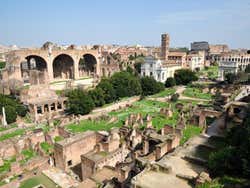
Between the Colosseum and Piazza del Campidoglio .
Every day: 8:30 am until 7 pm 25 December and 1 January: closed
Combined ticket to visit the Colosseum, the Roman Forum and the Palatine : Adults: € 16 ( US$ 17) European Union members (18 – 24): € 2 ( US$ 2.10) Children (ages less than 17) and seniors (over 65) members of the EU: free entrance
Colosseum, Roman Forum & Palatine Hill Tour € 68 ( US$ 72.30)
Metro : Colosseo , line B (blue).
Nearby places
Piazza del Campidoglio (335 m) Capitoline Museums (348 m) Arch of Constantine (407 m) Santa Maria in Aracoeli (412 m) Palatine Hill (424 m)
You may also be interested in
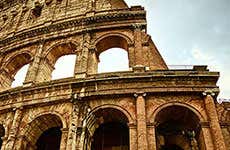
Known as the Flavian Amphitheatre, the Roman Colosseum is one of the capital's most remarkable monuments. Every year over 6 million people visit it.
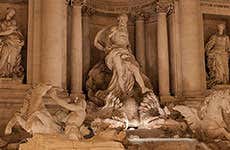
Trevi Fountain
Have you been told to throw a coin into the Fontana di Trevi? Learn the myth behind this tradition and learn about its history.
RELATED LINKS
On this page, colosseum & roman forum, major rome attractions, rome's best..., transport, tours & passes, outside rome.

- Rome hotels
- Venice hotels
- Florence hotels
- Naples hotels
- Pisa hotels
- Sorrento hotels
- Rome Fiumicino Airport
- Rome Ciampino Airport
- Venice Marco Polo Airport
- Pisa Airport
- Naples Airport
- Civitavechia (Rome) Cruise Port
- Naples Cruise Port
- Rome public transport
- Venice water bus (vaporetto)
- Florence public transport
- Naples public transport
- Sorrento local buses beyond Amalfi
Visit Roman Forum and Palatine Hill
Roman forum, palatine hill and colosseum tickets, entrance gates and tours.
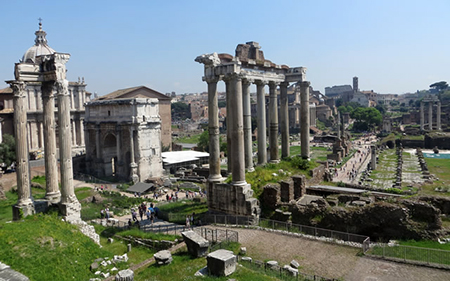
The Roman Forum (Forum Romanum) and the Palatine Hill are located in the same archaeological area and count as one admission.
The Roman Forum and the Palatine Hill are adjacent to each other and you can walk freely between the two. Both the Roman Forum and Palatine Hill have separate entrances.
The entrance ticket also gives you entrance to the Colosseum next to both and is valid for two days covering all three attractions.
About the Roman Forum Forum tickets & opening hours Buy fast track tickets Forum recommended route Roman Forum - what to expect Roman Forum & Colosseum walking tours
Roman Forum - what is it?
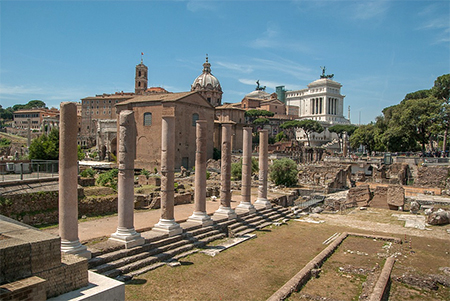
A walk around the Roman Forum is to glimpse into the founding of the ancient Roman Empire.
From what was marshland the Romans drained the area and turned it into a centre of political and social activity. The Forum was the marketplace of Rome, and later a gathering space for triumphal processions, criminal trials and gladiatorial matches.
The Roman Forum was home to some of the oldest and most important buildings in the ancient city – what you will see today is a mass of ruins, including shrines and temples, such as the House of the Vestal Virgins. The most ancient monuments at the Roman Forum are from the first kings of Rome, dating back to the sixth century BC.
The Forum was then abandoned some time in the Middle Ages, and over time, buried under layers of earth, Some temples were transformed into churches, allowing their preservation in the course of time.
During the Renaissance the area of the Forum Romanum was used as a marble and stone quarry. However, it was not until 1898 that excavations began to be carried out, revealing what we see today.
Top of the page
Roman forum - tickets, opening hours and time slots.
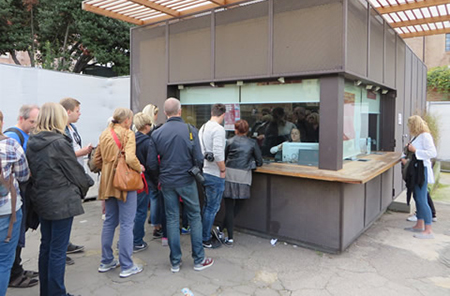
Time slot entries are now in place at the Colosseum/ Roman Forum. You are required to select your time slot in advance. You will receive a confirmation email upon booking and and on your voucher you can read how to reserve your time slot. Although you can do this at the Colosseum Ticket Office, it is sensible to do this online in advance because otherwise there is no way of securing your preferred date and time.
The standard admission ticket covers all three monuments, the Colosseum, Roman Forum and Palatine Hill.
Opening hours are from 8.30am to one hour before sunset, exact times are again on the link below:
Opening hours Colosseum + Roman Forum
You can gain Colosseum and Roman Forum entrance by:
Arriving first thing and queuing for a time slot later the same day or later that week (although still possible, this is risky because you are not guaranteed entry on the day you wish due to demand)
Buying a skip the line ticket avoiding the queues in advance for a supplement
Gaining entry using the Roma Pass
By guided tour as part of a group
Note : Within the Colosseum, there are parts you can only visit as part of a “special access” guided tour (see section below) for which the standard ticket has no validity.
Free Entrance:
Free entry on the first Sunday of the month (no reservation possible) – expect long queues
Free entry for those under 18 and discounted tickets for EU citizens aged between 18-25.
Free for EU citizens with disabilities and their companion, with valid medical documentation of the disability
Dedicated page covering all types of tickets for Colosseum and Roman Forum
Colosseum and Roman Forum - skip the line/fast track entrance tickets
Skip the Queue/ Fast Track tickets can be purchased in advance on-line with immediate delivery of tickets by e-mail.
Fast track Colosseum ticket - option 1
One fast track entry to the Colosseum and one entry to the Roman Forum/Palatine Hill
Escorted entry into Colosseum at selected time slots available throughout day
COLOSSEUM, ROMAN FORUM & PALATINE HIL VIP ACCESS 2-DAY ENTRANCE TICKETS
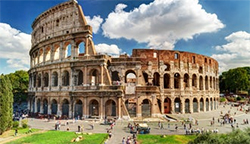
• Fast track entry Colosseum/ Roman Forum + Palatine Hill • Choice of time slots all day • Option to add Gladiator's arena • Audio guide available • Choose from independent entrance ticket or small group tour
Fast track Colosseum ticket - option 2
Entrance through fast track entrance gate with later time slots than option 1
• Fast track entry Colosseum/ Roman Forum + Palatine Hill • Later time slots than option one • Tickets are valid for 2 days after your first visit at the selected date • Free audio guide available
Visiting the Colosseum, Roman Forum & Palatine Hill - entrances and recommended route
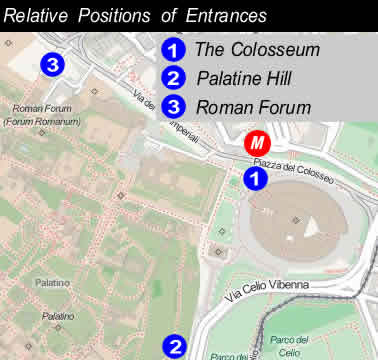
Main entrance
The main entrance gate for the Roman Forum is along the Via die Fori Imperiali between the Colosseum and Piazza Venezia, near the Piazza Venezia end. There is an exit gate from the Roman Forum close to the Colosseum. You cannot enter the Roman Forum at the gate nearest the Colosseum, this gate is just an exit.
The natural flow of a visit is to exit the Roman Forum at the Colosseum end of the site. You cannot enter or re-enter at this gate though. There are also exits at the Capitoline Hill end of the site, but again no entrance. The Palatine Hill towering above you is also linked both ways to the Roman Forum.
Where are the shortest queues?
The ticket kiosk at the Colosseum has by far the longest queues; we suggest you start and buy your ticket at the Palatine Hill entrance.
The ticket gate for the Palatine Hill often has no queues at all and is midway down the road Via di San Gregorio that runs from the Colosseum along the base of the Palatine Hill less than 5 minutes' walk from the Colosseum. Many of the hop-on hop-off sightseeing buses and tour buses board and drop between the Colosseum and the entrance to the Palatine Hill.
From the Palatine Hill entrance, walking uphill exploring the Palatine Hill is more gradual than from the Roman Forum and has more shade. After performing a circuit of the Palatine Hill you will get a great birds' eye view down onto the Roman Forum as you descend into it, getting a good initial orientation in the process.
The entrance of the Roman Forum is a long way from the Colosseum, but there is an exit only gate right next to the Colosseum.
Roman Forum - what to expect and facilities
The Roman Forum is a large area to cover with little shade, so do bring along plenty of fluids.
Another thing to bear in mind is that there are no food outlets at the Roman Forum. If you have, for example, spent the morning at the Colosseum and you go straight on to the Forum, be prepared to have a later lunch by the time you have walked round this ancient site.
Time needed to visit the Roman Forum
Most people allow a half day to visit the Roman Forum and Palatine Hill with the Colosseum. If you have a real interest in the subject matter you will need a day.
Your ticket allows you to see all three parts over two days (re-entry is not permitted) so you could take a more leisurely approach visiting the Colosseum on a separate day to the Roman Forum and Palatine Hill.
Colosseum & Roman Forum walking tours
Taking a walking tour with an expert guide with headphones and fast track entrance tickets provided is an efficient and cost effective way of covering the Colosseum, Palatine Hill & Roman Forum in around 3 hours.
Option 1 - Colosseum, Palatine Hill & Roman Forum walking tour
Skip-the-line access to the Colosseum, Roman Forum, and Palatine Hill
Groups of 25 people or fewer
Departure times available morning or afternoon
Informative, friendly and professional guide, headphones available
SKIP THE LINE: COLOSSEUM SMALL GROUP TOUR WITH ROMAN FORUM & PALATINE HILL
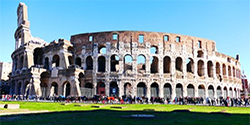
• Fast track entry Colosseum/ Roman Forum + Palatine Hill • 3-hour tour • Expert guide • Small group tour
Option 2 - Colosseum, Palatine Hill & Roman Forum walking tour with special access
With access to the Colosseum arena floor, the underground chambers and the third tier
Small groups of 12 people or fewer (select option after choosing date)
Departure times available morning or afternoon but limited availability
SKIP THE LINE: COLOSSEUM SMALL GROUP TOUR WITH ROMAN FORUM & PALATINE HILL WITH
Special access.
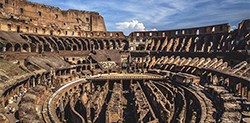
• Fast track entry Colosseum/ Roman Forum + Palatine Hill • With special access to higher levels & underground chambers • 3-hour tour
(Price shows after selecting date)
Ancient Rome walking tours including the Colosseum, Palatine Hill & Roman Forum
The Colosseum, Palatine Hill & Roman Forum are just one part of ancient Rome.
This tour also includes top icons the Pantheon and Piazza Navona (Roman circus).
On this small group tour with a maximum of 18 people you can be sure to have just the right amount of attention from your guide.
ANCIENT ROME WALKING TOUR + SKIP-THE-LINE COLOSSEUM
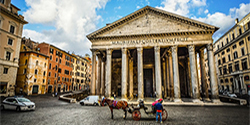
• Fast track entry Colosseum/ Roman Forum + Palatine Hill • Pantheon and Piazza Navona • Small group tour • Professional guide
MOST POPULAR ROME TOURS 2024
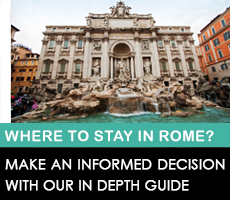
- Rome Attractions
- Roman Forum
- Plan Your Visit
- Guided Tours
- Vatican Museums
- St. Peter's Basilica
- Castel Sant Angelo
- Rome Pantheon
- Borghese Gallery
- Roman Catacombs Tour
- Bioparco Rome
- Big Bus Rome Hop-On Hop-Off Tickets
- Palazzo Barberini
- Musei Capitolini
- Leonardo da Vinci Museum
- Trevi Fountain Tours
- Roman Baths of Caracalla
- Palazzo Merulana
- Crypta Balbi
- Altare della Patria
- Rome Underground Tours
- Mamertine Prison
- Walking Tours
- Hop-On Hop-Off Tours
- Bikes & Segway
- Sightseeing Cruises
- Travel Guide
- Things to do
- Trip Planner
- Travel Tips
Expert Tips on Planning the Perfect Visit to the Roman Forum
Roman forum | visitor information at a glance.
- What are the Roman Forum opening hours? The Roman Forum hours are generally from 9 AM onwards, although the closing time depends on the time of year. Please check the timings while booking to get accurate information. Last entry is an hour before closing time.
- Where is the Roman Forum located? The Roman Forum is located in the heart of Rome, Italy. The adddress is Via della Salara Vecchia, 5/6, 00186 Roma RM, Italy. View on maps.
- How many entrances does the Roman Forum have? There are two main entrances to the Roman Forum: Via die Fori Imperiali and Via della Salara Vecchia. Additionally, there is the Palatine Hill entrance Via die San Gregorio.
- How many visitors does the Roman Forum see per year? Each year, the Roman Forum has approximately 3.5 millions visitors from all over the world to marvel at its monuments.
What are the Roman Forum Opening Hours?
27 March to 31 August 2023: 9 AM-7:15 PM. 1 October to 30 October: 9:30 AM-6:30 PM 31 October to 26 March: 9:30 AM-4:30 PM.
Last Entry: One hour before closing.
Closure: The Roman Forum is closed on December 25 and January 1.
NOTE: According to the month and season of the year, the Roman Forum extends or reduces its opening hours. Check the updated timings before making your visit.
What's The Best time to Visit the Roman Forum?
The best time to visit the Roman Forum is on weekdays during the shoulder seasons of spring (April to early June) and autumn (September to October). Weekdays generally offer fewer crowds compared to weekends, allowing for a more immersive experience. Arriving early in the morning when the gates open is ideal, as the site is quieter and the weather is pleasant.
During the high tourist season, from late spring to early autumn, weekends can get particularly busy, with larger crowds and longer wait times. For optimal conditions, consider visiting the Roman Forum on a weekday morning during the shoulder seasons. This timing strikes a balance between manageable crowds and comfortable weather, ensuring an enriching exploration of this ancient historical treasure.
Where is the Roman Forum Located?
Address: Via della Salara Vecchia, 5/6, 00186 Roma RM, Italy.
Find on maps.
The Roman Forum occupies a pivotal position in Rome, nestled between the Colosseum and Palatine Hill . Adjacent to the Colosseum, the Roman Forum extends along the valley between the Palatine and Capitoline Hills.
Closest Landmark: The Colosseum , 40m away.
Getting to the Roman Forum
By public transportation.
By Metro: Board the B line Metro from Roma Termini, Rome’s central station. From there, ride 10 minutes and disembark at the Colosseo stop. From there, the Roman Forum is less than 5 minutes away by walk.
By Bus: From the bus station outside Roma Termini, take the 64 or 75 bus that’s heading towards. Poerio/Mirandola. Get off at the Fori Imperiali/Campidoglio stop and walk to the Roman Forum.
By Tram: Trams 3 and 8 stop at Piazza del Colosseo, which is the closest stop to the Roman Forum. From there, the attraction is just 2 minutes away by walk.
If you’re driving, take the route Via Cavour which is the shortest. If you do choose to arrive Via Nazionale, be prepared for the tolls you might encounter en route.
Parking Facilities
Once you arrive at the Roman Forum, there are convenient paid parking options available nearby:
- Leave your car at Park Services Colosseum , a 24-hour parking space, a 7-minute walk from the Roman Forum.
- There are also garages nearby like the Roma Parcheggio Parking and Via Ostilia, 48 Garage , both of which are an 8-minute walk away.
Know Before You Go To the Roman Forum
There are two main entrances to the Roman Forum:
- Via die Fori Imperiali: This is the main entrance along the Via die Fori Imperiali road between the Colosseum and Piazza Venezia.
- Via della Salara Vecchia: This is the other entrance that runs parallel to Via die Fori Imperiali.
- You can also enter the Roman Forum through Palatine Hill Via die San Gregorio , which is usually the least crowded entrance.
- Drinking fountains
While there is an elevator at the entrance that takes you down to the ruins, only about 20% of the Roman Forum is wheelchair accessible upon descent. As it is an ancient structure, many places have large gaps between the stones, making it difficult for wheels to pass over. Hence, the Roman Forum is not the most wheelchair-friendly tourist destination in Rome.
- If you are travelling with babies, it is best to carry them on a sling or carrier as stroller rides can get bumpy due to the uneven terrain.
- With young children, the Forum is best visited first thing in the morning or just before closing time (especially in summer), when the temperatures are likely to be more pleasant.
- Do carry a water bottle and some snacks are there are no eateries inside the Roman Forum.
- Children are also encouraged to use sun block, wear a hat and comfortable shoes.
- Booking online is highly recommended as you can grab the best deals.
- Arriving at the Roman Forum via the Palatine Hill entrance can help you beat some of the entry traffic.
- Wear comfortable shoes to make your experience hassle-free and enjoyable.
- Opt for guided tours to understand the attraction better and grasp its significance in full. In summer, carry sunscreen and a hat.
- Buy combo tickets that also grant you access to the Palatine Hill and the Colosseum .
- While clicking pictures inside the Roman Forum is allowed, tripods are not permitted for use inside the ruins.
- Carry a water bottle and some light snacks to keep your energy up, especially if you’re visiting in summer. However, dispose your trash appropriately as littering will not be tolerated.
- Trattoria Luzzi: This restaurant is a good option to enjoy pizza and Italian fare. Trattoria Luzzi is open every day from 12 PM to 12 AM. It is just a 7-minute walk away from the Roman Forum.
- La Taverna dei Quaranta: To tuck into hearty Roman fare and authentic pizzas, look no further than this La Taverna dei Quaranta . This restaurant is 5 minutes by walk from the Roman Forum.
- TreCaffe Bistro: Slightly further away and a 16 minute walk from the Forum is the charming cafe that’s perfect for your caffeine fix.
Palazzo Montemartini , 2.2 km away from the Roman Forum
Hotel Capo d’Africa , 550m away from the Roman Forum by walk
Hotel Centro Cavour , 600m from the attraction on foot
- Basilica di Santa Maria Maggiore: This magnificent basilica showcases intricate mosaics and Byzantine art.
- Jewish Ghetto: One of the free things you can do in Rome , visit the charming district with Jewish heritage. It features traditional eateries, synagogues, and a glimpse into Rome's multicultural history.
- Circus Maximus: Ancient chariot racing stadium, Circus Maximus offers a vast open space to imagine ancient spectacles and enjoy a leisurely stroll.
- Arch of Constantine: Monumental triumphal arch commemorating Emperor Constantine's victory, adorned with intricate reliefs, a testament to Roman artistry.
Frequently Asked Questions About Visiting the Roman Forum
The Roman Forum generally opens around 9 AM and closes by 7:15 PM. But these timings can vary according to the time of year. Check here for detailed information on Roman Forum hours .
The Roman Forum is usually less busy on weekday mornings. Going late in the afternoon also helps avoid the visitor surge. Peak season (April to August) has longer wait times and is busier.
To get a good understanding of the Roman Forum, it is recommended that visitors spend at least an hour inside the attraction. However, if you want to explore in depth, 2-3 hours can give you comprehensive insights into these ruins.
No, once you leave the Roman Forum, you cannot revisit the attraction with the same ticket.
Located in Rome’s city centre, the Roman Forum address is Via della Salara Vecchia, 5/6, 00186 Roma RM, Italy.
Using public transport to visit the Roman Forum is strongly suggested. Take the 64 or 75 bus from the Roma Termini station and get down at the Fori Imperiali/Campidoglio stop, which is a 100-odd metres from the Roman Forum. Alternatively, take the B line Metro from Roma Termini and disembark at the Colosseo stop, which is 2 minutes away from the Roman Forum on foot. Trams 3 and 8 also stop near the Roman Forum. If you choose to drive, there are paid parking spaces available near the Roman Forum like Park Services Colosseum and the Roma Parcheggio Parking .
There are two main entrances to the Roman Forum, the Via die Fori Imperiali between the Colosseum and Piazza Venezia, and the Via della Salara Vecchia which is parallel to Via die Fori Imperiali. You can also enter the Roman Forum through Palatine Hill Via die San Gregorio, which is usually the least crowded entrance.
Since the Roman Forum is now a site of ruins and spread across uneven terrain, only certain portions of it are wheelchair navigable. The Roman Forum has not yet been made a fully wheelchair-friendly tourist attraction.
Yes, prams are permitted inside the Roman Forum. However, since only certain portions of the Roman Forum are paved, it can become difficult to navigate major portions of this attraction on wheels.
While there is no strict dress code to be adhered to at the Roman Forum, dressing per the time of year and wearing comfortable shoes is highly advised.
Yes, do feel free to click as many pictures as you’d like inside the Roman Forum. However, tripods are forbidden from being used inside this site.
Bringing your own water bottle to the Roman Forum is suggested. Bottles can be refilled from water fountains present across the site. You may also carry light snacks to the Roman Forum, especially since the Roman Forum does not have a built-in cafeteria.
Booking tickets online is highly recommended before your visit to the Roman Forum.
A flexible entry ticket to the Roman Forum and Palatine Hill starts at €19. Combo tickets, guided tours, etc. are priced differently as per their offerings and inclusions.
Opening Hours
- TAXI FARES CALCULATOR
- BOOK PRIVATE TOUR
- Hotels near Termini
- 3 Star Hotels
- 4 Star Hotels
- 5 Star Hotels
- Apartments For Rent
- Best Hostels
- Hotels near the Colloseum
- Fiumicino Airport
- Ciampino Airport
- Termini Railway Station
- To Florence
- To Ostia Antica
- Famous Roman Dishes
- Best Pizza Places
- Best Pasta Places
- Local Italian Food
- Best Gelato Places
- Best Rooftop Bars
- Sistine Chapel
- Vatican Museums
- Borghese Gallery
- Roman Forum
- Trevi Fountain
- Spanish Steps
- Castel Sant’Angelo
- Navona Square
- Ancient Sites and Ruins
- Galleries and Museums
- Parks and Gardens
- Squares and Fountains
- Beaches near Rome
- To Alberobello
- How to Choose a Hotel in Rome
- 2025 Pilgrims of Hope Jubilee
- Rainy Days in Rome
- What to See in 3 days
- Buying a Sim Card in Italy
- Tickets to Vatican museums
- Renting a Car in Rome
- Apps for Tourists
- Souvenirs from Rome
- Free Things to Do
- Unusual Things to do
- Public Transport
- Italian food and wine
- Sightseeing Tour at Sunrise
- Sightseeing Tour by Car
- St Peter’s Basilica
- Colosseum & Roman Forum
- Campo Marzio
- Jewish Ghetto Quarters
- Quartiere Coppedè
- Sant’Eustachio
- Marcus Aurelius
- Gaius Julius Caesar
- Octavian Augustus
Roman Forum – Ultimate Guide for Antic History Lovers
Written by: Artur Jakucewicz Rome Holiday Planning Expert
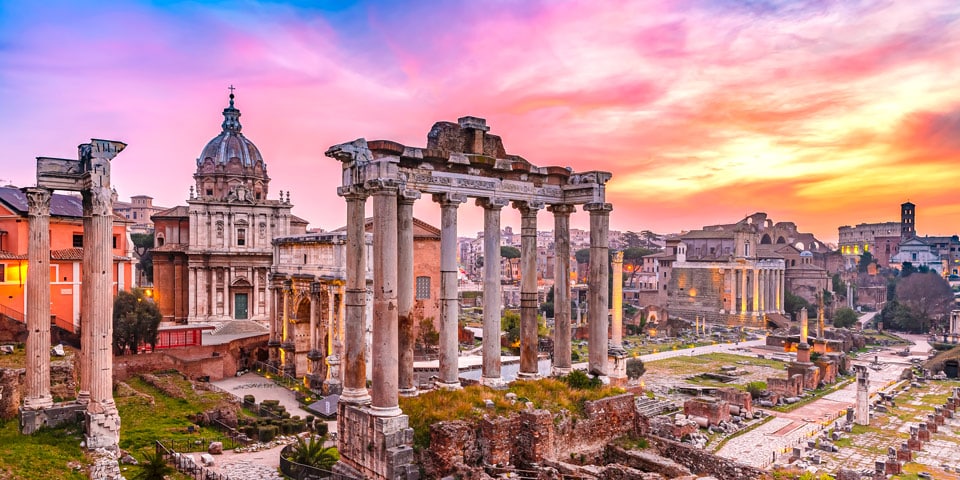
22318 views
The Roman Forum (Foro Romano) was the center of civic and economic life in Republican times and the Imperial period. The Via Sacra crossed the site, which led to the Capitoline Hill and served as the route of the triumphal parades of victorious generals laden with loot and accompanied by rows of prisoners.
According to historians, people first began publicity meeting in the open-air Forum around 500 BC.
The Roman Forum area housed many important religious, political, and social activities and was home to many ancient temples, statues, and monuments. Nowadays, it is considered one of the most famous tourist sites globally, attracting more than 4.5 million visitors annually. Previously, there was the ancient former royal residence, the Regia from 8 century BC, the Temple of Vesta from 7 century BC, and the complex of the Vestal Virgins.
However, these structures were reconstructed after the rise of imperial Rome. In 179 BC, the new Basilica Aemilia was created, and all judicial activity moved there. One hundred thirty years later, Julius Caesar built the Basilica Julia and Curia Julia, so both judicial offices and the Senate became based there.
People gathered on the Forum for commercial, political, judicial, and religious aims
Later, the Forum Romanum was extended with structures such as the Trajan’s Forum and the Basilica Ulpia. Finally, the last construction was finished on this site in 312 by Constantine the Great , and it was the Basilica of Maxentius.
Tickets and Opening Hours
If you are going to visit the Roman Forum, one of the most ancient and essential sites of Rome, you will need to buy an entrance ticket, which includes a visit to the Colosseum and Palatine hill . But, of course, the best option is to book an individual guided tour to discover Roman Forum statues, buildings, and monuments, remainings of ancient palaces on the Palatine hill, innovative structures inside the Flavian Amphitheater, and recognize interesting historical facts about ancient Rome. Also, Colosseum to Roman Forum walking tours can skip the line with the same ticket price.
Things to Know Before Visiting the Roman Forum on Your Own
How long does it take to visit the roman forum, how to enter the roman forum, what to see in the roman forum, how far is the roman forum from the colosseum, what time does the roman forum close, what are roman forum and palatine hill, how much does it cost to visit the roman forum.
- The entrance fee is 18 euros per person, and the ticket is valid for 48 hours.
- Visiting the Roman Forum is better in the morning, so you will not spend time in queues.
- From January 2 to February 15, the amphitheater, Roman Forum, and Palatine hill timings are from 8.30 am to 4.30 pm, with the last admission at 3.30 pm.
- From February 16 to March 15 from 8.30 am until 5 pm with the last admission at 4 pm.
- From March 16 until last Saturday of March from 8.30 am until 5.30 pm with the last admission at 4.30 pm.
- From the last Sunday of March to August 31, visiting hours are from 8.30 am until 7.15 pm, with the last admission at 6.15 pm.
- From September 1 to September 30, from 8.30 am to 7 pm, the last admission is at 6 pm.
- From October 1 to the last Saturday of October, opening hours are from 8.30 am to 6.30 pm, with the last admission at 5.30 pm.
- From the last Sunday in October to December 31 from 8.30 am to 4.30 pm, the last admission at 3.30 pm.
- Holidays are Christmas Day and New Year’s Day.
- Entrance: Via di S. Gregorio, 30
- You can purchase tickets online with the same admission fee + 2 euros for the reservation here.
- Also, you can download the Roman Forum app or audio guide (the audio guide is also available at the ticket office for additional 5 euros)
- A night group tour is available every year from May 5 until October 28 , where you can enjoy the Forum without crowds of tourists. It costs 20 euros per person with a reduced entry price of 18 euro
- If you have more free time, don’t miss an opportunity to visit the most ancient museum in the world with essential artifacts of Roman Forum excavations – the Capitoline Museums
- Ticket offices location: from Palatine Hill located in Via San Gregorio 30; Piazza Santa Maria Nova 53
- Here’s the map of the Roman Forum:
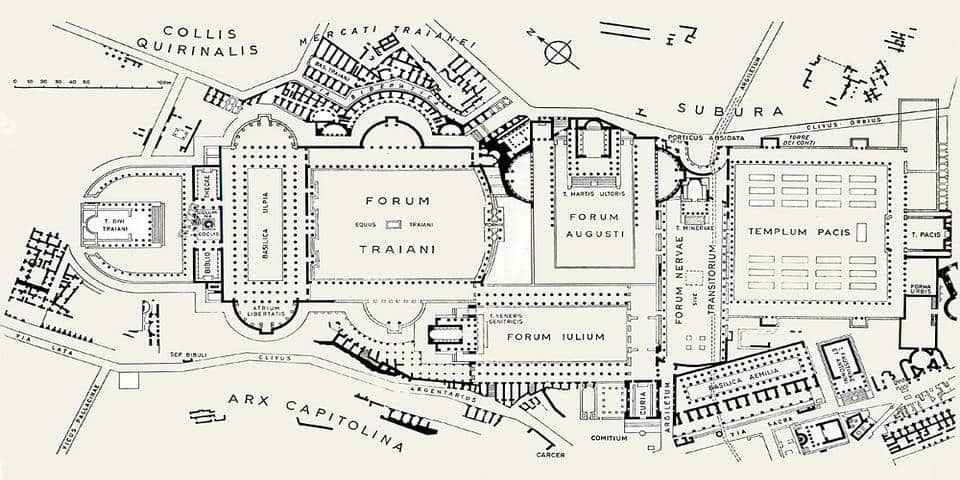
Visiting Roman Forum with Kids
- It is really hot in Rome on summer days, so it is better to visit the Forum in the morning or in the late afternoon since it is an open-air area under the sun.
- Please bring a water bottle and snacks for children since there are no shops on its territory.
- A sling or a baby carrier is better, don’t forget about the cobbled streets of ancient Rome.
- Don’t worry; Colosseum, Roman Forum, and Palatine hill are spacious and exciting for children.
- Wear comfortable shoes.
10 Interesting Facts about Roman Forum
Equip yourself with these fascinating insights about the Roman Forum, guaranteed to enrich your visit and impress your companions with your historical acumen.
- Speakers in ancient Rome stood on a sizable platform known as the rostra, facing the north side of the comitium towards the Senate. This vantage point was symbolic, demonstrating the speaker’s authority and the respect commanded by the Senate, the epicenter of Roman legislative power.
- In a bid to enhance the spectator experience during public games, in 318 BC, Gaius Maenius introduced balconies, known as maeniana, to the forum buildings. This architectural innovation offered spectators a better view and embodied the spirit of Roman communal experiences.
- The first basilica ever constructed in the Forum vicinity was the Basilica Fulvia in 184 BC. This monument set a trend for Rome’s public buildings, combining Greek and Roman architectural features. Mere nine years later, the Basilica Sempronia emerged, testifying to the rapid development of the Forum.
- Not far from the bustling Forum lay the Tullianum, the state prison of ancient Rome. As a symbol of Roman law and order, this somber structure housed many notable prisoners, adding a poignant note to the grandeur of the nearby Forum.
- The structures of the Roman Forum aren’t just ruins; they represent some of the principal architectural masterpieces in the history of the world. Their enduring design, despite centuries of decay, showcases the profound impact of Roman civilization on global architecture.
- Stretching across an expansive area of 250 by 170 meters (or 820 by 560 feet), the Roman Forum was a testament to Rome’s architectural prowess and the significance it placed on public spaces for civic life.
- Over the centuries, the Roman Forum was not a product of a single architectural vision, but a gradually developed space. Each epoch added its layers, creating a complex landscape of buildings and monuments that encapsulated Rome’s evolving history.
- The last major territorial expansion of the Forum occurred during the reign of Constantine the Great . This period saw the Forum reach its zenith in size and architectural grandeur, reflecting the high point of the Roman Empire.
- Incredibly, archeological excavations of the Roman Forum continue even today. Each new dig peels back the layers of history, revealing more about the Roman civilization and the life that thrummed in this central civic space.
- Even though the Roman Forum was the most prominent, Rome was dotted with several other forums. These forums catered to the city’s growing administrative needs and population, embodying the scale and complexity of Rome’s urban planning.
Here’s a 3D Model of the Forum:
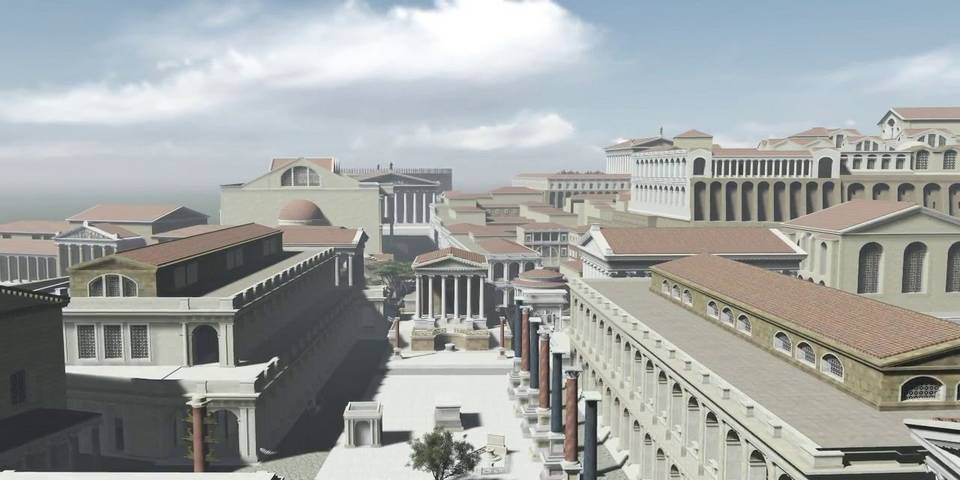
The History of the Roman Forum
The Roman Forum was developed gradually over the centuries. Initially, its site was a lake with waters from the surrounding hills. Consequently, it was drained in the 7th century BC by the Tarquins with the building of Cloaca Maxima. Finally, it was a vast covered sewer system connected to the Tiber River . Historically, the creation of the Forum is related to Romulus, the first king of Rome, who lived on the Palatine Hill , and his rival, Titus Tatius, who lived on the Capitoline Hill. An alliance between them appeared after the cries of the Sabine women had stopped combat. Moreover, the Forum was outside the walls of the Sabine fortress, located through the Porta Saturni. However, these walls were destroyed when two folks became joined.
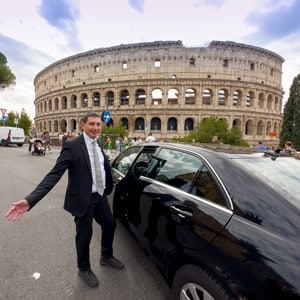
Fix price transfer from the Fiumicino Airport to Rome
Rome’s second king, Numa Pompilius (715-673 BC), began Vesta’s cult. Thus, the house and Temple of Vesta were created along with the city’s first royal palace, the Regia. The following king, Tullus Hostilius (r. 673-642 BC), made the borders of the Comitium and became the place where the Senate would meet. During the Republican period, all judicial and political issues in the city were still solved there. Therefore, the Senate decided to expand the open area between the Comitium and the Temple of Vesta to create more space. Previously, private houses covered this area, but the Senate bought them and made them for public use.
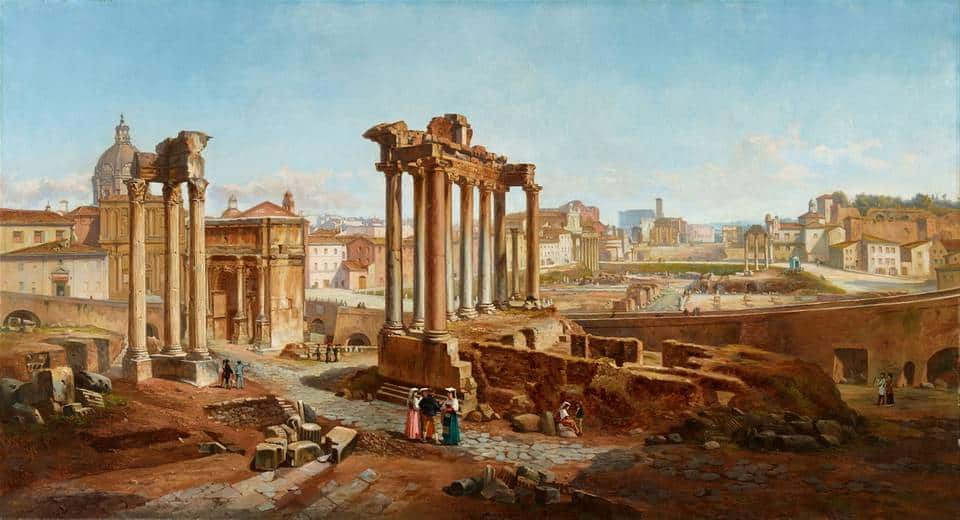
Earliest Forum temples are The Temple of Saturn (497 BC) and The Temple of Castor and Pollux (484 BC), while the first basilicas were built in 184 BC by Marcus Porcius Cato
The 80s BC was the period of the dictatorship of Sulla, and many works were done on the reconstruction of the Forum. Consequently, the Comitium was lost because of the increase of Curia and changes made by Julius Caesar until his assassination in 44 BC. The same year, Marc Antony’s funeral oration for Caesar from the New Rostra and the public burning of Caesar’s body on the site in front of the Rostra. Later, the Temple to the Deified Caesar was built by his great-nephew Octavius ( Augustus ), who became the first Emperor of the Roman Empire. Moreover, after Caesar’s death, Augustus finished the projects of his uncle, so the Forum acquired its final form. Such structures as the Temple of Divus Iulius and the Arch of Augustus were added in 29 BC.
In 110 AD, the Trajan’s Forum was built. Thus, many economic and judicial activities transferred to the Basilica Ulpia. Also, the Arch of Septimius Severus was added near Capitoline Hill , which commemorated the Parthian victories of Emperor Septimius Severus and his two sons. Later, Emperor Diocletian (r. 284-305) was the last who reorganized and refurbished the Forum. He added a renewed Temple of Saturn, the Temple of Vesta, and the Curia. Since the previous version of Curia was burned, the one built by Diocletian can still be seen today. Notably, during the reign of Constantine the Great, the Basilica of Maxentius was completed in 312 AD, which became the last major expansion of the territory of the Forum. The political focus was moved to the Forum until the fall of the Western Roman Empire almost two centuries later.
Read also about Triumphal Arch of Constantine
Medieval Period
The Medieval period is notable for the dramatic decrease in Roman population: from 750-800.000 to 450.000 in 450 to 250.000 by 500 AD.
Moreover, in the 6th century, some of the old structures located on the territory of the Forum began to be transformed into Christian churches. In 608, the Column of Phocas was erected near the Rostra, dedicated in honor of the Eastern Roman Emperor Phocas. It was the last monumental addition made to the Roman Forum. Later, by the 8th century, the whole area was surrounded by Christian churches. Many structures were dismantled, recreated, and used to construct castles and feudal towers. In the 13th century, these constructions were torn down, so the area became a dumping ground.
The Roman Forum includes existing and former buildings, memorials, and other essential structures from its 1.400 years of active use (8th century BC – 600 AD).
Temple of Saturn
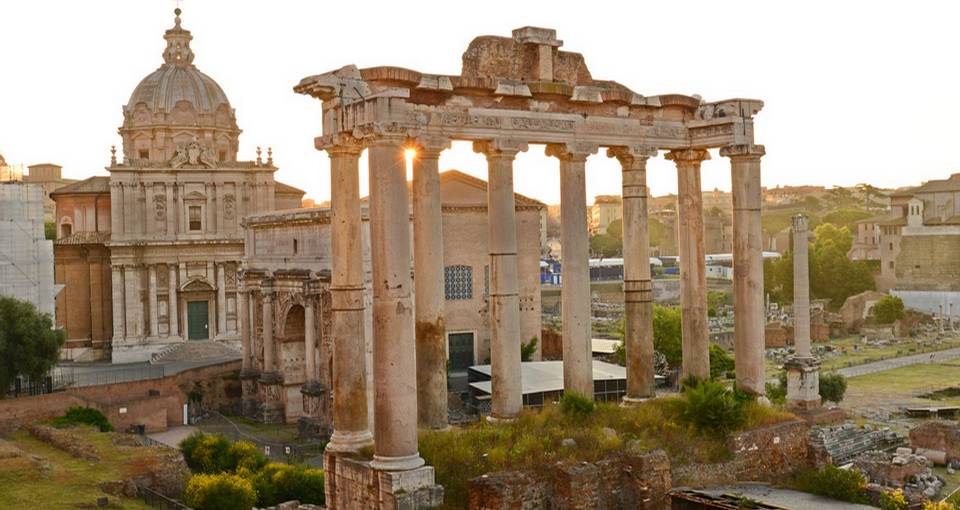
The Temple of Saturn (Tempio di Saturno) was an ancient Roman Temple dedicated in honor of the god Saturn. It stands near Capitoline hill. It is said that the Temple was built in 497 BC. Even today, you can see the inscription on its pediment: “Senatus Populusque Romanus incendio consumption restitute,” meaning “The Senate and People of Rome restored (the temple) consumed by fire.” Moreover, Saturn ruled during the Golden Age in Roman mythology and was always associated with wealth. Thus, his Temple housed the treasury (aerarium) with the Republic’s reserves of gold and silver . However, the aerarium was later moved to the nearby Tabularium, the building with all essential archives.
Temple of Vesta
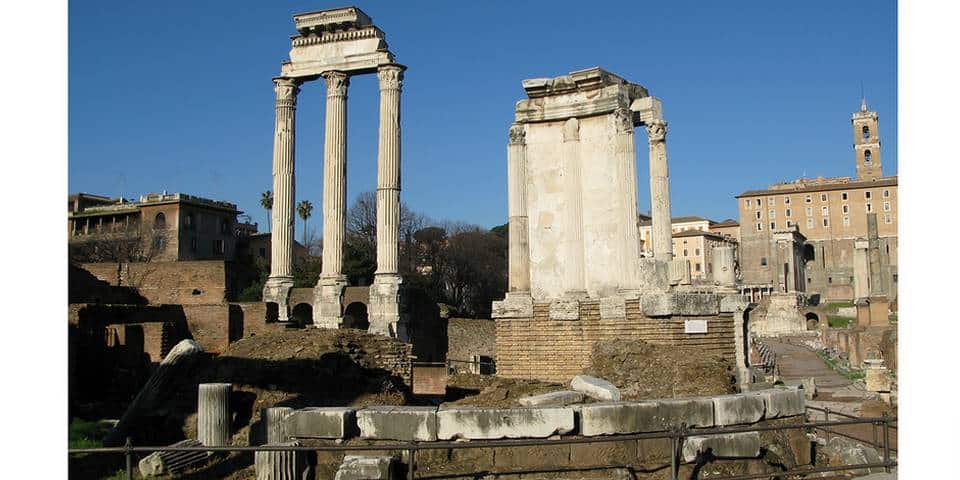
The Temple of Vesta (Tempio di Vesta) was an ancient building near the Regia and the House of the Vestal Virgins in the Roman Forum. It had Greek architecture with twenty Corinthian columns, marble, and a central cella with a famous circular footprint. In addition, all temples to Vesta were round with entrances facing east. It symbolized the connection between Vesta’s fire and the sun as sources of life. The Temple of Vesta dates to the 7th century BC, and it is believed that Numa Pompilius constructed it.
Temple of Jupiter
The Temple of Jupiter Stator is a former sanctuary on the slope of Capitoline Hill. According to the legend, Romulus founded it after he promised to construct it during a battle between Romans and Sabines. On the battle spot, Romulus founded the Temple, probably near the Porta. However, the Temple was destroyed in the Great Fire of Rome in 64 AD.
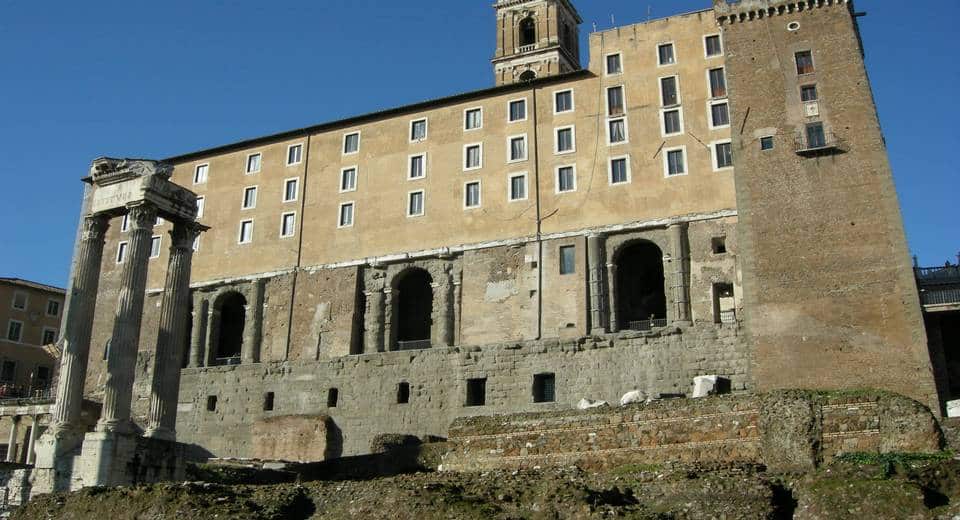
The Tabularium was the records office with laws and official deeds of ancient Rome with offices of many city officials. Located near the Capitoline hill, below the Temple of Jupiter, and with the Temples of Vespasian and Concord in front of it, the Tabularium’s construction was ordered around 78 BC by the dictator Lucius Cornelius Sulla. However, it was completed by Quintus Lutatius Catulus, who was consul in 78 BC. In the Middle Ages, a fortress was built over the remaining part of the Tabularium, which was later transformed into the Palazzo Senatorio. Thus, the construction has been adopted for the city’s administration activities since then.
Arches were an architectural invention throughout the period of the Roman Empire. Moreover, triumphal arches were used to celebrate victories of wars.
Arch of Titus
The Arch of Titus (Arco di Tito) is a 1st-century triumphal arch located on Via Sacra. It was built in 82 AD by Emperor Domitian after the death of his older brother Titus . The arch commemorates the victories of the Emperor, including the Siege of Jerusalem in 70 AD.
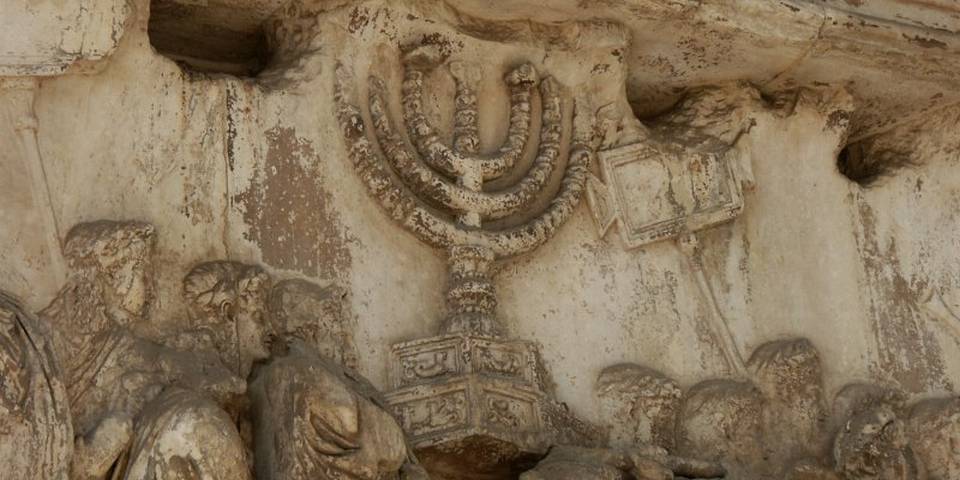
The arch served as the model for many triumphal arches in the world that were erected in the 16th century. Also, the inspiration for the Arc de Triomphe in Paris was taken from the Arch of Titus
The Arch of Titus symbolizes the Jewish diaspora. The menorah depicted on it was the model for the menorah used on the emblem of the state of Israel.
Arch of Septimius Severus
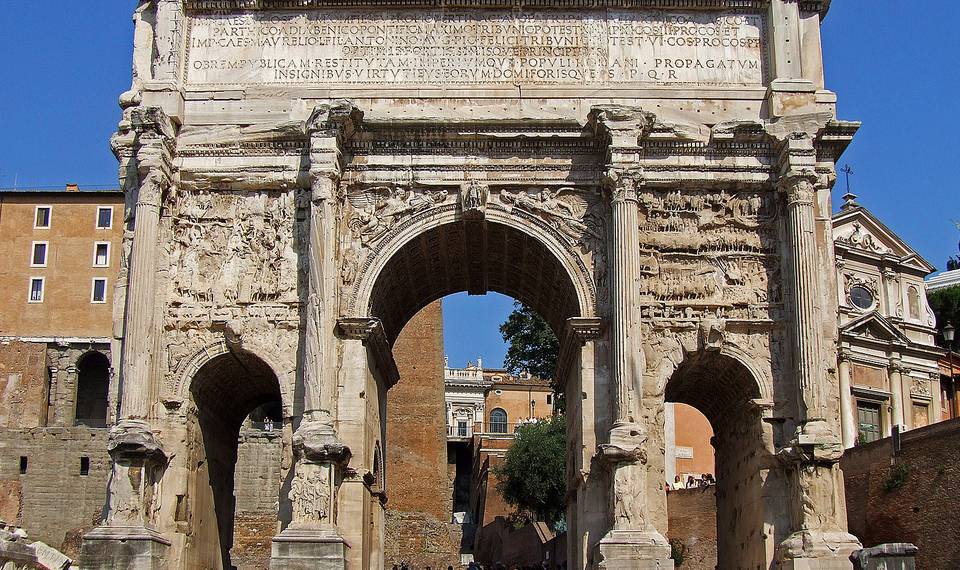
The Arch of Septimius Severus (Arco di Settimio Severo) is a white marble triumphal arch constructed in 203 to commemorate the Parthian victories of emperor Septimius Severus and his sons Caracalla and Geta. After the death of the Emperor, his sons became emperors, but Caracalla had Geta assassinated in 212. Moreover, all Geta’s memorials were destroyed. The arch was made from travertine with dimensions of about 23 meters in height and 25 meters in width. There were two sets of reliefs: the first with four large panels on each side of the attic, while the second with eight panels set into the inner side of the four archways.
Read about Main Attractions in Rome .
Frequent Questions about the Roman Forum
Embark on an intellectual challenge and measure the depth of your understanding of the Roman Forum. Below, a series of carefully curated questions and insightful answers await—indispensable knowledge for every true connoisseur of antiquity.
Who built the Roman Forum?
Why is the roman forum important, what was the roman forum built for, why did rome have multiple forums, is the roman forum worth visiting, how was the roman forum destroyed, why is the roman forum in ruins, how many years old is the roman forum, where to stay near the roman forum – the best hotels and apartments.
Feast your eyes upon our editorially handpicked collection of the finest accommodations near the Roman Forum. Each, renowned for their exemplary service and enviable location, serves as a perfect base for delving into the myriad wonders of the Eternal City.
Palm Suites Luxury Hotel
Palm Suites Luxury Hotel , positioned in the heart of Rome, is an embodiment of luxury and homeliness.
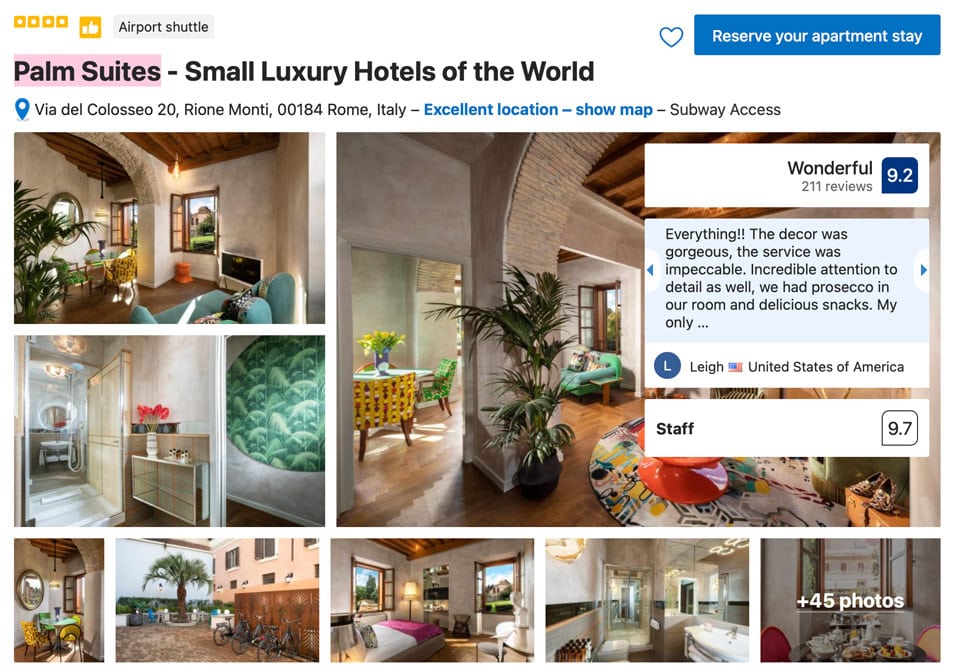
Praise for this property centers around its exceptional location, a stone’s throw from the Colosseum and major attractions. Commendations for the warm, dedicated staff are frequent, with their customer service drawing particular appreciation. The rooms are spacious, clean, and well-equipped, providing a peaceful oasis amidst the bustle. The high-quality fittings, excellent breakfast offerings, and responsive service make Palm Suites a top recommendation for travelers.
The Inn at the Roman Forum
The Inn at the Roman Forum , nestled in ancient Rome, captivates with its intimate charm, historical setting, and impeccable service.
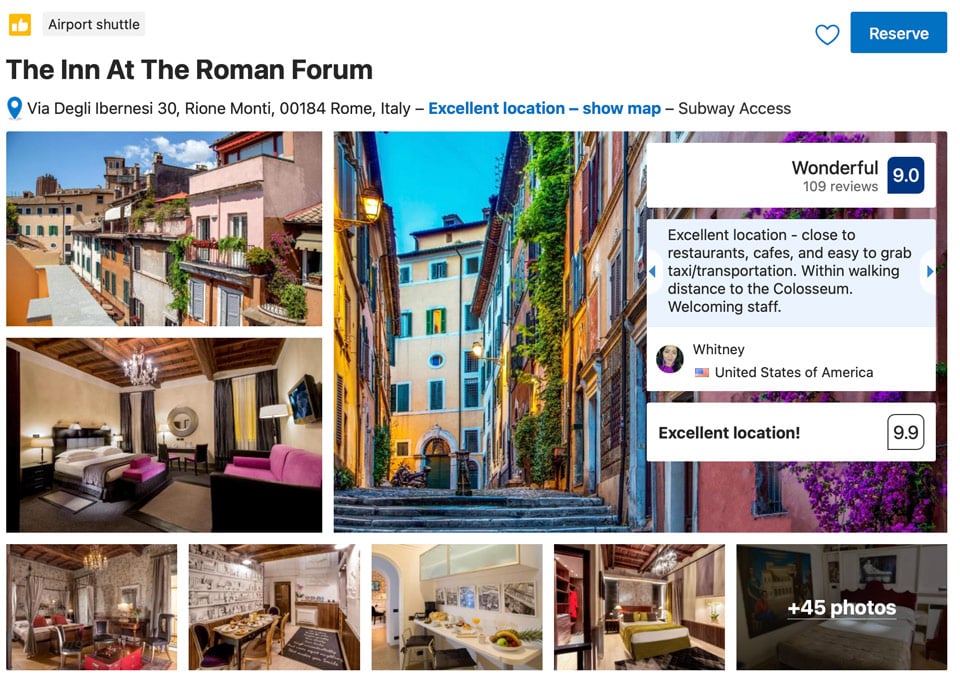
Guests are charmed by the warm, personalized interactions with staff, making them feel like family. Unforgettable experiences include breakfast with a Roman Forum view and the unique experience of onsite ruins. The property’s central location offers easy access to sights, restaurants, and amenities. Its spacious, tastefully decorated rooms and exceptional staff amplify the feeling of an exclusive retreat in the heart of the Eternal City.
Foro Romano Luxury Suites
Foro Romano Luxury Suites, a stone’s throw from the Roman Forum, offers a serene yet central location.
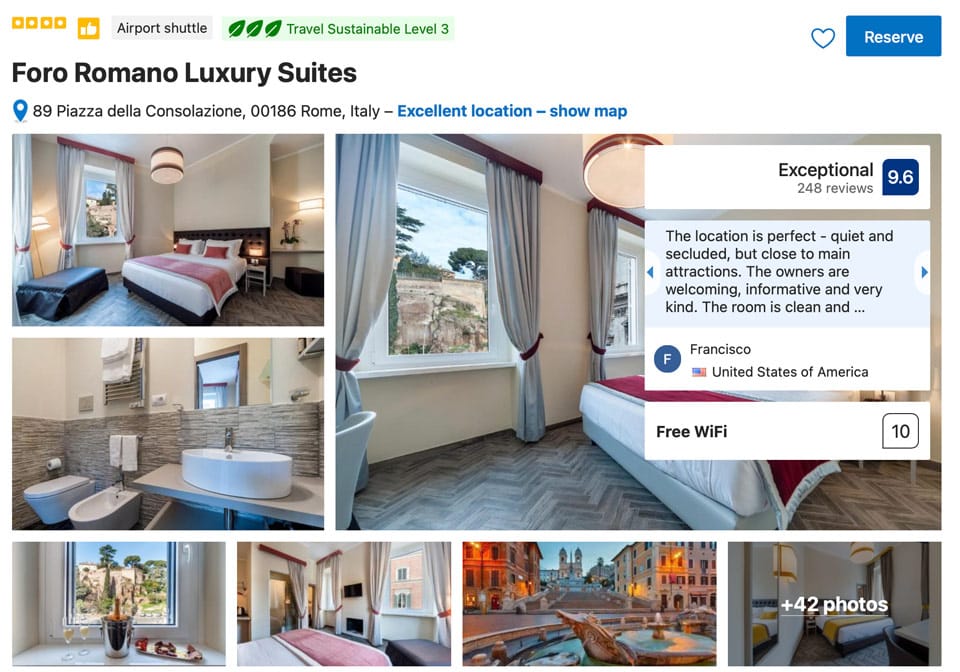
Praised for their friendly and helpful hosts, this property boasts immaculate, cozy rooms with modern amenities, including free WiFi. Guests are thrilled by the excellent hospitality, making special mention of personalized services like dinner reservations and tour bookings. Nearby dining options and notable attractions enrich the locale. It’s highly recommended for its comfortable beds and commendable cleanliness.
Romano Boutique Hotel
Situated between iconic landmarks, Romano Boutique Hotel offers a unique charm with its one-of-a-kind rooms in a historic building.
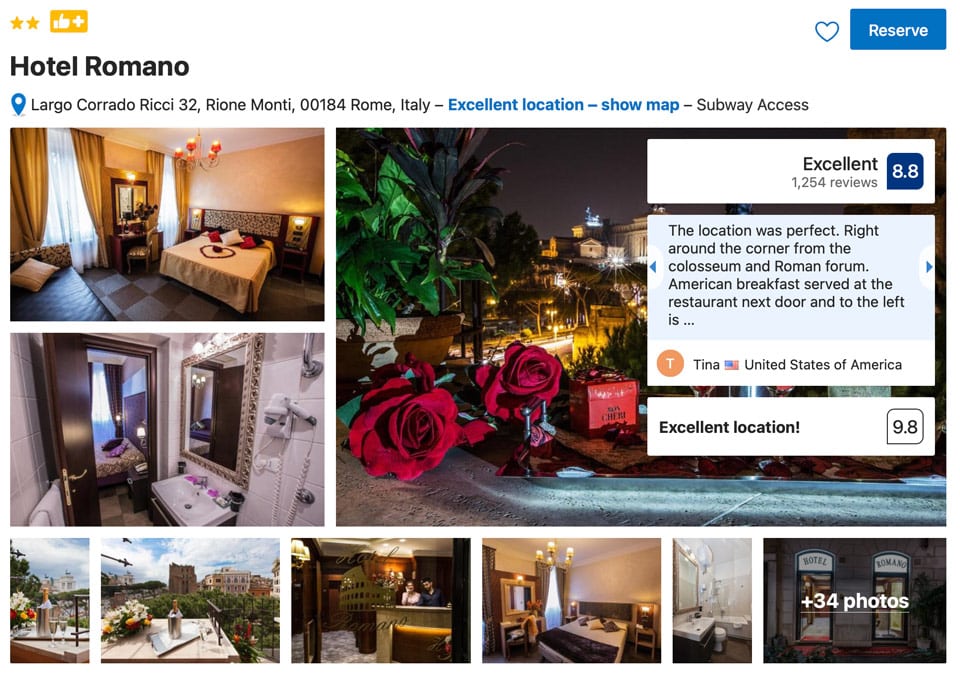
Despite the compact nature of the rooms, which is common across Europe, the hotel garners praise for its comfort, cleanliness, and soundproofing. The locale’s safety and proximity to major attractions like the Colosseum, along with the excellent customer service, particularly the helpful and friendly staff, make it a cherished choice. The hotel’s value is further enhanced by conveniences like nearby dining options and discounted breakfast.
Elegant Apartment Behind the Colosseum
The Elegant Apartment Behind the Colosseum is praised for its unbeatable location, mere steps from the Roman Forum and Colosseum.
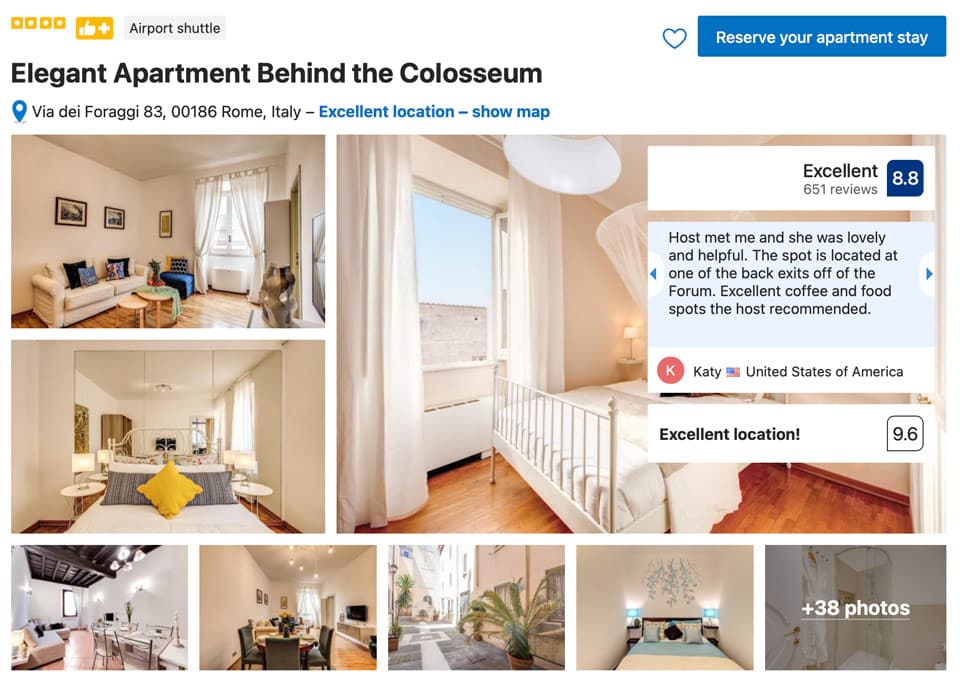
Guests appreciate the nearby amenities and the comfortable, fully-equipped space with efficient heating and a welcoming atmosphere. The attentive host receives accolades for their exceptional service, including tailored recommendations, transportation assistance, and constant communication. Notable features include the rooftop terrace, and the apartment’s ability to offer a true Roman living experience.
Madonna dei Monti
Madonna dei Monti – beautiful accommodations only 1.1 km from the Colosseum and the Forum.
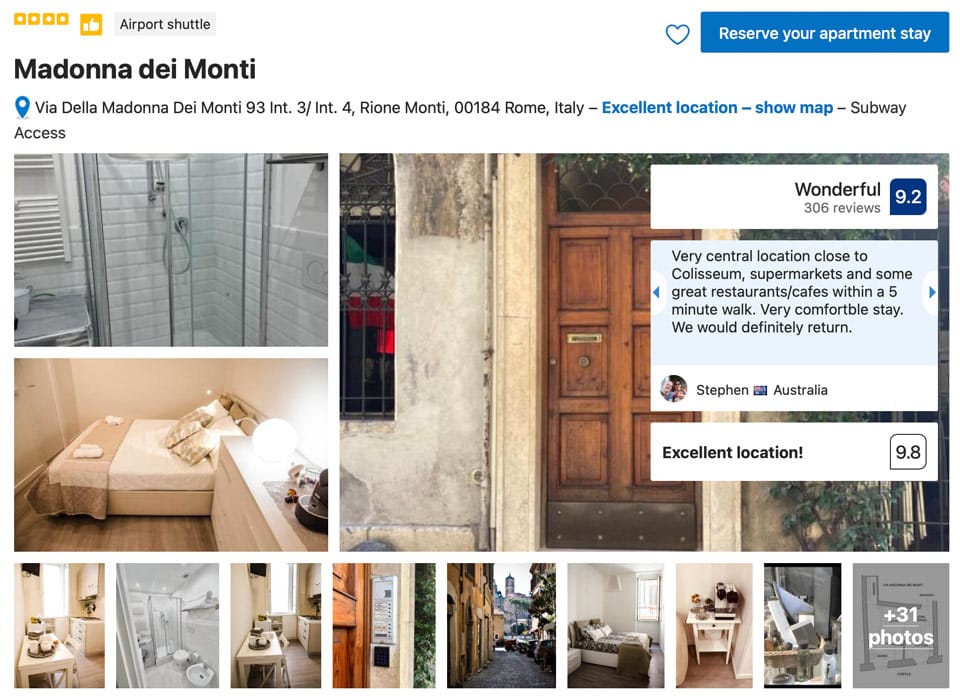
Free wi-fi, a private bathroom, coffee machine, electric teapot, flat-screen TV, and other amenities. Living in this area of Rome is very convenient for travelers interested in food, history, and architecture.
The Inn At The Roman Forum
The Inn at the Roman Forum – has fantastic reviews from its visitors. It is located in the heart of ancient Rome within walking distance of the Colosseum and Roman Forum.
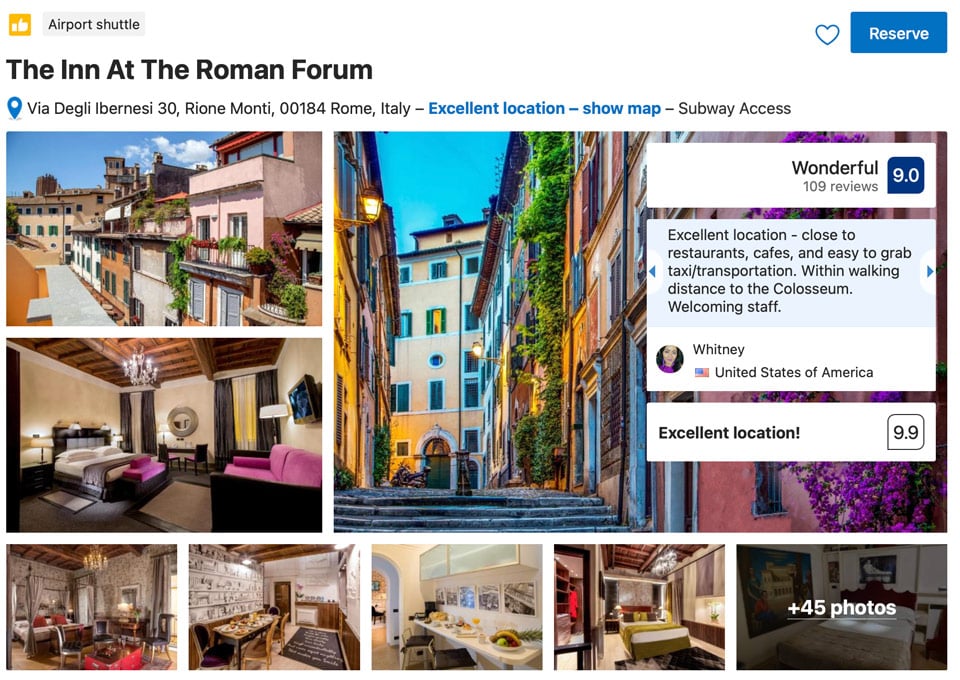
Moreover, it houses ruins inside the property. There are modern rooms, and a rich breakfast is offered every morning. Also, travelers love this hotel for its location, service, and spacious and clean rooms.
Have you ever visited the Roman Forum and Colosseum? Tell us about your experience in the comments! 🙂
Nearby Attractions
Author: Artur Jakucewicz Rome Holiday Planning Expert
I have lived in Rome for over 10 years and am glad to share my experience and knowledge. I love ancient history and architecture — author of travel guides in Italy for independent travelers.
Dive Deeper into Rome's Stories
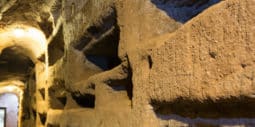
The Catacombs of St. Callixtus
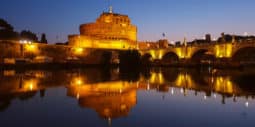
16424 views
Castel Sant’Angelo in Rome
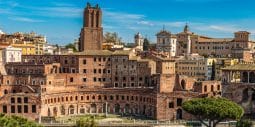
Trajan’s Market
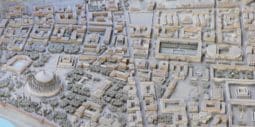
11870 views
Field of Mars in Rome (Campus Martius)
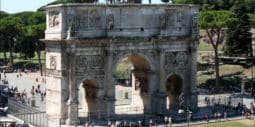
14638 views
Triumphal Arch of Constantine
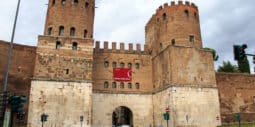
21259 views
The Aurelian Walls
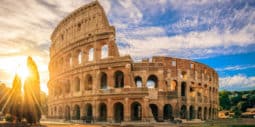
104459 views
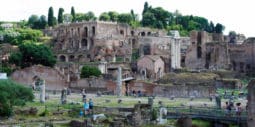
10577 views
Palatine Hill
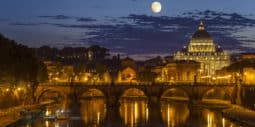
31018 views
The Tiber River in Rome
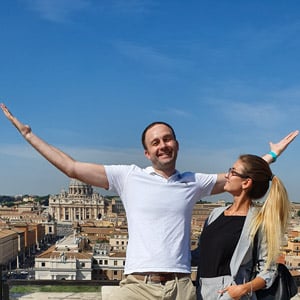
Read more about Rome

11797 views
Romulus Augustulus

10933 views
Rome Cat Sanctuary Ruins – Largo di Torre Argentina

37087 views
Emperor Domitian
Rome.us © 2024. Created with love by Roman experts and guides.
Privacy Policy
Roman Forum Romanum & Palatine Hill
Visit the roman forum and palatine hill in rome - tours & tickets.

Do you need tickets the Forum Romanum in Rome? Useful info, opening hours, guided tours and entrance tickets for visiting the Roman excavations of the Forum Romanum, Palatine hill and Colosseum.
Forum Romanum or the 'Roman Forum'
It was not until the 19th century that excavations of the centre of the Roman empire at the base of the Capitol finally began. During the reign of emperor Augustus (27 BCE – 14 CE), ancient Rome was already home to over a million Romans, and the Forum Romanum was the political, legal and religious centre of the Roman Empire.
During your visit, you walk by the many ruins of the Forum Romanum . Unfortunately, many buildings were damaged by earthquakes and plundering after the 7th century, but also by construction of palaces and churches such as St. Peter’s Basilica . However, the excavations can still tell you a lot about the history of the Roman Empire and no trip to Rome would be complete without a visit to the Forum Romanum.
Visit the ancient center of Rome
You get to the Forum Romanum via the Via Sacra , the oldest and most famous road in Rome. The name ‘Sacred street’ is derived from the many temples and other holy sites that lined this street. Examples are the round Temple of Vesta, the Temple of Saturn, the basilica of Maxentius, and the official residences of the pontifex maximus, the arch of Septimus Severus and the rex sacrorum. You will also see the remains of arches, the speaker's platform, market halls and much more. Tip: Capitoline hill offers a magnificent view of the Roman Forum , giving you a good overview of the whole. It even has lovely lighting at night.
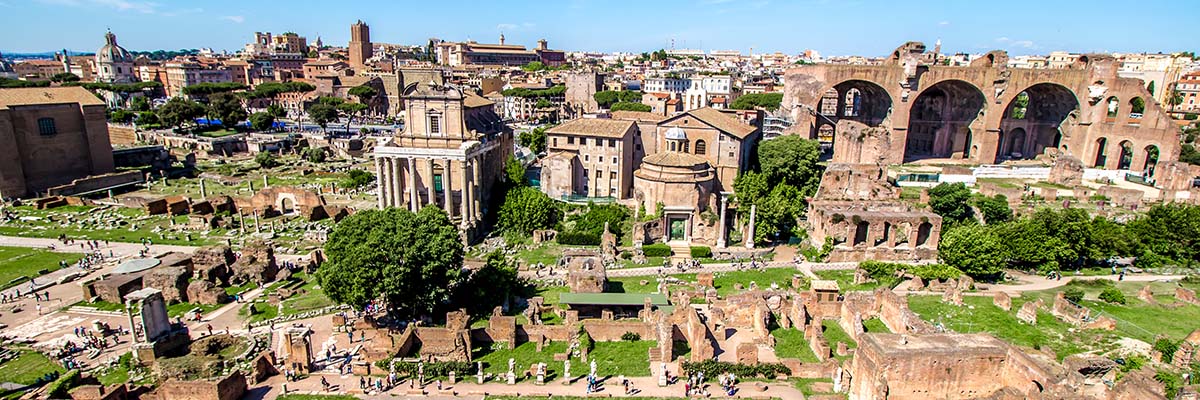
History of Forum Romanum
Until the 7th century BCE, the area between the hills of the Capitol, Palatine and Esquiline was a large swamp. It was used as a cemetery in those days, but it was not until after the 7th century BCE that the swamp was drained when the sewerage system of the Cloaca Maxima was built. The Temple of Saturn and the Temple of the Dioscuri were part of the first settlement there. During the 2nd century BCE, development of the forum accelerated after the power of the Roman Empire continued to grow in the Mediterranean. Beginning in 54 BCE, the so-called imperial fora (Fora Imperiali) arose next to the Forum Romanum, intended to preserve their fame for the ages. The most famous fora – which are still partially covered by nearby buildings – are:
- Forum of Caesar (Foro di Caesare) with the temple of Venus Genetrix.
- Forum of Augustus (Foro di Augusto) with the temple of the god of war Mars Ultor.
- Forum of Vespasian with the temple of peace
- Forum of Trajan, the most impressive forum

Palatino (Palatine hill)
The Palatine hill is one of the seven hills of Rome . During the 9th century BCE it became a residential neighbourhood that would later be home to important Romans such as Cicero, Crassus, Augustus and Tiberius. This last emperor ensured the 43-metre high hill's reputation as imperial residence. According to legend, Rome was founded by Romulus on Palatine Hill in 753 BCE.
Today, Palatine Hill is a major archaeological park and connected to the Forum Romanum. In the centre of Palatine hill, you can find – among other monuments – the impressive buildings of emperor Domitian (Domus Augustana) and the 16th-century gardens of cardinal Alessandro Farnese. The Antiquarium can also be found on Palatine Hill. This museum contains models of the first settlements and archaeological finds.
Roman Forum and Palatine Hill Tickets & Tours
Do you need tickets the Roman Forum? It is always recommended to purchase one of the following entrance tickets or tours. During the high season, the combination tickets with the Colosseum is certainly sold out quickly. Choose one of these entrance tickets:
Video: Reconstruction of the Foro Romano
Where is the roman forum in rome.
The Roman Forum is located in the center of Rome, Italy. It is located next to the Colosseum in the Rione Campitelli district, between the Palatine Hill and Capitoline Hill. The Roman Forum used to be the political, religious and social center of ancient Rome. It was once dominated by numerous public buildings, temples, basilicas and monuments. Today, ruins and remains can still be seen, testifying to the grandeur of the ancient Roman Empire. Do you need tickets the Forum Romanum? Yes, you can only visit the ancient site with tickets or guided tours. Colosseo metro stop is near the entrance to the archaeological area.

Most visited attractions

Top 25 Things to do in Rome

Colosseum & Tickets


Sistine Chapel & Vatican Museums

St.Peter's Basilica & Tickets
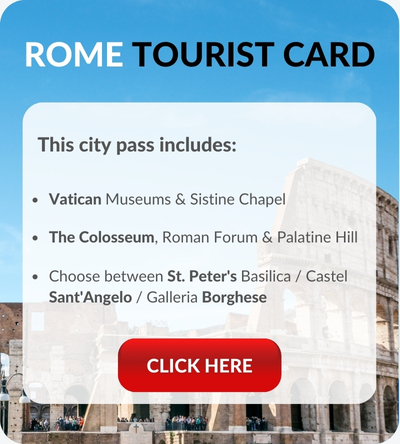
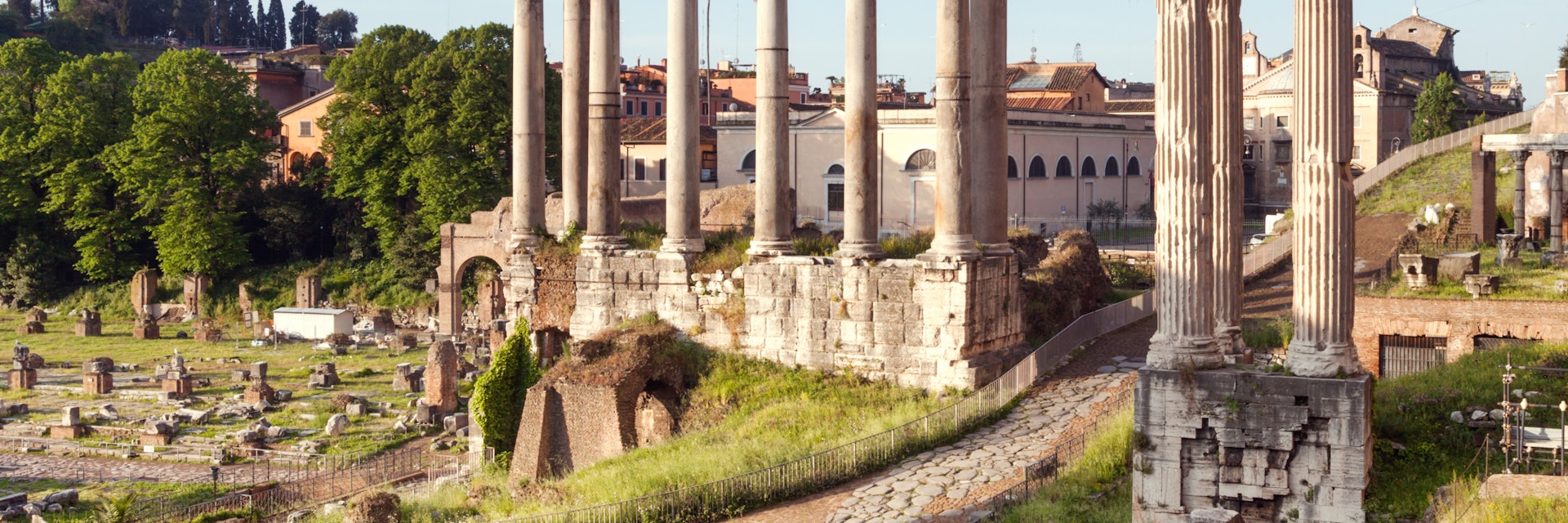
©Matteo Colombo/Getty Images
Roman Forum
Top choice in Ancient Rome
Lonely Planet's Ultimate Guide
Explore insider tips, fascinating history and surprising secrets to make the most of your experience.
An impressive – if rather confusing – spread of ruins, the Roman Forum was ancient Rome 's showpiece center, a grandiose district of temples, basilicas and vibrant public spaces. It can be hard to picture this nowadays but if you can get your imagination going, there’s something truly magical about walking in the footsteps of Julius Caesar and other legendary figures.
Signature sights include the Arco di Settimio Severo , the Curia , the Tempio di Saturno and the Arco di Tito .
History of the Roman Forum
The site, which was originally a marshy burial ground, was first developed in the 7th century BCE, growing over time to become the political, religious and commercial hub of the Roman empire. On any given day, it hummed with activity as shoppers thronged its teeming streets, senators debated affairs of state, and lawyers hustled in its busy law courts.
Like many of ancient Rome's urban developments, the Forum fell into disrepair after the fall of the Roman Empire until eventually it was used as pasture land. In the Middle Ages it was known as the Campo Vaccino (Cow Field) and extensively plundered for its stone and marble. The area was systematically excavated in the 18th and 19th centuries, and excavations continue to this day.
Navigating the ruins
There are three entrances to the Forum: at Largo della Salara Vecchia (just off Via dei Fori Imperiali), near the Arco di Settimio Severo, and at the Arco di Tito (nearest the Colosseum and so the busiest). You can also enter directly from the Palatino , which is part of the same archaeological park and covered by the same ticket.
As a rough guide, allow up to an hour and a half to explore the ruins.
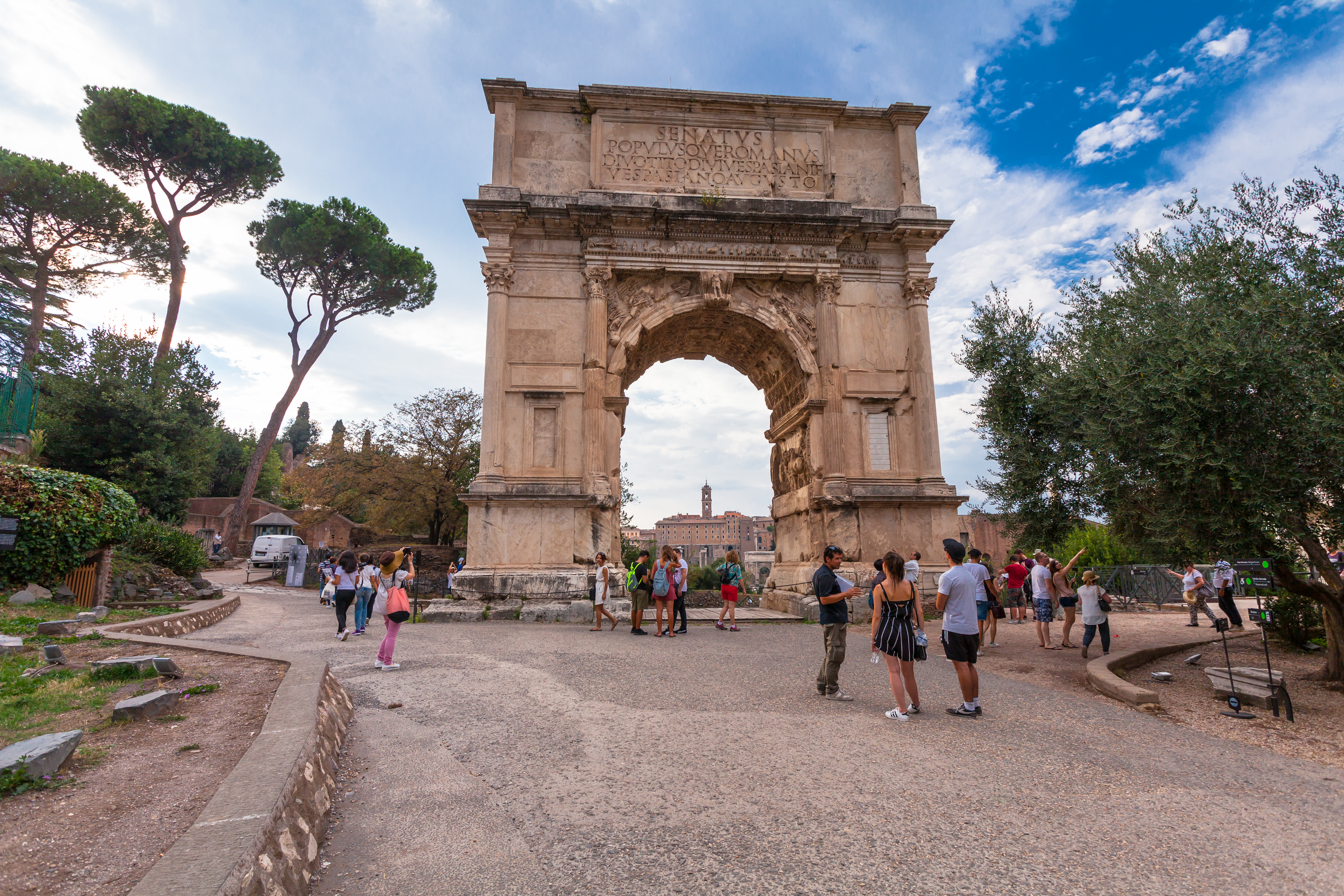
Arco di Tito and around
Entering at the Arco di Tito , you’ll see the triumphal arch right in front of you. Supposedly the inspiration for Paris’ Arc de Triomphe , this martial landmark was built by Domitian in 81 BCE to celebrate his brother Titus' victories in Judea and the 70 CE sack of Jerusalem.
Off to the right of the arch, the light-filled Museo del Foro showcases finds from excavations in the early 20th century. It also gives access to a part of the Tempio di Venere di Roma, the largest temple the Romans ever built.
Similarly epic in scale is the Basilica di Massenzio . Started by the emperor Maxentius and finished by Constantine in 315 CE, this colossal structure originally measured 100m by 65m (328ft by 213ft), roughly three times what it now covers.
Temples and churches
From the basilica, Via Sacra , the Forum’s main thoroughfare, leads into the heart of the Forum where you’ll find some key temples.
You’ll see the circular Tempio di Romolo and, beyond that, the columned Tempio di Antonino e Faustina , a 2nd-century CE temple that was subsequently converted into a church. Opposite, the Tempio di Giulio Cesare (also known as the Tempio del Divo Giulio) stands on the spot where Julius Caesar was cremated after his assassination in 44 BCE.
Nearby, three white columns are all that remain of the 5th-century BCE Tempio di Castore e Polluce . Next to the columns are the remnants of the Tempio di Vesta , a revered temple whose sacred flame was kept alight by Vestal Virgins from the adjacent Casa delle Vestali (the building with the central grassy atrium).
Tucked away on the far side of the Forum is the 6th-century Chiesa di Santa Maria Antiqua , the oldest and most important church on the site. A treasure trove of early Christian art, it contains some exquisite 6th- to 9th-century frescoes and a hanging depiction of the Virgin Mary with child, one of the earliest icons in existence.
From inside the church, you can also access the Rampa di Domiziano , an underground passageway the emperors used to enter the Forum from their Palatine palaces.
Arco di Settimio Severo and around
One of the Forum’s landmark monuments, the 23m-high Arco di Settimio Severo was built in 203 CE to commemorate Septimius Severus’ victories over the Parthians (in modern-day Iran).
To the right of the arch, the Curia was the original seat of the Roman Senate. A big, barn-like building, this was rebuilt on various occasions and the version you see today is a 1937 reconstruction of how it looked in the reign of Diocletian (r 284–305).
On the other side of the arch, eight granite columns remain from the Tempio di Saturno , an important temple that doubled as the state treasury.
In the area in front of the arch, the free-standing Colonna di Foca (Column of Phocus) rises above what was once the Forum's main square, Piazza del Foro .
Flanking the piazza are the remains of two major basilicas: on the Via Sacra side, the Basilica Fulvia Aemilia , and on the Palatino side, the Basilica Giulia , which was commissioned by Julius Caesar and completed by Augustus.
Tickets and SUPER sites
The standard Forum ticket costs €16 and covers the Forum, Palatino and Colosseum. It does not, however, include the Forum’s so-called SUPER sites: the Tempio di Romolo, Rampa di Domiziano, Chiesa di Santa Maria Antiqua, Oratorio dei Quaranta Martiri, Curia (open Saturdays to Mondays). To access these you’ll need a Full Experience ticket (€22) or a Forum SUPER Pass (€16).
You can get tickets online (plus €2 booking fee) or directly at the ticket office on Piazza del Colosseo (expect queues).
Visitor tips
The best time to visit is first thing in the morning or late afternoon. Crowds are at their worst between 11am and 2pm and it can get very hot in the midday sun, especially as there’s little shade on site. Hats and comfy shoes are highly recommended.
For the best photos of the Forum head up to the neighboring Palatino or Campidoglio hill.
To eat nearby
For a restorative coffee break, work your way up to the Campidoglio and the Terrazza Caffarelli , the Capitoline Museums ' panoramic rooftop cafe.
If you want something more substantial, try Terre e Domus , a casual restaurant serving regional cuisine and local wines.
Largo della Salara Vecchia, Piazza di Santa Maria Nova
Get In Touch
06 3996 7700
https://colosseo.it/en/area/the-roman-forum/
Lonely Planet's must-see attractions
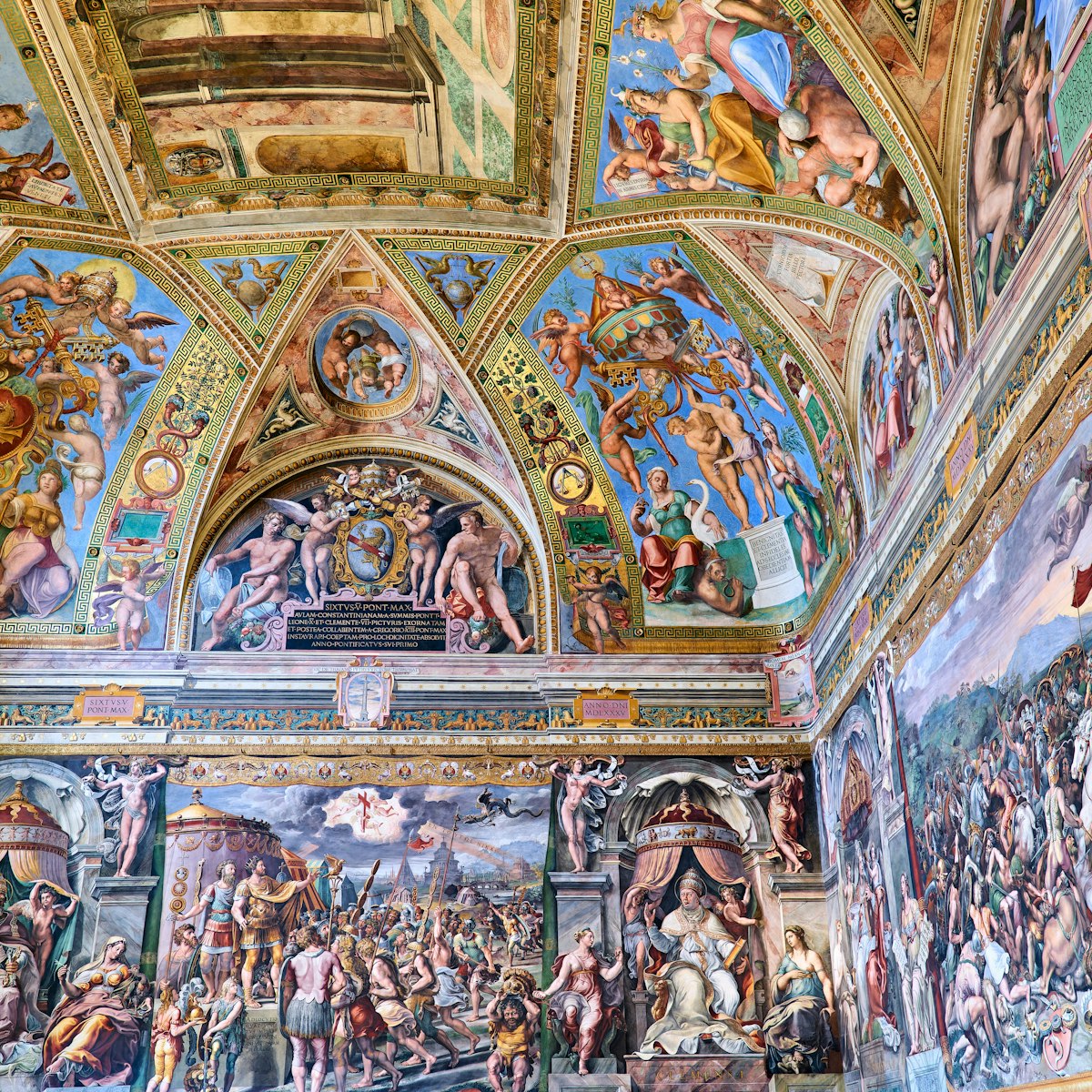
Vatican Museums
Founded by Pope Julius II in the early 16th century and enlarged by successive pontiffs, the Vatican Museums boast one of the world's greatest art…
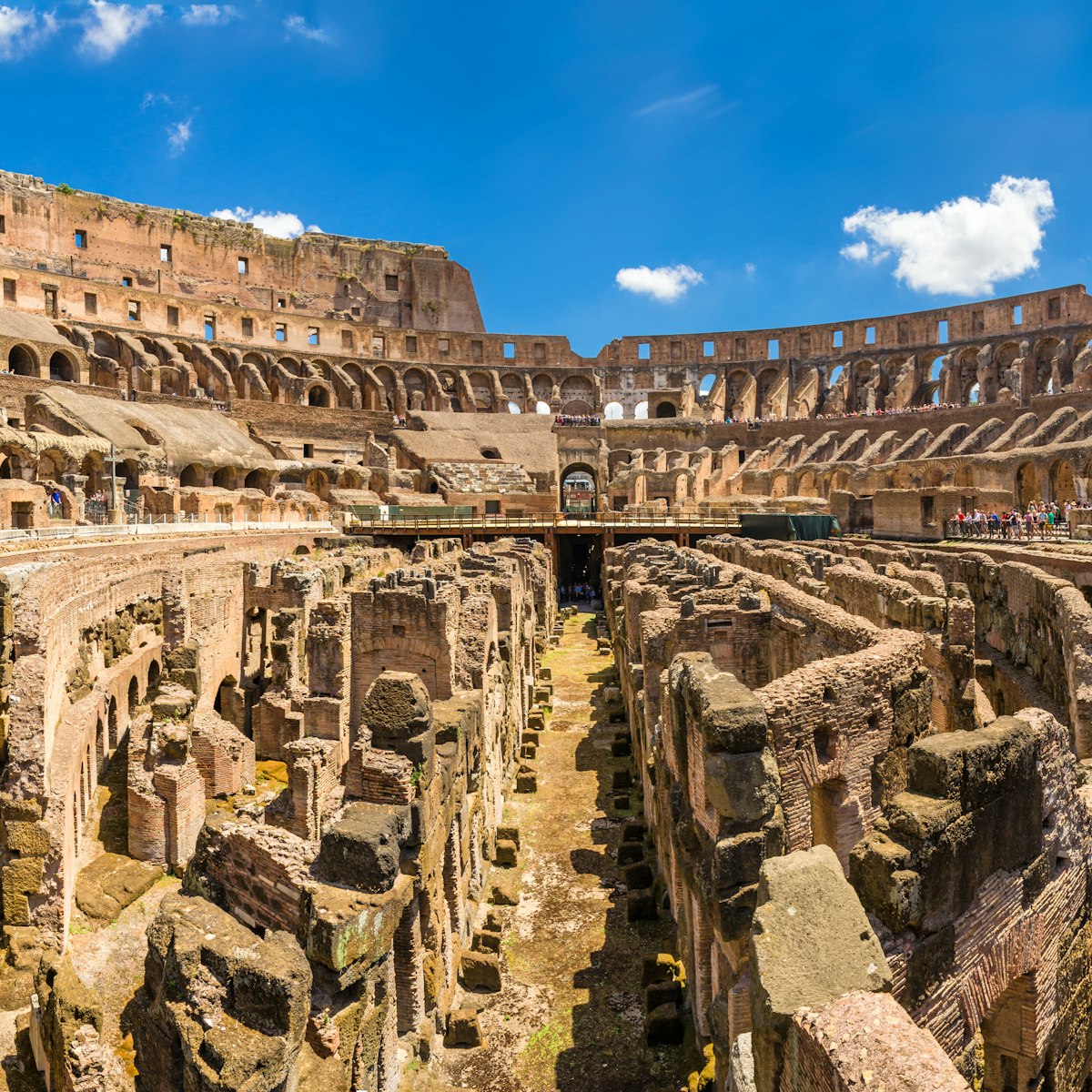
Everyone wants to see the Colosseum, and it doesn’t disappoint, especially if accompanied by tales of armored gladiators and hungry lions. More than any…
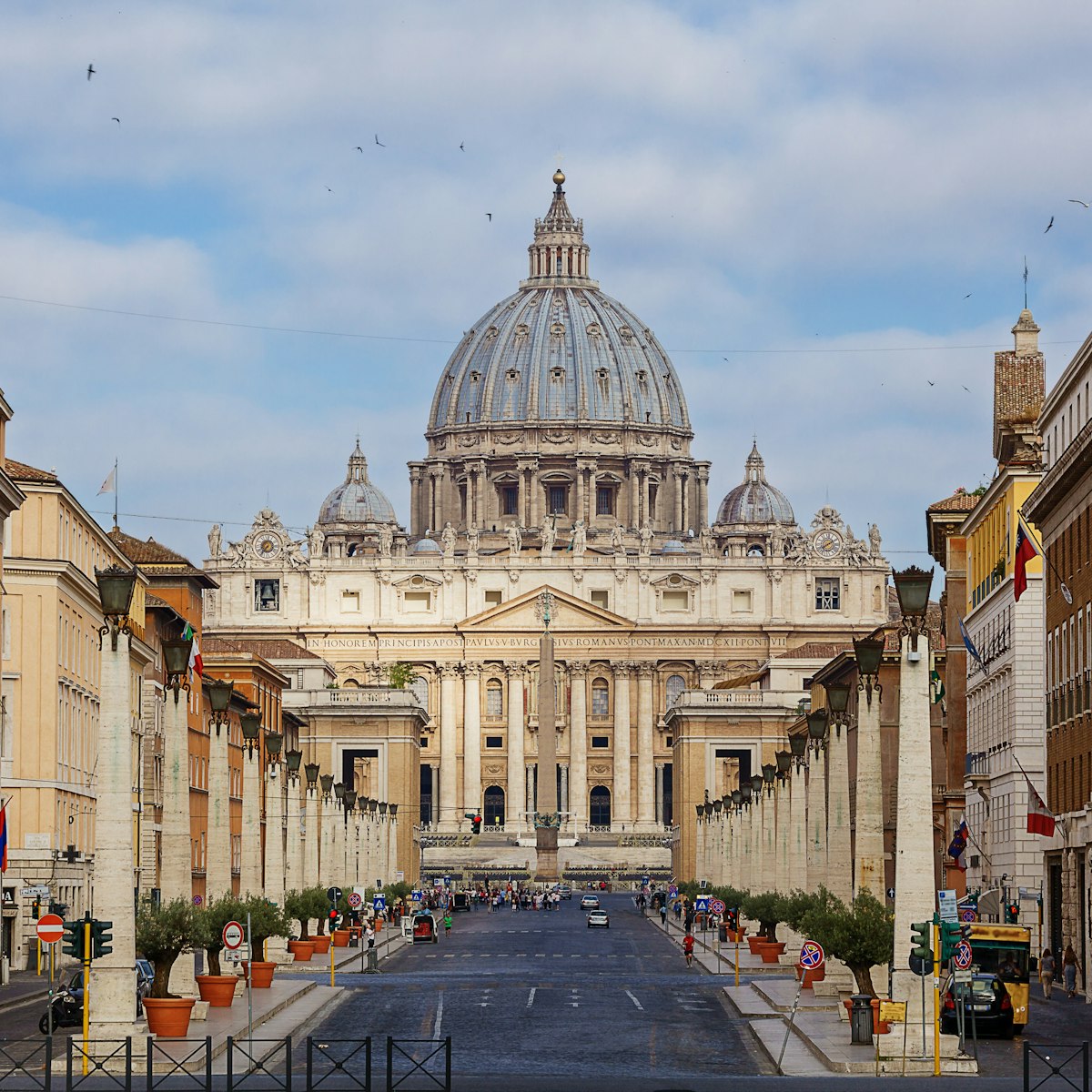
St Peter's Basilica
In the city of outstanding churches, none can hold a candle to St Peter's, Italy’s largest, richest and most spectacular basilica. Built atop a 4th…

Sandwiched between the Roman Forum and the Circo Massimo, the Palatino (Palatine Hill) is one of Rome's most spectacular sights. It's a beautiful,…
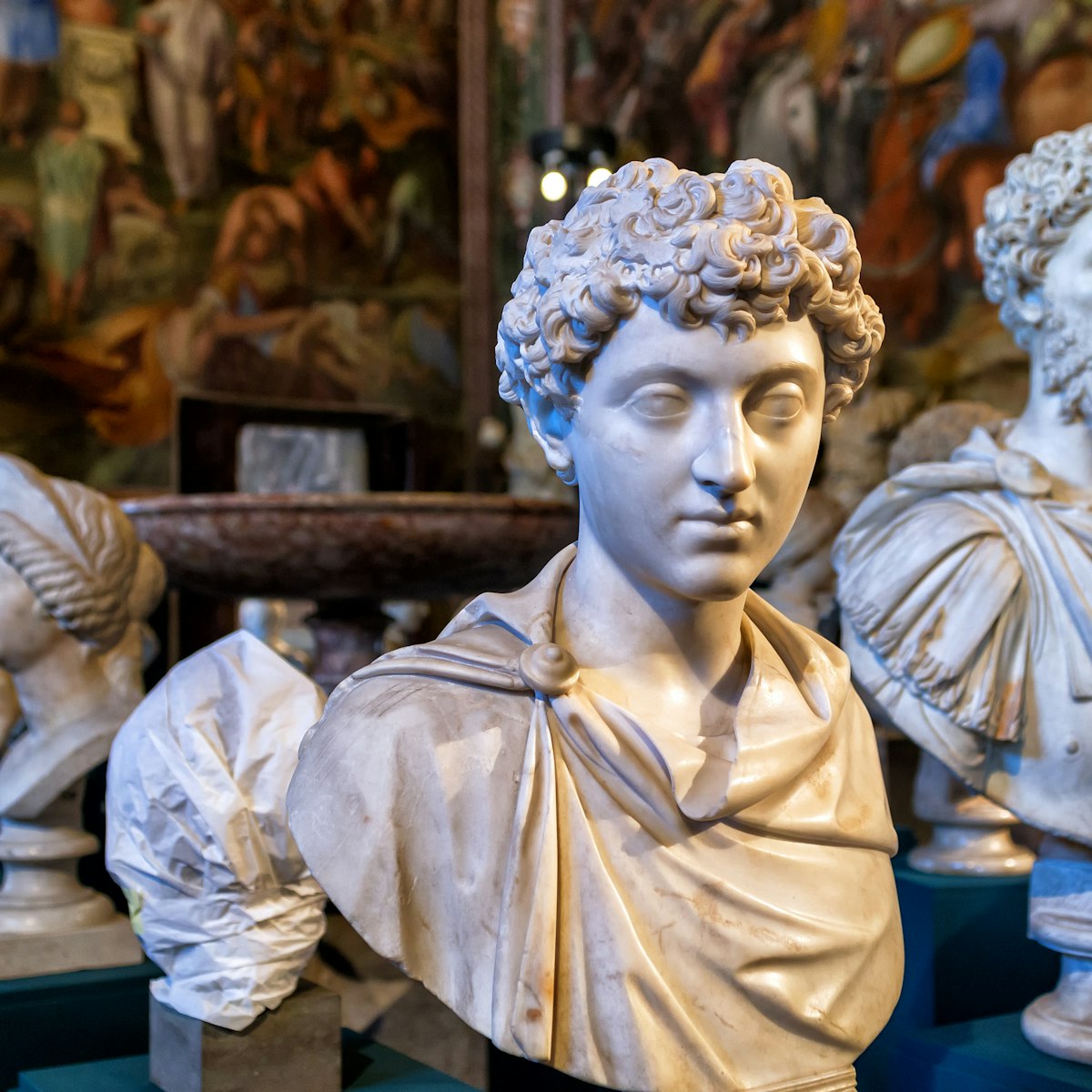
Capitoline Museums
Dating from 1471, the Capitoline Museums are the world's oldest public museums, with a fine collection of classical sculpture.
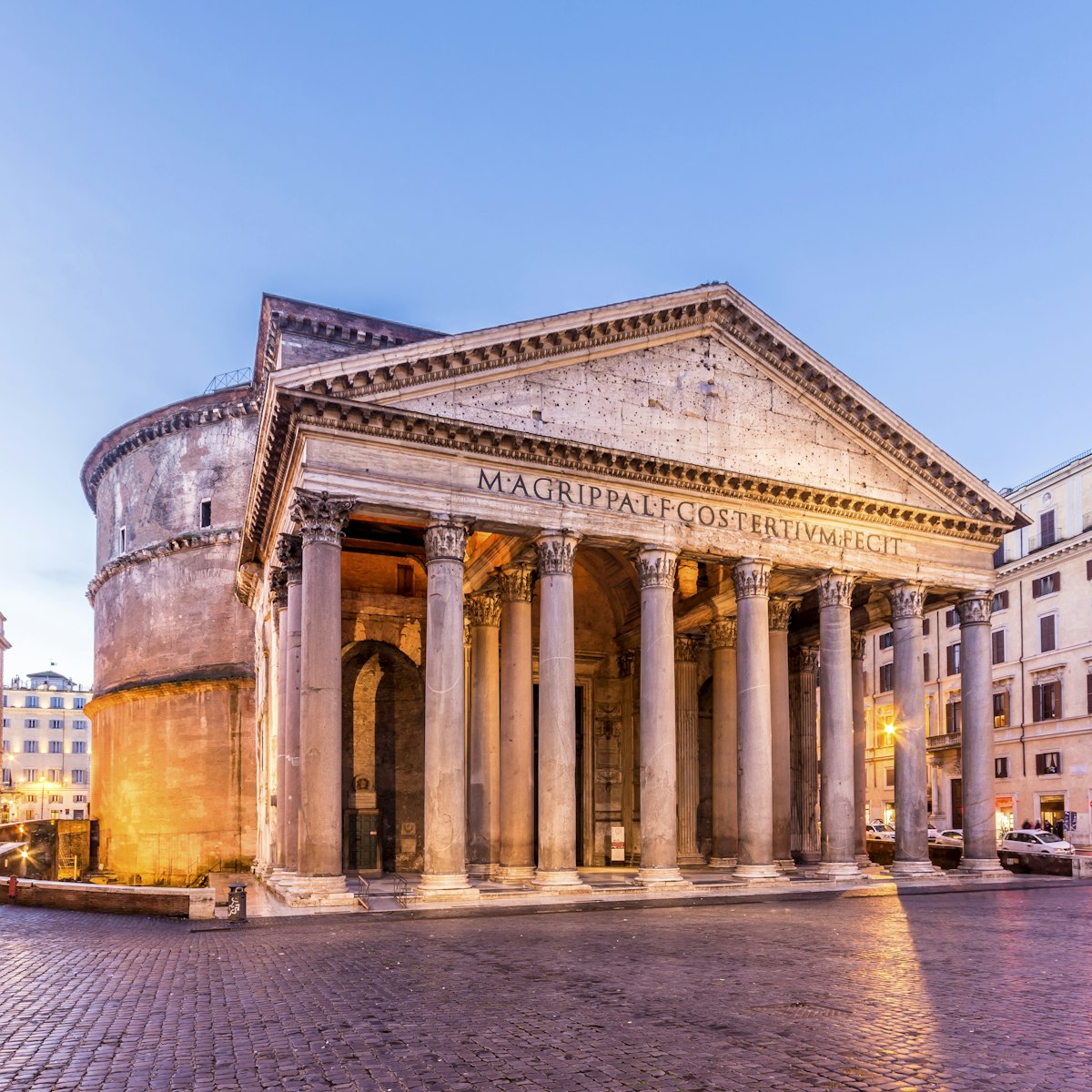
With its revolutionary design, this awe-inspiring temple has served as an architectural blueprint for millennia.
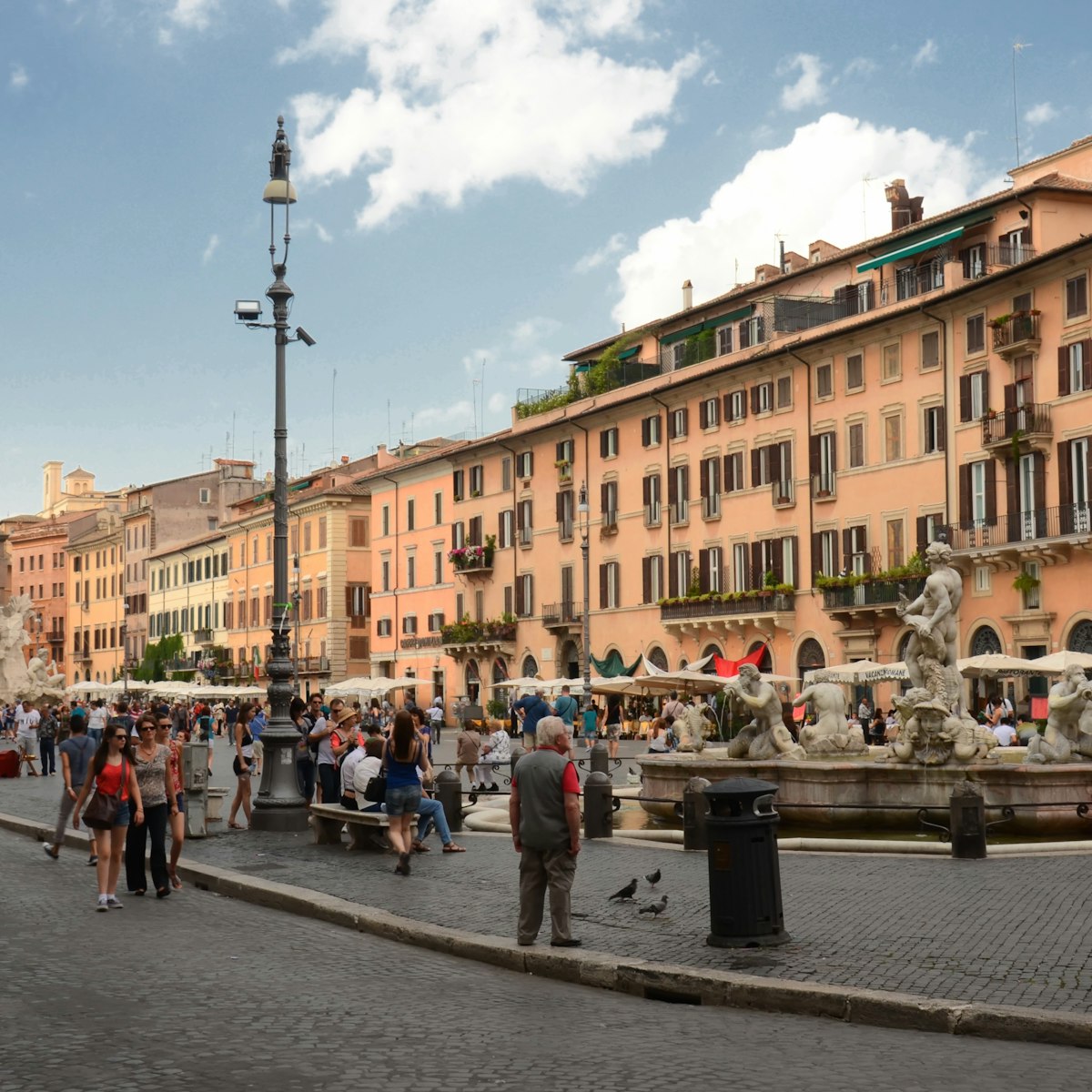
Piazza Navona
With its showy fountains, baroque palazzi and colorful cast of street artists, hawkers and tourists, Piazza Navona is central Rome’s elegant showcase…
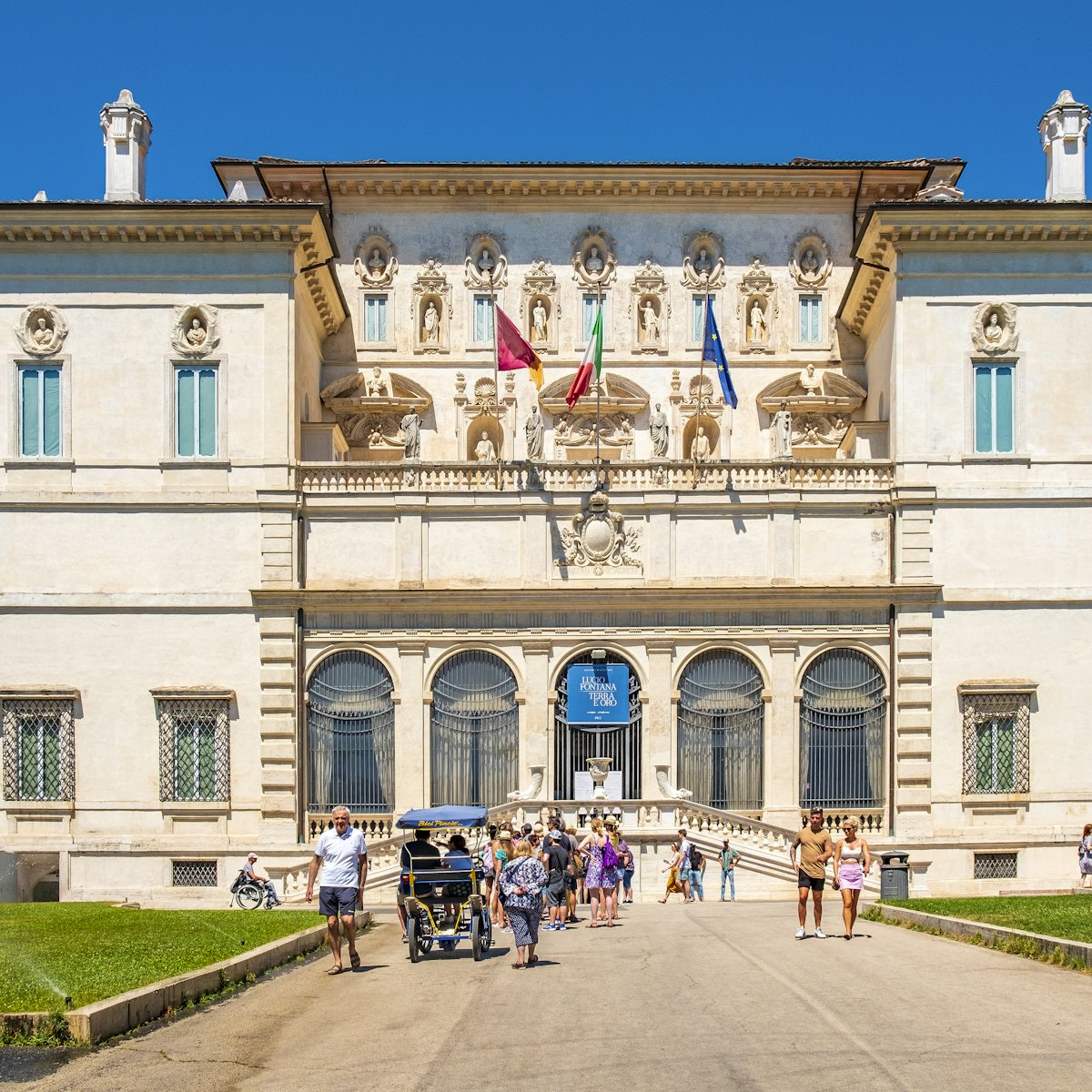
Museo e Galleria Borghese
If you only have time for one art gallery in Rome, make it the Museo e Galleria Borghese.
Nearby Ancient Rome attractions
1 . Casa delle Vestali
The Casa delle Vestali, situated in the heart of the Roman Forum, was home to the Vestal Virgins who tended the sacred flame in the adjoining Tempio di…
2 . Chiesa di San Lorenzo in Miranda
Fronted by soaring columns, the Chiesa di San Lorenzo in Miranda occupies the 2nd-century Tempio di Antonino e Faustina on the Roman Forum. Dating to the…
3 . Tempio di Vesta
This circular temple on the Roman Forum was dedicated to Vesta, the popular goddess of home, hearth and family. The Vestal Virgins, who lived next door in…
4 . Tempio di Romolo
Also known as the Tempio del Divo Romolo, this 4th-century brick temple on the Roman Forum was once thought to have been dedicated to Valerio Romolo, the…
5 . Tempio di Antonino e Faustina
Entering the Roman Forum from Largo della Salara Vecchia – you can also enter directly from the Palatino or from the Arco di Tito – you’ll see the Tempio…
6 . Tempio di Giulio Cesare
This temple, also known as the Tempio del Divo Giulio, was built by Augustus in 29 BC on the spot in the Roman Forum where Julius Caesar's body was…
7 . Tempio di Castore e Polluce
In the centre of the Roman Forum, three Corinthian columns are all that survive from the Tempio di Castore e Polluce, also known as the Tempio dei…
8 . Rampa di Domiziano
Accessible through the Chiesa di Santa Maria Antiqua, this ramp is actually a vast passageway that allowed the emperors to enter the Roman Forum from…
It's All About Italy
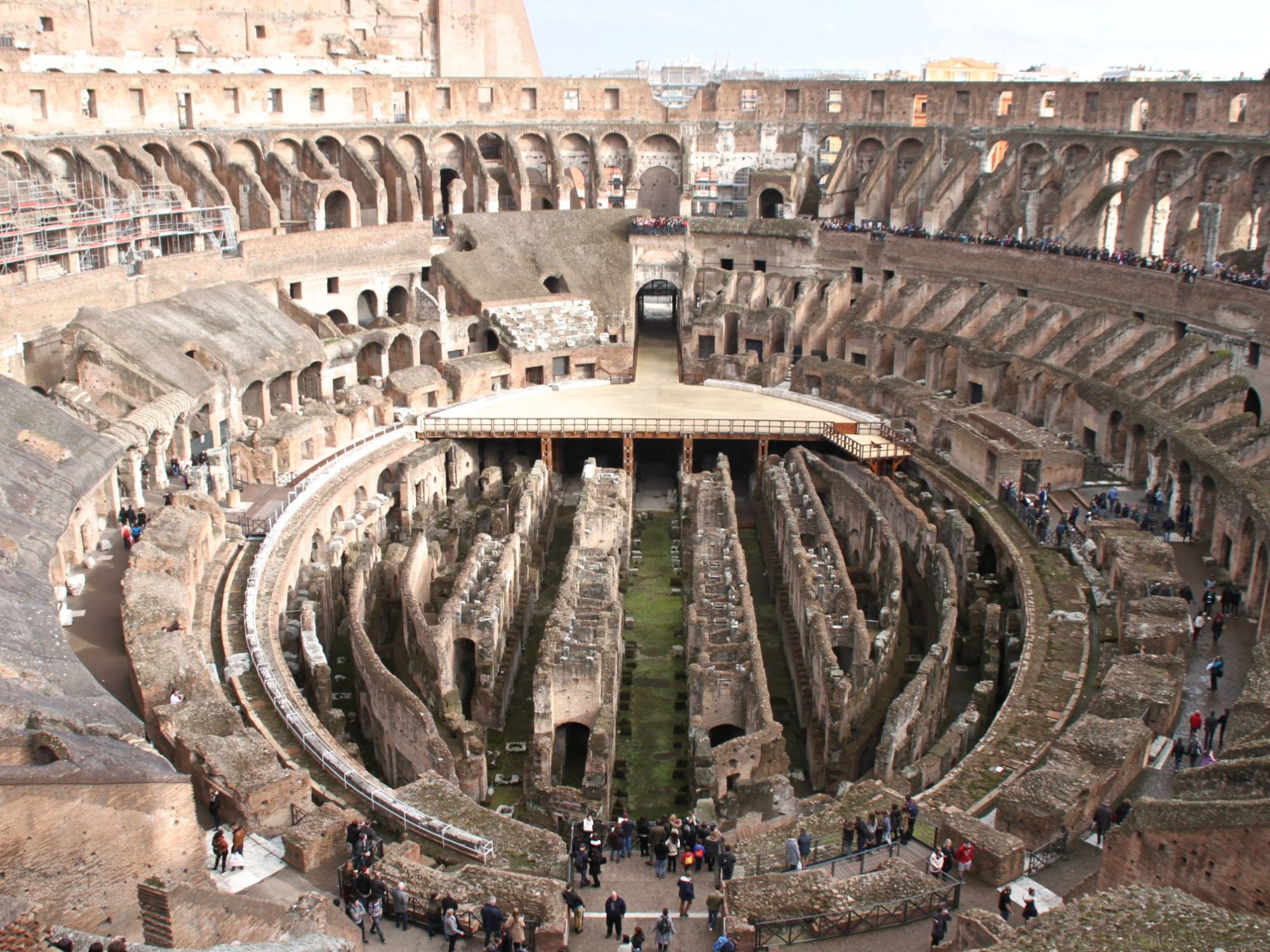
The Roman Forum: A Practical Visitor’s Guide
There are few cities in the world that are as jam-packed with history as Rome . Walking through the city’s cobbled streets is an unforgettable experience, as each turn reveals yet another iconic setting from history. But few spots are more impressive than the triumphal arches, towering temples and fallen columns of the Roman Forum or Foro Romano where, for centuries, the fate of the ancient Roman Empire and its people was decided. So its no wonder that millions of visitors want to see where Rome was founded, making this one of the most popular tourist attractions in Italy. If you’re planning a trip to Rome, here are our essential tips and tricks to guarantee a stress-free visit with our 3-in-1 pass to the Roman Forum, Palatine Hill and Colosseum .
Book ahead to skip the Roman Forum and Colosseum lines
When you’re on vacation, time is precious. Much too precious to waste hours standing in a long dusty line in the heat of the summer sun, fumbling with your cash. Especially if you only have one or two days in Rome.
That’s why these days the smartest travelers book online in advance to skip the long lines and ensure a relaxing, stress free vacation. It’s secure, as easy as 1-2-3 and can be done from the comfort of your armchair, or with the help of our travel experts in just a few minutes! Perfetto!
Start at the very beginning
As the largest and most imposing building in the three sites, it’s tempting head straight to the Colosseum for the gladiatorial glamour and gore. But to understand how Rome started and grew to dominate the known world, plan your visit in chronological order.
Many of the oldest and most important religious and legislative structures of the ancient city are located in the Forum. From the legendary 7 th century BC Temple of the Vestal Virgins, to the Curia Julia Senate House built by Julius Caesar, to the enormous Temple of Antoninus and Faustina, all have fascinating tales to tell. So aim for the Roman Forum first, climb up to the Palatine Hill for the royal palaces and then drop down to the arena for the finale.
Don’t forget the Palatine Hill
The Palatine Hill is one of the seven hills upon which Rome was established and, along with the Roman Forum, is one of the most ancient parts of the city. Legend has it that founding twins Romulus and Remus were discovered in a cave here, being looked after by a she-wolf. And although little remains of the twins today, the hill is still home to Emperor Augustus’s centrally-heated royal palace, built in the 1 st century AD and described by some as the first “White House,” as it had a west wing for public life and an east wing for the emperor’s private life.
The Palatine Hill also gave us the words palace (English), palazzo (Italian) and palais (French), all derived from the old Etruscan or ancient Italian word for sky or heaven.
And the hill is one of the highest points in the city with a great view over the Roman Forum, the modern city skyline towards St Peter’s and your next destination, the Colosseum. It was once the center of the Roman Empire and offers great insight into royal life on your whistle stop tour through 3,000 years of history.
Note : Entrance to the Roman Forum and Palatine Hill is combined on your ticket so make sure to visit both together as you won’t be allowed re-entry once you exit.
Read the signs
Deciphering what’s in front of you can be tricky: even though the ancient Romans brought us the first grid system cities, the Forum is a little more higgledy-piggledy in its layout.
There are a few small signs dotted around the site to explain the background of key spots so make sure to check them out to help you steer through the ruins and get the most out of your self-guided visit.
Take a closer look at the Roman Forum
The Forum is a huge site but don’t be overwhelmed as some of the most fascinating history can actually be seen in the tiny details that are often overlooked.
Up on the Palatine Hill, you can find large internal pipes built into the thick palace walls that once provided hot air central heating. Or keep your eyes peeled for early lead piping that carried water from the countryside to supply the ornate fountains and baths. The Latin for lead – plumbum – is also where we get the word “plumber.”
And if you look very closely at the steps of the Basilica Julia near the Curia Julia in the Forum, you might even spot the grooves, grids and circles of board games carved into the marble where ancient Romans used to sit and play games. These are the intricacies that breath life back into the ancient Romans. Fascinating, eh?
Plan enough time for your visit
At a practical level, the time you spend at the Roman Forum and Palatine Hill depends on you. Your pass has a designated entry time for the Colosseum but you are free to enter the Forum at your leisure, either before or afterwards.
So if you like a bit of a history, have read about ancient Rome or have a guidebook to hand, you can easily spend half-a-day exploring the sprawling ruins and the small museum on the Palatine Hill before you even get to the Colosseum.
If, on the other hand, time is tight and you’re looking for a quick glimpse of ancient Rome to set the scene, it’s worth putting aside at least an hour to soak up the ancient Roman atmosphere and architecture before entering the Colosseum. The choice is yours.
Choose the right footwear
On a practical note, Rome’s smooth stone cobbles can be slippery when wet or dusty and the same goes for the ancient Roman Forum. Add in the uneven paving stones of the ancient Roman streets, worn silky smooth over the centuries, or the climb up to the Palatine Hill on hard gravel paths, and thin-soled flipflops might not be the best footwear!
Not that you need walking or hiking boots; that would be overkill. But non-slip tennis shoes might just make your little piggies more comfortable, whatever the weather.
And bring an umbrella and a water bottle
Rome enjoys a temperate climate all year-round with moderate, wet winters and scorching, sunny summers. The Roman Forum, however, offers very little in the way of shade so pack an umbrella to guard against rain or provide shade from the sun. And bring a bottle of water in summer since the Forum is a real heat trap for the thirsty traveler.
Ready to skip the line and explore the Roman Forum?
So what are you waiting for? If you’re planning a trip to Rome, a visit to the Roman Forum, Palatine Hill and Colosseum is essential. And now it’s even easier to explore the temples, palaces and amphitheater without wasting time waiting in line. Just go online or give our travel experts a call to book your stress-free pass and save yourself a hot, dusty delay. And make sure to check out our blog for other top tips on discovering Rome since once you’ve skipped the line with us, you’ll never want to queue again! Buon viaggio!
Why book with Select Italy
We have over 23 years of experience providing luxury vacation destinations throughout Italy.
Our industry expertise, exclusive access to accommodations, handpicked tour guides, and unique vacation destinations differentiates Select Italy and allows us to create the best guest experience for you.
Expert Service | Price Match Guarantee | 100% Peace of Mind
Read more about Why you should book with us.

Visiting the Roman Forum: 10 Highlights
Written by Barbara Radcliffe Rogers Updated Dec 25, 2023 We may earn a commission from affiliate links ( )
Few sites are so filled with a sense of history as the Roman Forum (Foro Romano), where, for many centuries, the fate of Europe was decided. Although the surviving remains give only a hint of the grandeur and splendor of the Forum in ancient times, this area, with its columns still standing tall or lying tumbled on the ground, its triumphal arches, and its remains of once-important buildings, are still impressive even to 21st-century visitors.
The Forum is so vast, and often crowded, that it's difficult to make sense of it or know what happened where. That's why a tour using a headset with an expert guide is helpful, so you can listen as you snap photos and appreciate the grandeur of one of Rome's most popular and important tourist attractions .
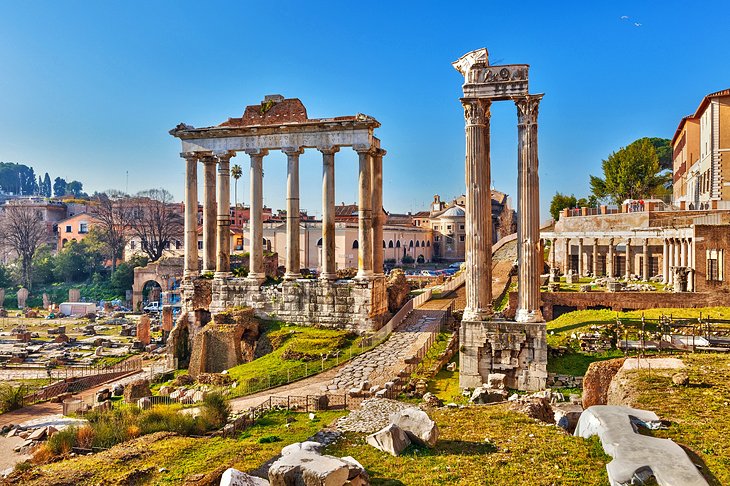
For more than a thousand years, the might of Rome, the magnificence of Roman art, and Roman law and religion found expression here and radiated throughout Europe and beyond. The first buildings here were temples, followed by public buildings.
This combination soon made the area the political center of the city–the meeting place of the courts and the assemblies that directed the affairs of the republic. Commerce soon joined religion and government, with the building of market halls that made the Forum the center of all public activity, not just for Rome, but for an increasingly large part of the continent.
By the end of the Imperial Period, the Forum was a densely built-up complex in which "modern" buildings rubbed shoulders with ancient ones, making it difficult today to identify individual buildings. This is further complicated by layers of later churches and fortresses that were built amid the ancient remains. The area served as a quarry of building stone and a cow pasture until 18th- and 19th-century excavations uncovered the Forum from a layer of dirt and rubble as deep as 15 meters.
See also: Where to Stay near the Roman Forum
1. Arch of Titus
2. basilica of constantine, 3. the curia, 4. temple of romulus, 5. temple of vesta & house of the vestals, 6. arch of septimius severus, 7. temple of saturn, 8. temple of castor and pollux, 9. temple of antoninus pius, 10. via sacra, where to stay near the roman forum, tips and tours: how to make the most of your visit to the roman forum, getting to the roman forum, nearby attractions, restaurants and cafés nearby, shopping nearby, map of the roman forum: highlights.
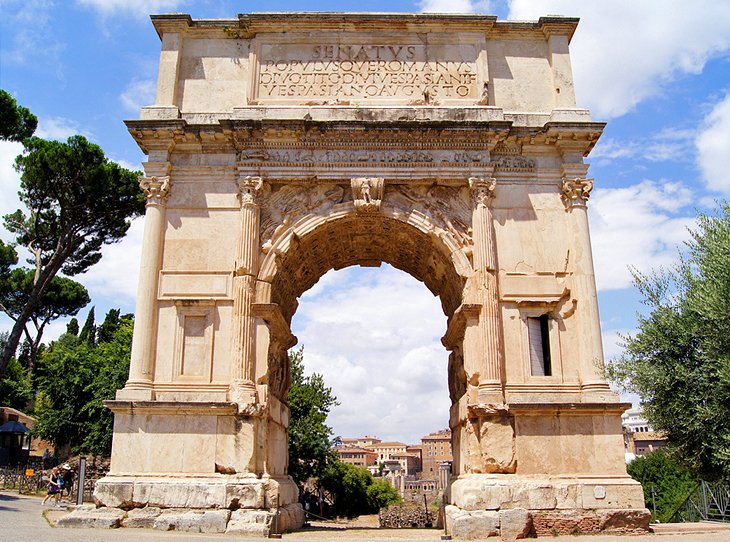
Standing at the end of the Forum farthest from the Capitol, the Arch of Titus is the oldest of the Roman triumphal arches, erected after the death of Titus by his successor Domitian. The reliefs on the arch show scenes from the victorious general's triumphal procession to the Capitol after Titus captured Jerusalem in the year 70 and thus put the final seal on the defeat of the Jewish people in Palestine.
Titus, who became Emperor in 79 AD, is shown in his chariot accompanied by the goddess of Victory holding a laurel wreath and by the booty brought back from the war - the Menorah, the table with the shewbread, and trumpets from the treasury of the Temple.
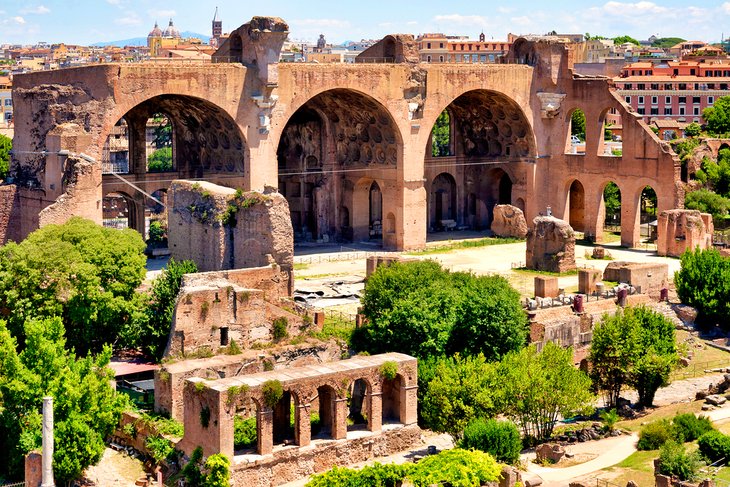
Only three soaring vaulted arches remain of what was the largest building in the Forum, but the Basilica of Constantine is still an imposing structure that towers over its surroundings. Finished by the Emperor Constantine in 303, it was begun by his predecessor, Maxentius.
The huge arched vaults still cover the remaining structure without support, an indication of the remarkable building skills of the Romans. A basilica in Ancient Rome was a courthouse and a place to make business and other transactions, with large central spaces flanked by apses, an architectural style later carried into Christian churches.
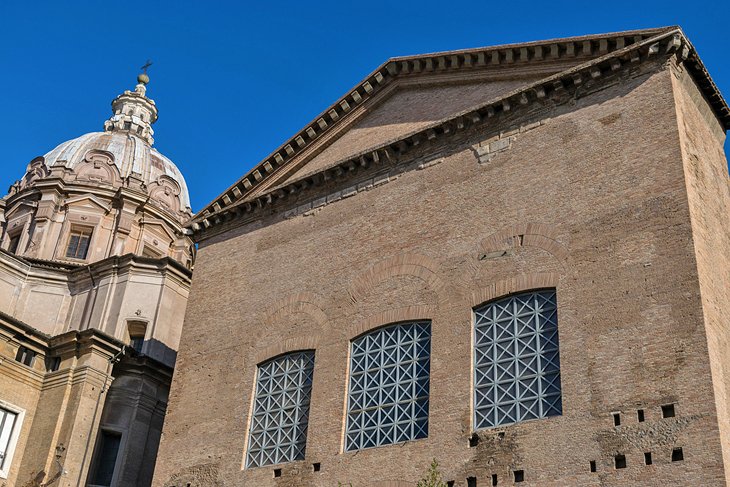
The meeting-place of the Roman Senate is one of the best preserved ancient buildings in the Forum, protected from further destruction when it was converted into a church in the seventh century. The first Curia was erected in the time of the kings and rebuilt frequently as a result of fires and other damage.
A plain and unornamented building, both inside and outside, it could seat 300 senators. Borromini adapted its bronze doors to serve as the main doorway of St. John Lateran , and the changes made to it over the centuries were stripped off between 1931 and 1937. It is now sometimes used for special exhibitions and preserves its inlaid marble floor from the third century, along with fragments of friezes.
The Anaglyphs of Trajan , two travertine slabs with reliefs depicting the emperor and the people of Rome, are displayed here. Outside the Curia and protected by a low roof is a block of black marble under which, according to legend, is the tomb of Romulus, founder of Rome. Opposite the Curia is the "newest" remnant from ancient times, the Column of Phocas , erected in 608.
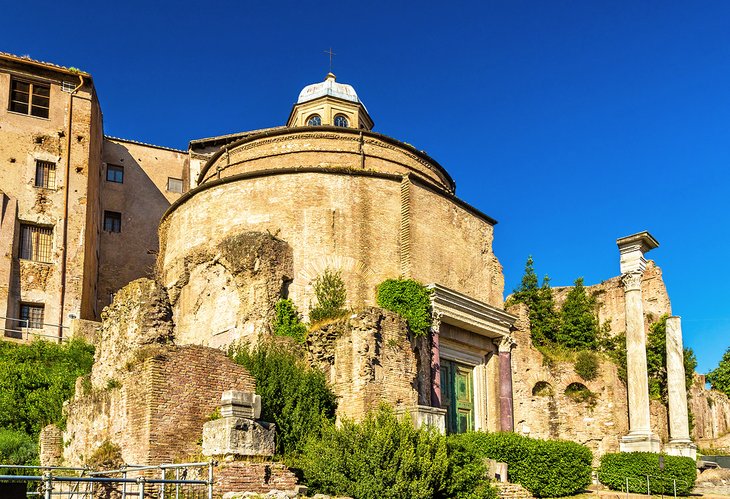
Among the best-preserved buildings in the Forum, the temple was dedicated by the emperor Maxentius to his son Valerius Romulus in 309 CE. The temple was later converted into a church, the Basilica of Santi Cosma e Damiano, which accounts for its state of preservation.
The bronze doors are the originals, and some of the 13 th -century wall paintings inside imitate the draperies that covered the walls when it was a temple. Other wall paintings are religious in nature and also date to the 1300s.
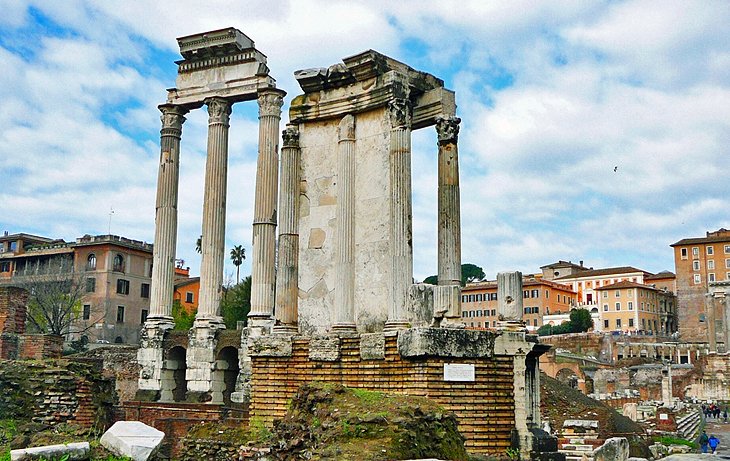
One of the most holy and important buildings in ancient Rome, the Temple of Vesta contained the Sacred Fire. The flame was guarded by the Vestals, six priestesses selected as children from the best families in Rome. This eternal fire was of great importance in Rome. On the first day of the new year, they put out the fires in their houses and lit new ones from the flame in the temple of Vesta.
The present remains, dating from the time of Septimius Severus, between AD 193 and 211, indicate that the temple was circular with 20 slender columns supporting the roof. An opening in the center of the roof let out the smoke from the sacred flame. The temple was mostly intact until the mid-16th century, when it was torn down and its marble used to build papal palaces and churches. What you see today was reconstructed in the 1930s during Mussolini's drive to reclaim Italy's ancient grandeur.
Adjoining the Temple of Vesta was the house of the Vestal Virgins, also built by Septimius Severus. You can still easily make out the plan of the building from the remains of its foundations. In the courtyard are the statues of the head vestals with inscriptions of their virtues on the pedestals. The sacred Palladium, an image of Pallas Athene brought by Aeneas from Troy, was kept in the House of the Vestals.
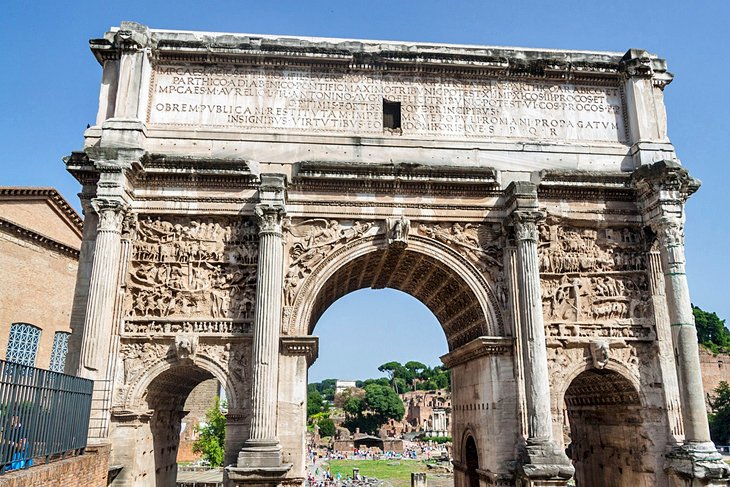
The Roman Senate and populace traditionally constructed triumphal arches honoring victorious emperors and generals, and in AD 203, this 23-meter arch was erected opposite the church of Santi Martina e Luca, to Septimius Severus and his sons Caracalla and Geta after their victories over the Parthians. On the arch, four deep marble reliefs represent episodes from these wars. Goddesses of victory hold trophies, and a large inscription proclaims the glory of the emperor and his sons (though the name of Geta was later removed).
The arch also features the base of a column commemorating the 10th anniversary of Diocletian's accession and the remains of the Rostra, the ancient orators' platform originally decorated with the prows of captured enemy ships. The arch was considered the spot of the Umbilicus Urbis, the navel or symbolic center of Rome.
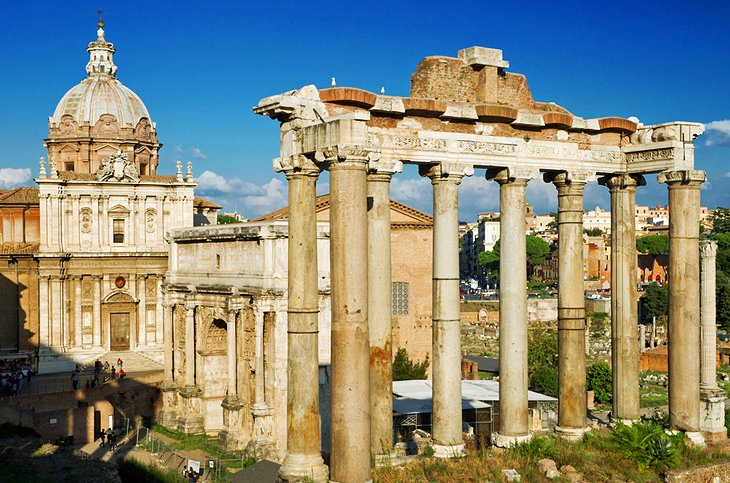
Built about 497 BC, the Temple of Saturn was one of the most important and venerated of the Republic. The first temple in the Forum, it was dedicated to the god that was probably of Etruscan origin but adopted by the Romans as the supreme god. It was destroyed by fire several times, the last in the fourth century AD, but was repeatedly rebuilt.
Under the Republic, the state treasury was kept in this temple, and annual celebrations of the Saturnalia started from here. You can recognize the Temple of Saturn by its eight weathered Ionic columns.
Adjoining the temple is a fragment of the Miliarium Aureum , the Golden Milestone, which was the starting point of the Via Sacra and all the Roman consular roads. On the stone, in golden figures, were inscribed the distance from Rome to the various provinces of the Empire.
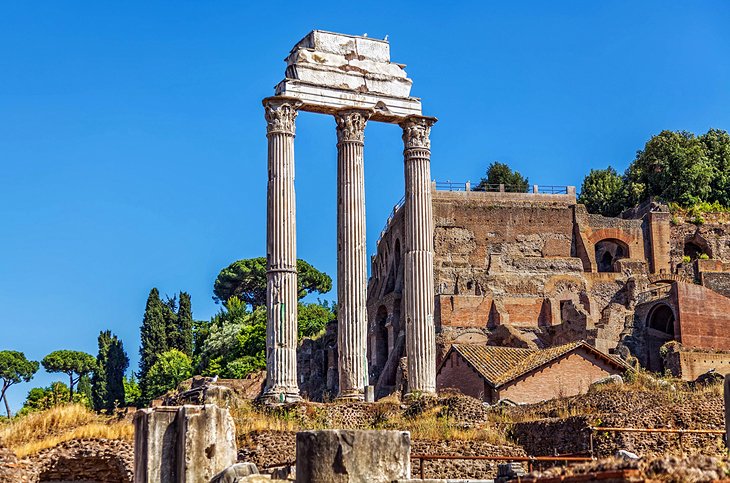
Three 12-meter Corinthian columns are all that survive from the Temple of Castor and Pollux , rebuilt in the reign of Tiberius in the first century AD to replace the original, built in 484 BC by the son of the dictator Aulus Postumius in thanks for the defeat of the Tarquins.
This victory was attributed to the help of the Dioscuri - Castor and Pollux, who were the subject of numerous myths, partly of Greek and partly of Etruscan origin. A legend held that after the victory, Castor and Pollux rode to Rome and watered their horses at a spring in the Forum. The three remaining columns are known popularly as The Three Sisters.
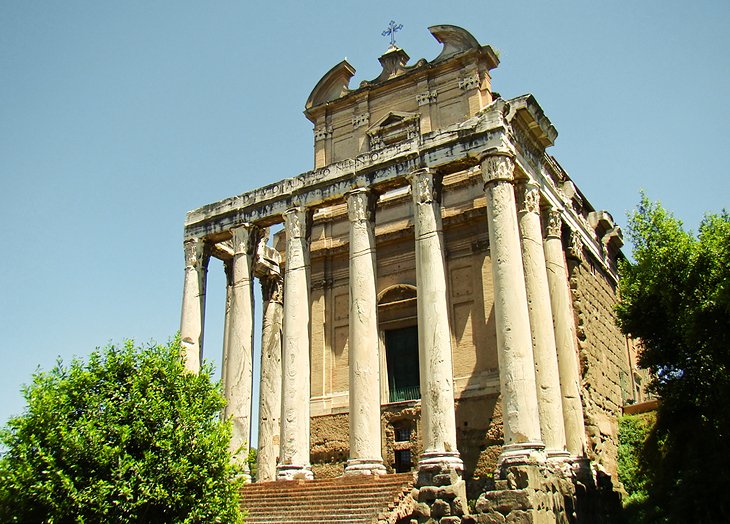
From the Via Sacra, steps leads up to the Temple of Antoninus Pius and his wife Faustina, built in AD 141 to honor the deified empress, and after his death, co-dedicated to him. Six columns with Corinthian capitals survive from the front, along with a number of columns along the side.
In the 12th century, the temple was converted into the church of San Lorenzo in Miranda, but when the Emperor Charles V visited Rome in 1536, the columns were disengaged from the medieval masonry.
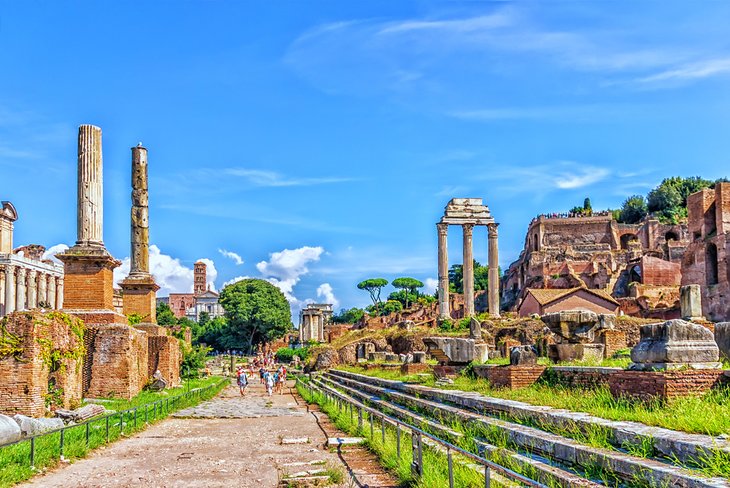
Passing under the Arch of Titus and through the Forum, the Via Sacra was ancient Rome's main street, along which triumphal processions marched between Capitoline Hill and the Colosseum . Some of the most important religious sites lay along it, and it was used daily by Romans engaging in business or socializing at the basilicas.
The Via Sacra was paved and lined by columns, and in places, you can still see the grooves made by wheels that passed over it centuries ago.

The lively, hip Monti neighborhood , north of the Forum, is a good place to look for a hotel, close to the ancient sights and within easy reach of Termini rail station. We recommend these hotels:
- The highly rated Nerva Boutique Hotel has attractive contemporary rooms, only a five-minute walk from the Forum, and serves complimentary afternoon tea and cakes to revive you after a day's touring.
- Equally close and in the upper-moderate price range , Monti Palace Hotel includes free breakfast with its modern rooms, and guests enjoy a rooftop terrace with views over the city.
- A bit farther into the Monti neighborhood, on busy Via Cavour, rooms at the moderately priced Hotel Centro Cavour are quiet, have small refrigerators, and are equipped for coffee and tea making.
- Only 100 meters from the Forum, the family-run Hotel Paba is a two-star boutique hotel with an elevator and nicely decorated rooms.
- In the same price range and also at the edge of Monti closest to Forum, Domus Real Cardello is in an elegant historic building and includes breakfast in the rate.
- Tours of the Forum and Ancient Rome: Half-day tours, in the morning or afternoon, include the Forum with the Colosseum and Capitoline Hill for a well-rounded introduction to ancient Rome. After visiting the highlights of these three sites, the three-hour Ancient Rome Half-Day Walking Tour continues on to the Pantheon, Trevi Fountain and Piazza Navona. The Skip the Line Ancient Rome and Colosseum Half-Day Walking Tour explores the Forum, Palatine Hill, and Circus Maximus, with priority-entrance tickets to the Colosseum. Both tours include a knowledgeable guide and headsets, so you can always hear the guide clearly. On either of these, be prepared for plenty of walking.
- Segway Tours: If you're not up to walking and prefer to get a broader overview of Rome's attractions, consider the Rome Segway Tour . You'll cruise past the Forum and other ancient sites on your own two-wheeled, self-balancing electric Segway (lessons and a helmet are included) listening to your expert local guide via an audio headset.
- Visiting the Forum on Your Own : The Forum is grouped with the Colosseum and Palatine Hill under one inclusive two-day ticket. You cannot re-enter any of these on the same ticket. The best time to avoid lines and crowds are early morning and around noon, when bus tour groups go to lunch.
- For Your Comfort: Wear good walking shoes. The Forum covers a large area with uneven stones underfoot. Much of the Forum is unshaded, so be sure to carry plenty to drink. You can picnic in the Forum, although Palatine Hill offers a better ambience–and shade.
- The Rome Metro Linea B, the Blue Line, stops at the Colosseum, two stops from Termini train station, but a better way to get to the Forum entrance is by any of the myriad bus lines from all over Rome that stop at Piazza Venezia.
- All the hop-on hop-off sightseeing buses stop here as well.
- Address: Via dei Fori Imperiali, Rome
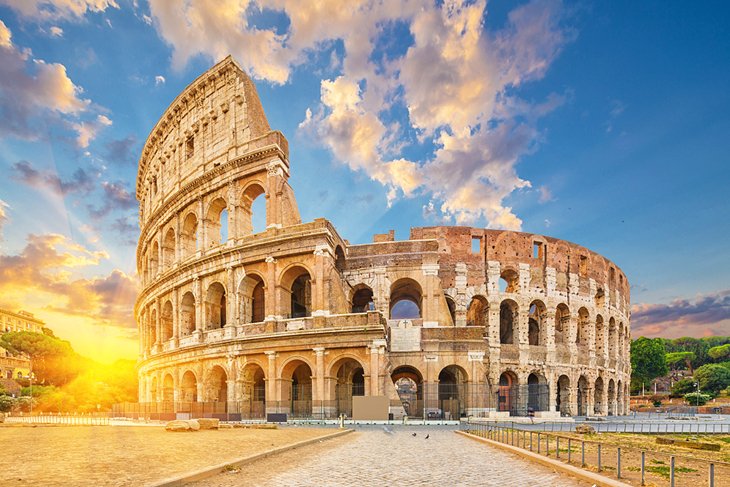
Not surprisingly, the Forum sat at the heart of ancient Rome, so many of that era's most important sights are all around it: the Colosseum , Palatine Hill , and Nero's recently excavated Domus Aurea (Golden House). It's only a short distance to the church of San Pietro in Vincoli , and the Basilica of San Clemente is not far beyond the Colosseum.
At the Colosseo Metro stop, the Oppio Caffe serves pizza and antipasto plates, and is a good stop for coffee. Right above it, on Via Nicola Salvi, is La Biga Ristoracaffe , with outdoor and indoor tables.
Or follow Via degli Annibaldi or Via Colesseo to Via Cavour, in the heart of the Monti neighborhood, where you'll find a concentration of restaurants. Trattoria Da Valentino , at #293 serves home-style Roman dishes. Even closer, opposite the Domus Aurea, Hostaria da Nerone also serves Roman comfort foods.

Via Cavour and its surrounding streets are filled with small shops and boutiques. For leather goods look for verypel , and for original designs in handmade clothing, stop at designer-owned Abito .
Momte is especially known for its vintage clothing shops. Among them are Pifebo on Via dei Serpenti, and Humana Vintage Roma on Via Cavour. For designer fashions, handcrafts, and art, don't miss the weekend Mercato Monti on Via Leonina, where young and emerging designers and artists display their works.
More Related Articles on PlanetWare.com

What to See in Rome: When you're visiting the top-rated tourist attractions in Rome be sure to see our handy guides to the top churches and the best museums and palaces . Our page on visiting Palatine Hill will help you get the most out of this less-visited attraction that's included with your Colosseum ticket.
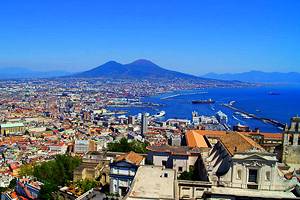
Where to Go from Rome: Many of the best places to visit in Italy are easy to reach on day trips from Rome. You can visit Pompeii and the other city destroyed by the eruption of Vesuvius in AD 79, Herculaneum , or take extra time to see the attractions of Naples .
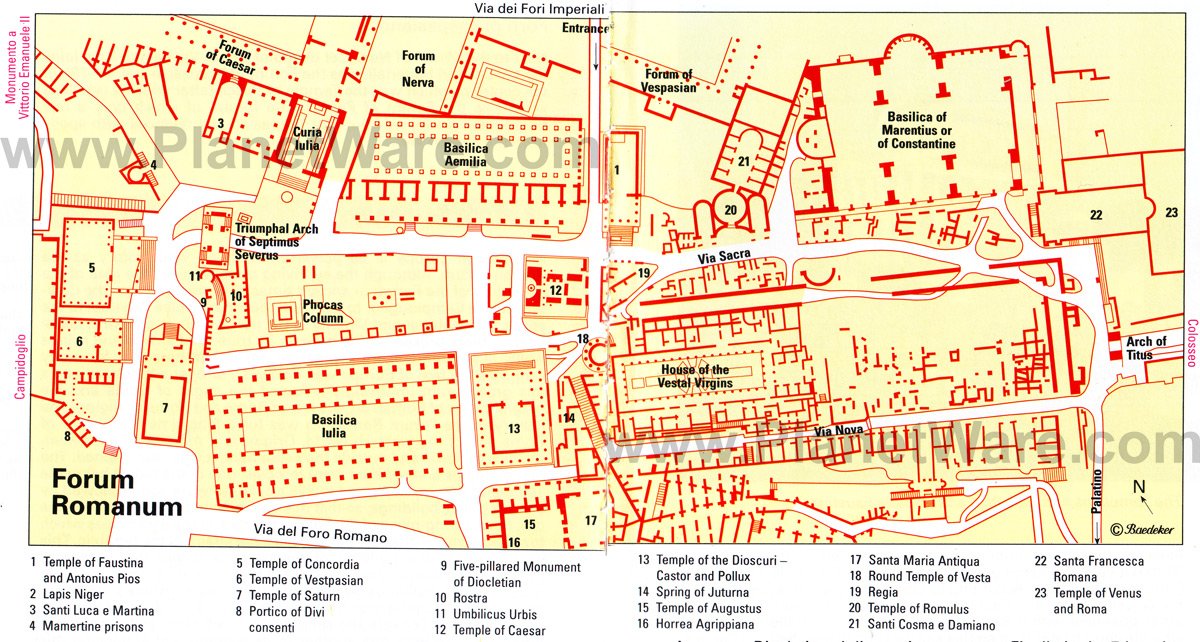
More on Italy


Guide To The Monuments Of The Roman Forum
Visiting the Roman Forum is a highlight for anyone traveling to Rome.
The 2,000 year old site, now a sprawling expanse of romantic ruins, was once the beating heart of the Roman Empire. Walking through it, you’re treading the same ground where ancient Rome’s most important events unfolded.
Exploring the Roman Forum can seem overwhelming at first, but don’t worry! With this guide to the Roman Forum, you’ll easily recognize and understand the significance of each monument.
What is the Roman Forum?
The forum is a rectangular valley running from Arch of Titus to the Arch of Septimus Severus near Capitoline Hill.
The forum’s main road is the Via Sacre. It’s basically the Broadway of Ancient Rome. Much of the paving of the Via Sacre is original to Ancient Rome.
The forum was dense with construction. It was the epicenter of ancient Rome, the seat of power, and its central showpiece.
It was a grandiose district consisting of gleaming white temples, grand basilicas, and vibrant public spaces — fit for an empire that ruled half of the known world.
The Forum was the scene of political upheavals, funerals, and triumphant parades. Before the Colosseum was built, it even hosted gladiatorial battles.
By the close of the imperial period, the forum was a densely stuffed with “modern” ancient buildings. Layers of churches and fortresses were built atop and amid the ancient remains.
After the 4th century, the Forum fell into disrepair and almost total obscurity. It became a quarry for building stone.
In the 18th century, the forum ignominiously lapsed into a cow pasture covered in layers of dirt and rubble.
Only in the 18th and 19th century did excavation begin, uncovering the buried treasure. Excavations continue today.
Tickets & Tours
The Roman Forum is one of Rome’s three important imperial sites, along with the Colosseum and Palatine Hill . These sites are typically visited with one trifecta ticket or ticket + tour.
Tickets are issued on the website exactly 30 days in advance. They are a hot commodity. Click here to book skip the line tickets for all three sites.
Booking a guided tour can really enhance your visit to the Roman Forum, especially since it’s such a vast and complex site.
Unless you’re a repeat visitor, without a guide, it can be tough to fully appreciate everything there is to see.
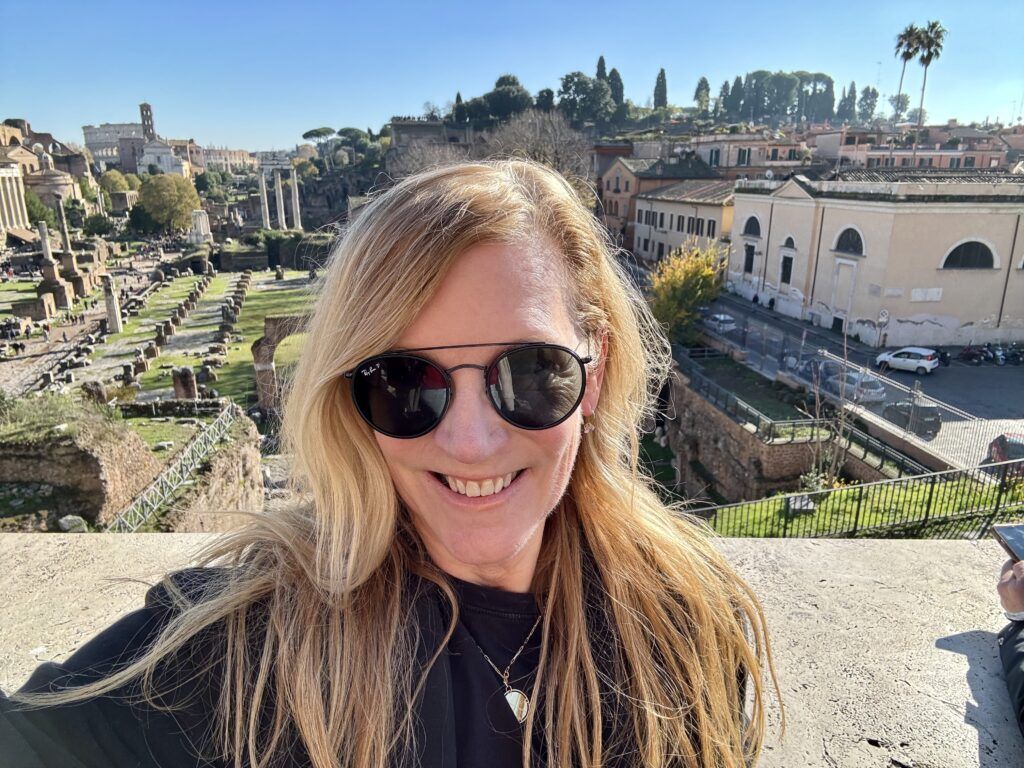
There are several tour options available, each with different durations and focuses. Choose one that aligns best with your interests and schedule.
I’ve personally taken the third and sixth tours on the list. They really helped bring the history of the place to life!
- skip the li ne entr y tickets to all 3 sites
- 3 hour gu ided tour and en try t o all 3 sites
- tickets & tour of all 3 sites + underground Colosseum access
- C oloss eum tour with e ntry tickets for Palatine Hill and the Roman Forum
- 4 ho ur priv ate d ay tour of Ancient Rome
- skip the lin e private guided tour with an art historian
Guide To The Roman Forum: What To See
1. arch of constantine.
If you’re a Christian, this arch is a symbol of your religion.
Constantine’s Arch represents a landmark in history, when a military battle made Christianity the mainstream religion in Rome and the entire Western World.
In 312, Emperor Constantine defeated his enemy and co-emperor Maxentius in the Battle of the Milvian Bridge, a turning point in their dispute. Legend holds that, the night before, Constantine dreamt of a cross in the sky.
When Constantine was victorious the following day, Maxentius fell off the bridge and drown. Constantine became sole emperor.
Straight away, he ratified the Edict of Milan, a religious tolerance act. It was the beginning of Christianity as the official state religion. One wonders what world history would be like if Constantine lost the battle …
Newly restored, the Arch of Constantine tells the story of his great victory. The arch is made entirely of carvings and decoration from other buildings with military imagery. An inscription on the top level announces that Constantine was the builder.
In the round reliefs, you see Emperor Hadrian. In the square reliefs you see Marcus Aurelius. The arch is topped with statues of Augustus and Trajan. In this manner, Constantine conflates himself with past great emperors.
READ : History of the Roman Emperors
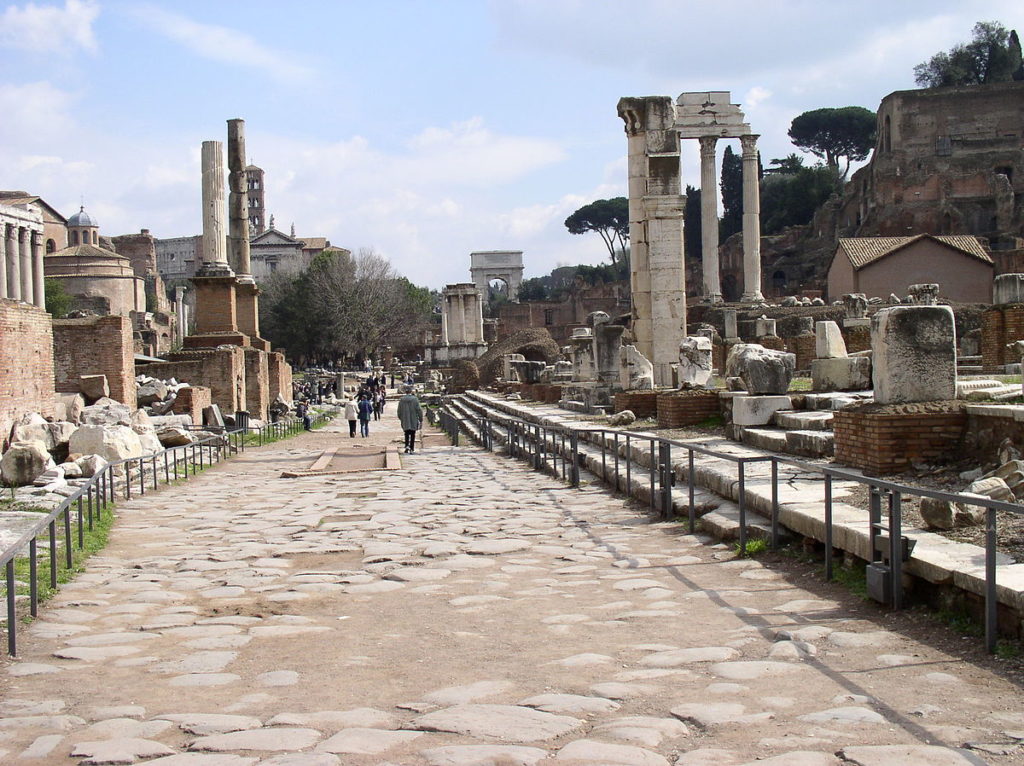
2. Via Sacra
The Via Sacra is the main street of the Roman Forum and it connects many of its monuments.
It’s a historic path where the story of Rome unfolded. This road was the center of Roman life, frequented by famous historical figures like Caesar, Cicero, Pompey, and Augustus. It was also the route Roman generals took to celebrate their victories.
Today, the Via Sacra might not look as grand as it once did. Many of its original paving stones are missing or uneven.
But as you walk down this road, remember that you’re following in the footsteps of some of Rome’s most influential people.
3. Temple of Venus and Rome
The Temple of Venus and Rome was another massive temple in the Roman Forum. Over 100 feet tall, it was once one of ancient Rome’s most impressive monuments.
The temple was designed by Emperor Hadrian. As was his preference, the temple is Greek in design. It was once surrounded by white columns, which now mark the perimeter.
The Temple of Venus and Rome is really just a shell now. The main ruin is an apse in the center.
It’s a brick arch with a cross hatched ceiling. The ceiling was installed by Maxentius in 307.
The temple once consisted of two main chambers, each preceded by a vestibule. Inside were two colossal statues of Venus and the goddess Rome Aeterna. Their Latin names, Roma and Amor, are inscribed on the walls, equating the city of Rome and the concept of love.
4. Arch of Titus
The Arch of Titus, one of three triumphal arches in the Roman Forum, stands as a monumental reminder of Rome’s military victory over Judea.
Built in honor of Emperor Titus by his brother Domitian, this structure is a mix of triumph and tragedy.
The inscription on the arch, “the Senate, the People of Rome,” harks back to the era of the Roman Republic, which ended with Augustus becoming emperor.
The arch is known for its darker narrative: it symbolizes the defeat and displacement of the Jewish people following the Fall of Jerusalem.
Titus’ siege led to the city’s destruction, the enslavement of thousands, and the desecration of the sacred temple, of which only the Wailing Wall remains today.
Inside, the arch features imagery of Roman soldiers carrying a menorah from the temple, symbolizing the exile of the Jewish population, a historical event whose repercussions are still felt today.
The arch once displayed colorful statues and showed the emperor in a victory parade.
The red color on the emperor’s face represented his vanquished enemies. The central panel in the arch depicts Titus’s apotheosis, immortalizing him as a god observing from the heavens.
5. Basilica of Maxentius and Constantine
Sited on Velia Hill, the Basilica of Maxentius and Constantine is an absolutely enormous building.
It was built with unprecedented technology and oozes Roman imperial power. The Romans used concrete, with inset bricks that were then covered in marble.
The basilica is a massive structure made up of three barrel vaults. It’s as if the city was built for giants, not humans.
But the monumental basilica is now less than one third of what it once was.
The basilica wasn’t a church as the name suggests. Rather, it was a Roman hall of justice. Litigious citizens could come here to lodge a lawsuit, bicker about inheritances, or get building permits.
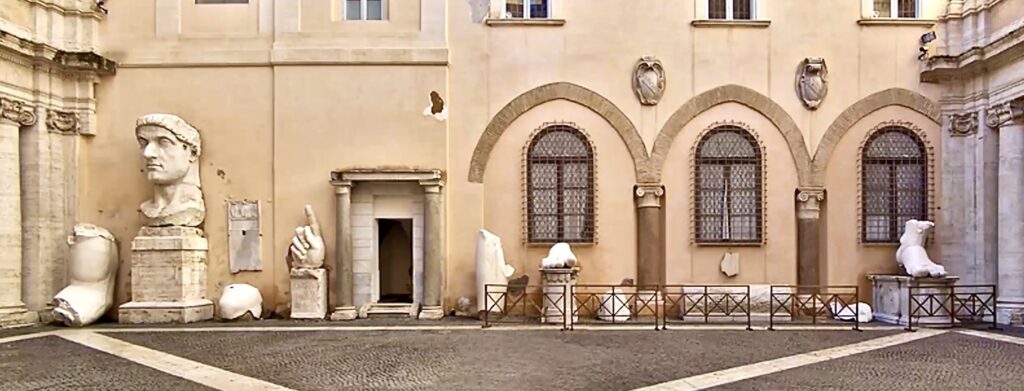
The three arches are the three bays that made up one of the two side aisles of the basilica. What’s no longer there is the central aisle or nave.
The basilica was begun by Maxentius. Constantine completed it, after he vanquished his rival and co-emperor.
There was originally a colossal statue of Constantine on a throne in the nave. Chunks of the 30 feet original statue are in a courtyard of the wonderful Capitoline Museums .
The basilica interior was elaborate, with intense color and ornamentation. The nave was lavishly furnished with gilded ceilings, inlaid marble, and sculptures.
6. Temple and House of the Vestal Virgins
The only people who lived in the Roman Forum were the members of the Cult of Vesta, led by the high priest Pontifus Maximus.
The vestal virgins were extremely famous. Their temple was one of ancient Rome’s holiest spots.
The virgins came from Rome’s noblest families, chosen at the age of 10. They took a vow of chastity for 30 years. They were sacred living creatures. Their job?
To keep alive the flame of Vesta in the circular Temple of Vesta, which symbolized the hearth of the Roman family.
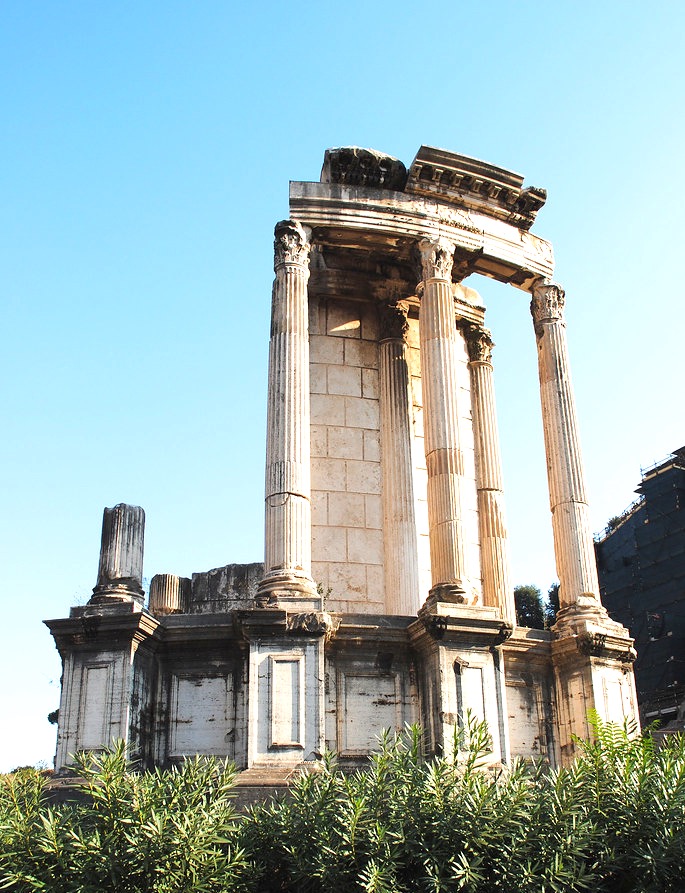
As long as the fire burned brightly, Rome was supposedly safe. The temple was once surrounded by 20 columns.
The House of the Vestal Virgins was a two story building.
The building surrounded a long courtyard with three pools and mosaic floors. The house became a model for later medieval cloisters.
There’s not much left to see, aside from a cult room and sculpures of the vestals.
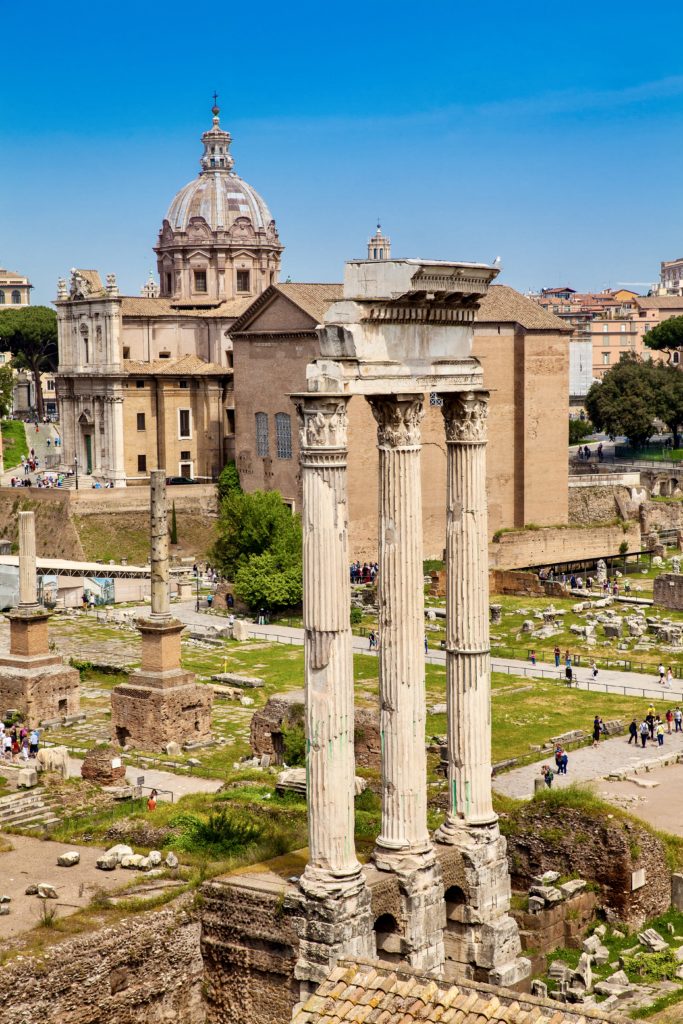
7. Temple of Castor and Pollux
Dating from the 5th century B.C., this former temple consists of just three leafy Corinthian columns. But it was once a prestigious temple in the forum.
The temple commemorated the Roman victory over the reviled Etruscan king Tarquin. After their victory, Castor and Pollux, twin sons of the god Jupiter, watered their horses on the spot.
The temple was often used as meeting place for senators. The front steps served as a podium for Rome’s orators.
8. Domus Tiberiana
Domus Tiberiana is an impressive imperial palace on the slopes of the Roman Forum. Although the entrance is on Palatine Hill, it feels like it’s part of both the hill and the forum because you can easily see it from the forum area.
This once grand estate covered nearly 10 acres, featuring luxurious residences, gardens, spaces for the Praetorian guard, and places for worship. Its standout feature is the facade, marked by large arches and barrel vaults.
The Domus Tiberiana was only discovered in 2004. After years of excavation, it opened to the public in September 2023. I visited in December and it was a truly special experience.
You’ll can only visit with a special SUPER ticket. Individual tickets are not available. For more on how that works, you can check out my guide to the SUPER ticket .
>>> Click to buy a SUPER ticket on Viator
9. Temple of the Divine Caesar
The Temple of the Divine Caesar in the Roman Forum is a famous monument dedicated to Julius Caesar, a pivotal figure in Rome’s transition from republic to empire.
The temple told the story of Caesar’s life. But it also marks the spot where Caesar, assassinated on March 15, 44 B.C., was cremated and buried.
You may get the willies standing there. This is a spot where history changed. Yet, it’s rather underwhelming to look at.
It’s a simple area with a modern canopy covering the remains of an altar. This modest mound is often covered with coins and flowers.
10. Temple of Romulus
The origin of the Temple of Romulus has been the subject of conjecture.
Most historians think that Emperor Maxentius used it as a temple for his son Valerius Romulus, who died at age 4 in 309 and was deified.
The temple’s original bronze door is decorated with two porphyry columns — a marble so rare that it’s almost extinct. Inside, the temple has several cycles of frescoes.
Inside, here are 13th century wall paintings that imitate curtains. There’s also a funerary tabernacle with a madonna and child.
They only allow a set number of people in at a time. So you should expect to wait in line.
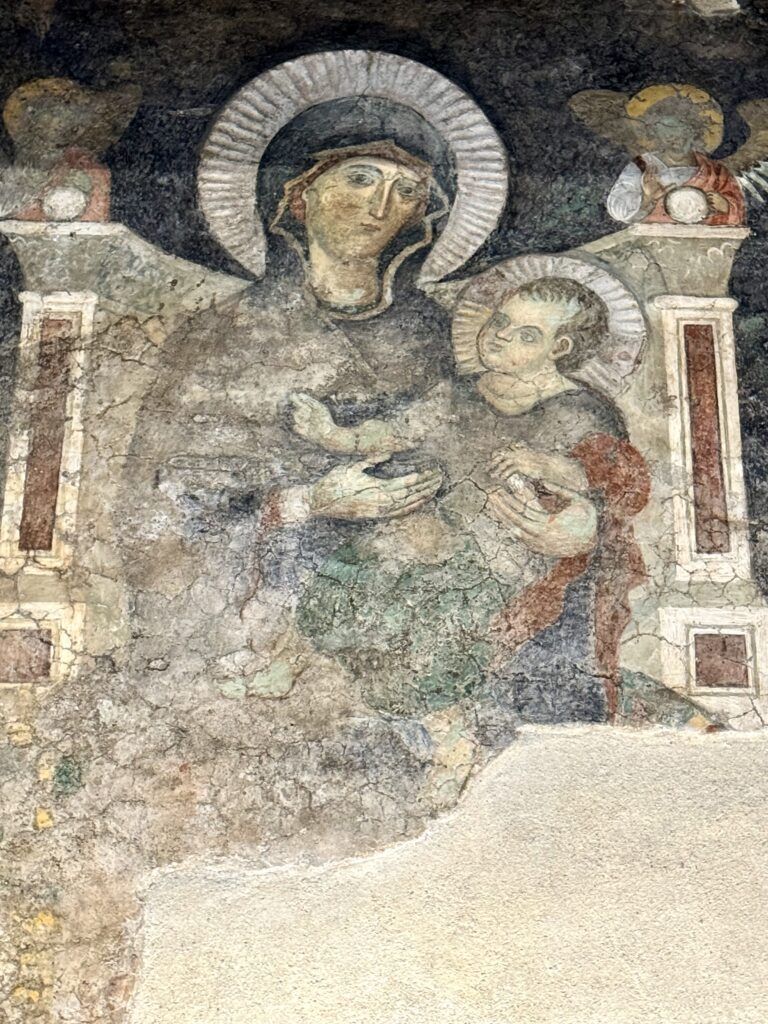
11. Temple of Antonius and Faustia
This temple was built by the Emperor Antonius for his deceased wife, the beautiful Faustina who died young. Historians consider Antoninus to be part of the five “Good Emperors.”
Antonius wasn’t long for the world either. So he decided to slap his own name on the temple as well. That meant he could walk through the forum and see people worshipping him while he was still alive.
The temple has a majestic front. The Corinthian columns are 50 feet high, with formerly gilded capitals.
A staircase led to a shaded loggia past the columns, which admitted Romans to the building. The original triangular pediment would have held vividly colored statues.
12. Santa Maria Antiqua
Santa Maria Antiqua is one of the earliest surviving Christian churches in Rome.
The Byzantine church was discovered in 1900. It was built within a 1st century Roman structure constructed by Emperor Domitian.
The church has a wealth of rare Byzantine style frescos from the 6th to 9th centuries. They depict the lives of Jesus and the Virgin Mary.
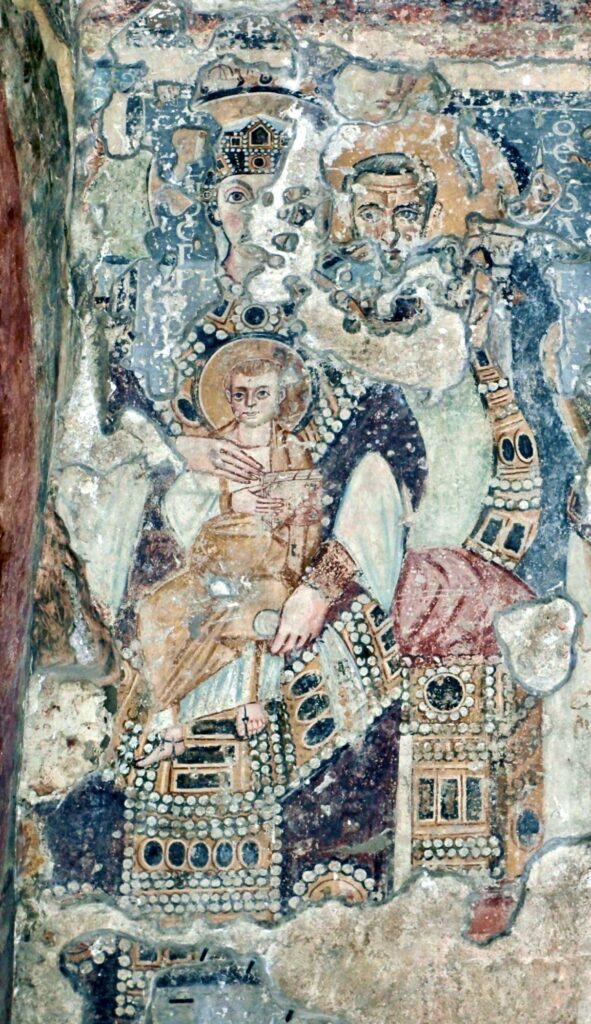
You’ll find one of the world’s oldest depictions of Jesus’ crucifixion. Christ is shown in a sleeveless blue robe.
The best preserved fresco is the cycle of the martyrdom of St. Cyricus and St. Julitta, which covers the Chapel of Theodotus. It’s considered the Sistine Chapel of the medieval era.
During a 9th century earthquake, the church was buried in rubble. It was sealed from the world for over 1000 years, only discovered in 1702. This fate might have saved the precious works from a subsequent Baroque redo.
You can only visit with the SUPER ticket. There is a 3D light show that reconstructs the frescos so you can see what they once looked like in more detail.
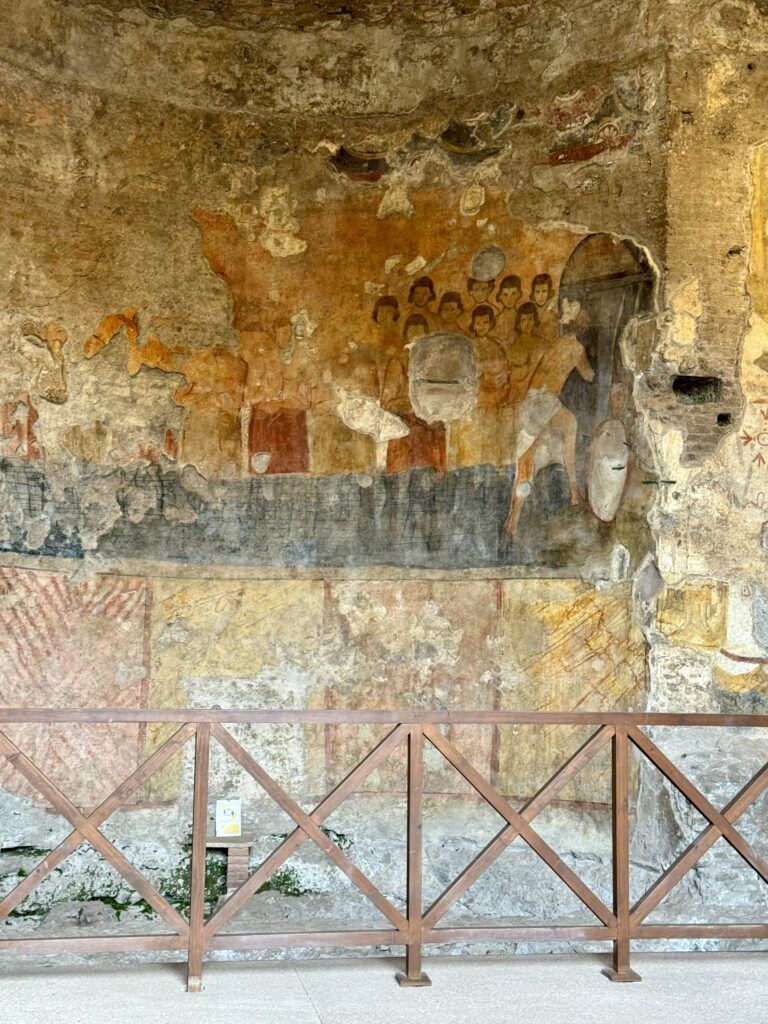
13. Oratory of the 40 Martyrs
Right next to Santa Maria Antiqua, you’ll find the Oratory of the Forty Martyrs, another SUPER site. This smaller room has some faded, but still beautiful, collection of 8th and 9th century frescoes.
The oratory gets its name from the Forty Martyrs of Sebaste, a group of Roman soldiers martyred under Emperor Diocletian for their Christian beliefs.
The frescoes on the walls vividly portray these saints and martyrs, including the Forty Martyrs themselves.
These paintings are key examples of early medieval Christian art and illustrate the martyrs’ ordeal and execution, where they were forced to endure a freezing night in an icy lake.
14. Domitian’s Ramp
In ancient Roman times, Santa Maria Antique was likely the entrance hall to the 1st century Ramp of Domitian. The ramp connected the public area of the Roman Forum to the private imperial palace complexes on Palatine Hill.
It was discovered by Giacomo Boni, an architect and archaeologist. He excavated it mostly between 1899 to 1905.
The ramp has seven levels, six hairpin turns, and is both above and under ground. It empties into a hilltop terrace with a breathtaking view over the Roman Forum.
After years of conservation, the church and ramp opened to the public in 2015. Now, with the SUPER Pass, you can walk along the 2000 year old passage, just like the emperors did.
15. Arch of Septimius Severus
The grand six story Arch of Severus celebrated Emperor Severus’ victory in Mesopotamia.
It’s adorned with reliefs showing soldiers leading captives and slaves back to Rome, reflecting a time when Rome increasingly relied on plunder, contributing to its eventual decline.
Dedicated to Severus’ sons, Caracalla and Geta, the arch became a symbol of family betrayal.
After Severus’ death, Caracalla, who would gain notoriety as an emperor, murdered Geta to rule alone and then erased all traces of his brother from history, including mentions of the arch.
The arch itself features three vaulted passageways, flanked by four detached columns on elevated bases. Below the arch is a circular base, marking the exact center of ancient Rome and symbolizing the saying, “all roads lead to Rome.”
16. Temple of Saturn
This temple, the oldest in the Roman Forum, was more than just a place of worship. It served as the treasury of Ancient Rome.
racing its origins back to the 5th century B.C., the structure you see today was actually rebuilt in the 4th century A.D.
As you look at the temple, the columns that catch your eye once framed its entrance.
Inside, there was once a simple wooden statue of the god Saturn. Interestingly, the statue had a secret: its base was a storage spot for treasures, filled with various forms of booty and plunder from Rome’s conquests.
17. Curia Julia | Sant’Adriano al Foro
The remains of the Curia Julia date from 283. The curia was completely restored in the 1930s.
This was the Supreme Court of Rome, and the most important political building in the forum. The senators gave speeches and promulgated the laws of the land. There were four chambers hearing cases.
It was common for the orator-lawyers to go outside and pay people to come in and clap during their rousing orations. They were essentially professional clappers.
If the curia is open, you can see two statues. One headless statue, made of porphyry marble was dedicated to either Hadrian or Trajan. Unfortunately, it’s usually closed.
18. Rostrum
The Rostrum was the “Speaker’s Corner.” Archaeological evidence suggests that it has existed since the 5th century B.C. But it wasn’t officially called the “rostra” until the 4th century A.D.
The Rostrum was a long stage created for Rome’s great orators to speechify to the assembled masses and try to sway public opinion.
The rostrum was likely 10 feet high and 80 feet long, ornately decorated with columns and statues.
During the republic, freedom of speech reigned free. During the empire, free speech took a hit when it was more dangerous to speak truth to power.
Great events in Roman history occurred here. Cicero railed against Rome’s corruption and decadence. Mark Anthony offered the laurel of kingship to Caesar, who dramatically refused preferring to be a private dictator.
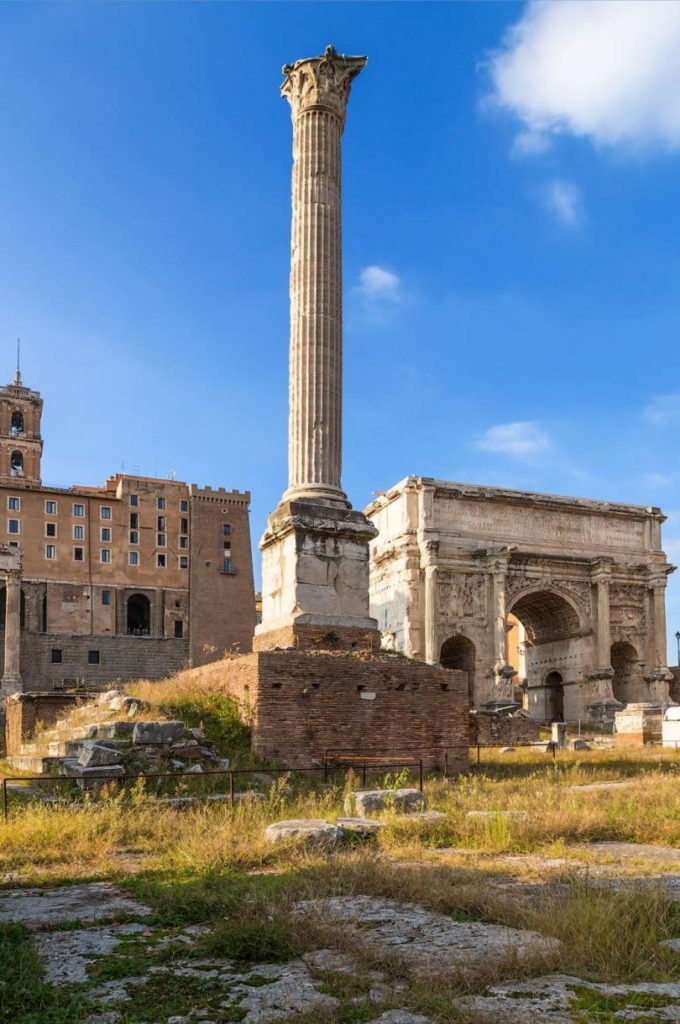
19. Column of Phocas
The Column of Phocas was the last monument to be erected in the Roman Forum. It’s a triumphal column in honor of Phocas, a 7th century Byzantine emperor who ruled Rome from the east.
The column was supposed to represent a unified Rome, a new dawn for the Roman world. But that was a delusion. Rome was on its way out.
And so was Phocas. He had murdered his predecessor to usurp the throne in 602. Two years after this column was erected, he himself was assassinated.
Phocas did succeed in one thing though. He gifted the Pantheon to the Pope Boniface IV to turn into a church, probably saving it from ruin.
The 45 foot column is a little piecemeal. The base once propped up a statue of Diocletian. The column itself was taken from an older building.
It’s recently been restored.
Practical Guide & Tips For The Roman Forum
Address : Via della Salara Vecchia between Piazza Venezia and the Colosseum
Hours : Daily 8:30 am to 7:00 pm
Ticket Price : Combined ticket to visit The Roman Forum, the Colosseum, and Palatine Hill is 16 euros. There is an online booking fee of 2 euros.
Metro : Colosseo
Pro Tips : You can also visit the Roman Forum using the Roma Pass , which is a cumulative ticket that provides free or reduced rates for more than 40 attractions plus public transportation.
I have you’ve enjoyed my guide to the monuments and ruins of the Roman Forum. You may enjoy these other Rome travel guides and resources:
- 8 ways to spend 1 day in Rome
- 3 day itinerary for Rome
- 5 day itinerary for Rome
- 1 day itinerary for Vatican City
- Hidden gems in Rome
- Best museums in Rome
- Guide to the Borghese Gallery
- Guide to Palatine Hill
- Guide to the Colosseum
- Walking tour of central Rome
Pin it for later.
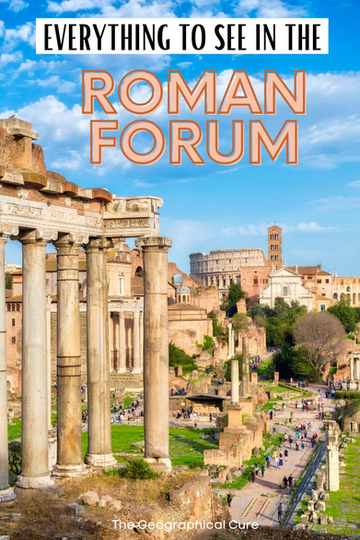
Leave a Comment Cancel reply
Save my name, email, and website in this browser for the next time I comment.
Last Updated on January 21, 2024 by Leslie Livingston
What to See in the Roman Forum
Visiting the Ancient Forum in Rome
TripSavvy / Taylor McIntyre
Top Sights at the Roman Forum
The Roman Forum is one of Rome's most important attractions . But it is a jumble of marble fragments, triumphal arches, temple ruins, and sundry other ancient architectural elements from various time periods. This run-down of some of the Forum's most important attractions runs from east to west, beginning at the Colosseum . See this map of the Roman Forum to get an idea of the layout of the ruins.
Arch of Constantine - This massive triumphal arch sits on the Piazza del Colosseo right outside of the ancient amphitheater. The arch was dedicated to Constantine in 315 A.D. to commemorate his victory over co-emperor Maxentius at the Milvian Bridge in 312 A.D.
Via Sacra - Many of the Forum's buildings are laid out along the Via Sacra, the ancient triumphal "sacred" road.
Temple of Venus and Rome - Rome's largest temple, dedicated to the goddesses of Venus and Rome, was built by Emperor Hadrian in 135 A.D. It sits on a high hill near the entrance of the Forum and is inaccessible to tourists. The best views of the temple ruins are from inside the Colosseum.
Arch of Titus - Built in 82 A.D. to commemorate Titus's victory over Jerusalem in 70 A.D., the arch contains depictions of the spoils of Rome's conquest, including a menorah and altar. The arch also was restored in 1821 by Giuseppe Valadier; Valadier included an inscription detailing this restoration as well as darker travertine marble to differentiate between the ancient and modern parts of the arch.
Basilica of Maxentius - The once-gigantic basilica is mostly a shell, of which only the northern aisle remains. Emperor Maxentius began the construction of the basilica, but it was Constantine who saw the basilica's completion. Thus, this building is also known as the Basilica of Constantine. Here is where the giant statue of Constantine, now in the Capitoline Museums , initially stood. The huge exterior of the basilica forms part of a wall running along the Via dei Fori Imperiali. On it are maps showing the expansion of the Roman Empire.
Temple of Vesta - A small shrine to the goddess Vesta, constructed in the 4th century AD and partially restored in the early 20th century. Inside the shrine was an everlasting flame to the goddess of the hearth, Vesta, and it was tended by the Vestal Virgins who lived next door.
House of the Vestal Virgins - This space contains the remains of the house of the priestesses who tended to the flame in the Temple of Vesta. Surrounding a couple of rectangular ponds are approximately one dozen statues, many of them headless, which depict some of the high priestesses of the Vestal cult.
Temple of Castor and Pollux - The twin sons of the god Jupiter were worshiped from a temple in this spot from the 5th century B.C. The ruins which remain today date from 6 A.D.
Temple of Julius Caesar - A few ruins remain of this temple, which was built by Augustus to commemorate the spot where his Great Uncle's body was cremated.
Basilica Julia - Some stairs, columns, and pedestals remain from Julius Caesar's great basilica, which was built to house law documents.
Basilica Aemiia - This building sits just inside one of the Forum entrances, at the intersection of Via dei Fori Imperiali and Largo Romolo e Remo. The Basilica was built in 179 B.C. and was used for money lending and as a meeting place for politicians and tax collectors. It was razed by the Ostrogoths during the Sack of Rome in 410 A.D.
Curia - Rome's Senators met in the Curia, one of the earliest buildings constructed in the Forum. The original Curia was destroyed and rebuilt several times, and the one standing today is a replica of one built by Domitian in the 3rd century A.D.
Rostra - Mark Antony made the speech that began "Friends, Romans, Countrymen" from this ancient dais after Julius Caesar's assassination in 44 B.C.
Arch of Septimius Severus - This striking triumphal arch at the western end of the Forum was built in 203 A.D. to commemorate Emperor Septimius Severus's 10 years in power.
Temple of Saturn - Eight columns survive from this large temple to the god Saturn, which is located near the Capitoline Hill side of the Forum. Archeologists believe that a shrine to the god existed in this space since the 5th century B.C., but these iconic ruins date from the 4th century A.D. The set of three columns that practically float next to the Temple of Saturn are from the Temple of Vespasian.
Column of Phocas - Erected in 608 A.D. in honor of the Byzantine Emperor Phocas, this single column is one of the last monuments to be placed in the Roman Forum.
Read Part 1: Roman Forum Introduction and History
Essential Ancient Sites to Visit in Rome
10 Top Things to Do in Rome's Monti Neighborhood
The 25 Top Attractions in Rome, Italy
Rome's Palatine Hill: The Complete Guide
A Visit to the Forum in Rome
3 Days in Rome: What to See and Do
Where to Go in Rome to Take the Best Photos
Top Roman Cities and Ancient Sites in France
Rome Events Calendar
The 14 Best Day Trips from Rome
Temple of Apollo at Delphi: The Complete Guide
Your Trip to Rome: The Complete Guide
22 Things to Do in Central Naples, Italy
Rome's Basilica di San Clemente
Top 18 Things to Do in Athens, Greece
Top 15 Monuments and Historic Sites in Paris
- History Classics
- Your Profile
- Find History on Facebook (Opens in a new window)
- Find History on Twitter (Opens in a new window)
- Find History on YouTube (Opens in a new window)
- Find History on Instagram (Opens in a new window)
- Find History on TikTok (Opens in a new window)
- This Day In History
- History Podcasts
- History Vault
Roman Forum
By: History.com Editors
Updated: July 25, 2023 | Original: March 8, 2018
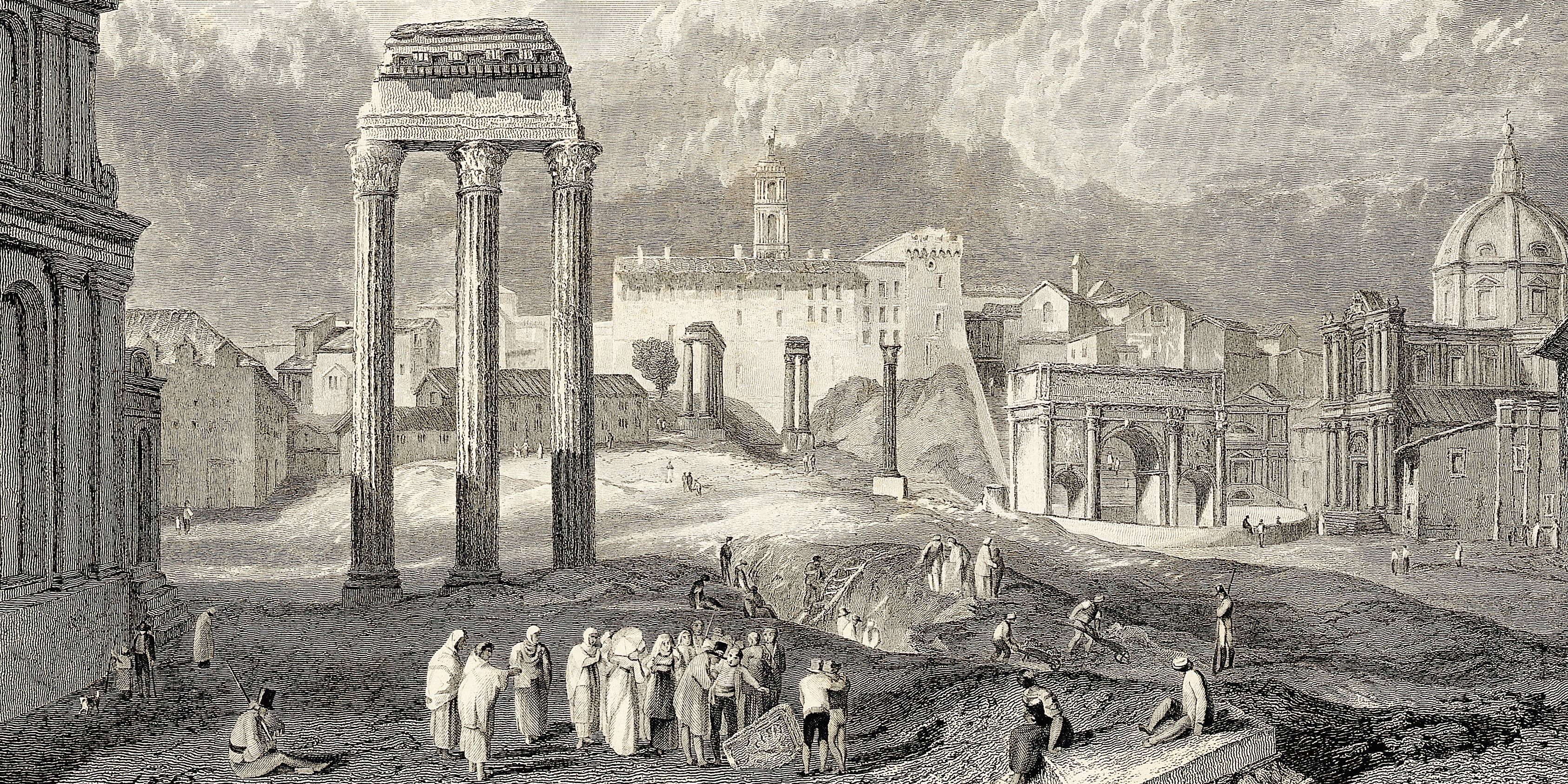
The Roman Forum, known as Forum Romanum in Latin, was a site located at the center of the ancient city of Rome and the location of important religious, political and social activities. Historians believe people first began publicly meeting in the open-air Forum around 500 B.C., when the Roman Republic was founded. The rectangular-shaped area, sited on low-lying land between Palatine Hill and Capitoline Hill, was home to many of the ancient city’s most impressive temples and monuments. Today, the Roman Forum is one of the most famous tourist sites in the world, attracting more than 4.5 million visitors annually.
Forum’s Early History
According to a widely accepted legend, ancient Rome was founded by brothers Romulus and Remus in 753 B.C. After a rising conflict, Romulus killed Remus, became king and named Rome after himself.
The traditional story also credits Romulus with starting an alliance with his rival, Titus Tatius, and making the site of the Roman Forum a neutral meeting zone.
At first, the Forum essentially served as a marketplace for day-to-day shopping. Over time, it became much more versatile and functional, as public affairs were held in the area.
Historians estimate that the rise of public events in the Roman Forum first took place around 500 B.C., when the Roman Republic started.
The Forum gradually developed, progressed and expanded over many centuries. Statues, arches, basilicas and other buildings were constructed to accommodate the gatherings.
Around the reign of Julius Caesar , the Forum became overcrowded. Caesar is credited with building a new forum, off to the side of the original, to offer more space. Later, the Emperor Augustus also added on to the area.
Roman Forum Functions
The Forum was considered the heart of Rome. While there were many other forums in ancient Rome, the Roman Forum was the most significant.
It was a multi-purpose site that accommodated various functions. Events taking place in the Forum included:
- Public speeches
- Criminal trials
- Gladiator matches (before the Colosseum was built)
- Social gatherings
- Business dealings
- Public meetings
- Religious ceremonies
- Educational events
- Buying, selling and trading of items
Important Sites in the Forum
Several important buildings, statues and monuments were located in the Forum. Some temples were built to honor men, and others were dedicated to gods or goddesses.
Some of the most well-known structures in the Roman Forum include:
Senate House: The senate house, known as the “Curia,” served as the council house for the Roman Senate and a site for various political events. It was rebuilt several times, and in the 7th century, the Curia was converted into a church.
Temple of Saturn: The first Temple of Saturn was built around 498 B.C. and is considered one of the earliest temples in the Roman Forum. But it was rebuilt years later, and the current ruins date back to roughly 42 B.C. This building was dedicated to Saturn, the god of agriculture, and was used as a treasury—where Rome’s money was managed and kept.
Arch of Titus: This first-century arch was constructed in 81 A.D. by the Emperor Domitian to honor his brother, emperor Titus, who was victorious in the Siege of Jerusalem .
Temple of Vesta: The Temple of Vesta was a circular-shaped temple that was dedicated to Vesta, the goddess of hearth, home and family.
The Rostra: The Rostra was a platform that people could stand on to give speeches.
Temple of Castor and Pollux: Historians believe this temple was completed in about 484 B.C. It was dedicated to the Roman twin demi-gods, Castor and Pollux, and underwent several construction phases.
The Sacra Via: This was the main road that ran through the Roman Forum and connected the various important sites. This famous street also stretched to the Colosseum , which was within walking distance of the Forum. It primarily served as a pathway for ceremonies and processions.
Roman Architecture and Art
The Roman Forum was reconstructed many times during its existence. This allowed for various forms of architecture from different eras to merge together. Influence from each period can be seen in the design and construction of the buildings.
Roman architects were greatly influenced by classical Greek designs. But, the Romans also created their own signature structures, such as basilicas, triumphal arches, domes, Roman baths and amphitheaters. Materials ranged from concrete to magnificent marble.
The Roman Forum, and the ruins themselves, also served as a source of inspiration for artists. The famous Giambattista Piranesi, an Italian artist who lived during the 1700s, was known for creating a set of etchings that depicted views of Rome.
Sites in the Forum are also mentioned in historic literature: ancient Rome was, for example, the setting for several of William Shakespeare’s works.
Decline of the Roman Forum
Over time, many economic and political events began to take place in more elaborate structures to the north of the Forum.
The last major expansion to the Roman Forum, the Basilica of Maxentius, took place during the reign of Constantine in 312 A.D.
But most of the ancient buildings and sites in the Roman Forum were destroyed in 410 A.D., around the time that the entire Roman Empire began to fall.
During the Middle Ages , the land that was once the great Roman Forum was reduced to a pasture for grazing animals. The area became known as “Campo Vaccino,” or “cattle field” and was essentially an overgrown, neglected field.
Excavating the Forum
The Roman Forum was “rediscovered” by archeologist Carlo Fea in 1803.
Excavations to clear the area took over 100 years. In fact, it wasn’t fully excavated until the early 20th century.
Because the Romans built over earlier ruins, the remains from several centuries can be found in the Forum.
Roman Forum Today
Today, the Roman Forum is a popular tourist attraction. Visitors can get a first-hand look at the ancient ruins and architectural fragments that were left behind. Persistent efforts to restore and preserve the ruins remain a top priority.
Excavations are ongoing in and around the Forum. Historians are still trying to uncover new findings that could give them answers about Rome’s exact age. For instance, in 2009, a group of archeologists found pottery remains and foods scraps around a wall that dated back to the 8th or 9th century B.C. This is more than a century before most experts thought Rome was founded.
The ancient remains are mysterious in many ways, but they offer unprecedented insight into Roman civilization.
The Roman Forum, Ancient History Encyclopedia . The Roman Forum, KhanAcademy . Roman Forum, TribunesandTriumphs.org . The Ancient Roman Forum, ThoughtCo . Ancient Rome , Ancient History Encyclopedia . Interesting Facts About the Roman Forum, Just Fun Facts . Roman Architecture, Ancient History Encyclopedia .
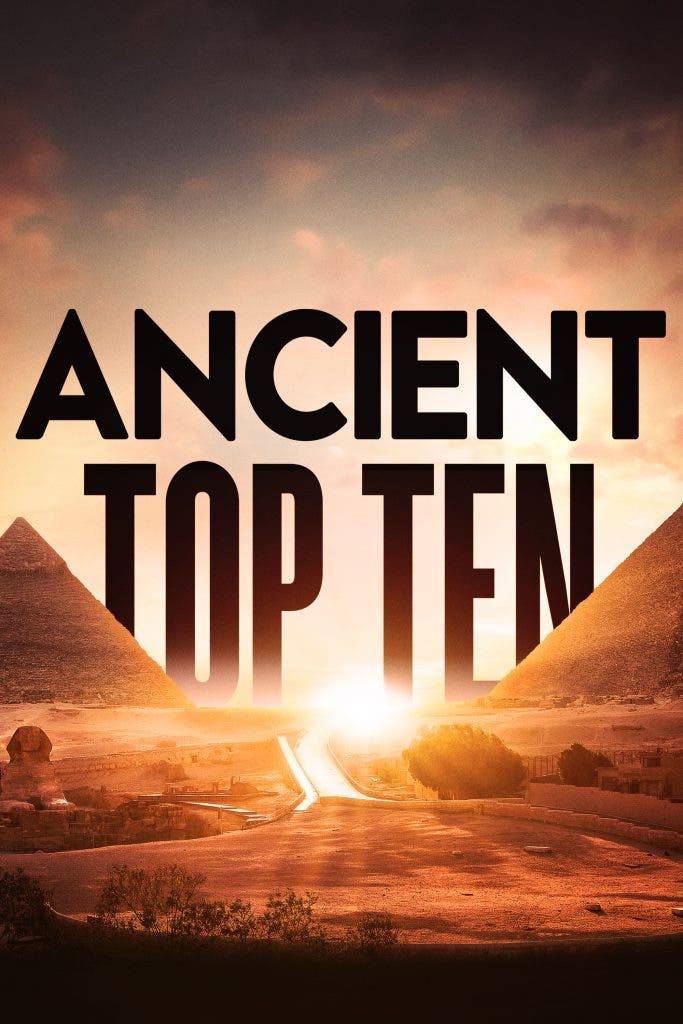
HISTORY Vault: Ancient Top 10
A smart, fun countdown that details how ancient technology worked, how surprisingly advanced it was and how it was kind of awesome!

Sign up for Inside History
Get HISTORY’s most fascinating stories delivered to your inbox three times a week.
By submitting your information, you agree to receive emails from HISTORY and A+E Networks. You can opt out at any time. You must be 16 years or older and a resident of the United States.
More details : Privacy Notice | Terms of Use | Contact Us
You are using an outdated browser. Please upgrade your browser .
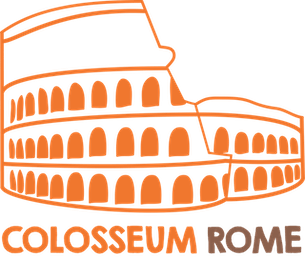
- Skip the line tickets
- Roman Forum
How to visit Roman Forum ? Skip the line Tickets, Hours and Entrance Location

- In Roma Pass Roman Forum Skip the line tickets
Wondering if you need tickets for the Roman Forum? Visiting the Roman Forum is a must if you’re visiting Rome’s historic centre, but it’s one of the most popular tourist sites in Rome, which means it can get pretty busy.
The last thing you want is to spend any longer than necessary queueing for Roman Forum tickets, so here’s some more information about how you can perfect your visit .
- 1 Do you need tickets for the Roman Forum ?
- 2 What is the Roman Forum and for what was it used for?
- 3 How to get to the Roman Forum?
- 4 How to visit Roman Forum ?
- 5 How to skip the line at the Colosseum and Roman Forum ?
- 6 Roman Forum Hours – When is best time to visit ?
- 7.1 Security
- 7.2 Pickpockets
- 7.3 Restrooms
- 8 Is the Roma Pass worth it for the ancient Rome Forum ?
- 9 Conclusion
Do you need tickets for the Roman Forum ?
It’s possible to buy a ticket that just lets you into the Roman Forum, but combination tickets , which give you access to the Colosseum, the ancient Forum and Palatine Hill are much more popular , and much better value for money .
How much does the Roman Forum cost ? Check online here to see updated prices.
With a standard Colosseum ticket , you’ll have access to the Colosseum, the Forum and Palatine Hill, but if you were to opt for the Super Ticket ( see here ), you’d also have access to 7 other sites as well:
- Neronian Cryptoporticus (an underground corridor)
- Palatine Museum
- Aula Isiaca
- House of Augustus
- House of Livia
- Temple of Romulus
- Santa Maria Antiqua
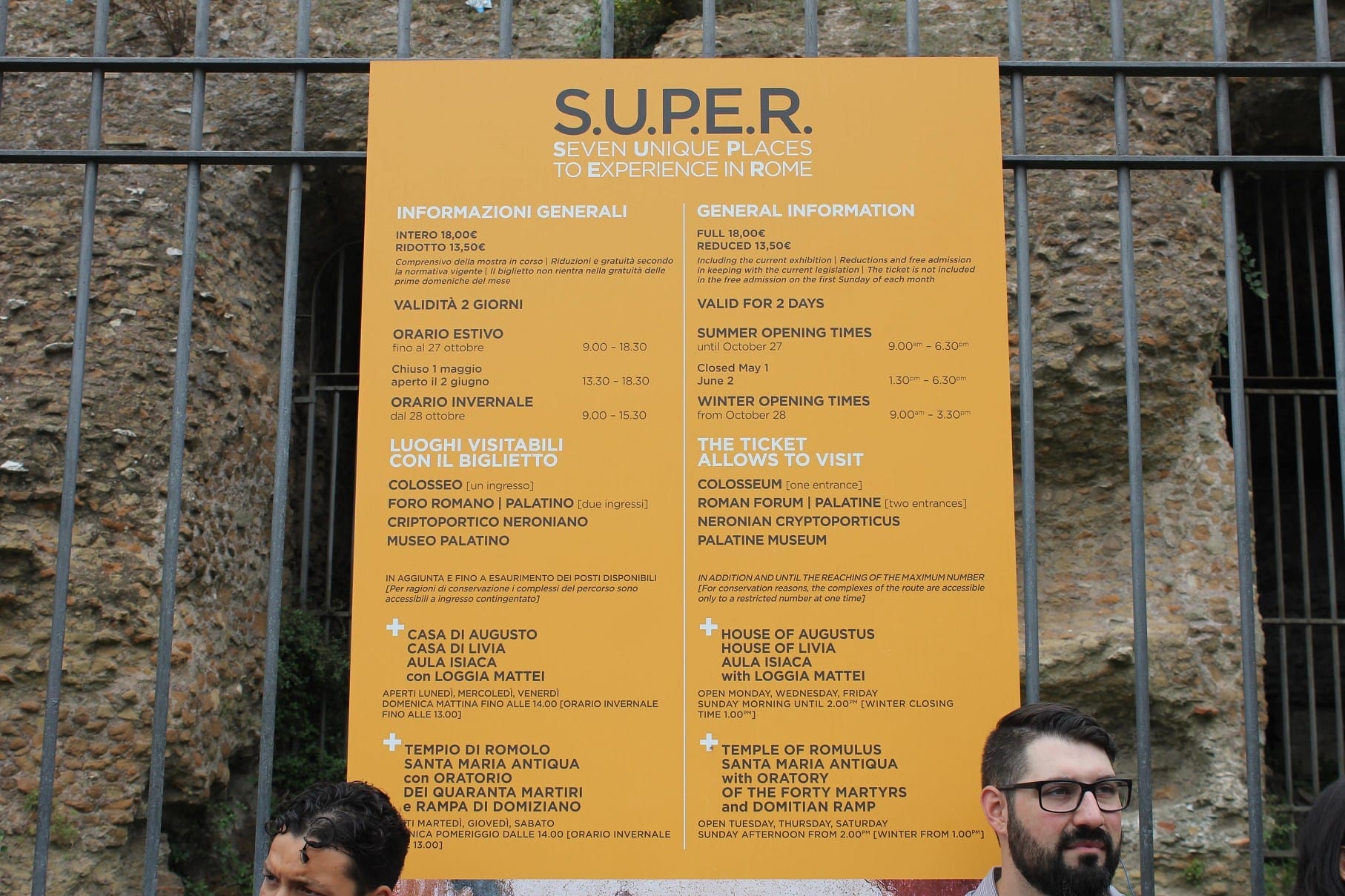
What is the Roman Forum and for what was it used for?
Today the Roman Forum is a site of ancient Roman ruins that’s often visited by those also visiting the Colosseum.
What kinds of activities took place in the Roman Forum ? Back in its day , it was a hub of activity, home to the most important ancient government buildings, law courts, shops and markets.
Thousands of years later you can still explore the ruins of this ancient plaza, and get a feel for life in ancient Rome.
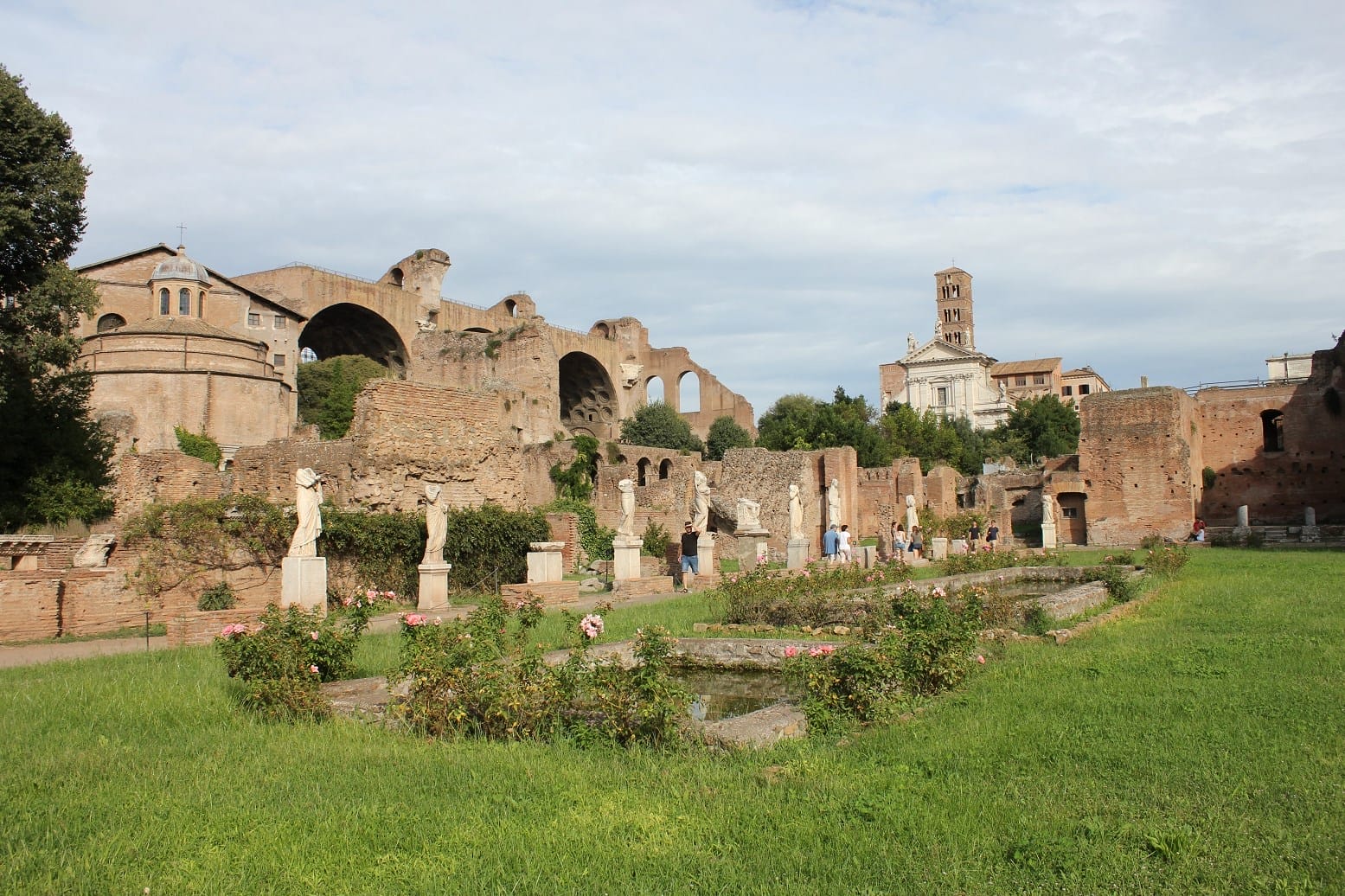
How to get to the Roman Forum?
The Roman Forum is next to both the Colosseum and Palatine Hill , but it has its own separate entrance.
Where is the Roman Forum entrance location ? It is between the Colosseum and the Piazza Venezia.
Because of the positioning of the entrances and exits for the Colosseum, the ancient Forum and Palatine Hill, most people visit the Forum after visiting the Colosseum.
This is because the Roman Forum entrance is located by the exit of the Colosseum.
If you’re taking the metro , you can get off at the Colosseo station , which is right by the Colosseum. The bus stop is also called Colosseo, which makes it nice and easy to remember if you plan on mixing up your travel methods.
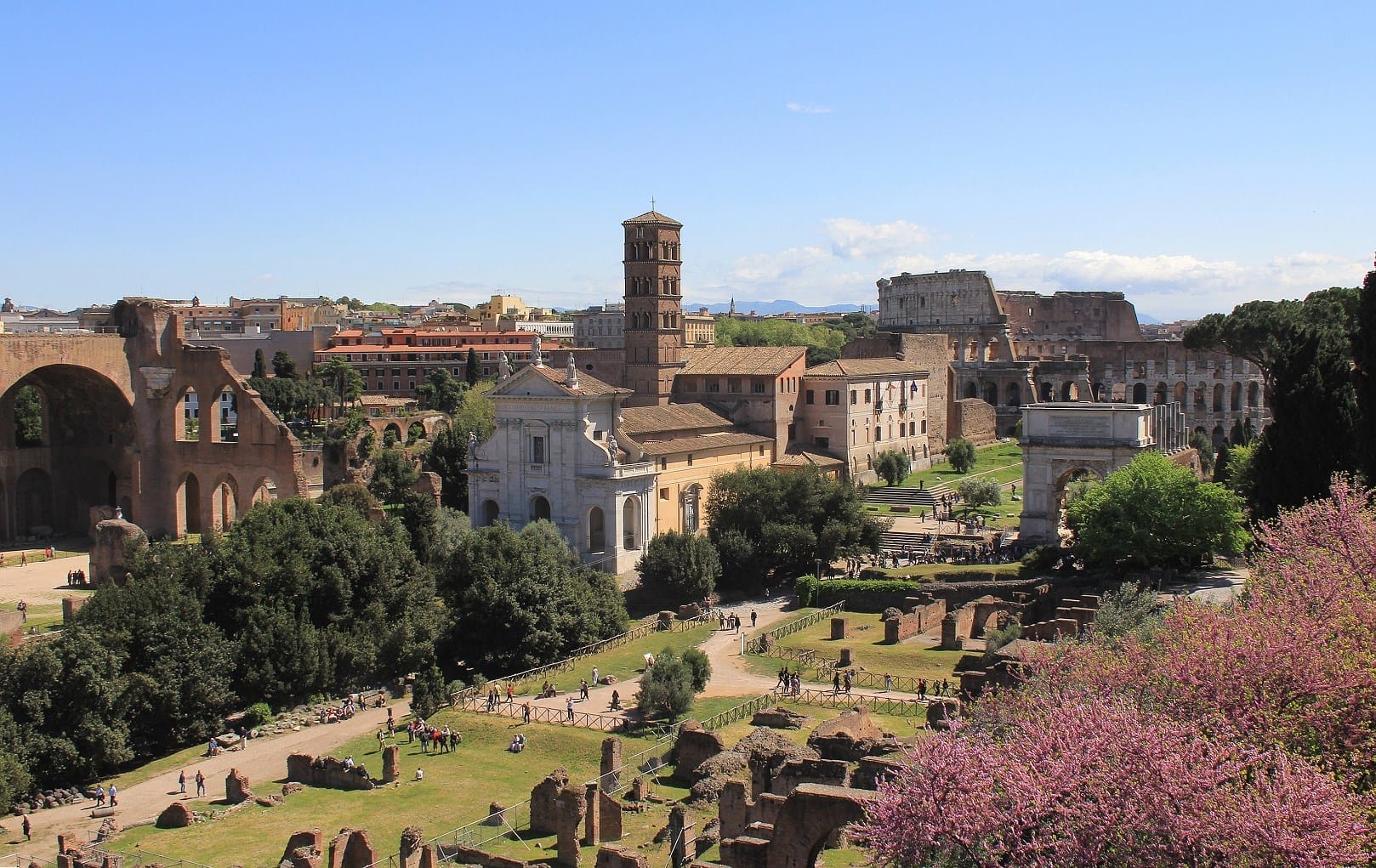
How to visit Roman Forum ?
Because the ancient sites get very busy , it’s always best to book your Roman Forum tickets ahead of your visit .
By booking ahead ( see all tickets on this page ) you’ll avoid some of the long ticket queues that can build up outside the Colosseum and Roman Forum entrance, and you’ll know you’ll definitely be able to enter (the Colosseum has a limit of 3000 people, so some people may be turned away).
As well as booking in advance, planning your visit for off-peak hours can also make your trip much more enjoyable.
During peak Roman Forum hours (late morning and early afternoon), the Colosseum and Forum area can become incredibly busy, especially during high season, so try to plan your visit for early morning or late afternoon if you want to avoid the crowds.
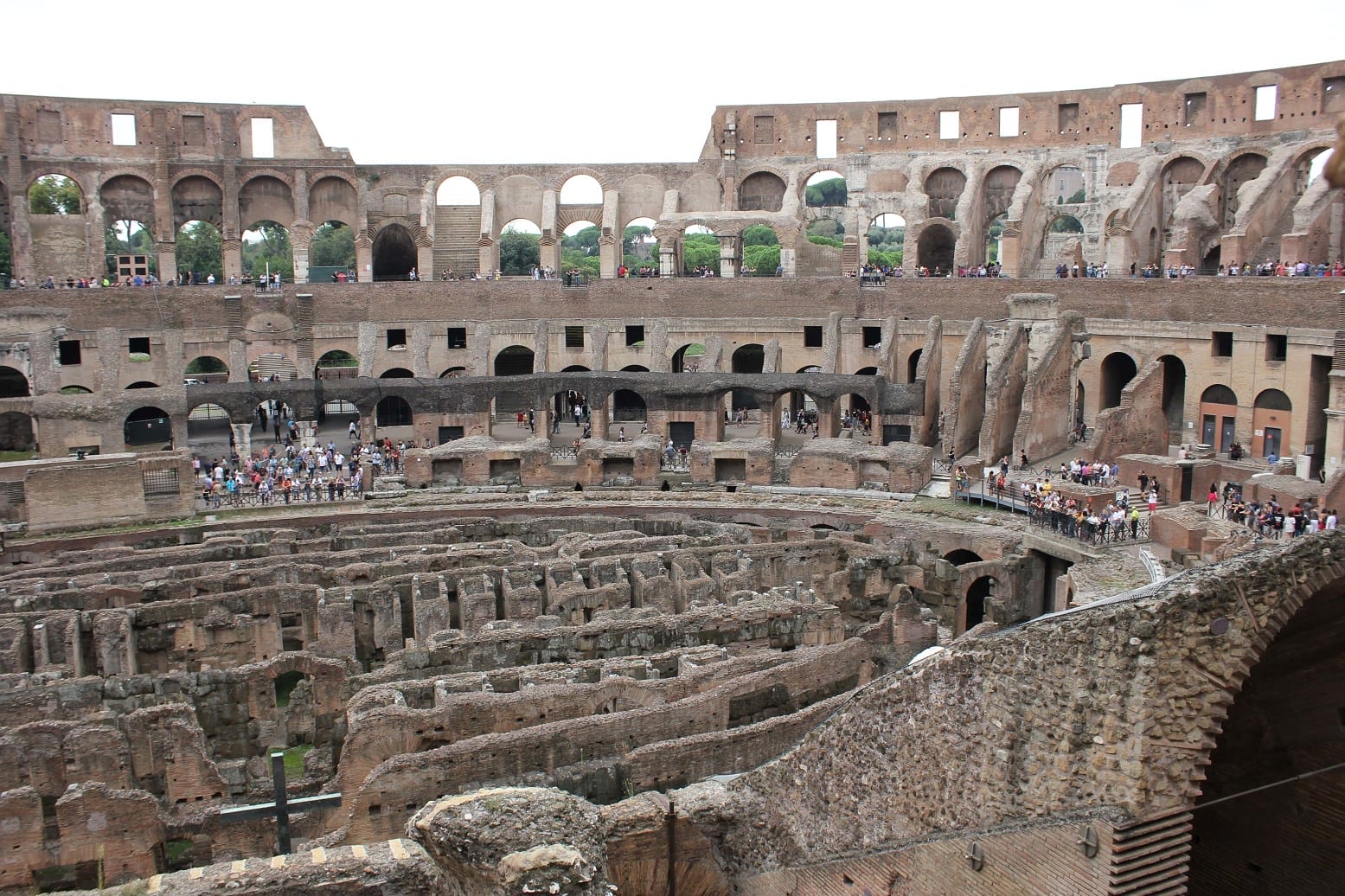
How to skip the line at the Colosseum and Roman Forum ?
If you want to skip the line at Roman Forum, you can buy a skip the line ticket for the Colosseum ( check last price on this website ). This way you can skip the line at Roman Forum, Colosseum and Palatine Hill .
You’ll still need to go through security at each of the entrances (no one’s exempt from that), but with a Forum skip the line ticket you’ll save yourself a lot of time when it comes to ticket and entrance queues.
Booking a guided tour is also a good way to skip the line, as your tour guide will lead you straight through any queues and into the attractions.
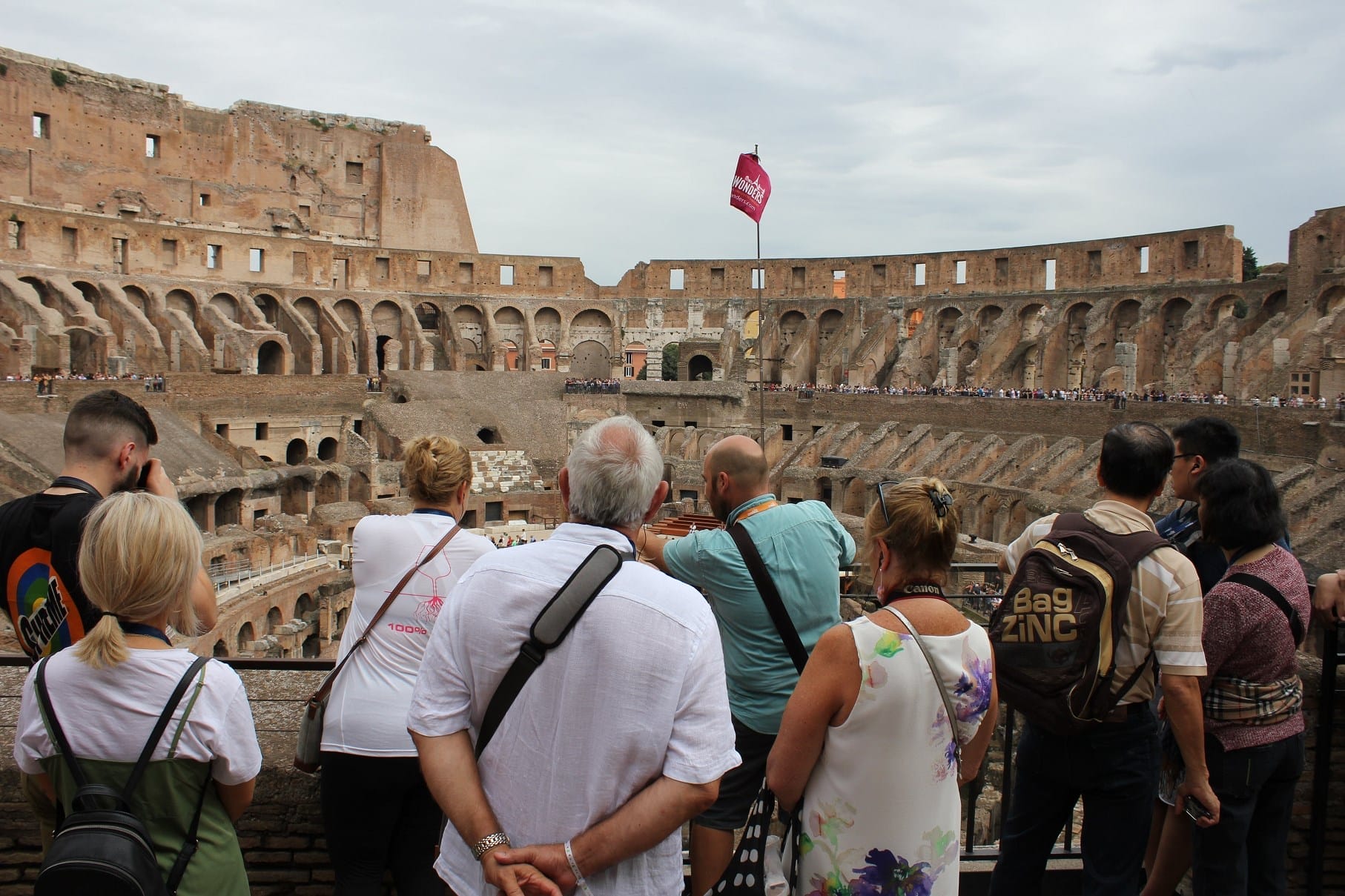
Roman Forum Hours – When is best time to visit ?
The best time to visit the Roman Forum is either early morning (8:30am onwards) or late afternoon (1-2 hours before closing). These times are the least busy, so you’ll have more freedom to explore the Forum and take great pictures without tourists photobombing.
This is also when the lines for tickets and entrance will be shorter , so if you don’t have one of the Forum skip the line tickets, this will save you time when it comes to queueing.
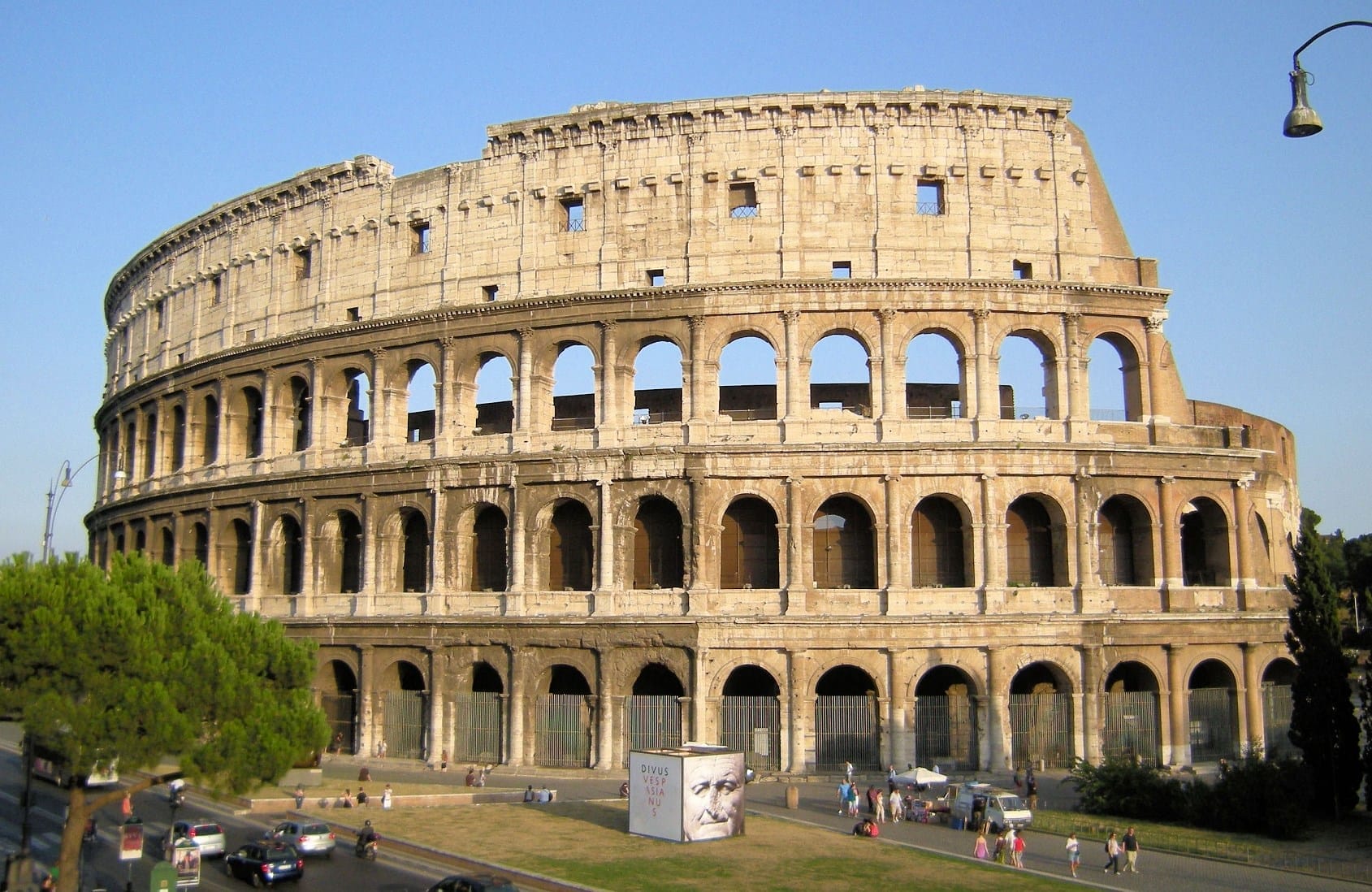
What you need to know before visiting the Roman Forum ?
Before you enter the Roman Forum, you’ll need to go through security, which can be quite a lengthy process, even if you have ancient Forum skip the line tickets. If you’re planning on visiting the Colosseum first and you have a set entrance time, get there an hour before, to allow time for the security checks .
Pickpockets
During the ticket queues, and inside the Roman Forum, make sure you keep yourself safe by keeping an eye out for pickpockets. Make sure your valuables are stowed away – don’t leave your phone hanging out of your back pocket!
Whilst there’s security on site, pickpocketing is still an issue .
Whilst there’s only one set of restrooms in the Colosseum, there are several toilets located within the Forum, so don’t worry you won’t be trekking around Rome trying to find one.
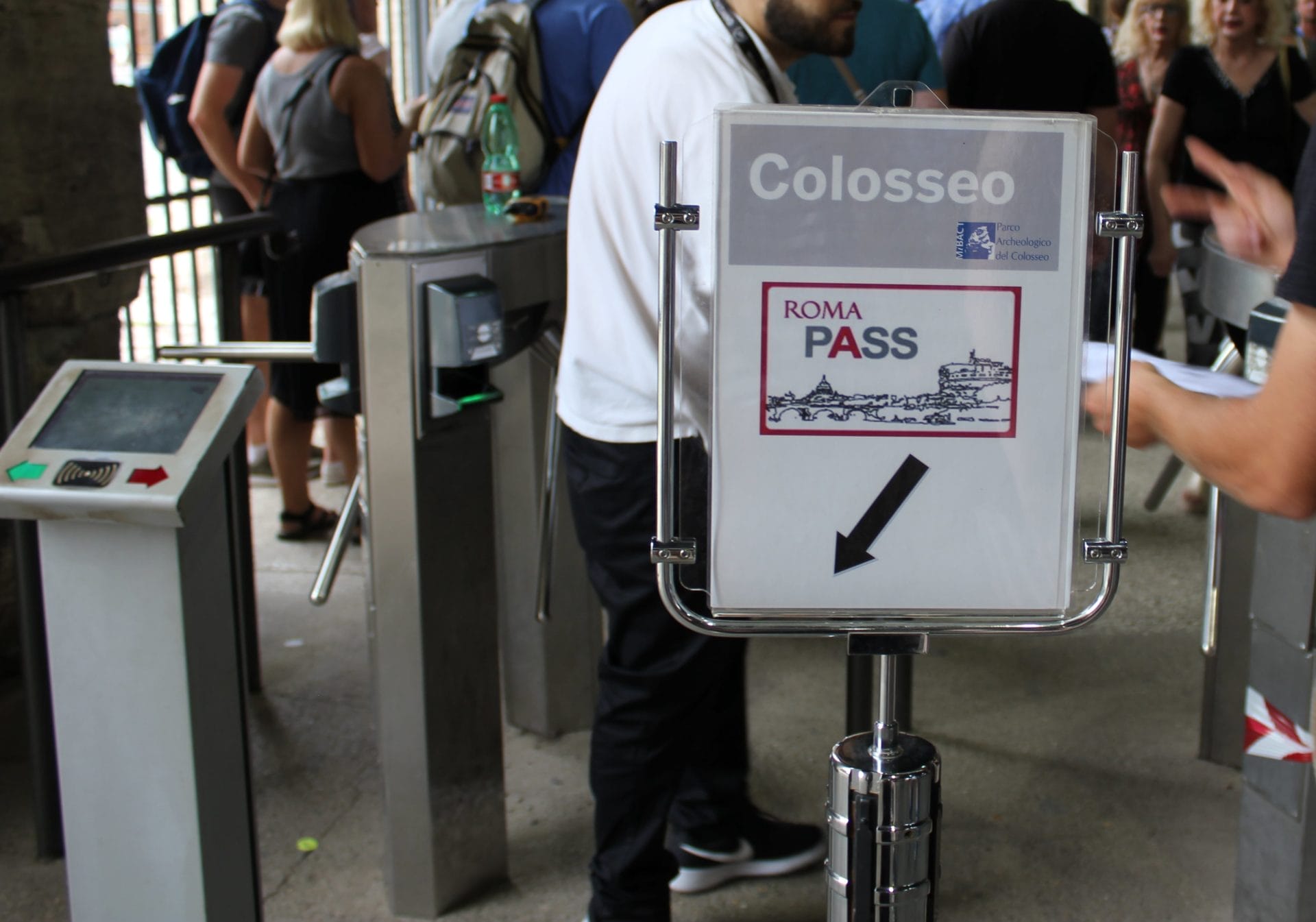
Is the Roma Pass worth it for the ancient Rome Forum ?
The Roma Pass is a tourist ticket that gives you access to several of Rome’s biggest attractions, including the Colosseum, Forum and Palatine Hill.
Whilst the standard Colosseum ticket costs 18€, the Roma Pass costs 33€ for 48 hours or 53€ for 72 hours , but it includes travel perks , discounts and other attractions.
If you’re planning on packing a couple of days in Rome with attractions and sightseeing, the Roma Pass could definitely be worth it for you . If you make the most of the free travel, the discounts and free attraction entries, you’ll end up saving money.
However, if you only plan on visiting one or two attractions (the Colosseum, ancient Forum and Palatine Hill all count as one single attraction), it could be cheaper just to buy tickets for each attraction you want.
It’s also worth noting that the Roma Pass doesn’t give the same queue-skipping benefits as Roman Forum skip the line tickets . For more details read my Omnia Card vs Roma Pass article .
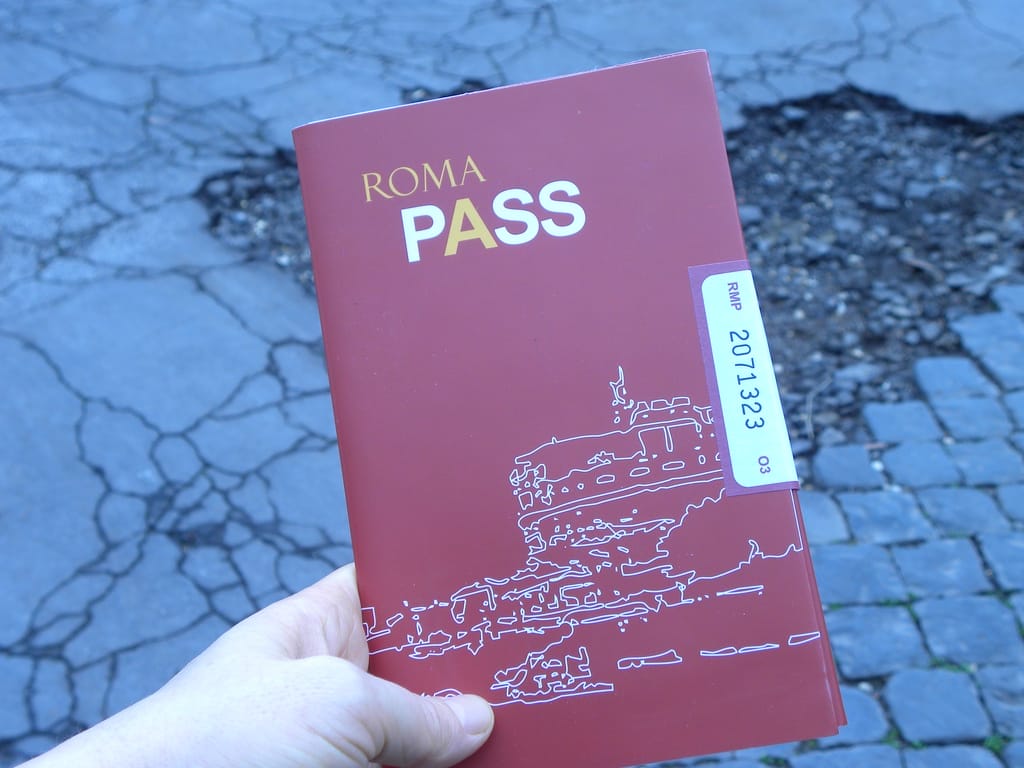
So with a Colosseum ticket you can visit the Colosseum, the Roman Forum and Palatine Hill. Whilst the order you visit them in is technically up to you, most people visit the Colosseum, then the Forum and then Palatine Hill, because of the locations of the entrances and exits.
If you want to save time and skip the line at the ancient Forum, you can purchase a skip the line ticket for the three attractions. Joining a guided tour is also a great way to skip the queues, and you’ll get a more detailed and personalised tour of the ancient sites.
Getting there early or later can be the best way to make the most of the day, as you’ll miss the bulk of the crowds, and have more space to enjoy the Forum fully.
You can buy your tickets in advance online through our site, so that all that’s left for you to do is turn up and enjoy the sights.
Fanny, an ardent admirer of ancient history and architecture, has been fascinated by the Colosseum since her first visit to Rome in 2012. As a key contributor to the Visit Colosseum Rome blog, she brings her passion for the Roman Empire’s monumental legacy to every article and guide.
Been to the colosseum, only want forum entry tickets
Leave a Comment Cancel reply
Your email address will not be published. All fields are required.
© Visit Colosseum Rome I 2020
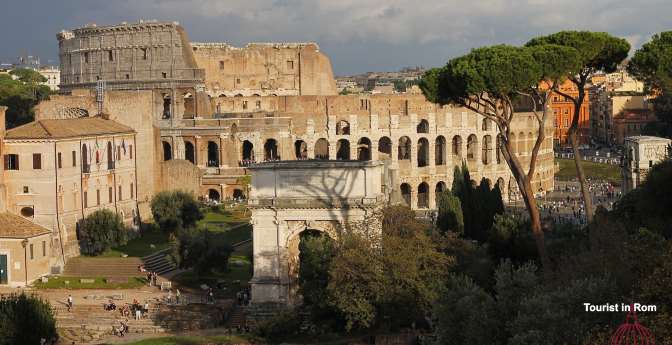
Discover the Roman Forum & Palatine – this is how to do it
With a little trick you save a lot of time when visiting the Imperial Forums, Roman Forum and Palatine and take the most beautiful route.
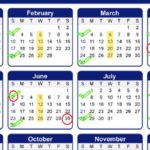
Partner-Links helfen uns dabei, unsere Informationen kostenlos bereitzustellen. Für abgeschlossene Buchungen erhalten wir eine Provision – ohne Mehrkosten für Sie! Mehr
Partner links help us to provide our information free of charge. For completed bookings we receive a commission – at no extra cost to you! More
I link dei partner ci aiutano a fornire gratuitamente le nostre informazioni. Riceviamo una commissione per le prenotazioni completate, senza alcun costo aggiuntivo per voi! Di più
Popular tickets and tours
GetYourGuide
How to save time
With the exception of the night tour of the Colosseum, all tickets include a visit to the archaeological park of the Forums and the Palatine. You can visit the park in the 24 hours before or after your reservation for the Colosseum. If you have the Colosseum entrance time in the early morning, you will visit the park more after, if you have the reservation for the afternoon, you better go to the park before.
The most beautiful route
The most beautiful route is also the fastest. Instead of going from Piazza Venezia to the Colosseum via Via dei Fori Imperiali, you go directly through the Imperial Forums and the Archaeological Park.
As an entrance, or an exit if you visit the park after the Colosseum, take the entrance at the Forum of Trajan. You cannot miss it. Already from Piazza Venezia you can see the column of Trajan in the middle of the Forum. The entrance is in Piazza della Madonna di Loreto. From there to the Arch of Titus, which is the closest to the entrance to the Colosseum, you need an hour. For the Palatine you will need another hour. It also takes an hour to visit the Colosseum. So in total you will need 3 hours.
The Imperial Forums
The imperial forums were built by Caesar and later emperors. They set monuments to themselves and showed their power. But new forums were also necessary, because the existing forums were no longer sufficient.
The Roman Forum
The Roman Forum is the oldest forum and is part of the National Museum of the Colosseum. It is the historical center of Rome and the oldest forum for trade, administration and court proceedings in ancient Rome. Here you will find impressive ruins and architectural masterpieces, including the Temple of Romulus, the House of the Vestal Virgins and the Ramp of Domitian. A guided tour of the Roman Forum is recommended to learn more about the history and significance of these sites.
The Palatine Hill
The Palatine is one of the seven hills of Rome and was probably inhabited 3,000 years ago. Later, dignitaries and rich citizens lived here and the emperors built their palaces here.
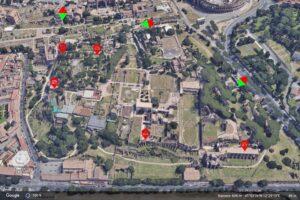
The Palatine is very large and it is easy to get lost there. There are some very nice viewpoints and you can take nice photos of the Colosseum, the Circus Maximus, the Roman Forum and the Capitol Hill. It will take you more than an hour to do this.
On the satellite photo we have marked some viewpoints in red.
You can find more details in our article Ancient Rome .
There are three entrances to the archaeological park consisting of the Roman Forum and Palatine Hill. There is also the entrance to the Imperial Forums.
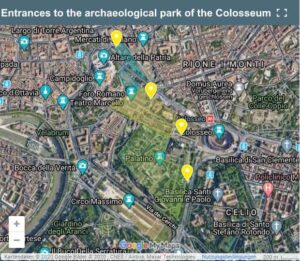
Depending on whether you visit the park before or after the Colosseum and what you want to see, you can choose different entrances. The entrances are:
- Via Sacra: Entrance at the Arch of Titus between the Roman Forum and the Palatine. This entrance is closest to the Colosseum.
- Via di San Gregorio: entrance to the Palatine.
- The entrance to the Forum of Trajan at Piazza Venezia / Piazza della Madonna di Loreto
- The entrance at Via della Salara Vecchia near the Roman Forum, serves only as an exit
- There is another exit to via Petroselli.
Full Experience
With the Full Experience ticket you can visit the arena in the Colosseum and some archaeological sites of the park and the museum on the Palatine.
The archaeological sites are part of the SUPER Ticket Seven Unique Places to Experience in Rome, currently offered only as Full Experience. Only a limited number of visitors are allowed to visit the different sites at the same time.

For Rome lovers and cultural experts, a visit to these sites is mandatory. Some sites may be closed for restoration work.
The opening times are:
House of Augustus 40 minutes max. 23 visitors
Curia Iulia
House of Livia 30 minutes max. 23 visitors
Santa Maria Antiqua with Oratory of the 40 Martyrs and Ramp of Domitian 30 minutes max. 60 visitors
Temple of Romulus 15 minutes max. 30 visitors
Palatine Museum ~ 1h
Emperor Nero’s Domus Transitoria
Criptoportico Neroniano 12 minutes max. 35 visitors
Aula Isiaca + Loggia Mattei 15 minutes max. 15 visitors
Opening hours
Roman Forum and Palatine have the same opening hours as the Colosseum:
From the beginning of winter time – end of February: 8:30 am – 4:30 pm
March – end of winter time 8:30 am – 5:30 pm
From the beginning of summer time – August 31, 9 am – 7:15 pm
September 9 am – 7:00 pm
October 1st – end of summer time 9 am – 6:30 pm
Eating around the Colosseum
There are few gastronomic highlights around the Colosseum. The top restaurant Aroma with a view of the Colosseum is located in Via Labicana on the top floor of the Hotel Palazzo Manfredi, In Via di San Giovanni in Laterano you can eat very well at Isidoro. At Isidoro you can order very tasty mixed antipasti or mixed 1st courses (Primi). Also in the side streets there are some quite nice restaurants. You will find a larger selection if you walk down Via dei Fori Imperiali and then turn right into Via Cavour. Angelino ai Fori is just on the corner. You will certainly find what you are looking for there and in the Monti Quarter beyond. You can also go down Via dei Fori Imperiali to Piazza Venezia and then left to Torre Argentina and left again to the ghetto. There you will find mainly Roman cuisine.
More about the Colosseum
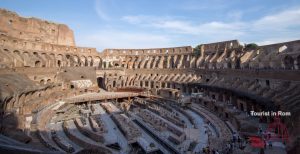
Colosseum Rome · Tickets & tours · Useful information
The Colosseum, originally called the Flavian Amphitheatre, is an iconic symbol of Rome and one of … >>>
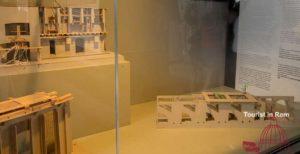
How the Colosseum Worked · Archaeological Research
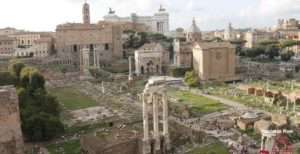
Walk through Ancient Rome · with 3D animations
Suggested combinations
After you have rested a little, you can think about how to proceed. The obvious thing to do is to visit the Caelius Hill with the beautiful churches that are located there. Or you can go up the Oppius Hill to the Basilica of San Pietro in Vincoli and continue towards Monti. Or maybe you’d like to go to the city center to see the Trevi Fountain and Spanish Steps, and to do some shopping.
If you want to see more ruins, you can also go to the Baths of Caracalla. With the bus 118 you can get to the catacombs on the Via Appia Antica.
Very relaxing is the onward journey with the hop on hop off buses . The bus stop is in Via di San Gregorio at the entrance to the Palatine. You can take buses 40 or 64 from Piazza Venezia to the Vatican.
Via San Giovanni in Laterano
Via di San Giovanni in Laterano starts from the Colosseum. Past the excavations of a gladiator school and the Basilica of the Dominican San Clemente, this small, cozy street with nice bars, restaurants and shops leads to the Basilica of San Giovanni and the Holy Stairs and on to Via Appia Nuova.
Oppius Hill
On the north side of the Colosseum rises the Oppius Hill, in which Emperor Nero’s Domus Aurea is buried. The golden palace can only be visited on weekends because excavations are carried out during the week.
There are picturesque streets on the Oppius. The Basilica of San Pietro in Vincoli is a well-known attraction.
If you continue along Viale Monte Oppio, you will come to the Basilica of Santa Maria Maggiore.
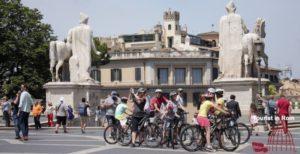
Hidden gems
What's on in Rome
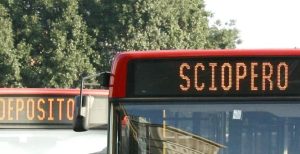
You are using an outdated browser. Please upgrade your browser .

- Things to do
- Roman Forum & Palatine Hill
- Skip the line
How to Get Roman Forum Tickets (+ Colosseum & Palatine Hill Visit)

- In Colosseum Roman Forum & Palatine Hill Skip the line Things to do
There is no better place than the Roman Forum to discover what day-to-day life was like in ancient Rome. Here, in the shadow of the Colosseum, lies a concentrated area of ruins that tell the story of the Roman Kingdom as far back as the 7th century BC.
The good news is that Roman Forum tickets also include the Colosseum and the Palatine Hill overlooking the Forum
- 1 Roman Forum Tickets Overview
- 2 Roman Forum tickets (Best Options & Quick Links)
- 3 How to Get Roman Forum Tickets
- 4 How to Organize the Visit Roman Forum, Palatine Hill
- 5 Is the Roma Pass worth buying for visiting the Roman Forum and Palatine Hill ?
- 6 Things to Do & See at Roman Forum
- 8 Conclusion
Roman Forum Tickets Overview
If you're short on time but eager to explore the Roman Forum, I've simplified your options into a handy table.
You have the option to explore just the Roman Forum , extend your visit to include the Colosseum, or enhance your experience with a guided tour— it's all laid out for you here.
Take a peek and make your choice!
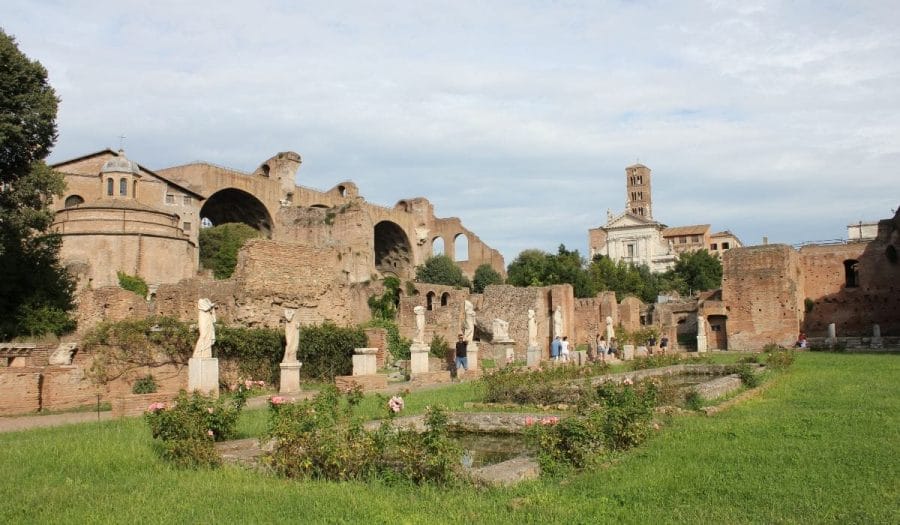
Roman Forum tickets (Best Options & Quick Links)
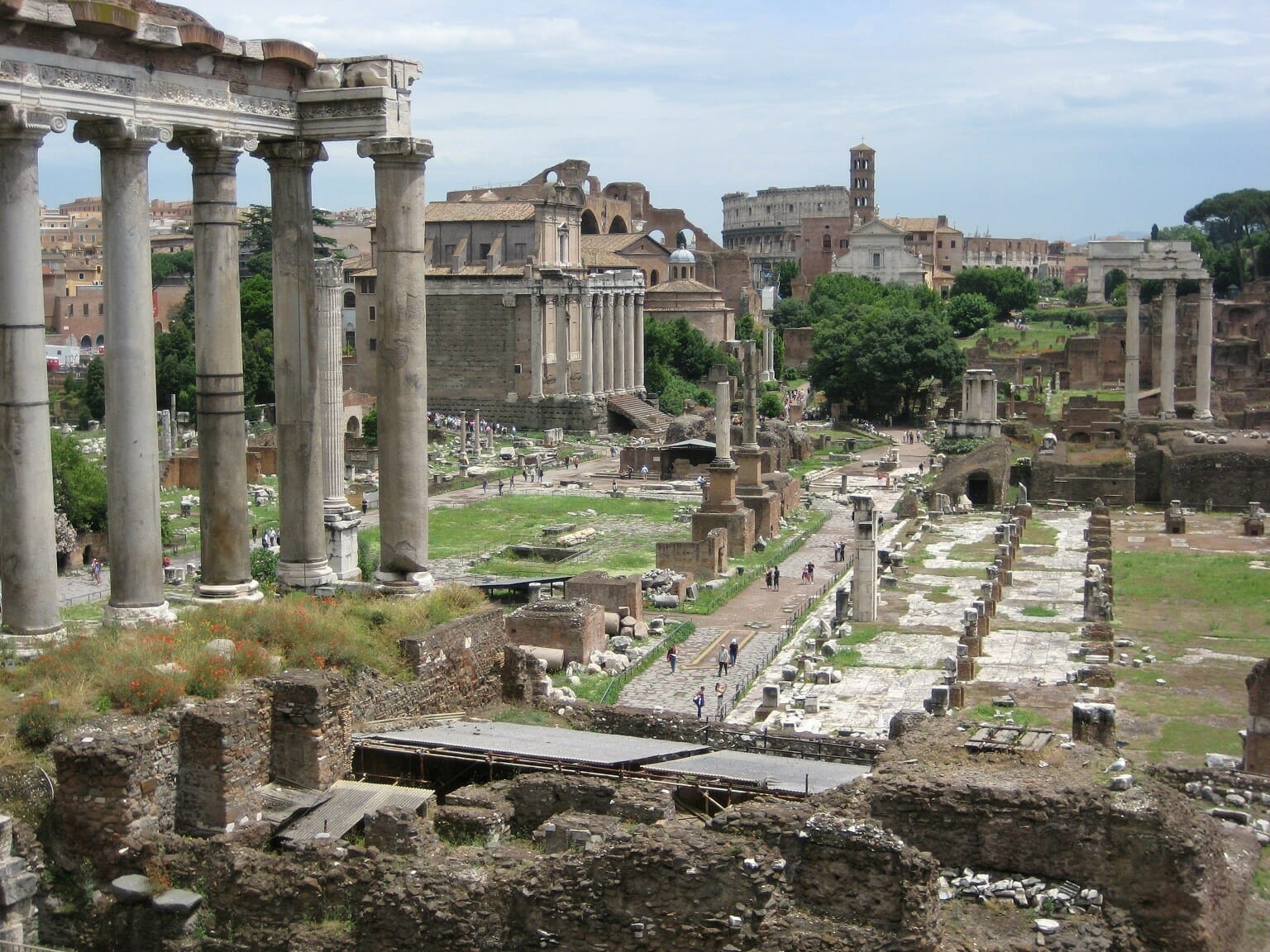
Here are quick links to the best types of Roman Forum tickets you can book if you're short on time.
If you have more time, take a moment to read through the entire article and prepare yourself for Roman Forum visit like a pro.
Entry Tickets Without Colosseum ❌
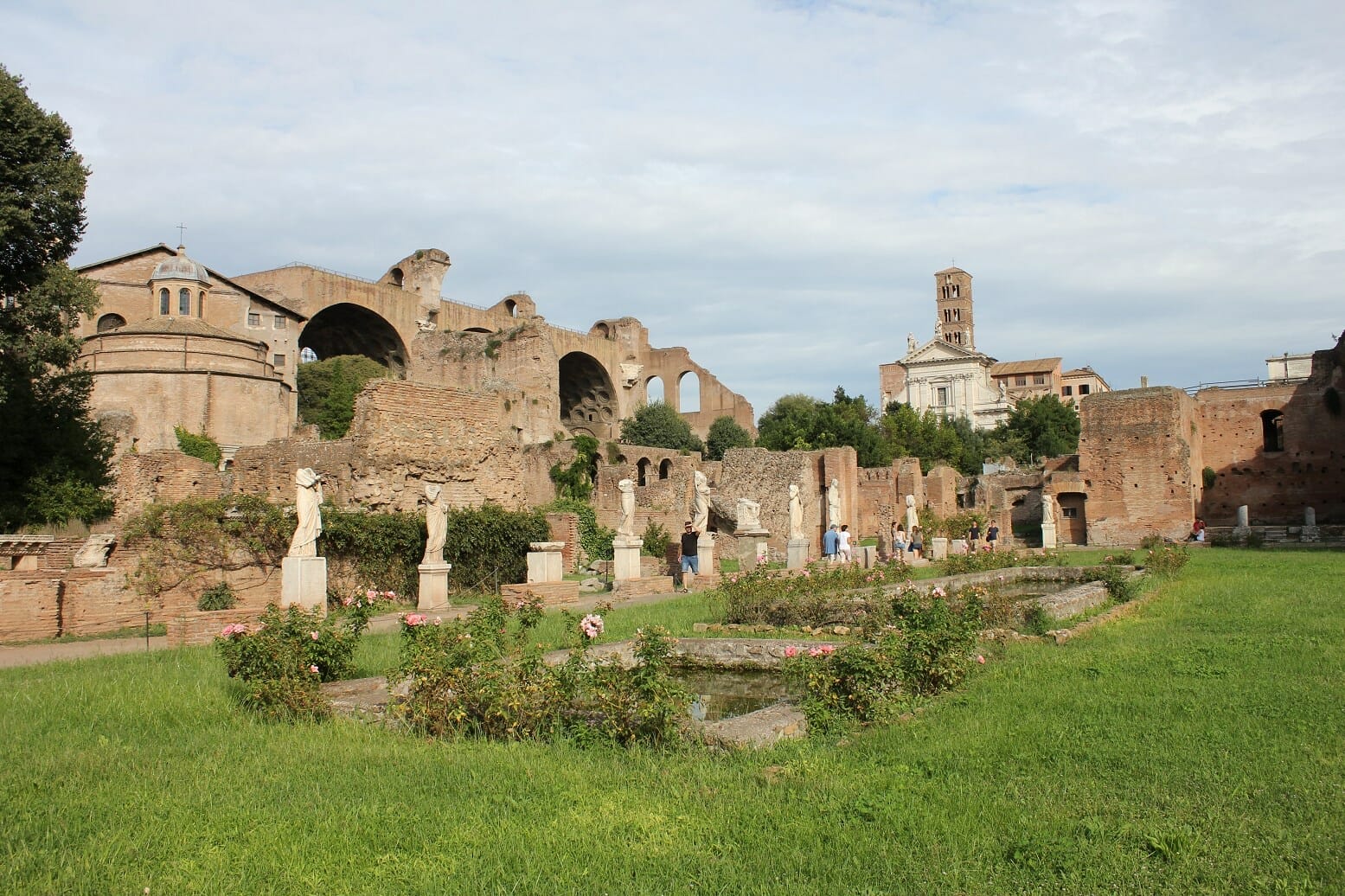
Wondering where to buy Roman forum tickets? If you’re interested only in the Roman Forum, these Roman Forum entrance tickets available online come with a focused experience with no access to the Colosseum.
The Roman Forum entry ticket includes a 25-minute multimedia video that provides historical context and insights into the site.
Along with standard tickets to the Roman Forum, you gain access to the SUPER sites:
- Palatine Museums
- House of Augustus
- Domus Tiberiana (exhibition rooms)
- Neronian cryptoporticus
- Aula Isiaca/Loggia
- Mattei Santa Maria Antiqua
- Ramp of Domitian
- Oratory of the Forty Martyrs
These Forum Rome tickets are available at Tiqets and GetYourGuide.
Entry Tickets With Colosseum ✅
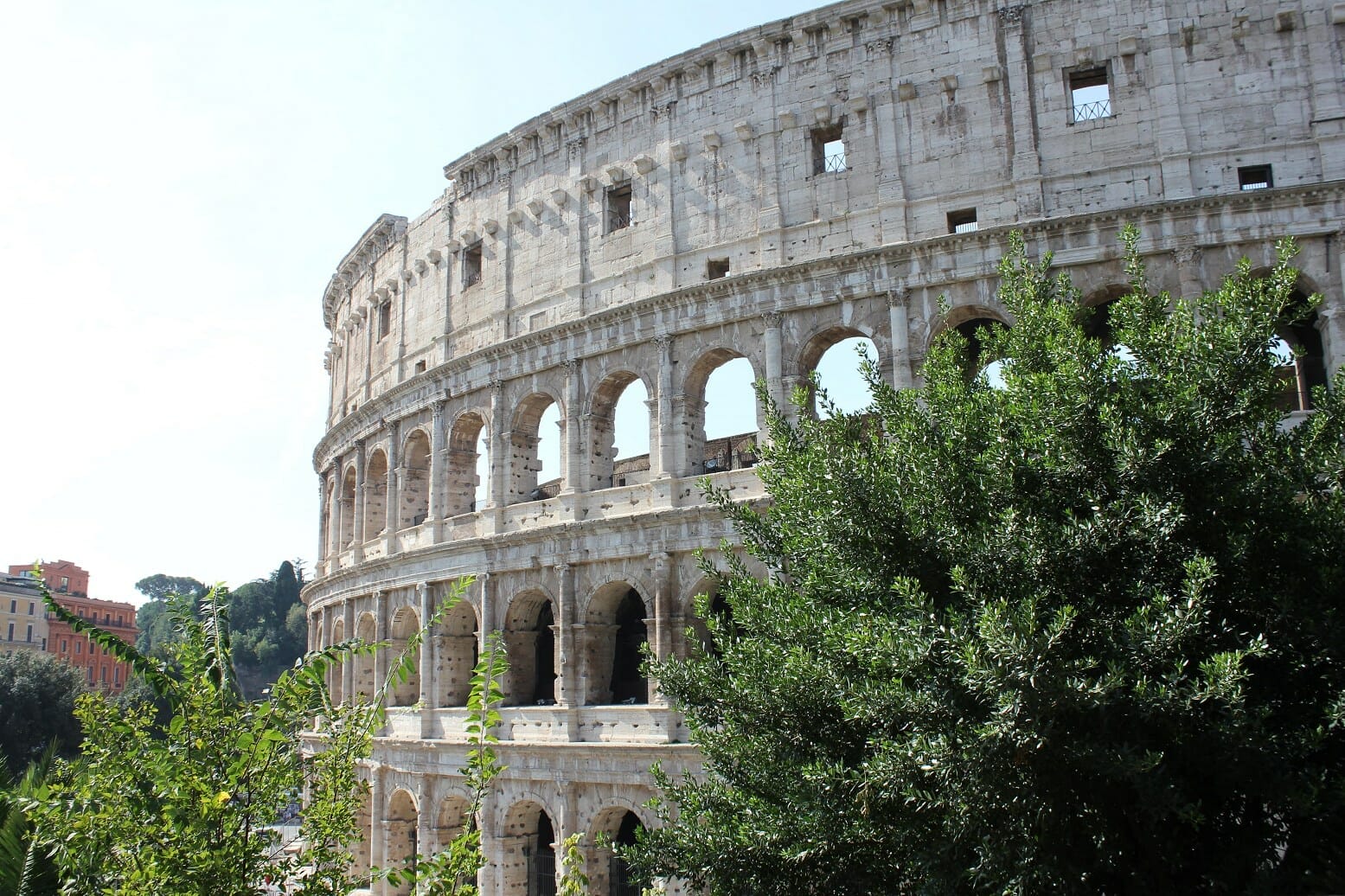
If you’re looking for a more comprehensive visit, then you might want to consider these Colosseum and Roman Forum tickets:
- 🎟️ Colosseum, Roman Forum & Palatine Hill: Entry Ticket + Multimedia Experience (Available on Tiqets) : these Colosseum, Roman Forum and Palatine Hill tickets provide a multimedia experience to guide you through the Colosseum, Roman Forum and Palatine Hill. It’s a great option if you want an enriched visit with historical insights.
- 🎟️ Colosseum, Roman Forum, Palatine Hill, Mamertine Prison (Available on Tiqets) : expand your historical visit of Rome with these Roman forum tickets that include entry to the Mamertine Prison, where Saints Peter and Paul were once held. These combined tickets Colosseum Roman forum and Palatine + Mamertine Prison offer a full narrative of Rome’s history.
- 🎟️ Colosseum, Roman Forum, Palatine Hill & Arena : Entry Ticket + Multimedia Video (Available on Tiqets) : these Rome forum tickets include access to all three sites and feature a multimedia video to help you understand the ruins and their storied pasts. An excellent choice if you’re looking for a self-guided experience but with plenty of resources.
Guided Tours (Combo Tickets)
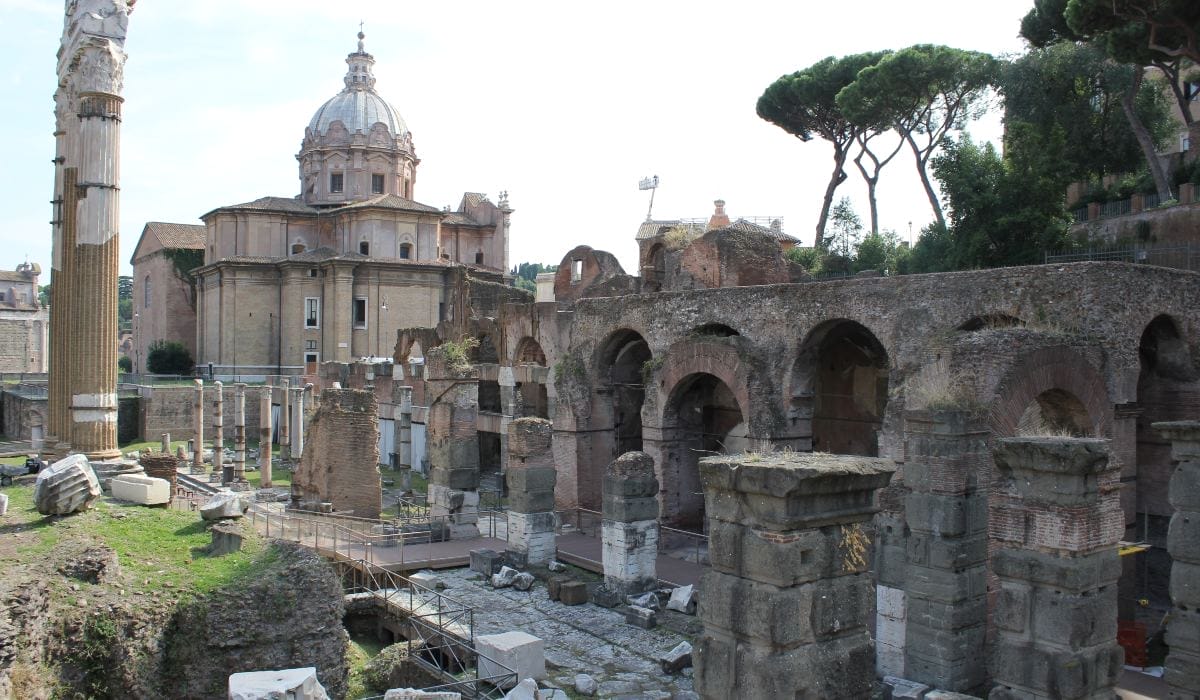
Improve your visit with combo Roman forum admission tickets that include expert narratives at each site:
- 🎟️ Colosseum, Roman Forum, and Palatine Hill: Guided Tour (Available on Tiqets) : These Palatine Hill and Forum tickets include a comprehensive guided experience through Rome's most iconic archaeological sites. It’s a great way to learn more about the rich history of each location.
- 🎟️ Rome: Colosseum, Palatine Hill, and Roman Forum Guided Tour (Available on GetYourGuide) : these Forum tickets Rome include a guided visit to bring to life the Colosseum, Palatine Hill and Roman Forum. Your guide will give you access to a deeper historical context for each visit.
The Rome Tourist Card is a great choice if you want to see all of what Rome has to offer. This pass includes Roman Forum, Colosseum and Palatine Hill access as well as entry to the Vatican Museums and Sistine Chapel.
Thanks to this card, you benefit from cost savings, a fully digital experience and the option to select from hand-picked combinations of Rome's top sites . Clearly the best choice for a comprehensive visit! You can get your card here.
Bonus Private Tours
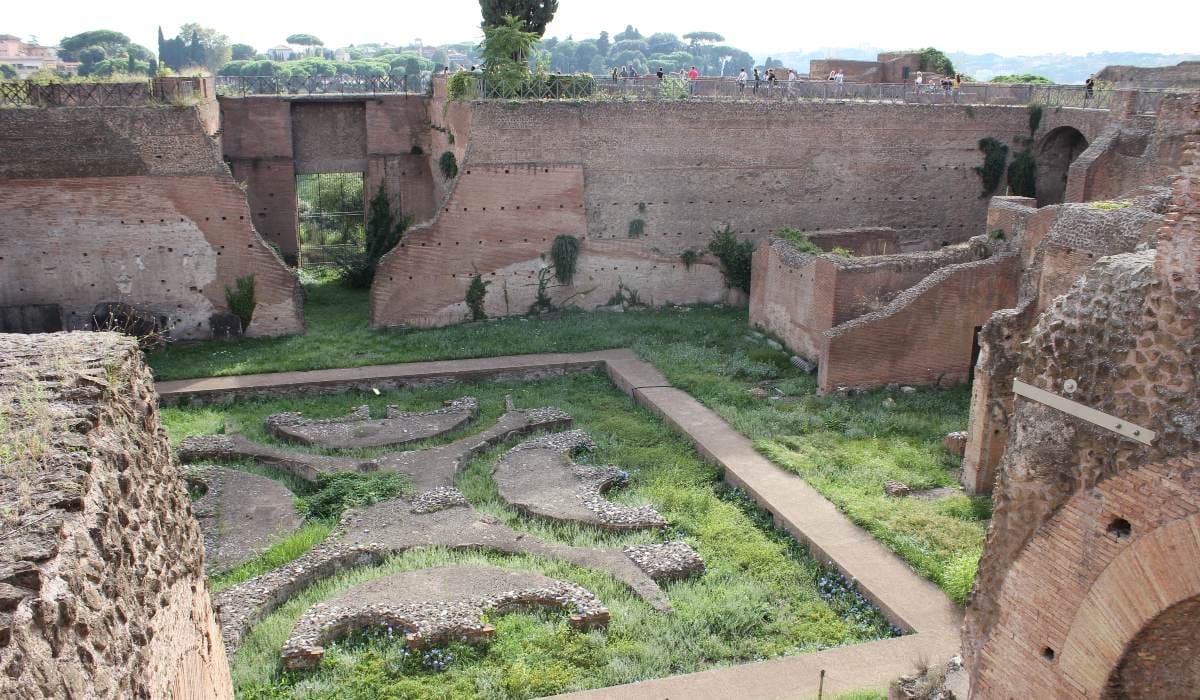
The initial cost of these tours may seem high at 390 € for a solo traveler, but you might want to consider booking the Rome: Colosseum, Roman Forum and Palatine Hill Private Tour for groups (available here) if you travel with friends or family.
How to Get Roman Forum Tickets

Many travelers ask “Do you need a ticket for Roman Forum”? The answer is yes, and there are multiple ways to buy them.
Here, you'll discover how to buy Roman forum tickets in the next few minutes.
Roman Forum Tickets Official Site
You can buy your tickets through the official sites like colosseo.it or coopculture.it but let’s be honest, it can be somewhat cumbersome. Many travelers opt for the official sites in hope of convenience, but they actually lack straightforwardness and there are way more additional options available on alternative platforms.
Tiqets offers an easier and more efficient booking process . If you’re looking for a focused visit, book the tickets for Roman Forum and Palatine Hill Entry with Multimedia Video. Simply select your visit date, complete the payment, and your tickets are emailed to you in seconds.
For an even more extensive experience that will include the Colosseum and Mamertine Prison, consider the Colosseum, Roman Forum, Palatine Hill, Mamertine Prison: Entry Ticket. You may also click here for all available options.
Got it! Here's a toned-down, professional yet friendly version:
To secure your Colosseum tickets on Tiqets.com, follow these straightforward steps:
- Choose your desired date and tour package, for example, this one – Colosseum, Roman Forum, Palatine Hill, and Mamertine Prison.
- Select your preferred visiting time and proceed by clicking “Book now.”
- Complete your ticket purchase, and keep an eye on your inbox for instant delivery.
For a step-by-step visual guide, check out the screenshots below. 👉 Just click to enlarge!
Get Your Guide
Another way to easily buy Roman Forum tickets is to go through GetYourGuide. To book the Rome: Palatine Hill & Roman Forum Ticket w/ Multimedia Video (available here) , select your date, input your details, and receive your tickets instantly via email.
If you’re also interested in the Colosseum, then the Skip-the-line Ticket Colosseum, Roman Forum & Palatine Hill (check price here) is a great choice. You can have a look at all available options here.
To secure your Colosseum reservation through Getyourguide.com, here's what you need to do:
- Click on the tour that catches your eye, like this one – Rome: Palatine Hill & Roman Forum Ticket w/ Multimedia Video.
- Specify the number of participants, select your preferred date, and choose your language.
- Next, hit “Availability”, pick your desired time slot, and then click “Add to cart”.
- Proceed to “Check out” and complete the payment for your ticket.
For a visual walkthrough, refer to the step-by-step screenshots provided below. 👉 Simply click on the image to enlarge it.
How to Organize the Visit Roman Forum, Palatine Hill
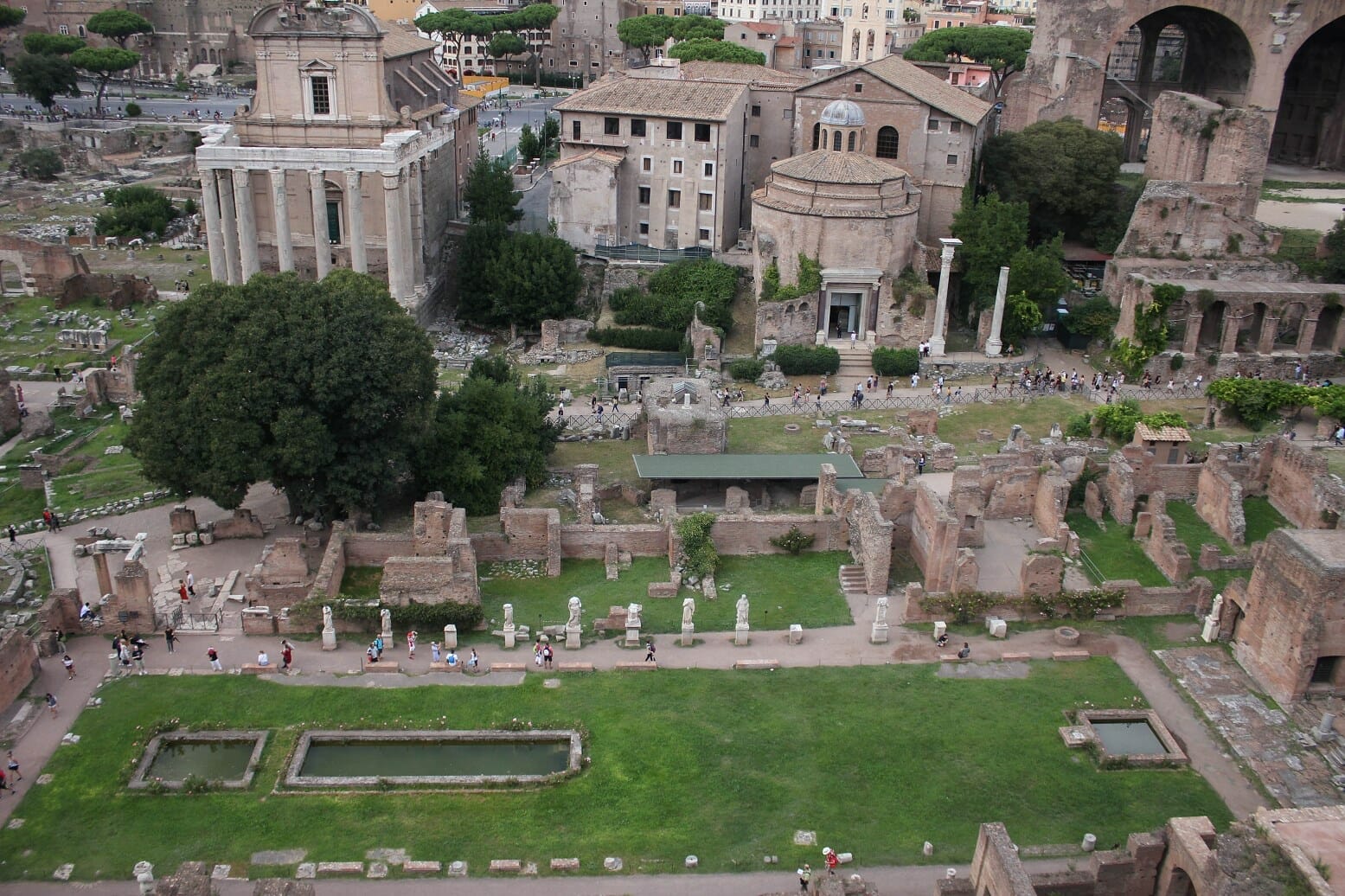
Planning your visit to the Forum , Colosseum and Palatine Hill will be a breeze with the information I've packed into the following sections.
Additionally, I'll address some of the questions you must absolutely know before your visit.
Getting to the Roman Forum

As two of the top sights in Rome, it’s easy to get to the Roman Forum and Colosseum by public transport or hop-on, hop-off tourist buses. The Forum is situated at Largo della Salara Vecchia 5/6, and Palatine Hill at Via di San Gregoria 30.
The closest Metro station (Line B Colosseo stop) to both the Forum and the Colosseum is the Blue Line B Colosseo station. Buses that stop nearby include the numbers 51, 75, 81, 85, 87, 118.
Can You See the Roman Forum Without Tickets?
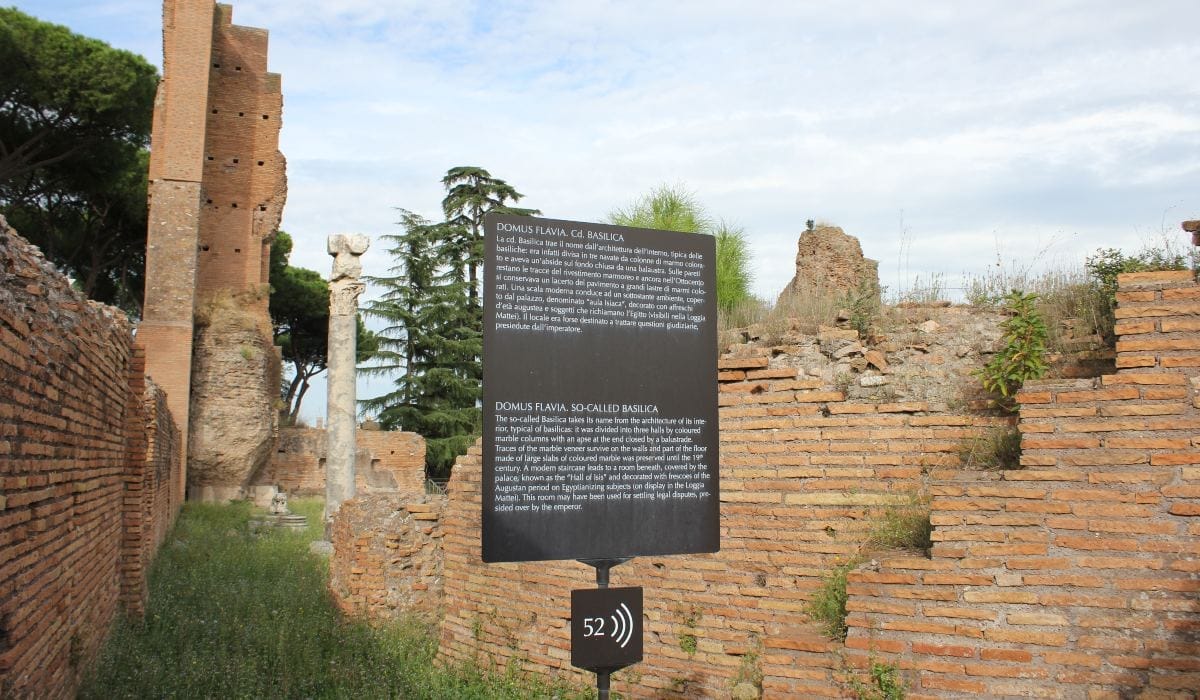
Entrance is free for all on the first Sunday of the month – a good time to visit if you want to save money, and a bad time if you want to avoid crowds.
Admission is free for those under 18 and discounted for EU citizens aged 18-25. EU citizens with disabilities and their companions can enter for free with valid medical documentation.
Opening Hours
Plan your visit wisely and be aware of the Roman Forum's operating hours. From the end of October to the end of February, the Forum welcomes visitors daily from 9:00 AM to 4:30 PM.
The last entry is at 3:30 PM. In March, the opening times extend to 5:30 PM then from April to the end of September, to 7:15 PM. Please note that the Forum is closed on January 1, December 25 and May 1.
Do You Need Tickets for the Roman Forum?

Yes, to explore all the wonders the Roman Forum has to offer, you'll need to purchase tickets . One relatively good news though: entrance is complimentary on the first Sunday of each month. It’s an opportunity for budget travelers, though we would not recommend it as you can expect to wait hours in queues!
How Much are the Roman Forum Tickets?
The Roman Forum ticket cost varies depending on the type of ticket you choose.
The most basic adult ticket runs for 16 € and it also grants access to the Colosseum and Palatine Hill. Discounts are available for EU citizens between 18-25 years old, while children under 18 and disabled visitors from the EU can enter for free.
But for a most comprehensive ticket, expect a Roman Forum ticket price between 30 € and 50 €.
Does the Colosseum Ticket Include Roman Forum?

Not always, but when you purchase a ticket for the Colosseum, it usually includes access to both the Roman Forum and Palatine Hill.
This combined ticket is great to visit all three iconic sites with a single purchase. Make sure to check the details of your ticket at the time of purchase to ensure it covers these entries.
Roman Forum Security Checks
All visitors, even if you’re already in possession of your Colosseum and Roman forum tickets with skip-the-line access, must go through a security check before entering the amphitheatre.
With up to 3,000 people accommodated at the Colosseum at one time, delays can be expected at the entrance. However, long queues and waiting times can be significantly reduced with skip the line tickets.
Small and medium-sized rucksacks and shoulder bags are allowed but must go through metal detectors and may be opened and inspected by security personnel.
How to Skip the Line Roman Forum
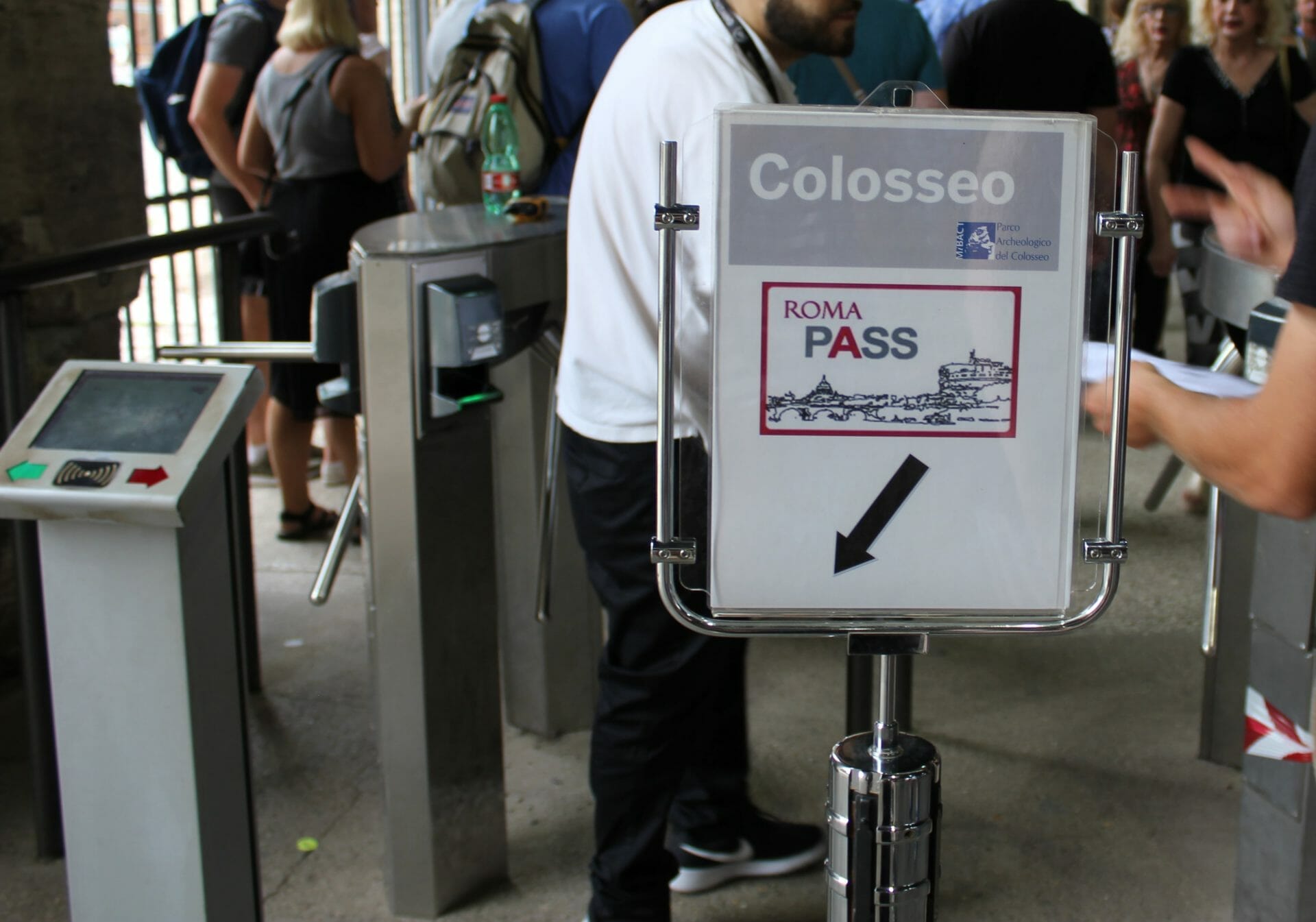
More than 4.5 million tourists visit the Roman Forum each year, and around 8 million want to see the Colosseum. So, you can imagine what the queues look like on busy days. By investing in a skip- the-line Roman Forum ticket, you can spend more time discovering and less time standing in a line, sometimes in sweltering heat.
Make sure you buy the Roman Forum skip-the-line ticket (online here) before your visit!
More ways to skip the line at the Colosseum and Forum, is to buy the Rome Tourist Card . We recommend you choose the audio guide or guided tour ticket to make sure he gets into the Coliseum, which has reduced its admission for standard tickets. We tell you more in our Rome passes comparison article here .
What Can You Visit with Roman Forum Tickets ?
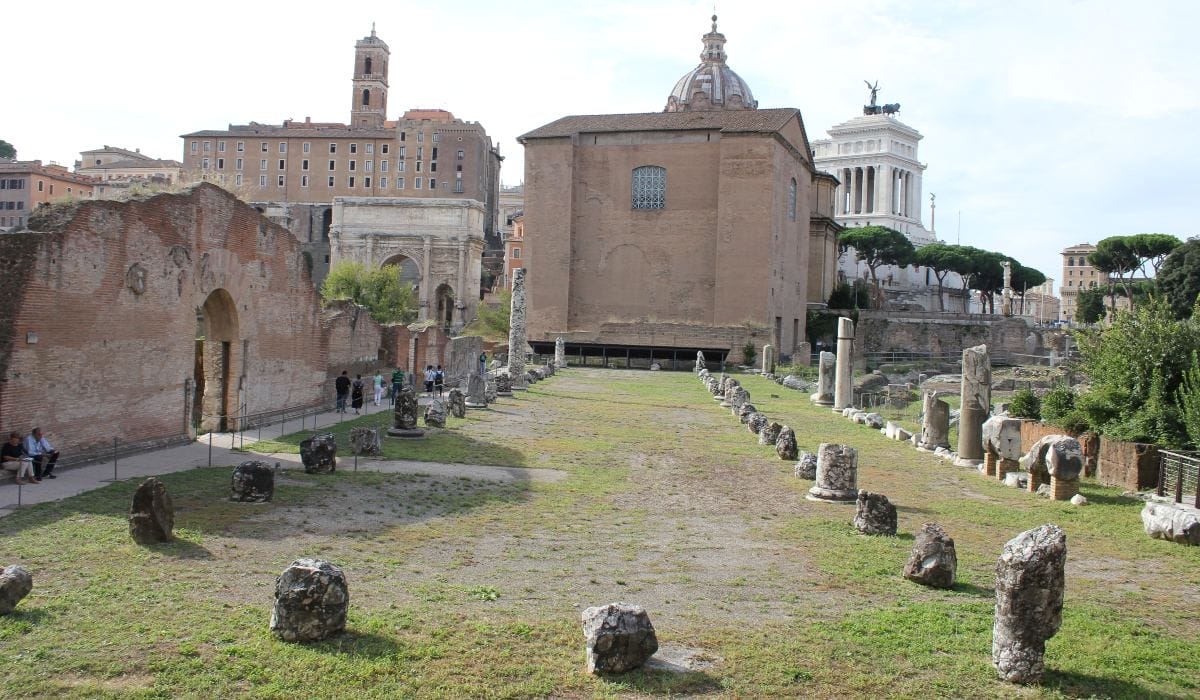
The official Roman Forum tickets include the Colosseum, Palatine Hill and all current exhibitions within the boundaries of these attractions. Tickets are valid for 2 consecutive days (you can buy them here) from first use for one entry each to the three attractions.
Is Roman Forum Wheelchair Accessible?
The Roman Forum is partially wheelchair accessible. Some areas, around 20 %, can be visited with a wheelchair . But these 20 % are amongst the best parts of the site.
Others will be more challenging because of the uneven ground and steps. Don’t hesitate to pass through the ticket office to get an accessible route map.
There is no strict dress code to visit the Roman Forum as this isn’t a religious site. But we would recommend you to wear comfortable walking shoes because of the uneven terrain and extensive grounds. Don’t forget to take some sun protection in the summer months as the shade is very limited onsite.
How Long to Visit & Best Time of the Day
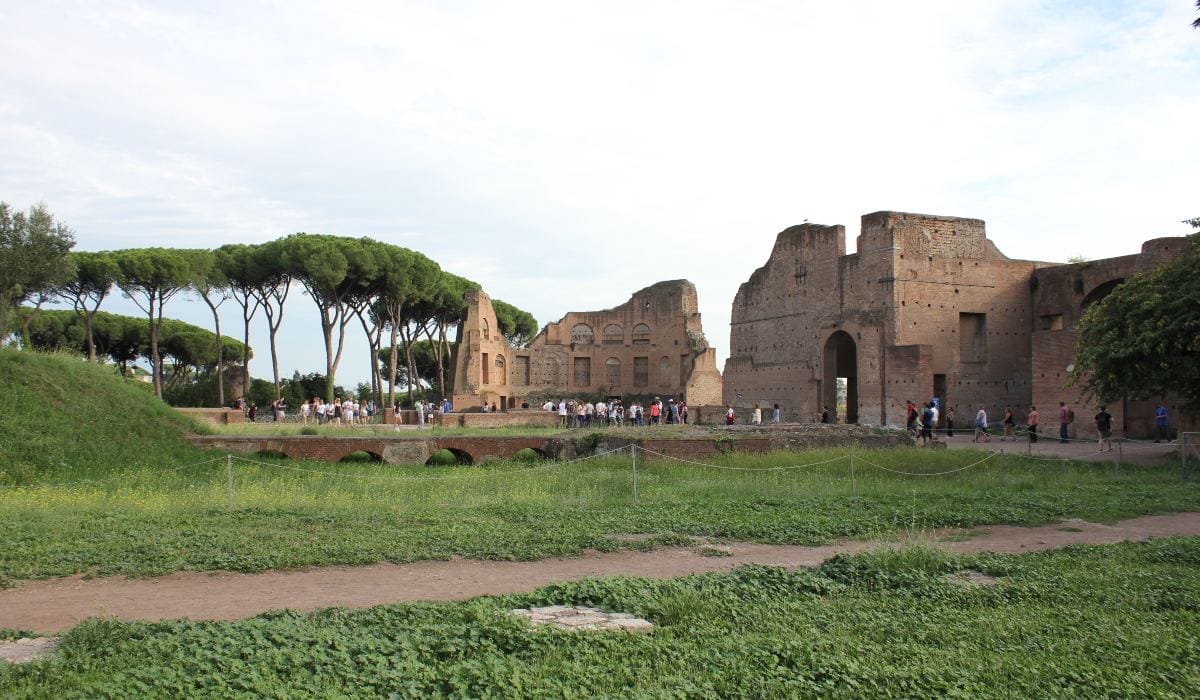
Wondering how much time do I need in the Roman Forum? For a thorough visit, plan about 1.5 to 3 hours. But it will actually all depend on your pace and interest level.
The best time to visit is early in the morning or late afternoon to avoid the peak crowds and to enjoy cooler temperatures, especially during the warmer months.
How to Visit Roman Forum with Kids
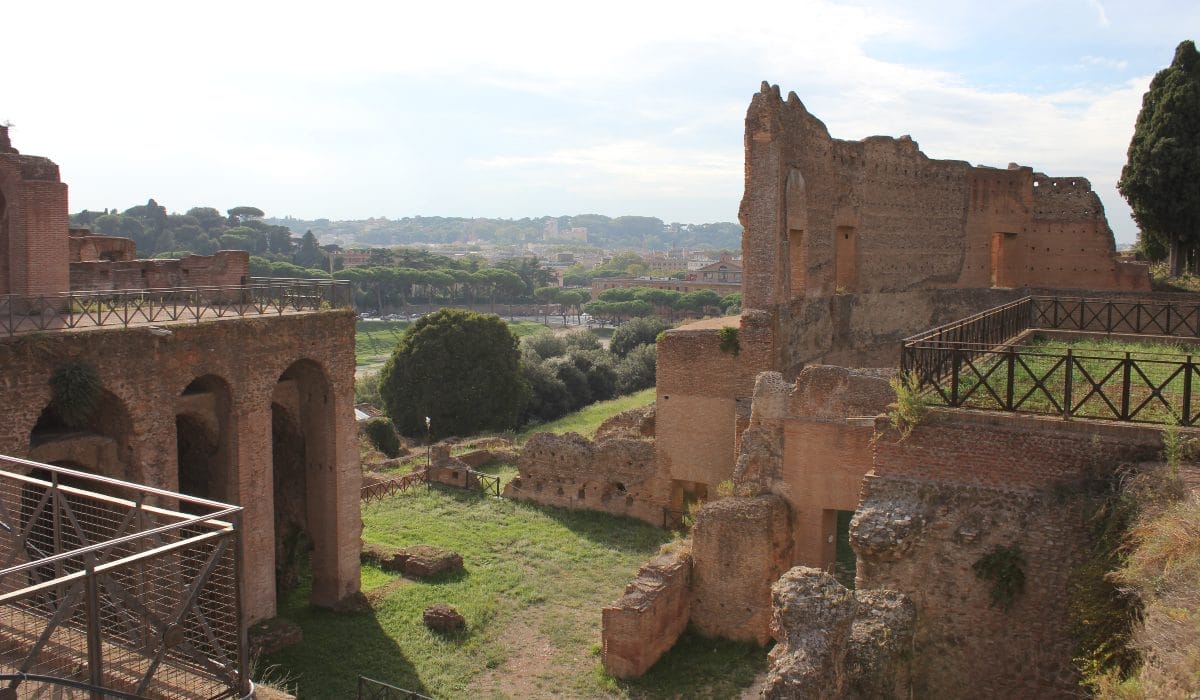
It’s a great educational opportunity, but it does come with its challenges. You’re allowed to enter the Roman Forum with a stroller , but as mentioned before, the terrain is uneven, with only partial paving. Don’t hesitate to use a baby carrier if possible.
There are no food facilities within the Forum , and while picnics are not allowed, you can hand out small snacks to children. Don’t forget to bring water and light snacks to keep the kids happy.
But please bear in mind the site does not offer much entertainment for young visitors, though the vast open spaces and ruins might ignite their imagination.
Is the Roma Pass worth buying for visiting the Roman Forum and Palatine Hill ?

The Roma Pass, which is valid for 3 days, costs €53 (see current prices here) and gives you only a standard ticket to the Colosseum plus free access to 2 museums or archaeological sites and discount to others. It doesn’t include the Vatican, but it does include free public transport.
Is it worth buying the Roma Pass ? That’s something you must decide based on your itinerary. The normal Colosseum and Roman forum tickets, including Palatine Hill, cost €18. Will you visit enough other sites to benefit from the discounts or use public transport frequently enough to justify the purchase?
Honestly, if you wish to use a pass, we recommend buying the Rome Tourist Card (book here) which includes better offers. For example, you can choose audio guide or guided tour tickets for the Colosseum. As said before, those types of tickets offer much more availability than a standard ticket. The Rome Tourist Card therefore guarantees you access to the Colosseum , unlike the Roma Pass.
Things to Do & See at Roman Forum

The Roman Forum is truly a treasure trove of historical wonders!
Here are some must-see highlights to explore during your visit:
- Temple of Saturn – This ancient temple dedicated to the Roman god of agriculture is an impressive sight with its tall columns and remains.
- The House of Augustus – It's an immersive experience, walking through the rooms where Augustus lived and worked, adorned with beautiful frescoes and intricate details. Don't miss the chance to step back in time and explore this significant part of Roman history.
- Temple of Vesta – Explore this circular temple dedicated to the goddess of the hearth, where the sacred flame of Rome was kept burning by the Vestal Virgins.
- Palatine Hill – It was here, on the Palatine Hill, that Romulus started Rome’s first settlement in the middle of the 8th century BC. Huts and tombs from the iron age, an ancient fortification, places of worship, and imperial palaces are only some of the structures revealed by excavations on the Palatine Hill.
- Via Sacra – This was the main thoroughfare connecting the Piazza del Campidoglio with the Colosseum in ancient Rome. It’s along this “street” that you’ll find some of the most interesting and valuable ruins
- Curia – A place where important decisions were made. It was the original seat of the Roman Senate. There is a big piece of black marble, called the Lapis Niger, in front of the Curia. Legend has it that this is where Romulus was buried
- Basilica Giulia – Augustus completed this church after the death of Julius Caesar. Watch out for the three remaining columns of the Tempio di Castore e Polluce (5th century BC) at the end of the Basilica
- Temple di Giulio Cesare – Another one of the interesting Roman forum facts relating to Julius Caesar. This is where he was cremated. Built by Augustus in 29 BC, it’s also called the Tempio del Divo Giulio
- The Basilica di Massenzio is the largest building in the Forum, originally measuring 100 m by 65 m. Constantine finished it in 315 after it was started by Maxentius
- Arch of Titus – Built after Emperor Titus’ death, this is a triumphal arch commemorating Rome’s victory over Jerusalem
- Cloaca Maxima – The small valley between the Palatine and Capitoline Hills where the Forum was built was originally a marshy area. This lead to the development of what became known as one of the world’s first sewer systems. Called the Cloaca Maxima, it was used to drain the area
- Colosseum – Without a doubt the main symbol of Rome, the Colosseum is conveniently located within sight and easy walking distance from the Forum. The sheer size of it makes it the greatest Roman amphitheatre of its time. This is where you are transformed back to the time of gladiator fights, public executions, and exotic animal exhibitions.

Can I buy tickets for Roman Forum only?
Most standard tickets include entry to the Colosseum and Palatine Hill, but there are also Roman Forum entrance tickets available online that only focus on the Forum. The Roman forum tickets without any other sites provide a 25-minute multimedia video and access to SUPER sites.
Can I buy tickets for Roman Forum at the door?
Yes, you can purchase tickets at the door, but this isn’t something we would recommend. It’s indeed best to buy them online to secure entry and, most of all, avoid long wait times especially during peak tourist seasons.
Is Roman Forum worth visiting?
Definitely. The Roman Forum is one of the most important historical sites in Rome. It’s a great way to learn more about ancient Roman civilization.
Visiting Rome without walking around the Forum and inside the Colosseum is like visiting Athens without going to the Acropolis. With all the interesting Roman Forum facts at hand, it’s the best place to put yourself in the shoes of ancient Romans.
You can be inside, imagining where Julius Caesar and other great historical figures walked, within minutes after arriving with a skip-the-line ticket .
Fanny is a music and travel lover who has been visiting Rome since 2012. She is the founder and main editor of the Roma Pass blog and she like to share the best things to do in Rome.
Leave a Comment Cancel reply
Your email address will not be published. All fields are required.


The 5 Best Rome Colosseum Tours With Skip-the-Line Access
A s the most enduring symbol of the Roman Empire and one of the most famous landmarks in the world, the Colosseum receives more than 6 million visitors per year, so it's not easy to escape the crowds. A visit is worth it, though, if you want to see the world's largest amphitheater – once known as the Flavian Amphitheater – and try to imagine what it would have been like 2,000 years ago.
A standard ticket to the Colosseum also includes access to the Roman Forum and Palatine Hill, so many (but not all) tours also include those ancient sites. Inside the ancient complex, there is very little signage explaining what you're looking at. A good guide will not only get you skip-the-line access but also bring these incredible places to life. Keep in mind that most Colosseum tours only give you access to the arena floor and upper level. If you want to visit the underground hypogeum, you need to make sure it's included in the tour.
Crown Tours: Skip the line Colosseum, Palatine Hill and Roman Forum tour
Price: Adults from $84; kids from $67
Duration: 3 hours
Standout perk: Engaging guides speak several languages.
Selected by GetYourGuide as a Certified Experience, this group tour starts at the Colosseum, then takes you to the Palatine Hill and the Roman Forum. Groups consist of up to 30 people, and tourgoers are given headsets so they can better hear and follow the guide. The tour meets at Largo Gaetana Agnesi on the hill overlooking the Colosseum about 30 minutes before the official entry time to get everyone checked in and set up with headsets. The guide then leads participants into the Colosseum and up to the second level, where there's a chance to stop and take photos. On the way back down, there's another photo-op at the arena level before the guide leads the group over to the Palatine Hill and Roman Forum.
Crown Tours also offers guided tours of the Vatican, Sistine Chapel and Saint Peter's Basilica, as well as the Borghese Gallery, Pantheon and other sites.
Local tip: This tour is offered over a variety of time slots every day. Pick one of the earlier time slots to make sure you'll finish up by lunchtime.
Check prices & availability on:
Button Enhancement : Travel - The 5 Best Rome Colosseum Tours With Skip-the-Line Access - Crown Tours (Viator)
Through Eternity Tours: Ultimate Colosseum Tour with Roman Forum & Palatine Hill
Price: Adults from $105; kids from $95
Standout perk: This tour includes the Palatine Hill, which some tours skip.
Recent visitors praise the knowledgeable guides for their passion about ancient history and keeping the tour moving while explaining everything in detail. This tour starts at 9:30 a.m. seven days a week and finishes up around lunchtime. In addition to the Colosseum, highlights include the Via Sacra and the House of the Vestal Virgins in the Roman Forum, as well as the Farnese Gardens on the Palatine Hill.
This tour starts at 9:15 a.m. daily. Groups are limited to 10 people; if six or more people are taking the tour, the guide gives out headsets so everyone can hear. Participants are asked to meet 10 minutes before the start time in front of Cafe/Restaurant Angelino ai Fori on Largo Corrado Ricci. The tour is stroller-accessible, but not wheelchair-accessible. Participants should wear comfortable shoes and bring a water bottle, especially on hot days.
Through Eternity Tours offers a variety of group and private tours of Rome and other destinations, including Florence , Naples and Pompeii.
Local tip: Book a table at the nearby Taverna dei Fori Imperiali to enjoy a leisurely lunch after the tour.
Button Enhancement : Travel - Through Eternity Tours: Ultimate Colosseum Tour with Roman Forum & Palatine Hill - Crown Tours (Viator)
360 Kiosk Email : Tips on Trips and Expert Picks
LivTours: The Best of Colosseum & Ancient Rome With Exclusive Arena Access
Price: Adults from $163; kids from $145
Standout perk: Virtual reality headsets show what the ancient sites would have looked like.
Recent tourgoers praise the guides on this tour for bringing the facts and stories about ancient Rome to life. Along with the confirmation email, participants receive an invitation to download an app. During the tour, the guide gives everyone a cardboard virtual reality headset that works with the app and shows a reconstruction of the Colosseum and the surrounding valley. After visiting the Colosseum, the tour continues to the Palatine Hill and Roman Forum, where the virtual reality headsets show you a reconstruction of the Circus Maximus and the structures in the Roman Forum. At all the sites, you get skip-the-line access.
These semiprivate tours are guaranteed to have no more than six people, making them a more personalized experience than other group tours. However, because the tours are small, the guides don't use headsets, and some participants noted that it can be difficult to hear the guide over the noise in the Colosseum.
Local tip: You can get some great photos from the upper level, especially if you stand at the apex of the oval.
Button Enhancement : Travel - The 5 Best Rome Colosseum Tours - LivTours (Viator)
Roma Experience: Private Colosseum Tour With Roman Forum & Palatine Hill
Price: From $531
Duration: 2 hours 45 minutes
Standout perk: See these ancient sites with an archaeologist who dug at the Roman Forum.
For a deeper understanding (no pun intended) of the Colosseum, Roman Forum and Palatine Hill, a tour with Elisa Valeria Bove, CEO of Roma Experience, is one of the best you can buy. She studied archaeology and has been involved in excavations at the Roman Forum and other sites, so she's just the person to guide you if you want to get beyond the surface level. Her private tours range from just under three hours for a skip-the-line Colosseum, Roman Forum and Palatine Hill tour to the full-day "See Rome in One Day" tour, which also includes a guided visit of the Vatican Museums and Sistine Chapel. Be sure to specify if you want to visit the hypogeum when you book.
Roma Experience organizes bespoke private tours throughout Italy, including multiday itineraries. Bove will work with you to customize your experience and bring you to places you wouldn't think to visit, like Quintili's Villa on the ancient Appian Way.
Local tip: If you want to see another incredible archaeological park, let Bove take you to Ostia Antica, less than an hour from Rome.
Button Enhancement : Travel - The 5 Best Rome Colosseum Tours - Roma Experience (Viator)
Imago Artis Travel: Timeless Tales of Gods and Laymen of the Ancient Rome
Price: On request
Duration: 4 hours
Standout perk: This tour includes the Pantheon in addition to the Colosseum, Roman Forum and Palatine Hill.
Founded by three art historians with a passion for Roman art and history, Imago Artis Travel offers bespoke private tours of Rome and beyond. Imago Artis works closely with their clients to craft personalized itineraries that highlight the city's most incredible monuments and hidden gems. This tour lasts a half-day and includes the Colosseum, Roman Forum, Palatine Hill and Pantheon, with an optional stop for espresso, but you can customize the itinerary to do a full-day tour or multiday itinerary.
Other itineraries that include the Colosseum bring visitors to the Basilica of San Clemente, known as the "lasagna church" because it was built in layers: The deeper you descend, the further back in time you go. Imago Artis also grants visitors exclusive access to off-limits places, such as a church overlooking the Roman Forum. The company also organizes multiday itineraries throughout Italy.
Local tip: There's an element of surprise and delight with Imago Artis that's hard to find elsewhere, especially if your guide is Fulvio De Bonis, one of the company's founders.
Button Enhancement : Travel - The 5 Best Rome Colosseum Tours - Imago Artis Travel
Why Trust U.S. News Travel
Laura Itzkowitz is a Rome-based freelance journalist who thinks about the Roman Empire all the time. She has visited the Colosseum in the morning, in the evening after the crowds have left, on group tours and private tours. To curate this list of the best Colosseum tours, she used her own experience as well as her research expertise, culling tips from locals and visitors.
FAQ Module : The 5 Best Rome Colosseum Tours With Skip-the-Line Access FAQ - travel
You might also be interested in:
- The Top Rome Tours: Food, The Vatican & More
- The Top Italy Tours
- The Best Things to Do in Rome
- The Best Places to Visit in Italy
- The Best Travel Insurance for Europe
Copyright 2024 U.S. News & World Report
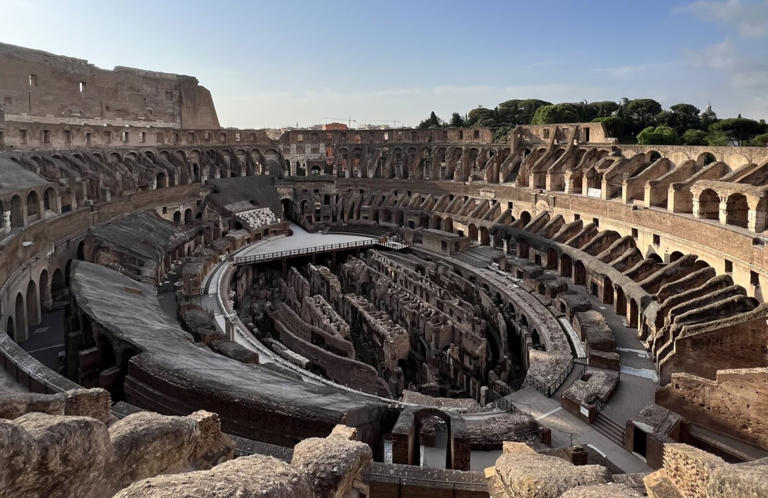
I Visited Pompeii: How To Make The Most Of It As A First-Timer
Pompeii is one of the best peeks into ancient Rome, but there's a lot to know before planning a trip. Here's how to make the most of it.
- Travelers should be prepared to walk a lot while visiting Pompeii.
- A guided tour is an excellent way to learn about Pompeii; alternately, do your research ahead of time to fully appreciate the sights.
- Consider venturing to other sites near Pompeii if visiting for multiple days.
Two years ago, I was traveling overland (and ferry) from Warsaw in Poland to Tunisia in North Africa. As I journeyed down through Italy, I couldn't help but visit Naples (originally the ancient colonial Greek city, Neopolis ). There are countless ancient Roman archeological sites in and around Naples, but arguably the most dramatic attraction is the ash-covered Roman city of Pompeii .
I have seen countless archeological sites all around the world and many ancient Roman sites and I can say that Pompeii really does live up to the hype. Here's what to know to make the most of your trip.
Pompeii Is One Of The Very Best Ancient Roman Archeological Sites
Pompeii lives up to the hype and visitors can see a well-preserved mid-sized roman city frozen in time.
The day I visited Pompeii was a stiflingly hot summer's day. But I made the most of seeing Pompeii and walked all through it. I discovered that to really explore everything in Pompeii, visitors need to spend two or three days there.
My only regret in Naples is not seeing more of the many ancient Roman and Greek attractions in the area (and spending more time in Pompeii). Still, I visited Pompeii, Herculaneum, and the Archeological Museum of Naples . These are three of the top ancient ruins in and around Naples. As a minimum, tourists really should plan to visit all three of these.
Pompeii is the 'big' city preserved by the eruption of Vesuvius in AD 79, Herculaneum is the ancient Roman resort town (and where many of the major archeological discoveries have been made), and the Archeological Museum of Naples is where many of the recovered artifacts are on display.
When visiting the Archeological Museum of Naples, ask to see the " Secret Room " where 250 of the erotic artifacts deemed too explicit for a younger audience are on display.
Top Roman Attractions In & Around Naples:
- Herculaneum
- Archeological Museum of Naples
- Baia Archaeological Park
- Flavian Amphitheater (Pozzuoli)
The site really is massive. It was a Roman city of around 10,000 inhabitants and around two-thirds of Pompeii has been excavated (and most of that is open to the public). Some of its monuments are brilliantly preserved. The stone Amphitheater of Pompeii is the largest monument in Pompeii, and visitors are free to walk through its corridors and around its arena.
Key Attractions In The Pompeii Archeological Site:
- Amphitheater Of Pompeii: The Oldest Stone Amphitheater
- Theater Of Pompeii: Well-Preserved & Located In The Center
- Villa of Mysteries: Located Just Outside The Herculaneum Gate (but within the archeological site) & Noted For Its Remarkable Frescoes
- Forum Of Pompeii: Near The Main Entrance & Once The Heart Of The City
- Gladiator Barracks: Believed To Be Where The Gladiators Lived & Trained
- Lupanar: The Famous Ancient Brothel of Pompeii
In my opinion, the excellent state of preservation of Pompeii (and other Vesuvius sites) is much better than other famous sites like Ephesus in Turkey.
Pompeii Forum: What To Know About Visiting The Former Beating Heart Of The City
What to know about visiting pompeii for the first time, pompeii is easy to reach from naples, but it is a large site with plenty of walking.
The easiest way to get to Pompeii from downtown Naples is by taking the suburban train bound for Salerno (the train departs from Napoli Centrale aka the Naples Central Station). Just get off at the train stop "Pompeii" and the entrance to the archeological site is across the road.
- Opening Hours: 9:00 am to 7:00 pm (closes 5:00 pm in winter)
- Admission Fee: 22 Euros (about USD 24) - one day
The entry fee is approximately USD 24 for one day for the Pompeii archeological site, but it can be worth booking a multi-day entry ticket and one that includes entry to other sites (such as Stabiae and Oplontis). A great source of English language information for the Pompeii archeological site is Pompeii.org .
Take water, comfortable walking shoes, and sun protection when visiting Pompeii.
Visitors should take water with them (there are refilling stations around the site), wear walking shoes, and have protection from the sun (especially if visiting in the summer).
Villa Of The Mysteries: What To Know About One Of The Best-Preserved Roman Villas Of Pompeii
Guided tours are a great way to get introduced to pompeii (or read up in advance), guided tours are encouraged; alternatively, do plenty of research on the history and monuments of pompeii before visiting.
Most people visiting Pompeii explore by themselves on self-guided tours. But I would encourage first-time visitors to take a guided tour — just to help bring the many ancient buildings and various structures to life. Without a tour guide, many of the key historical buildings full of history and significance are just passed over as 'another' ruined building.
A tour guide can point out hidden attractions (like ancient graffiti and what it says), how the Romans lived (e.g. the ancient snack bars of the city), and why Pompeii was once thought of as a sin city (see the many brothels and erotic art in the city).
- Guided tours can either be booked in advance or requested at the site between 9:00 am and 2:00 pm at the main entrance (near the train stop).
A compromise is to take an audio tour (available for rent) or to read extensively about ancient Pompeii before visiting. There are very few information panels explaining the significance of monuments and attractions around the ancient city.

IMAGES
VIDEO
COMMENTS
The Roman Forum is the beating heart of Ancient Rome, where laws were decreed, politics discussed, and goods bartered. Learn how to get there, when to go, and what to see at this ancient site with tips from Rome.info. Find out which tickets are best for you and how to skip the line with priority entrance.
A local mama's guide to the Eternal City, sharing her tips on how to plan a visit to the Roman Forum, where to get tickets, what to see and do, and what to expect. Discover the best things to see in the Forum Proper and on the Palatine Hill, such as the Arch of Titus, the Temple of Antoninus and Faustina, and the Roman Forum Square.
Combined ticket to visit the Colosseum, the Roman Forum and the Palatine: Adults: € 16 (US$ 17) European Union members (18 - 24): € 2 (US$ 2.10) Children (ages less than 17) and seniors (over 65) members of the EU: free entrance. Colosseum, Roman Forum & Palatine Hill Tour € 68 (US$ 72.30)
Roman Forum-Palatine and Imperial Fora in a single itinerary.One ticket (€16) gives you access to the new route, which allows you to visit the archaeological heart of Rome in about two hours: the Roman Forum, the Imperial Fora and the Palatine.
Time needed to visit the Roman Forum. Most people allow a half day to visit the Roman Forum and Palatine Hill with the Colosseum. If you have a real interest in the subject matter you will need a day. Your ticket allows you to see all three parts over two days (re-entry is not permitted) so you could take a more leisurely approach visiting the ...
The Roman Forum is a vast complex of ruins and monuments that was the heart of ancient Rome. Learn about its history, why it was built, how it was destroyed, and why it is worth visiting. Find out the best things to see, how to get there, and what to expect from this guide by Nomad's Piccante.
Using public transport to visit the Roman Forum is strongly suggested. Take the 64 or 75 bus from the Roma Termini station and get down at the Fori Imperiali/Campidoglio stop, which is a 100-odd metres from the Roman Forum. Alternatively, take the B line Metro from Roma Termini and disembark at the Colosseo stop, which is 2 minutes away from ...
If you are going to visit the Roman Forum, one of the most ancient and essential sites of Rome, you will need to buy an entrance ticket, which includes a visit to the Colosseum and Palatine hill.But, of course, the best option is to book an individual guided tour to discover Roman Forum statues, buildings, and monuments, remainings of ancient palaces on the Palatine hill, innovative structures ...
Colosseum: Tour with Roman Forum and Palatine Hill, from 36 € ( Book tours online) Colosseum: Tour with Arena Floor, Roman Forum and Palatine Hill, from 44 € ( Book tours online) Colosseum: Tour with Underground and Roman Forum ( Book tours online) Hours. Opening hours 1st March - 26th March: 9.00 am - 5.30 pm.
An impressive - if rather confusing - spread of ruins, the Roman Forum was ancient Rome's showpiece center, a grandiose district of temples, basilicas and vibrant public spaces. It can be hard to picture this nowadays but if you can get your imagination going, there's something truly magical about walking in the footsteps of Julius Caesar and other legendary figures.
Learn about the history and attractions of the Roman Forum, one of the top ancient sites in Rome and a must-see for visitors. Find out how to get there, when to go, and what to see in this sprawling space between the Colosseum, the Capitoline Hill, and the Palatine Hill.
The Palatine Hill is one of the seven hills upon which Rome was established and, along with the Roman Forum, is one of the most ancient parts of the city. Legend has it that founding twins Romulus and Remus were discovered in a cave here, being looked after by a she-wolf. And although little remains of the twins today, the hill is still home to ...
Few sites are so filled with a sense of history as the Roman Forum (Foro Romano), where, for many centuries, the fate of Europe was decided. Although the surviving remains give only a hint of the grandeur and splendor of the Forum in ancient times, this area, with its columns still standing tall or lying tumbled on the ground, its triumphal arches, and its remains of once-important buildings ...
Ticket Price: Combined ticket to visit The Roman Forum, the Colosseum, and Palatine Hill is 16 euros. There is an online booking fee of 2 euros. Metro: Colosseo. Pro Tips: You can also visit the Roman Forum using the Roma Pass, which is a cumulative ticket that provides free or reduced rates for more than 40 attractions plus public transportation.
Roman Forum, most important forum in ancient Rome, situated on low ground between the Palatine and Capitoline hills. The Roman Forum was the scene of public meetings, law courts, and gladiatorial combats in republican times and was lined with shops and open-air markets. ... 19 Historic Buildings to Visit in Rome. All the World's a Stage: 6 ...
The Roman Forum is one of Rome's most important attractions. But it is a jumble of marble fragments, triumphal arches, temple ruins, and sundry other ancient architectural elements from various time periods. This run-down of some of the Forum's most important attractions runs from east to west, beginning at the Colosseum.
The Roman Forum, known as Forum Romanum in Latin, was a site located at the center of the ancient city of Rome and the location of important religious, political and social activities. Historians ...
The Roman Forum, the stage of History Walking along Via dei Fori Imperiali, between Piazza Venezia and the Colosseum, you will literally be enraptured by the magnificent ruins of the ancient Roman Forum, the nerve centre of the Eternal City, from which the ancient Romans ruled the world. There where once stretched an inhospitable swamp, drained by King Tarquinius Prisco in the seventh century ...
The best time to visit the Roman Forum is either early morning (8:30am onwards) or late afternoon (1-2 hours before closing). These times are the least busy, so you'll have more freedom to explore the Forum and take great pictures without tourists photobombing. This is also when the lines for tickets and entrance will be shorter, so if you ...
Depending on whether you visit the park before or after the Colosseum and what you want to see, you can choose different entrances. The entrances are: Via Sacra: Entrance at the Arch of Titus between the Roman Forum and the Palatine. This entrance is closest to the Colosseum. Via di San Gregorio: entrance to the Palatine.
Plan your visit wisely and be aware of the Roman Forum's operating hours. From the end of October to the end of February, the Forum welcomes visitors daily from 9:00 AM to 4:30 PM. The last entry is at 3:30 PM. In March, the opening times extend to 5:30 PM then from April to the end of September, to 7:15 PM.
Tourist information Time of entry; 9.00 - 19.15: Until to 30 September Last entry 18.15 Tickets It is possible to visit the archaeological area of the Roman Forum - Palatine Hill - Fori Imperiali with the same ticket for the Colosseum or with the special Forum Pass. With the ticket for the Colosseum it is possible to access the Roman Forum - Palatine at any time within the 24 or 48 hours of ...
The ticket is valid for 24 hours from the first entry into the PArCo, which can take place at the Colosseum or the Roman Forum/Palatine area: you can organize your visit just the way you want, scheduling entry to the Colosseum and deciding whether to visit the Roman Forum, Palatine and the Imperial Fora before or after.
Button Enhancement : Travel - The 5 Best Rome Colosseum Tours - LivTours (Viator) Roma Experience: Private Colosseum Tour With Roman Forum & Palatine Hill. Price: From $531. Duration: 2 hours 45 ...
Two years ago, I was traveling overland (and ferry) from Warsaw in Poland to Tunisia in North Africa. As I journeyed down through Italy, I couldn't help but visit Naples (originally the ancient colonial Greek city, Neopolis).There are countless ancient Roman archeological sites in and around Naples, but arguably the most dramatic attraction is the ash-covered Roman city of Pompeii.